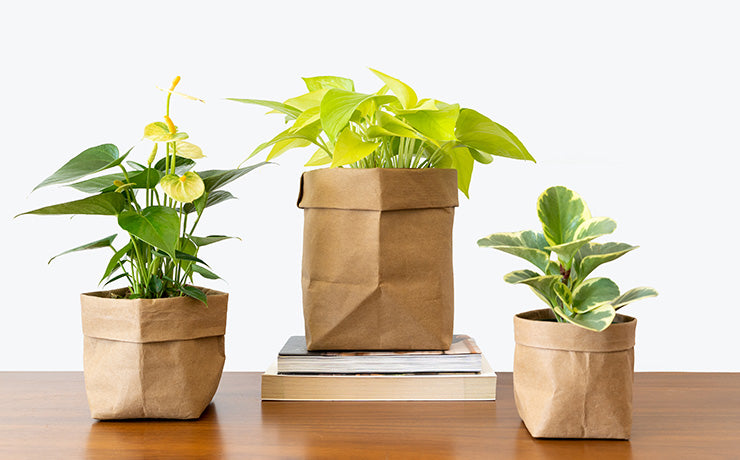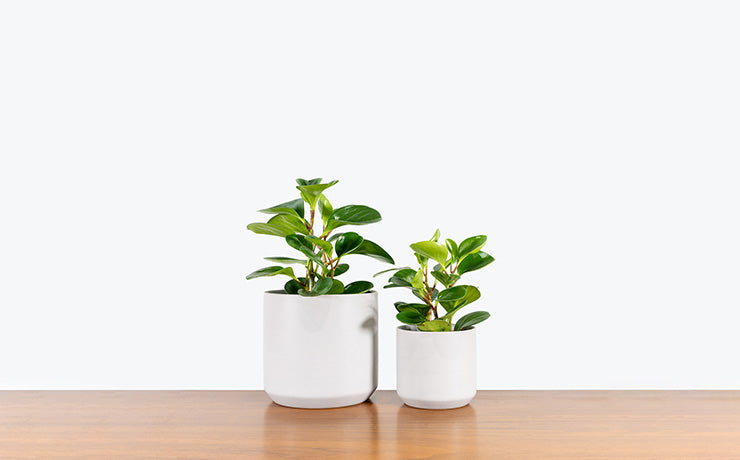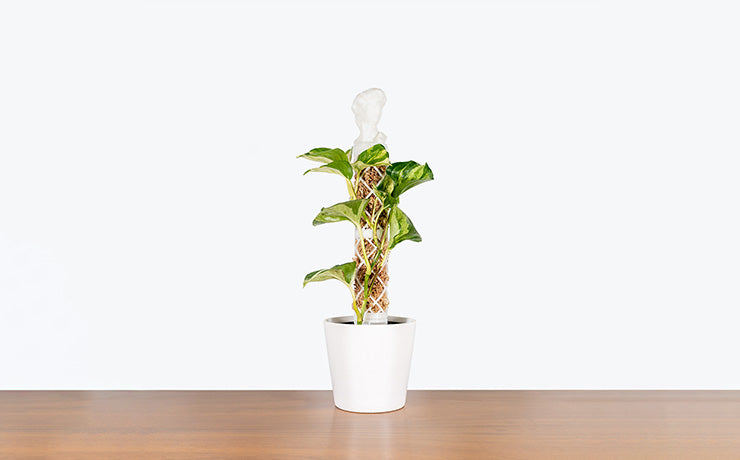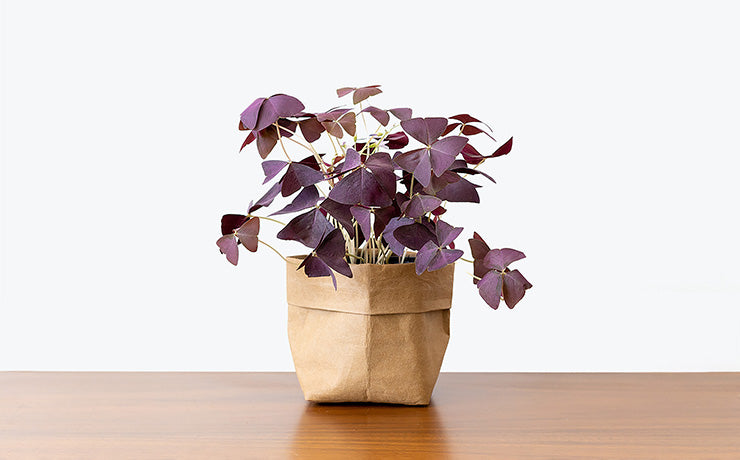Glossary
Plant Care Library
A
Agave Blue
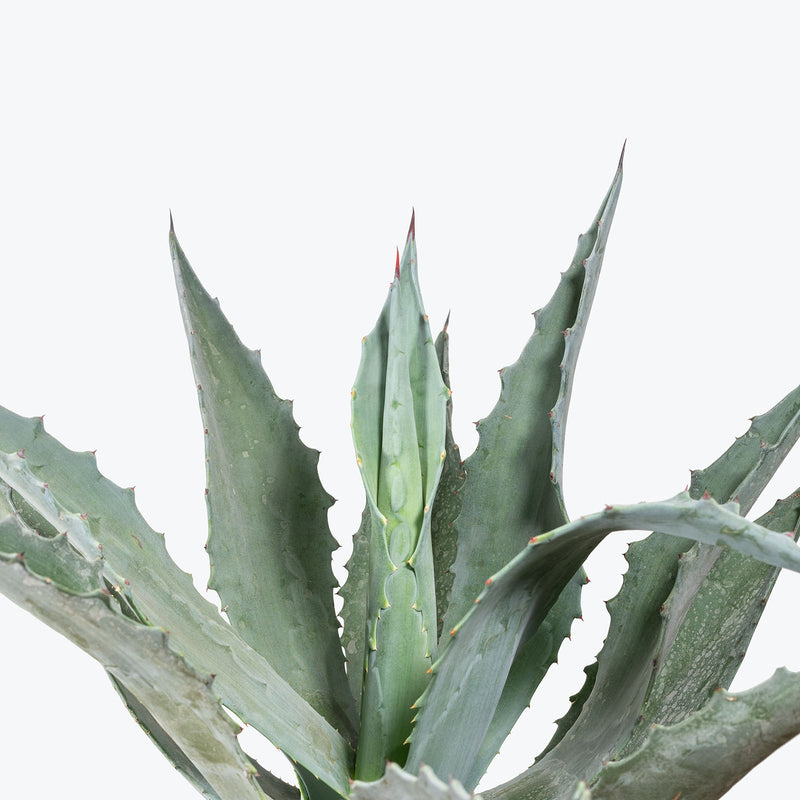
How to care for Agave Blue
Agave Blue enjoys some direct sun, but they'll also do well in bright, indirect light. It is best to place this plant somewhere where it will receive some nice morning sun, or a couple hours of afternoon sun, and then indirect light the rest of the day.
Agave Blue will do best in bright light. A nice bright place inside your home would be on the window sill or a stool that is right next to a window, either with or without blinds, depending on if the plant can handle sun. Remember that plants will grow based on how much light they receive.
Agave Blue likes the soil to be completely dry before the next watering. This can take up to 4 weeks in an average home environment but it will vary depending on the time of year, your environment and lighting conditions. For them, it's always safer to underwater or water when you see signs of lack of water (i.e. wrinkly or soft leaves). Water a little more often in the warmer months.
Agave Blue's humidity requirement is low, so do not mist them or put them in a terrarium.
Agave Blue should be potted in a well-draining soil mix to prevent waterlogged conditions. It's a slow-growing plant, so it doesn't need frequent repotting. If grown indoors, it's best placed in a location with plenty of room, as it can grow quite large.
Agave Blue is moderately toxic and can cause some adverse reactions when ingested so it is best to not let your pets eat it, which we advise for all plants in general. The severity of the reaction will depend on how much of the plant is ingested but, if you know your pet typically does not eat your plants, this plant will be suitable for your home..
View PlantAgave Geminiflora
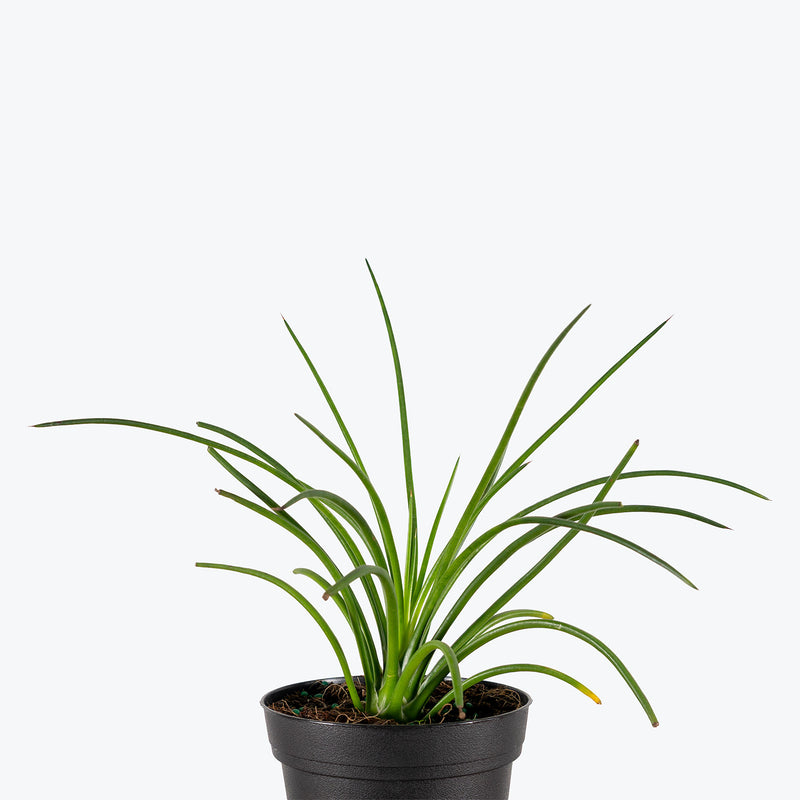
How to care for Agave Geminiflora
Agave Geminiflora enjoys some direct sun, but they'll also do well in bright, indirect light. It is best to place this plant somewhere where it will receive some nice morning sun, or a couple hours of afternoon sun, and then indirect light the rest of the day.
Agave Geminiflora will do best in bright light. A nice bright place inside your home would be on the window sill or a stool that is right next to a window, either with or without blinds, depending on if the plant can handle sun. Remember that plants will grow based on how much light they receive.
Agave Geminiflora likes the soil to be completely dry before the next watering. This can take up to 4 weeks in an average home environment but it will vary depending on the time of year, your environment and lighting conditions. For them, it's always safer to underwater or water when you see signs of lack of water (i.e. wrinkly or soft leaves). Water a little more often in the warmer months.
Agave Geminiflora can live in any average home humidity condition and are fairly hardy.
Use a well-draining cactus or succulent mix to prevent root rot. Agave Geminiflora is slow-growing and rarely needs repotting. In maturity, it may produce a tall flowering stalk, after which the rosette dies—but pups often emerge at the base to continue growth. Hardy to light frost if kept dry.
Agave Geminiflora is moderately toxic and can cause some adverse reactions when ingested so it is best to not let your pets eat it, which we advise for all plants in general. The severity of the reaction will depend on how much of the plant is ingested but, if you know your pet typically does not eat your plants, this plant will be suitable for your home..
View PlantAgave Victoriae-Reginae
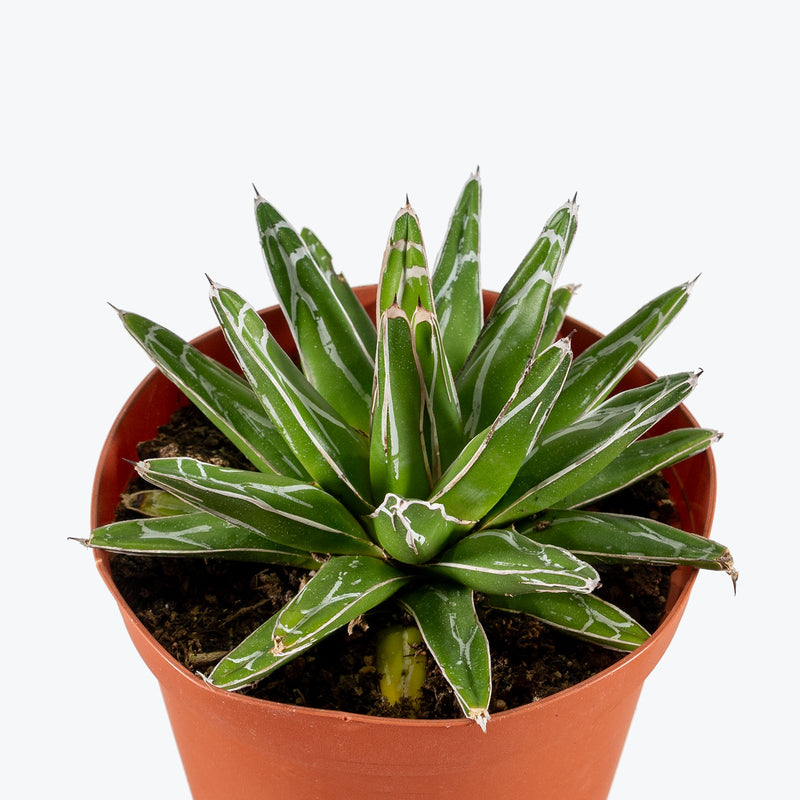
How to care for Agave Victoriae-Reginae
Agave Victoriae-Reginae enjoys some direct sun, but they'll also do well in bright, indirect light. It is best to place this plant somewhere where it will receive some nice morning sun, or a couple hours of afternoon sun, and then indirect light the rest of the day.
Agave Victoriae-Reginae will do best in bright light. A nice bright place inside your home would be on the window sill or a stool that is right next to a window, either with or without blinds, depending on if the plant can handle sun. Remember that plants will grow based on how much light they receive.
Agave Victoriae-Reginae likes the soil to be completely dry before the next watering. This can take up to 4 weeks in an average home environment but it will vary depending on the time of year, your environment and lighting conditions. For them, it's always safer to underwater or water when you see signs of lack of water (i.e. wrinkly or soft leaves). Water a little more often in the warmer months.
Agave Victoriae-Reginae's humidity requirement is low, so do not mist them or put them in a terrarium.
Use a well-draining soil mix specifically designed for succulents or cacti. Provide a pot with adequate drainage holes to avoid water retention. Fertilize sparingly—once a year in spring with a balanced, slow-release fertilizer formulated for succulents. Agave Victoriae-Reginae generally does not need frequent repotting due to its slow growth rate.
Agave Victoriae-Reginae is moderately toxic and can cause some adverse reactions when ingested so it is best to not let your pets eat it, which we advise for all plants in general. The severity of the reaction will depend on how much of the plant is ingested but, if you know your pet typically does not eat your plants, this plant will be suitable for your home..
View PlantAglaonema Beauty White

How to care for Aglaonema Beauty White
Aglaonema Beauty White should not be in a position to see the sun directly, although early morning or late evening sun is fine. Filtered sunlight through a sheer curtain is best and most homes are comprised primarily of indirect sunlight. The best spot for them is where they do not see the sun during the majority of the day but still get bright, indirect light.
Aglaonema Beauty White will thrive in medium to bright light, but also can tolerate low light. A good medium-light place in your home would be in the middle of a room that has a regular size window. They can be placed almost anywhere in the room but remember, plants will grow based on how much light they receive.
Aglaonema Beauty White needs to be watered when the top half of the soil is dry to the touch. That usually takes about 1 week in an average home environment. It will vary depending on the time of year, your environment and lighting conditions, but it's always safer to underwater or give the soil a check before you water again. Expect to water more often in brighter light and less often in lower light.
Aglaonema Beauty White will do well in average humidity environments but will appreciate a little bit of humidity if provided, give them a mist daily or get a humidifier.
Use a well-draining potting mix to prevent root rot. Fertilize every 4–6 weeks during spring and summer with a diluted, balanced fertilizer. Avoid cold drafts, as Aglaonema Beauty White prefers warmth and can suffer in cooler environments. Rotate the plant occasionally to maintain even growth on all sides.
Aglaonema Beauty White is moderately toxic and can cause some adverse reactions when ingested so it is best to not let your pets eat it, which we advise for all plants in general. The severity of the reaction will depend on how much of the plant is ingested but, if you know your pet typically does not eat your plants, this plant will be suitable for your home..
View PlantAglaonema Black Maroon
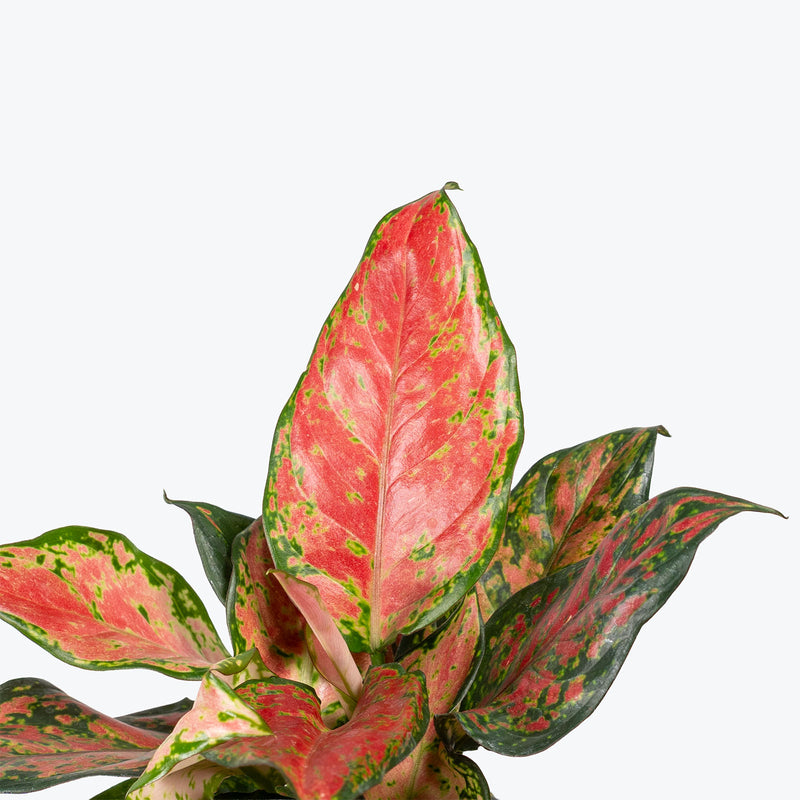
How to care for Aglaonema Black Maroon
Aglaonema Black Maroon should not be in a position to see the sun directly, although early morning or late evening sun is fine. Filtered sunlight through a sheer curtain is best and most homes are comprised primarily of indirect sunlight. The best spot for them is where they do not see the sun during the majority of the day but still get bright, indirect light.
Aglaonema Black Maroon will thrive in medium to bright light, but also can tolerate low light. A good medium-light place in your home would be in the middle of a room that has a regular size window. They can be placed almost anywhere in the room but remember, plants will grow based on how much light they receive.
Aglaonema Black Maroon needs to be watered when the top half of the soil is dry to the touch. That usually takes about 1 week in an average home environment. It will vary depending on the time of year, your environment and lighting conditions, but it's always safer to underwater or give the soil a check before you water again. Expect to water more often in brighter light and less often in lower light.
Aglaonema Black Maroon will do well in average humidity environments but will appreciate a little bit of humidity if provided, give them a mist daily or get a humidifier.
Use a well-draining, peat-based soil mix and ensure the pot has proper drainage. Fertilize Aglaonema Black Maroon lightly once a month during spring and summer to encourage rich foliage colour. Wipe leaves occasionally to maintain their glossy, maroon sheen. Keep away from cold drafts or sudden temperature changes.
Aglaonema Black Maroon is moderately toxic and can cause some adverse reactions when ingested so it is best to not let your pets eat it, which we advise for all plants in general. The severity of the reaction will depend on how much of the plant is ingested but, if you know your pet typically does not eat your plants, this plant will be suitable for your home..
View PlantAglaonema Dizzy Diamond

How to care for Aglaonema Dizzy Diamond
Aglaonema Dizzy Diamond should not be in a position to see the sun directly, although early morning or late evening sun is fine. Filtered sunlight through a sheer curtain is best and most homes are comprised primarily of indirect sunlight. The best spot for them is where they do not see the sun during the majority of the day but still get bright, indirect light.
Aglaonema Dizzy Diamond will thrive in bright light, but also can tolerate medium light. A good medium-light place in your home would be in the middle of a room that has a regular size window. They can be placed anywhere between the middle of the room and the window. Remember that plants will grow based on how much light they receive.
Aglaonema Dizzy Diamond needs to be watered when the top half of the soil is dry to the touch. That usually takes about 1 week in an average home environment. It will vary depending on the time of year, your environment and lighting conditions, but it's always safer to underwater or give the soil a check before you water again. Expect to water more often in brighter light and less often in lower light.
Aglaonema Dizzy Diamond will do well in average humidity environments but will appreciate a little bit of humidity if provided, give them a mist daily or get a humidifier.
Dust Aglaonema Dizzy Diamond regularly to keep the pattern vivid and photosynthesis strong. Fertilize every 4–6 weeks during spring and summer with a balanced houseplant fertilizer. Rotate the pot every few weeks to encourage even growth and coloration.
Aglaonema Dizzy Diamond is moderately toxic and can cause some adverse reactions when ingested so it is best to not let your pets eat it, which we advise for all plants in general. The severity of the reaction will depend on how much of the plant is ingested but, if you know your pet typically does not eat your plants, this plant will be suitable for your home..
View PlantAglaonema Pictum Peacock
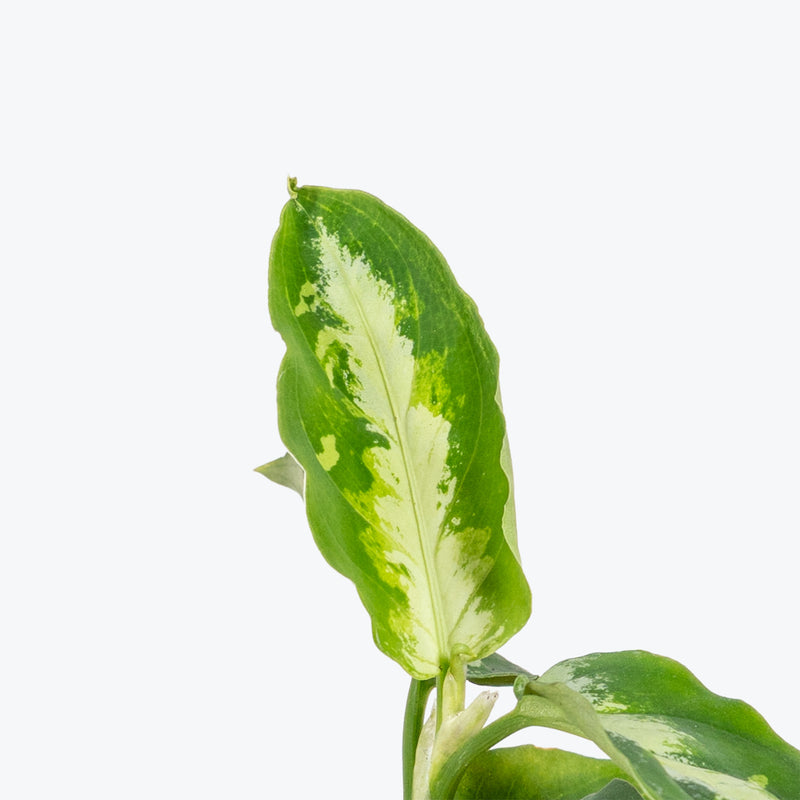
How to care for Aglaonema Pictum Peacock
Aglaonema Pictum Peacock should not be in a position to see the sun directly, although early morning or late evening sun is fine. Filtered sunlight through a sheer curtain is best and most homes are comprised primarily of indirect sunlight. The best spot for them is where they do not see the sun during the majority of the day but still get bright, indirect light.
Aglaonema Pictum Peacock will thrive in bright light, but also can tolerate medium light. A good medium-light place in your home would be in the middle of a room that has a regular size window. They can be placed anywhere between the middle of the room and the window. Remember that plants will grow based on how much light they receive.
Aglaonema Pictum Peacock needs to be watered when the top half of the soil is dry to the touch. That usually takes about 1 week in an average home environment. It will vary depending on the time of year, your environment and lighting conditions, but it's always safer to underwater or give the soil a check before you water again. Expect to water more often in brighter light and less often in lower light.
Aglaonema Pictum Peacock likes a high humidity environment, give them a mist daily or as often as possible. Alternatively, you can put them around a humidifier. Although they won't die if they don't receive enough humidity, their leaves may have some dry, crunchy, or yellow edges.
Use a well-draining soil mix with good aeration, such as peat, perlite, and bark, to mimic its native rainforest floor. Fertilize Aglaonema Pictum Peacock every 4–6 weeks during spring and summer with a diluted balanced fertilizer. Wipe the leaves occasionally to highlight their pattern and keep pests at bay. This variety prefers warm, stable conditions and dislikes cold drafts.
Aglaonema Pictum Peacock is moderately toxic and can cause some adverse reactions when ingested so it is best to not let your pets eat it, which we advise for all plants in general. The severity of the reaction will depend on how much of the plant is ingested but, if you know your pet typically does not eat your plants, this plant will be suitable for your home..
View PlantAglaonema Pictum Tricolor
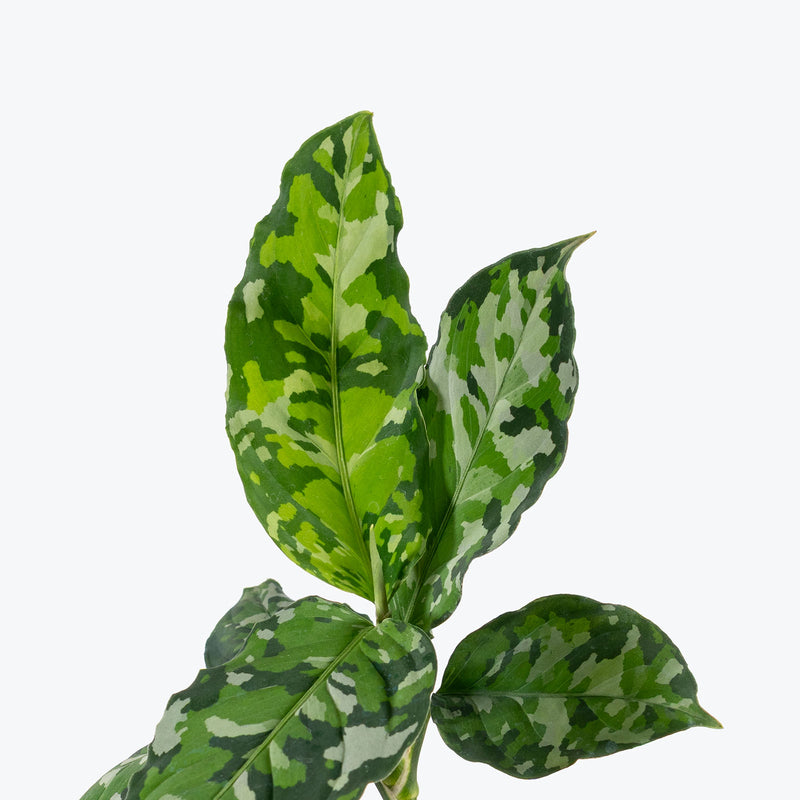
How to care for Aglaonema Pictum Tricolor
Aglaonema Pictum Tricolor should not be in a position to see the sun directly, although early morning or late evening sun is fine. Filtered sunlight through a sheer curtain is best and most homes are comprised primarily of indirect sunlight. The best spot for them is where they do not see the sun during the majority of the day but still get bright, indirect light.
Aglaonema Pictum Tricolor will thrive in bright light, but also can tolerate medium light. A good medium-light place in your home would be in the middle of a room that has a regular size window. They can be placed anywhere between the middle of the room and the window. Remember that plants will grow based on how much light they receive.
Aglaonema Pictum Tricolor needs to be watered when the top half of the soil is dry to the touch. That usually takes about 1 week in an average home environment. It will vary depending on the time of year, your environment and lighting conditions, but it's always safer to underwater or give the soil a check before you water again. Expect to water more often in brighter light and less often in lower light.
Aglaonema Pictum Tricolor likes a high humidity environment, give them a mist daily or as often as possible. Alternatively, you can put them around a humidifier. Although they won't die if they don't receive enough humidity, their leaves may have some dry, crunchy, or yellow edges.
Unlike other Chinese Evergreen varieties, the Tricolour needs bright, indirect light to support its colouring. Reduce your watering frequency in the fall and winter months because Aglaonema Pictum Tricolor will be dormant, meaning it won't need as much moisture to support growth. If you mist your plant daily, or keep a humidifier around, this will really help the health of the leaves.
Aglaonema Pictum Tricolor is moderately toxic and can cause some adverse reactions when ingested so it is best to not let your pets eat it, which we advise for all plants in general. The severity of the reaction will depend on how much of the plant is ingested but, if you know your pet typically does not eat your plants, this plant will be suitable for your home..
View PlantAglaonema Red Vein
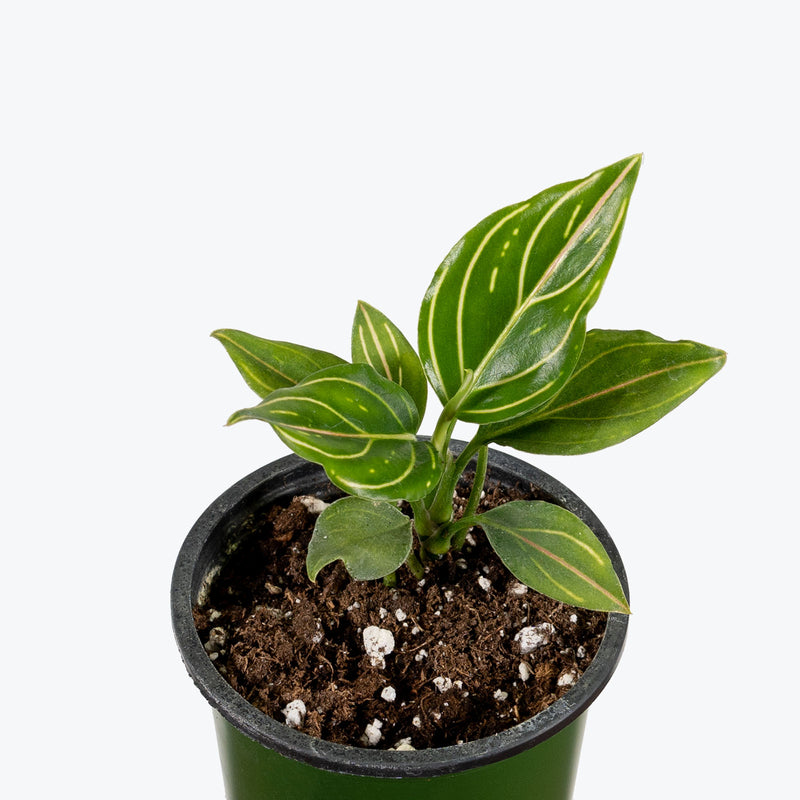
How to care for Aglaonema Red Vein
They should not be in a position to see the sun directly, although early morning or late evening sun is fine. Filtered sunlight through a sheer curtain is best and most homes are comprised primarily of indirect sunlight. The best spot for them is where they do not see the sun during the majority of the day but still get bright, indirect light.
They will thrive in medium to bright light, but also can tolerate low light. A good medium-light place in your home would be in the middle of a room that has a regular size window. They can be placed almost anywhere in the room but remember, plants will grow based on how much light they receive.
They need to be watered when the top half of the soil is dry to the touch. That usually takes about 1 week in an average home environment. It will vary depending on the time of year, your environment and lighting conditions, but it's always safer to underwater or give the soil a check before you water again. Expect to water more often in brighter light and less often in lower light.
They can live in any average home humidity condition and are fairly hardy.
Reduce your watering frequency in the fall and winter months because your plant will be dormant, meaning it won't need as much moisture to support growth. If you mist your plant daily, or keep a humidifier around, this will really help the health of the leaves.
This plant is moderately toxic and can cause some adverse reactions when ingested so it is best to not let your pets eat it, which we advise for all plants in general. The severity of the reaction will depend on how much of the plant is ingested but, if you know your pet typically does not eat your plants, this plant will be suitable for your home..
View PlantAglaonema Spathonema
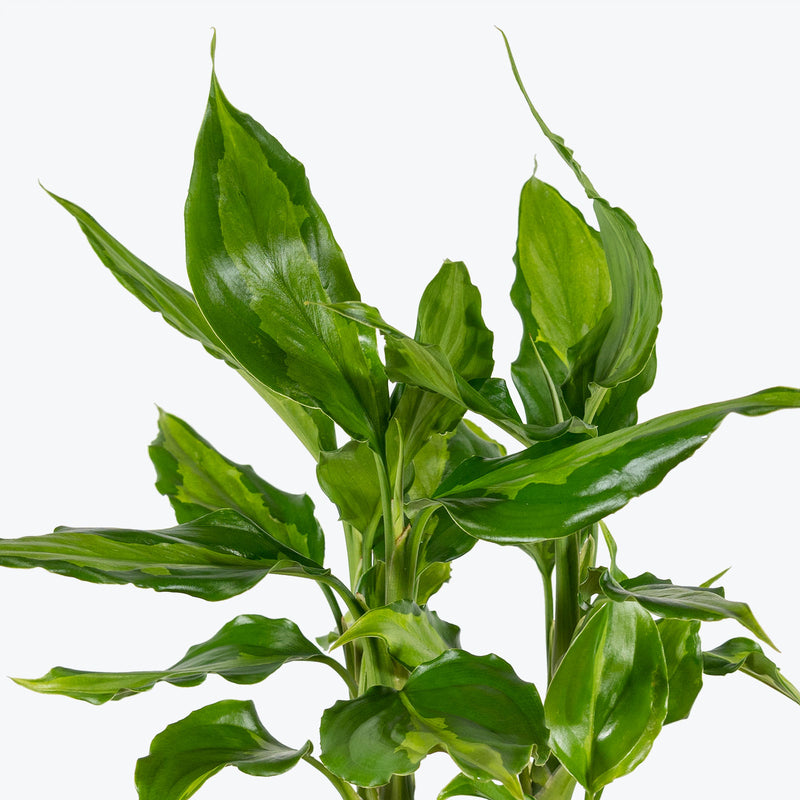
How to care for Aglaonema Spathonema
They should not be in a position to see the sun directly, although early morning or late evening sun is fine. Filtered sunlight through a sheer curtain is best and most homes are comprised primarily of indirect sunlight. The best spot for them is where they do not see the sun during the majority of the day but still get bright, indirect light.
They will thrive in medium to bright light, but also can tolerate low light. A good medium-light place in your home would be in the middle of a room that has a regular size window. They can be placed almost anywhere in the room but remember, plants will grow based on how much light they receive.
They need to be watered when the top half of the soil is dry to the touch. That usually takes about 1 week in an average home environment. It will vary depending on the time of year, your environment and lighting conditions, but it's always safer to underwater or give the soil a check before you water again. Expect to water more often in brighter light and less often in lower light.
They will do well in average humidity environments but will appreciate a little bit of humidity if provided, give them a mist daily or get a humidifier.
Reduce your watering frequency in the fall and winter months because your plant will be dormant, meaning it won't need as much moisture to support growth.
This plant is moderately toxic and can cause some adverse reactions when ingested so it is best to not let your pets eat it, which we advise for all plants in general. The severity of the reaction will depend on how much of the plant is ingested but, if you know your pet typically does not eat your plants, this plant will be suitable for your home..
View PlantAglaonema Star King Red
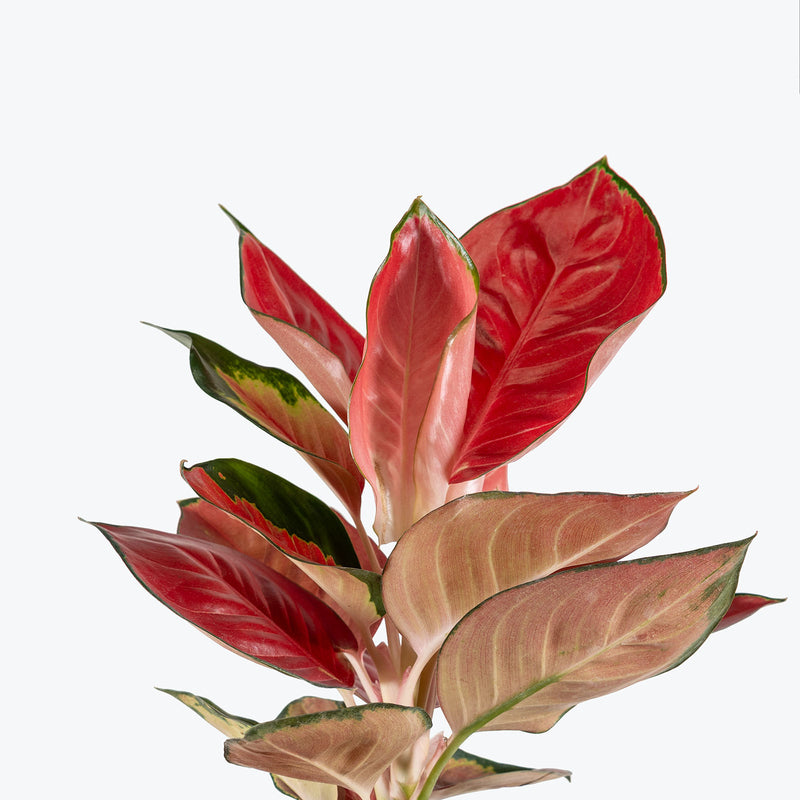
How to care for Aglaonema Star King Red
Aglaonema Star King Red should not be in a position to see the sun directly, although early morning or late evening sun is fine. Filtered sunlight through a sheer curtain is best and most homes are comprised primarily of indirect sunlight. The best spot for them is where they do not see the sun during the majority of the day but still get bright, indirect light.
Aglaonema Star King Red will thrive in bright light, but also can tolerate medium light. A good medium-light place in your home would be in the middle of a room that has a regular size window. They can be placed anywhere between the middle of the room and the window. Remember that plants will grow based on how much light they receive.
Aglaonema Star King Red needs to be watered when the top half of the soil is dry to the touch. That usually takes about 1 week in an average home environment. It will vary depending on the time of year, your environment and lighting conditions, but it's always safer to underwater or give the soil a check before you water again. Expect to water more often in brighter light and less often in lower light.
Aglaonema Star King Red will do well in average humidity environments but will appreciate a little bit of humidity if provided, give them a mist daily or get a humidifier.
Wipe the leaves occasionally to maintain their vibrant colours and prevent dust build-up. Use a well-draining potting mix and avoid letting Aglaonema Star King Red sit in soggy soil. Rotate regularly to maintain even growth and encourage bold coloration. Feed monthly during the growing season with a balanced houseplant fertilizer.
Aglaonema Star King Red is moderately toxic and can cause some adverse reactions when ingested so it is best to not let your pets eat it, which we advise for all plants in general. The severity of the reaction will depend on how much of the plant is ingested but, if you know your pet typically does not eat your plants, this plant will be suitable for your home..
View PlantAglaonema Wintry Winehouse
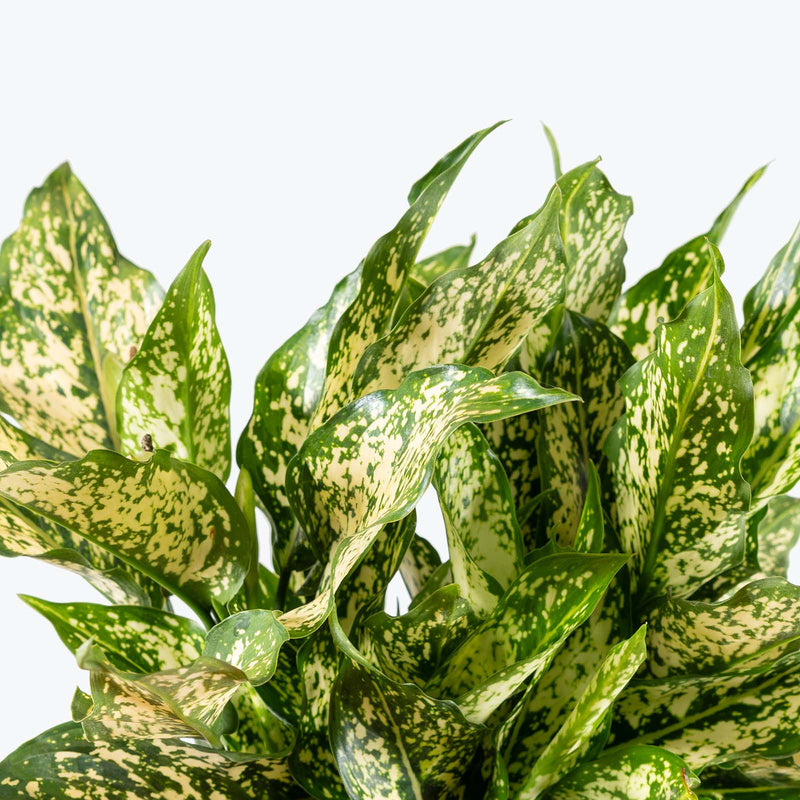
How to care for Aglaonema Wintry Winehouse
Aglaonema Wintry Winehouse should not be in a position to see the sun directly, although early morning or late evening sun is fine. Filtered sunlight through a sheer curtain is best and most homes are comprised primarily of indirect sunlight. The best spot for them is where they do not see the sun during the majority of the day but still get bright, indirect light.
Aglaonema Wintry Winehouse will thrive in medium to bright light, but also can tolerate low light. A good medium-light place in your home would be in the middle of a room that has a regular size window. They can be placed almost anywhere in the room but remember, plants will grow based on how much light they receive.
Aglaonema Wintry Winehouse needs to be watered when the top half of the soil is dry to the touch. That usually takes about 1 week in an average home environment. It will vary depending on the time of year, your environment and lighting conditions, but it's always safer to underwater or give the soil a check before you water again. Expect to water more often in brighter light and less often in lower light.
Aglaonema Wintry Winehouse will do well in average humidity environments but will appreciate a little bit of humidity if provided, give them a mist daily or get a humidifier.
Keep Aglaonema Wintry Winehouse in consistent lighting to maintain its crisp variegation. Avoid cold drafts or sudden temperature shifts, as these can cause leaf drop. Fertilize lightly during the growing season to support lush foliage. Because of its compact form, it rarely needs pruning beyond removing older leaves for shape. Ideal for desks, shelves, or low-maintenance indoor landscapes.
Aglaonema Wintry Winehouse is moderately toxic and can cause some adverse reactions when ingested so it is best to not let your pets eat it, which we advise for all plants in general. The severity of the reaction will depend on how much of the plant is ingested but, if you know your pet typically does not eat your plants, this plant will be suitable for your home..
View PlantAir Plant Mystery Box
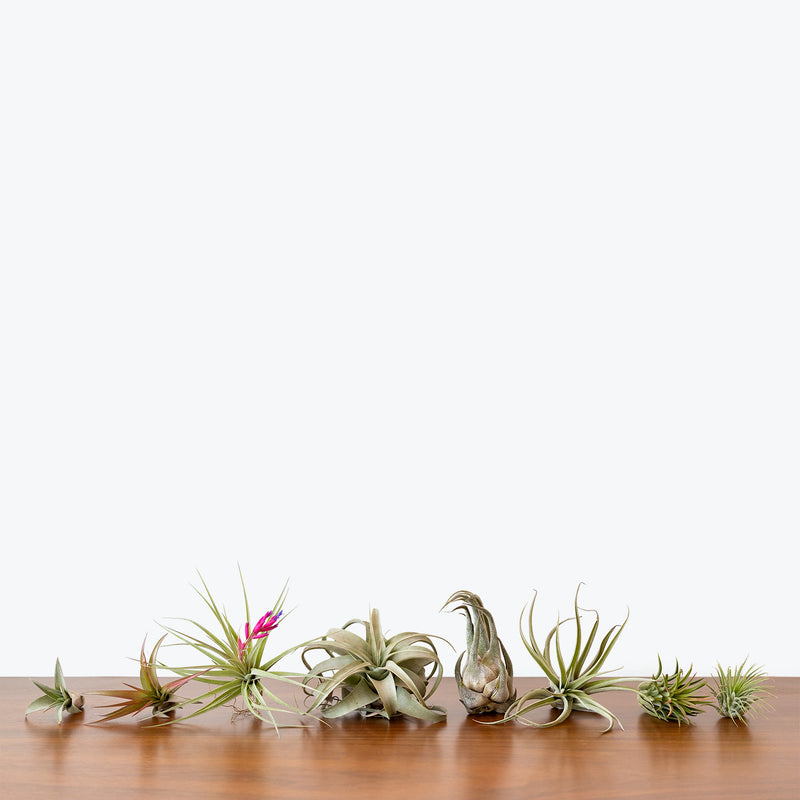
How to care for Air Plant Mystery Box
Air Plants should not be in a position to see the sun directly, although early morning or late evening sun is fine. Filtered sunlight through a sheer curtain is best and most homes are comprised primarily of indirect sunlight. The best spot for them is where they do not see the sun during the majority of the day but still get bright, indirect light.
Air Plants will do best in bright light. A nice bright place inside your home would be on the window sill or a stool that is right next to a window, either with or without blinds, depending on if the plant can handle sun. Remember that plants will grow based on how much light they receive.
Soak Air Plants in a bowl of room temperature water for an hour. Shake excess water off afterward and leave them to dry upside down in a bright spot.
Air Plants will do well in average humidity environments but will appreciate a little bit of humidity if provided, give them a mist daily or get a humidifier.
Increase humidity with increased light to avoid Air Plants drying out. Make sure they are in an area with good air circulation, do not put them in completely enclosed containers.
You can feel comfortable having Air Plant around your home in the potential case where your pet feels like nibbling on it. However, we typically recommend keeping your pets from eating any of your houseplants..
Learn MoreView PlantAir Plant Terrarium
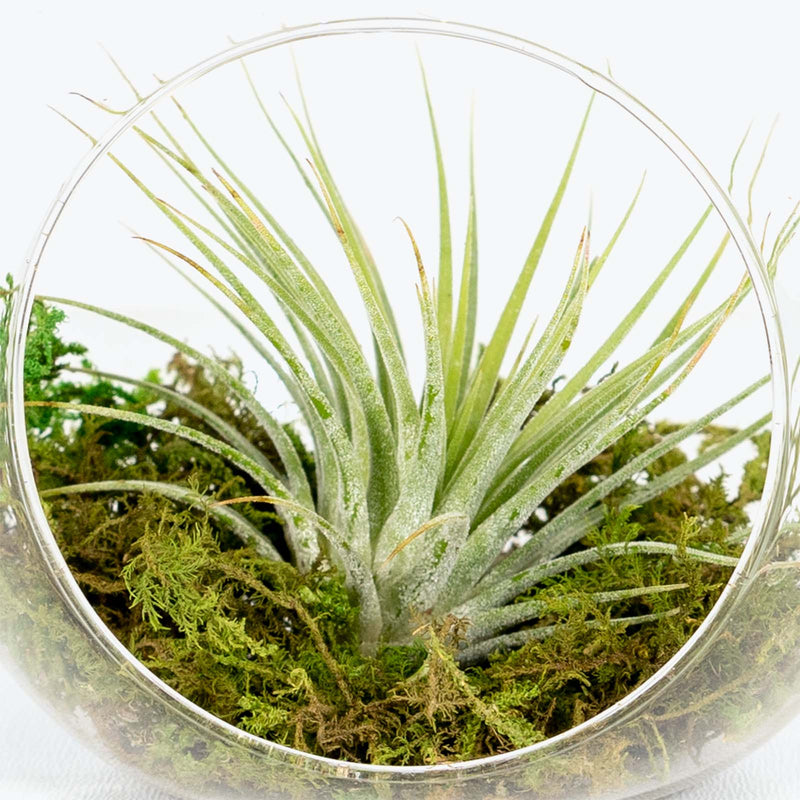
How to care for Air Plant Terrarium
They should not be in a position to see the sun directly, although early morning or late evening sun is fine. Filtered sunlight through a sheer curtain is best and most homes are comprised primarily of indirect sunlight. The best spot for them is where they do not see the sun during the majority of the day but still get bright, indirect light.
They will do best in bright light. A nice bright place inside your home would be on the window sill or a stool that is right next to a window, either with or without blinds, depending on if the plant can handle sun. Remember that plants will grow based on how much light they receive.
Soak the plant in a bowl of room temperature water for an hour. Shake excess water off afterward and leave them to dry upside down in a bright spot.
They will do well in average humidity environments but will appreciate a little bit of humidity if provided, give them a mist daily or get a humidifier.
Increase humidity with increased light to avoid dry out. Make sure they are in an area with good air circulation, do not put them in completely enclosed containers.
You can feel comfortable having this plant around your home in the potential case where your pet feels like nibbling on it. However, we typically recommend keeping your pets from eating any of your houseplants..
Learn MoreView PlantAir Plant Trio
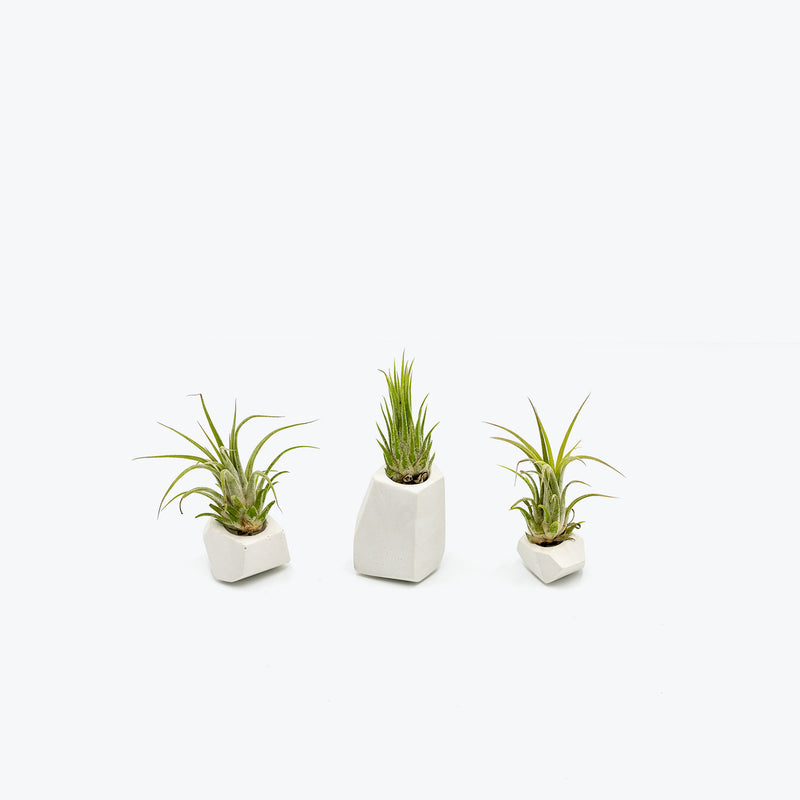
How to care for Air Plant Trio
They should not be in a position to see the sun directly, although early morning or late evening sun is fine. Filtered sunlight through a sheer curtain is best and most homes are comprised primarily of indirect sunlight. The best spot for them is where they do not see the sun during the majority of the day but still get bright, indirect light.
They will do best in bright light. A nice bright place inside your home would be on the window sill or a stool that is right next to a window, either with or without blinds, depending on if the plant can handle sun. Remember that plants will grow based on how much light they receive.
Soak them in a bowl of room temperature water for an hour. Shake excess water off afterward and leave them to dry upside down in a bright spot.
They like a high humidity environment, give them a mist regularly. Alternatively, you can put them around a humidifier. It doesn't mean they'll die if they don't get enough humidity, they may get some crunch edges or yellow rims if they don't have enough humidity but will survive.
Increase humidity with increased light to avoid dry out. Make sure they are in an area with good air circulation, do not put them in completely enclosed containers.
You can feel comfortable having this plant around your home in the potential case where your pet feels like nibbling on it. However, we typically recommend keeping your pets from eating any of your houseplants..
Learn MoreView PlantAir Plant with Holder
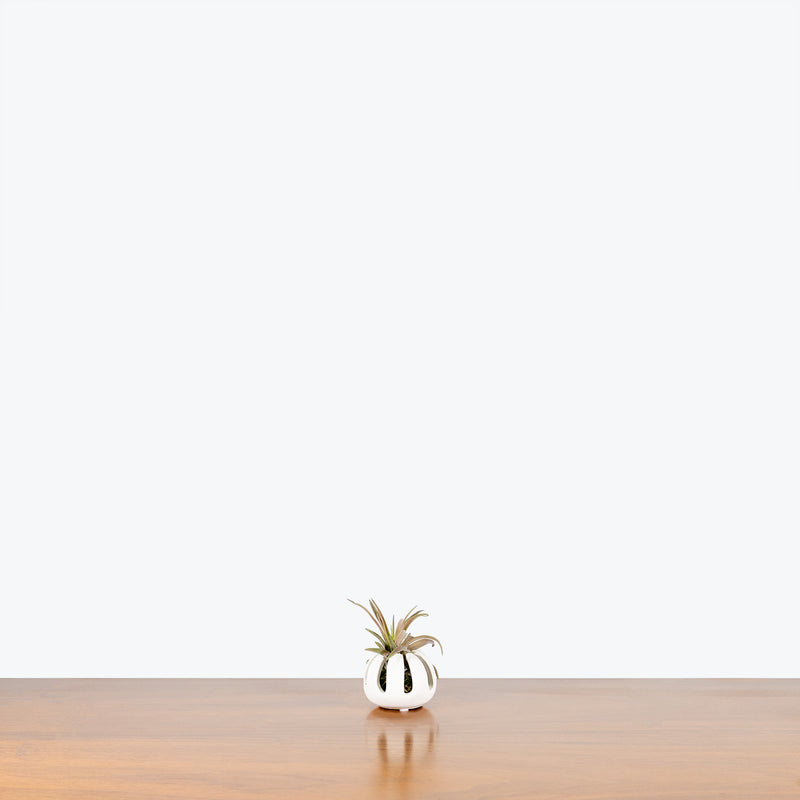
How to care for Air Plant with Holder
They should not be in a position to see the sun directly, although early morning or late evening sun is fine. Filtered sunlight through a sheer curtain is best and most homes are comprised primarily of indirect sunlight. The best spot for them is where they do not see the sun during the majority of the day but still get bright, indirect light.
They will do best in bright light. A nice bright place inside your home would be on the window sill or a stool that is right next to a window, either with or without blinds, depending on if the plant can handle sun. Remember that plants will grow based on how much light they receive.
Soak them in a bowl of room temperature water for an hour. Shake excess water off afterward and leave them to dry upside down in a bright spot.
They will do well in average humidity environments but will appreciate a little bit of humidity if provided, give them a mist daily or get a humidifier.
Increase humidity with increased light to avoid dry out. Make sure they are in an area with good air circulation, do not put them in completely enclosed containers.
You can feel comfortable having this plant around your home in the potential case where your pet feels like nibbling on it. However, we typically recommend keeping your pets from eating any of your houseplants..
Learn MoreView PlantAlbuca Spiralis
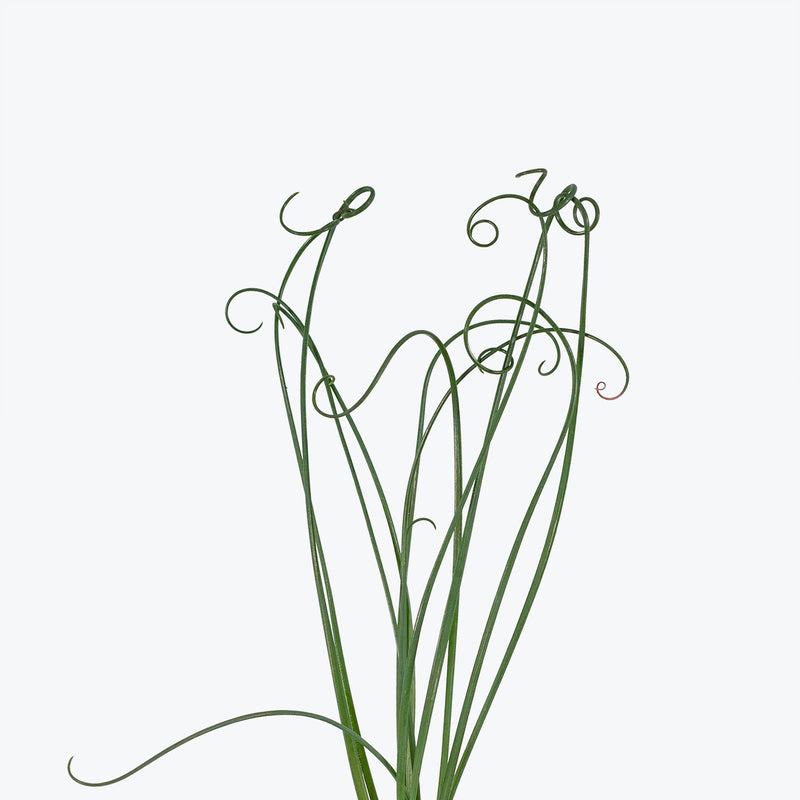
How to care for Albuca Spiralis
Albuca Spiralis enjoys some direct sun, but they'll also do well in bright, indirect light. It is best to place this plant somewhere where it will receive some nice morning sun, or a couple hours of afternoon sun, and then indirect light the rest of the day.
Albuca Spiralis will do best in bright light. A nice bright place inside your home would be on the window sill or a stool that is right next to a window, either with or without blinds, depending on if the plant can handle sun. Remember that plants will grow based on how much light they receive.
Albuca Spiralis likes the soil to be completely dry before the next watering. This can take up to 4 weeks in an average home environment but it will vary depending on the time of year, your environment and lighting conditions. For them, it's always safer to underwater or water when you see signs of lack of water (i.e. wrinkly or soft leaves). Water a little more often in the warmer months.
Albuca Spiralis humidity requirement is low, so do not mist them or put them in a terrarium.
When Albuca Spiralis produces flower stalks in spring, it often causes the tips of the leaves to brown. This is a natural occurrence. If you prefer to prevent leaf tip browning, simply remove the flower stalks as soon as they start to grow. Also be cautious of overwatering, as the bulbs are prone to rot in soggy soil. During the plant's dormant period, usually in the summer, water very little.
Albuca Spiralis is moderately toxic and can cause some adverse reactions when ingested so it is best to not let your pets eat it, which we advise for all plants in general. The severity of the reaction will depend on how much of the plant is ingested but, if you know your pet typically does not eat your plants, this plant will be suitable for your home..
View PlantAlgerian Ivy Green

How to care for Algerian Ivy Green
They enjoy some direct sun, but they'll also do well in bright, indirect light. It is best to place this plant somewhere where it will receive some nice morning sun, or a couple hours of afternoon sun, and then indirect light the rest of the day.
They will thrive in medium to bright light, but also can tolerate low light. A good medium-light place in your home would be in the middle of a room that has a regular size window. They can be placed almost anywhere in the room but remember, plants will grow based on how much light they receive.
They like the soil to be relatively dry before the next watering. That usually takes about 2 weeks in an average home environment. It will vary depending on the time of year, your environment and lighting conditions, but for them, it's always safer to underwater or water when you see signs of lack of water (i.e. droopy, floppy, or soft leaves). Water more often in the warmer months.
They will do well in average humidity environments but will appreciate a little bit of humidity if provided, give them a mist daily or get a humidifier.
It is more drought tolerant, bug resistant, and is more adaptable to warmer temperatures than its “English” counterpart. Feel free to trim up long runners and repot them back into your plant to keep it looking bushy and full. Use sharp, clean scissors and carefully cut just below a leaf node, then remove the leaf at that node and plant that part of the stem, as that is where the roots will form.
This plant is moderately toxic and can cause some adverse reactions when ingested so it is best to not let your pets eat it, which we advise for all plants in general. The severity of the reaction will depend on how much of the plant is ingested but, if you know your pet typically does not eat your plants, this plant will be suitable for your home..
View PlantAlgerian Ivy Neon
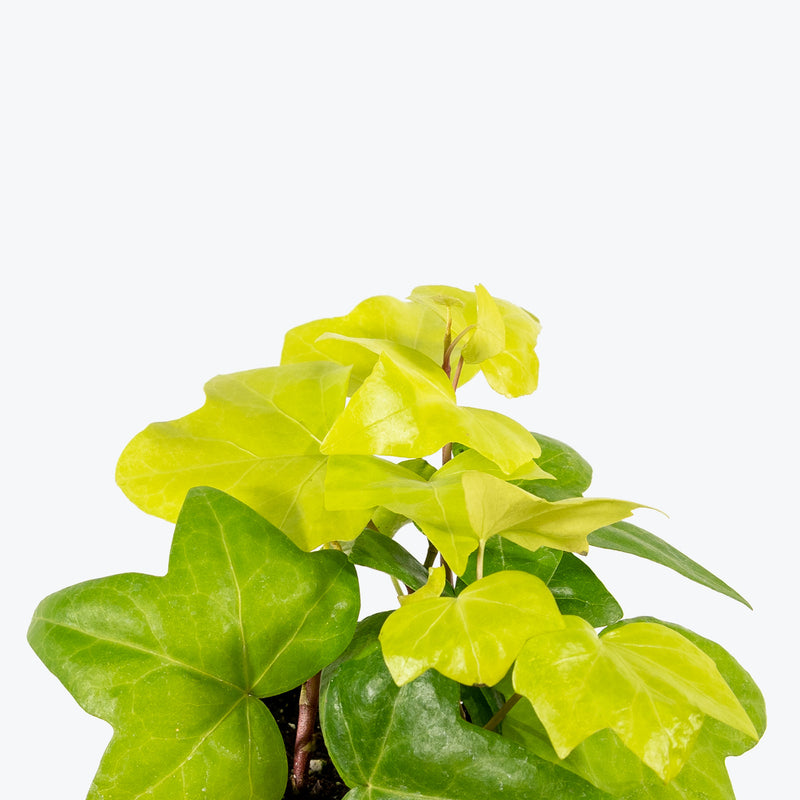
How to care for Algerian Ivy Neon
They enjoy some direct sun, but they'll also do well in bright, indirect light. It is best to place this plant somewhere where it will receive some nice morning sun, or a couple hours of afternoon sun, and then indirect light the rest of the day.
They will thrive in medium to bright light, but also can tolerate low light. A good medium-light place in your home would be in the middle of a room that has a regular size window. They can be placed almost anywhere in the room but remember, plants will grow based on how much light they receive.
They like the soil to be relatively dry before the next watering. That usually takes about 2 weeks in an average home environment. It will vary depending on the time of year, your environment and lighting conditions, but for them, it's always safer to underwater or water when you see signs of lack of water (i.e. droopy, floppy, or soft leaves). Water more often in the warmer months!
They will do well in average humidity environments but will appreciate a little bit of humidity if provided, give them a mist daily or get a humidifier!
It is more drought tolerant, bug resistant, and is more adaptable to warmer temperatures than its “English” counterpart. Feel free to trim up long runners and repot them back into your plant to keep it looking bushy and full. Use sharp, clean scissors and carefully cut just below a leaf node, then remove the leaf at that node and plant that part of the stem, as that is where the roots will form.
This plant is moderately toxic and can cause some adverse reactions when ingested so it is best to not let your pets eat it, which we advise for all plants in general. The severity of the reaction will depend on how much of the plant is ingested but, if you know your pet typically does not eat your plants, this plant will be suitable for your home..
View PlantAlocasia Aegis
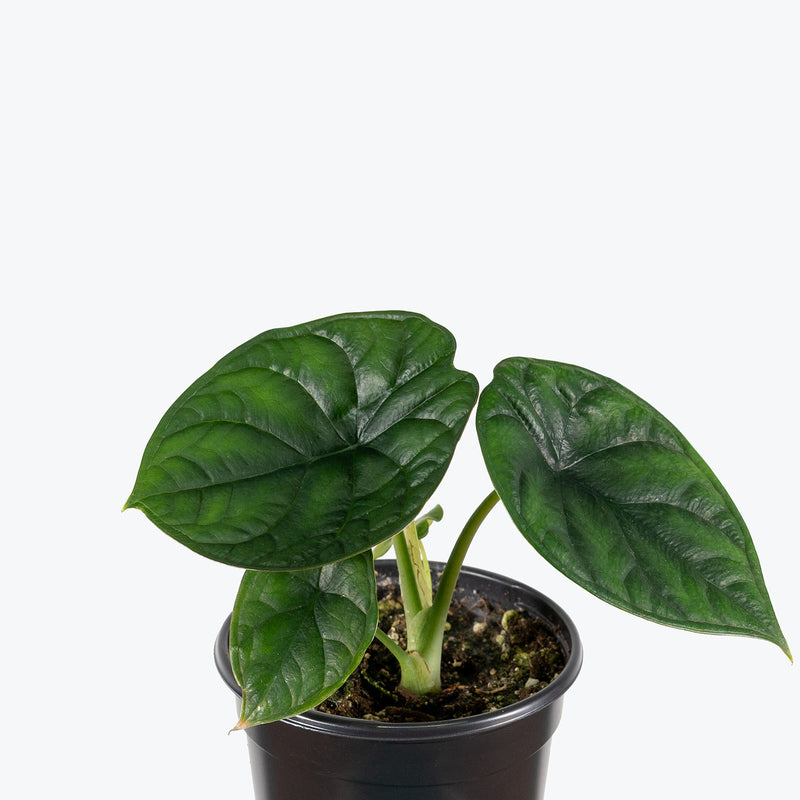
How to care for Alocasia Aegis
Alocasia Aegis should not be in a position to see the sun directly, although early morning or late evening sun is fine. Filtered sunlight through a sheer curtain is best and most homes are comprised primarily of indirect sunlight. The best spot for them is where they do not see the sun during the majority of the day but still get bright, indirect light.
Alocasia Aegis will thrive in bright light, but also can tolerate medium light. A good medium-light place in your home would be in the middle of a room that has a regular size window. They can be placed anywhere between the middle of the room and the window. Remember that plants will grow based on how much light they receive.
Alocasia Aegis needs to be watered when the top half of the soil is dry to the touch. That usually takes about 1 week in an average home environment. It will vary depending on the time of year, your environment and lighting conditions, but it's always safer to underwater or give the soil a check before you water again. Expect to water more often in brighter light and less often in lower light.
Alocasia Aegis likes a high humidity environment, give them a mist daily or as often as possible. Alternatively, you can put them around a humidifier. Although they won't die if they don't receive enough humidity, their leaves may have some dry, crunchy, or yellow edges.
During Alocasia Aegis’s dormancy in the winter months, where its growth slows significantly and it is prone to leaf loss, move it to somewhere warm and bright, while reducing your watering until it starts growing again in spring. If it has become root bound, repot the plant in the spring by planting it into a pot one size up. Regularly clean the leaves with a damp cloth to remove dust and help the plant efficiently photosynthesize. Be vigilant for signs of pests such as spider mites or aphids, particularly if humidity levels are not ideal.
Alocasia Aegis is moderately toxic and can cause some adverse reactions when ingested so it is best to not let your pets eat it, which we advise for all plants in general. The severity of the reaction will depend on how much of the plant is ingested but, if you know your pet typically does not eat your plants, this plant will be suitable for your home..
Learn MoreView PlantAlocasia Appaloosa Gold

How to care for Alocasia Appaloosa Gold
Alocasia Appaloosa Gold enjoys some direct sun, but they'll also do well in bright, indirect light. It is best to place this plant somewhere where it will receive some nice morning sun, or a couple hours of afternoon sun, and then indirect light for the rest of the day.
Alocasia Appaloosa Gold will thrive in bright light, but also can tolerate medium light. A good medium-light place in your home would be in the middle of a room that has a regular size window. They can be placed anywhere between the middle of the room and the window. Remember that plants will grow based on how much light they receive.
Alocasia Appaloosa Gold needs to be watered when the top half of the soil is dry to the touch. That usually takes about 1 week in an average home environment. It will vary depending on the time of year, your environment and lighting conditions, but it's always safer to underwater or give the soil a check before you water again. Expect to water more often in brighter light and less often in lower light.
Alocasia Appaloosa Gold will do well in average humidity environments but will appreciate a little bit of humidity if provided, give them a mist daily or get a humidifier.
Plant in a well-draining, chunky mix such as peat, perlite, and orchid bark to prevent root rot. Fertilize monthly during spring and summer with a diluted, balanced fertilizer to support strong growth and vibrant colour. Clean the leaves periodically to highlight their marbling and prevent dust buildup. Provide warmth and stable conditions, as Alocasia Appaloosa Gold is sensitive to cold drafts and temperature swings. Outdoors, it can reach 6–8 feet tall, but will stay more compact indoors.
Alocasia Appaloosa Gold is moderately toxic and can cause some adverse reactions when ingested so it is best to not let your pets eat it, which we advise for all plants in general. The severity of the reaction will depend on how much of the plant is ingested but, if you know your pet typically does not eat your plants, this plant will be suitable for your home..
Learn MoreView PlantAlocasia Azlanii
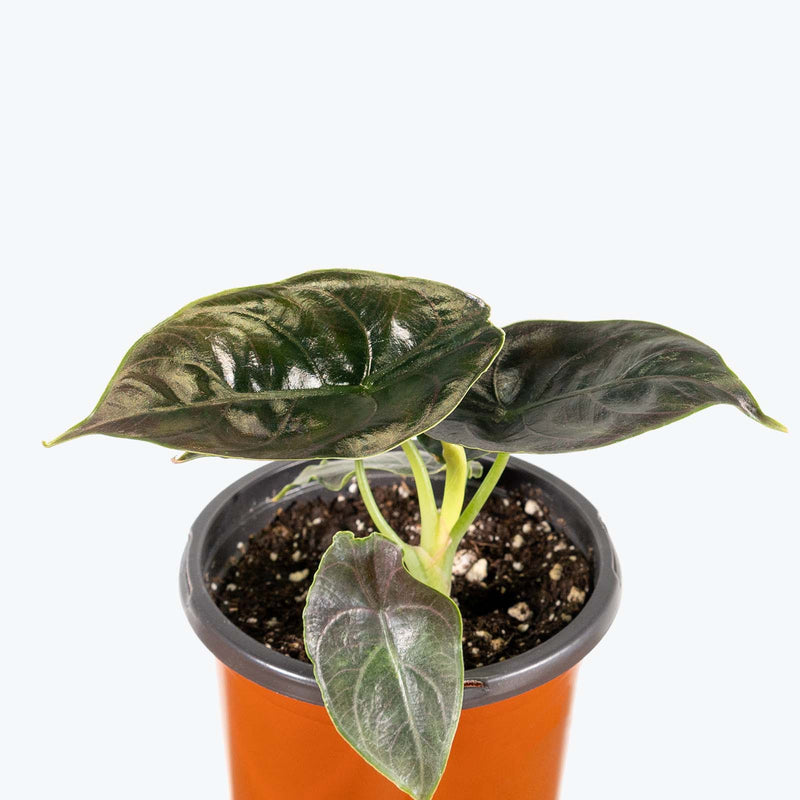
How to care for Alocasia Azlanii
They should not be in a position to see the sun directly, although early morning or late evening sun is fine. Filtered sunlight through a sheer curtain is best and most homes are comprised primarily of indirect sunlight. The best spot for them is where they do not see the sun during the majority of the day but still get bright, indirect light.
They will thrive in bright light, but also can tolerate medium light. A good medium-light place in your home would be in the middle of a room that has a regular size window. They can be placed anywhere between the middle of the room and the window. Remember that plants will grow based on how much light they receive.
They need to be watered when the top half of the soil is dry to the touch. That usually takes about 1 week in an average home environment. It will vary depending on the time of year, your environment and lighting conditions, but it's always safer to underwater or give the soil a check before you water again. Expect to water more often in brighter light and less often in lower light.
They like a high humidity environment, give them a mist daily or as often as possible. Alternatively, you can put them around a humidifier. Although they won't die if they don't receive enough humidity, their leaves may have some dry, crunchy, or yellow edges.
During the plant’s dormancy in the winter months, where its growth slows significantly and it is prone to leaf loss, move it to somewhere warm and bright, while reducing your watering until it starts growing again in spring. If it has become root bound, repot the plant in the spring by planting it into a pot one size up.
This plant is moderately toxic and can cause some adverse reactions when ingested so it is best to not let your pets eat it, which we advise for all plants in general. The severity of the reaction will depend on how much of the plant is ingested but, if you know your pet typically does not eat your plants, this plant will be suitable for your home..
Learn MoreView PlantAlocasia Bambino
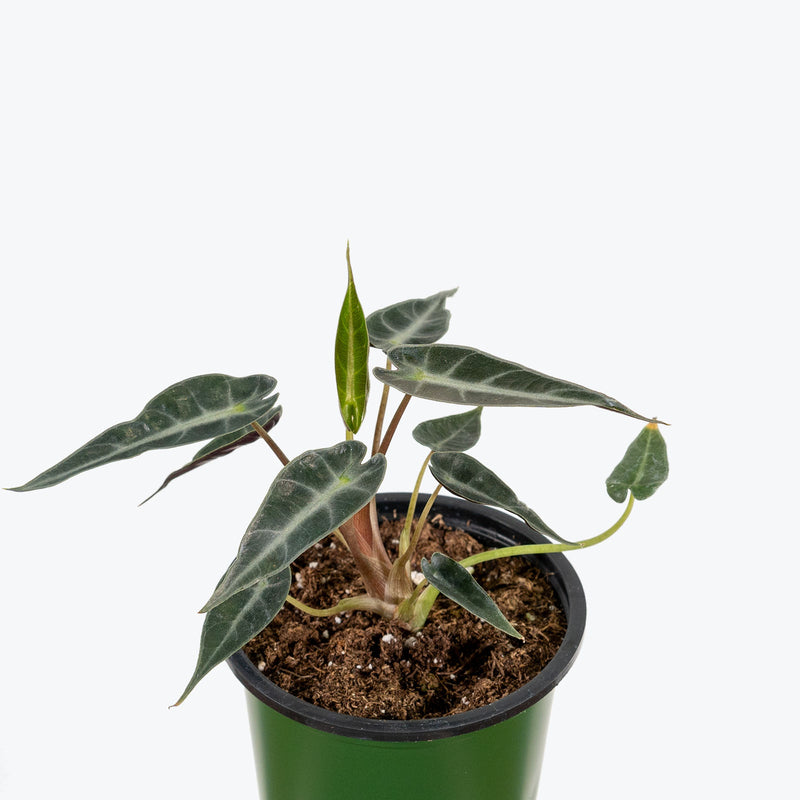
How to care for Alocasia Bambino
Alocasia Bambino should not be in a position to see the sun directly, although early morning or late evening sun is fine. Filtered sunlight through a sheer curtain is best and most homes are comprised primarily of indirect sunlight. The best spot for them is where they do not see the sun during the majority of the day but still get bright, indirect light.
Alocasia Bambino will thrive in bright light, but also can tolerate medium light. A good medium-light place in your home would be in the middle of a room that has a regular size window. They can be placed anywhere between the middle of the room and the window. Remember that plants will grow based on how much light they receive.
Alocasia Bambino needs to be watered when the top half of the soil is dry to the touch. That usually takes about 1 week in an average home environment. It will vary depending on the time of year, your environment and lighting conditions, but it's always safer to underwater or give the soil a check before you water again. Expect to water more often in brighter light and less often in lower light.
Alocasia Bambino likes a high humidity environment, give them a mist daily or as often as possible. Alternatively, you can put them around a humidifier. Although they won't die if they don't receive enough humidity, their leaves may have some dry, crunchy, or yellow edges.
During Alocasia Bambino’s dormancy in the winter months, where its growth slows significantly and it is prone to leaf loss, move it to somewhere warm and bright, while reducing your watering until it starts growing again in spring. If it has become root bound, repot the plant in the spring by planting it into a pot one size up. Clean the leaves regularly with a soft cloth to remove dust and enhance the plant's ability to photosynthesize effectively. Keep an eye out for pests such as spider mites and aphids, particularly if the air around the plant becomes too dry.
Alocasia Bambino is moderately toxic and can cause some adverse reactions when ingested so it is best to not let your pets eat it, which we advise for all plants in general. The severity of the reaction will depend on how much of the plant is ingested but, if you know your pet typically does not eat your plants, this plant will be suitable for your home..
Learn MoreView PlantAlocasia Bisma
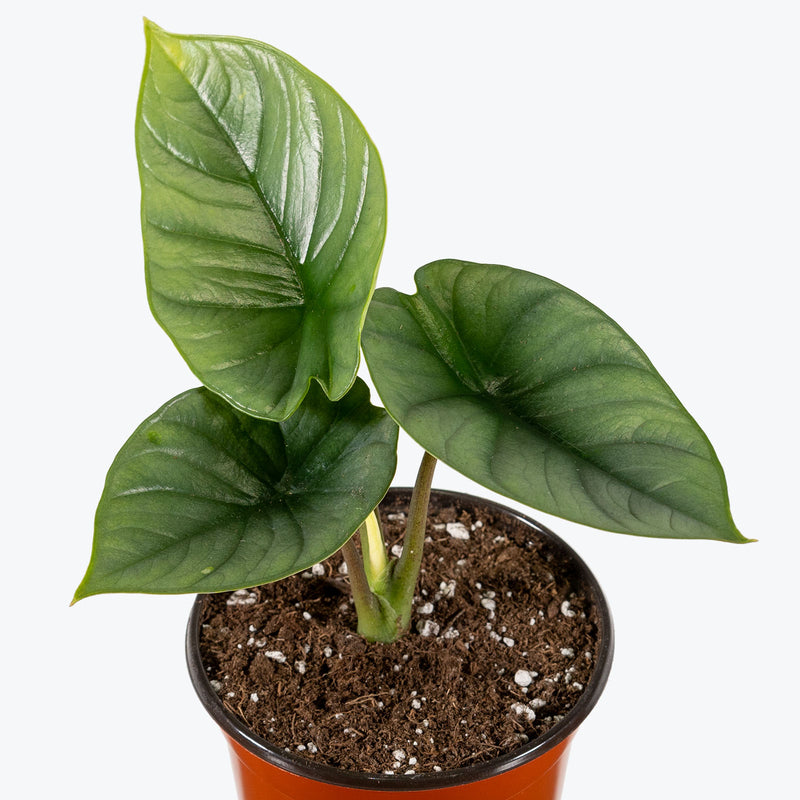
How to care for Alocasia Bisma
They should not be in a position to see the sun directly, although early morning or late evening sun is fine. Filtered sunlight through a sheer curtain is best and most homes are comprised primarily of indirect sunlight. The best spot for them is where they do not see the sun during the majority of the day but still get bright, indirect light.
They will thrive in bright light, but also can tolerate medium light. A good medium-light place in your home would be in the middle of a room that has a regular size window. They can be placed anywhere between the middle of the room and the window. Remember that plants will grow based on how much light they receive.
They need to be watered when the top half of the soil is dry to the touch. That usually takes about 1 week in an average home environment. It will vary depending on the time of year, your environment and lighting conditions, but it's always safer to underwater or give the soil a check before you water again. Expect to water more often in brighter light and less often in lower light.
They like a high humidity environment, give them a mist daily or as often as possible. Alternatively, you can put them around a humidifier. Although they won't die if they don't receive enough humidity, their leaves may have some dry, crunchy, or yellow edges.
During the plant’s dormancy in the winter months, where its growth slows significantly and it is prone to leaf loss, move it to somewhere warm and bright, while reducing your watering until it starts growing again in spring. If it has become root bound, repot the plant in the spring by planting it into a pot one size up.
This plant is moderately toxic and can cause some adverse reactions when ingested so it is best to not let your pets eat it, which we advise for all plants in general. The severity of the reaction will depend on how much of the plant is ingested but, if you know your pet typically does not eat your plants, this plant will be suitable for your home..
Learn MoreView PlantAlocasia Black Sapphire Gecko
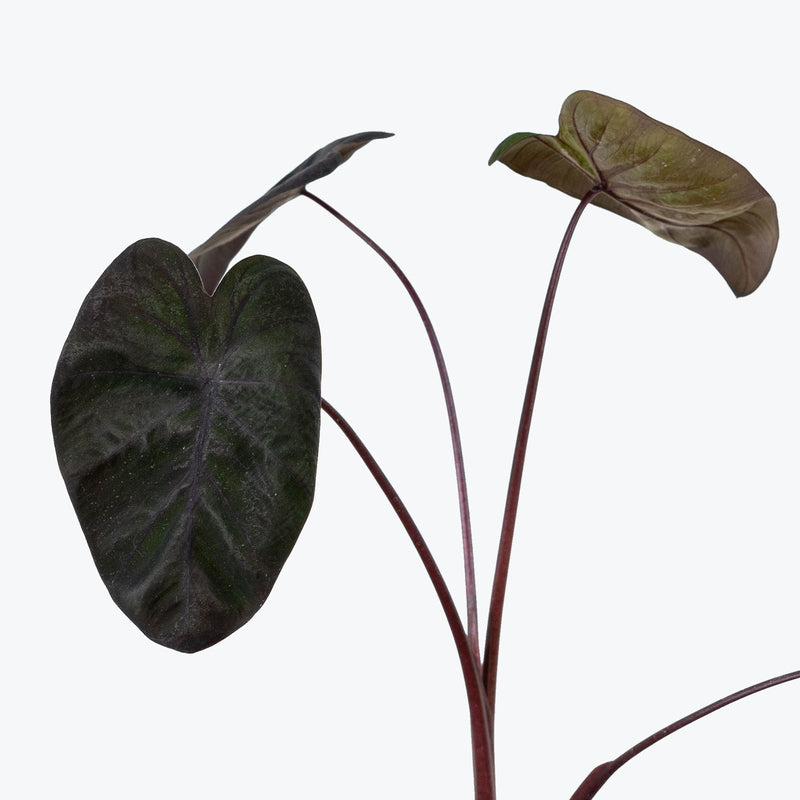
How to care for Alocasia Black Sapphire Gecko
They should not be in a position to see the sun directly, although early morning or late evening sun is fine. Filtered sunlight through a sheer curtain is best and most homes are comprised primarily of indirect sunlight. The best spot for them is where they do not see the sun during the majority of the day but still get bright, indirect light.
They will do best in bright light. A nice bright place inside your home would be on the window sill or a stool that is right next to a window, either with or without blinds, depending on if the plant can handle sun. Remember that plants will grow based on how much light they receive.
They need to be watered when the top half of the soil is dry to the touch. That usually takes about 1 week in an average home environment. It will vary depending on the time of year, your environment and lighting conditions, but it's always safer to underwater or give the soil a check before you water again. Expect to water more often in brighter light and less often in lower light.
They like a high humidity environment, give them a mist daily or as often as possible. Alternatively, you can put them around a humidifier. Although they won't die if they don't receive enough humidity, their leaves may have some dry, crunchy, or yellow edges.
During the plant’s dormancy in the winter months, where its growth slows significantly and it is prone to leaf loss, move it to somewhere warm and bright, while reducing your watering until it starts growing again in spring. If it has become root bound, repot the plant in the spring by planting it into a pot one size up.
This plant is moderately toxic and can cause some adverse reactions when ingested so it is best to not let your pets eat it, which we advise for all plants in general. The severity of the reaction will depend on how much of the plant is ingested but, if you know your pet typically does not eat your plants, this plant will be suitable for your home..
Learn MoreView PlantAlocasia Black Velvet
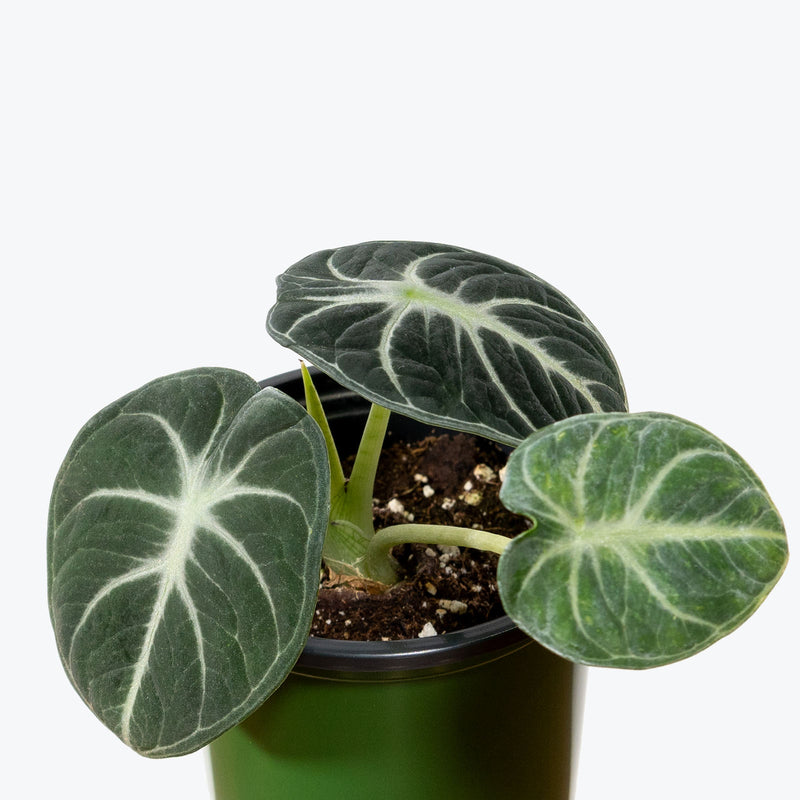
How to care for Alocasia Black Velvet
They should not be in a position to see the sun directly, although early morning or late evening sun is fine. Filtered sunlight through a sheer curtain is best and most homes are comprised primarily of indirect sunlight. The best spot for them is where they do not see the sun during the majority of the day but still get bright, indirect light.
They will thrive in bright light, but also can tolerate medium light. A good medium-light place in your home would be in the middle of a room that has a regular size window. They can be placed anywhere between the middle of the room and the window. Remember that plants will grow based on how much light they receive.
They need to be watered when the top half of the soil is dry to the touch. That usually takes about 1 week in an average home environment. It will vary depending on the time of year, your environment and lighting conditions, but it's always safer to underwater or give the soil a check before you water again. Expect to water more often in brighter light and less often in lower light.
They like a high humidity environment, give them a mist daily or as often as possible. Alternatively, you can put them around a humidifier. Although they won't die if they don't receive enough humidity, their leaves may have some dry, crunchy, or yellow edges.
During the plant’s dormancy in the winter months, where its growth slows significantly and it is prone to leaf loss, move it to somewhere warm and bright, while reducing your watering until it starts growing again in spring. If it has become root bound, repot the plant in the spring by planting it into a pot one size up.
This plant is moderately toxic and can cause some adverse reactions when ingested so it is best to not let your pets eat it, which we advise for all plants in general. The severity of the reaction will depend on how much of the plant is ingested but, if you know your pet typically does not eat your plants, this plant will be suitable for your home..
Learn MoreView PlantAlocasia Calidora
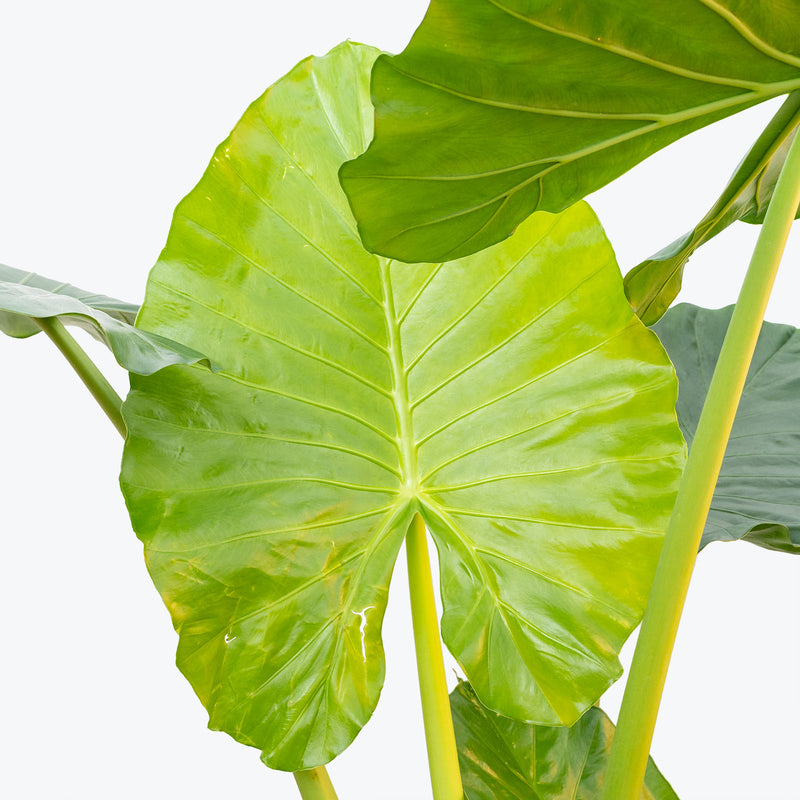
How to care for Alocasia Calidora
They enjoy some direct sun, but they'll also do well in bright, indirect light. It is best to place this plant somewhere where it will receive some nice morning sun, or a couple hours of afternoon sun, and then indirect light the rest of the day.
They will thrive in bright light, but also can tolerate medium light. A good medium-light place in your home would be in the middle of a room that has a regular size window. They can be placed anywhere between the middle of the room and the window. Remember that plants will grow based on how much light they receive.
They need to be watered when the top half of the soil is dry to the touch. That usually takes about 1 week in an average home environment. It will vary depending on the time of year, your environment and lighting conditions, but it's always safer to underwater or give the soil a check before you water again. Expect to water more often in brighter light and less often in lower light.
They like a high humidity environment, give them a mist daily or as often as possible. Alternatively, you can put them around a humidifier. Although they won't die if they don't receive enough humidity, their leaves may have some dry, crunchy, or yellow edges.
During the plant’s dormancy in the winter months, where its growth slows significantly and it is prone to leaf loss. If it has become root bound, repot the plant in the spring by planting it into a pot one size up.
This plant is moderately toxic and can cause some adverse reactions when ingested so it is best to not let your pets eat it, which we advise for all plants in general. The severity of the reaction will depend on how much of the plant is ingested but, if you know your pet typically does not eat your plants, this plant will be suitable for your home..
Learn MoreView PlantAlocasia California
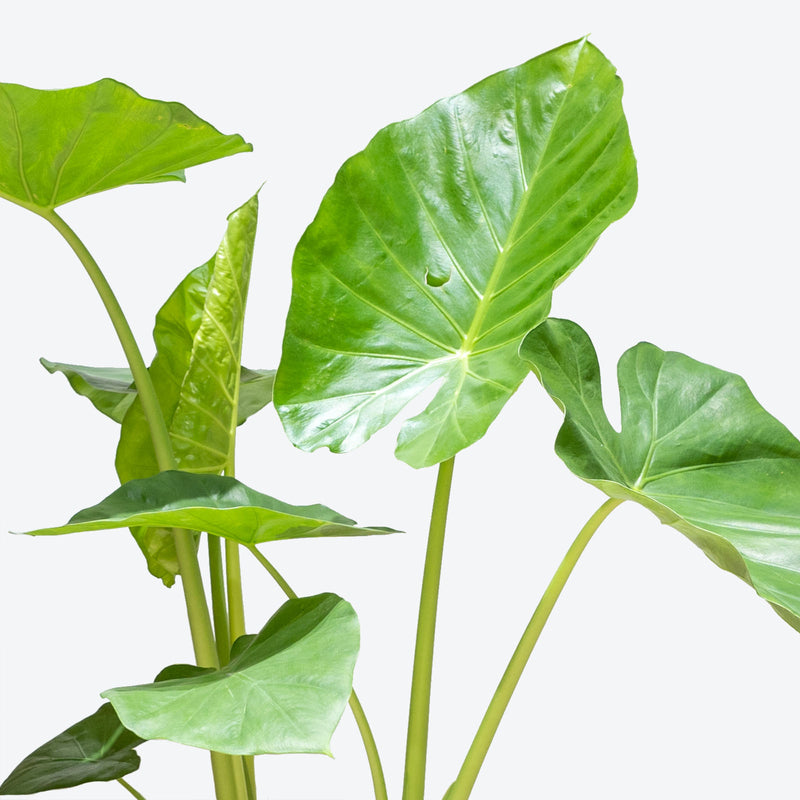
How to care for Alocasia California
They enjoy some direct sun, but they'll also do well in bright, indirect light. It is best to place this plant somewhere where it will receive some nice morning sun, or a couple hours of afternoon sun, and then indirect light the rest of the day.
They will thrive in bright light, but also can tolerate medium light. A good medium-light place in your home would be in the middle of a room that has a regular size window. They can be placed anywhere between the middle of the room and the window. Remember that plants will grow based on how much light they receive.
They need to be watered when the top half of the soil is dry to the touch. That usually takes about 1 week in an average home environment. It will vary depending on the time of year, your environment and lighting conditions, but it's always safer to underwater or give the soil a check before you water again. Expect to water more often in brighter light and less often in lower light.
They like a high humidity environment, give them a mist daily or as often as possible. Alternatively, you can put them around a humidifier. Although they won't die if they don't receive enough humidity, their leaves may have some dry, crunchy, or yellow edges.
During the plant’s dormancy in the winter months, where its growth slows significantly and it is prone to leaf loss. If it has become root bound, repot the plant in the spring by planting it into a pot one size up.
This plant is moderately toxic and can cause some adverse reactions when ingested so it is best to not let your pets eat it, which we advise for all plants in general. The severity of the reaction will depend on how much of the plant is ingested but, if you know your pet typically does not eat your plants, this plant will be suitable for your home..
Learn MoreView PlantAlocasia Corazon
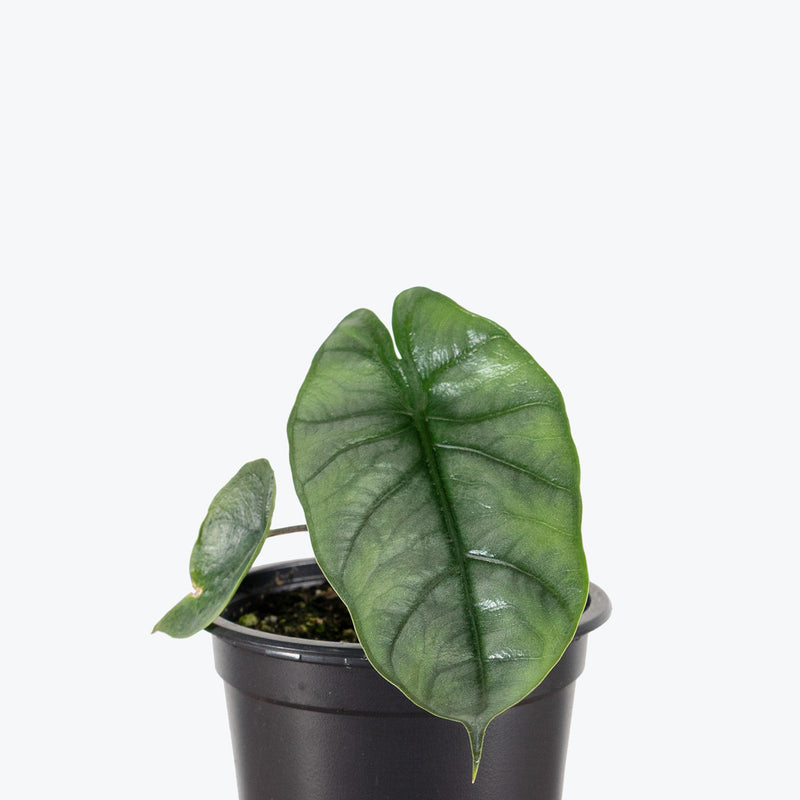
How to care for Alocasia Corazon
Alocasia Corazon should not be in a position to see the sun directly, although early morning or late evening sun is fine. Filtered sunlight through a sheer curtain is best and most homes are comprised primarily of indirect sunlight. The best spot for them is where they do not see the sun during the majority of the day but still get bright, indirect light.
Alocasia Corazon will thrive in bright light, but also can tolerate medium light. A good medium-light place in your home would be in the middle of a room that has a regular size window. They can be placed anywhere between the middle of the room and the window. Remember that plants will grow based on how much light they receive.
Alocasia Corazon needs to be watered when the top half of the soil is dry to the touch. That usually takes about 1 week in an average home environment. It will vary depending on the time of year, your environment and lighting conditions, but it's always safer to underwater or give the soil a check before you water again. Expect to water more often in brighter light and less often in lower light.
Alocasia Corazon likes a high humidity environment, give them a mist daily or as often as possible. Alternatively, you can put them around a humidifier. Although they won't die if they don't receive enough humidity, their leaves may have some dry, crunchy, or yellow edges.
During Alocasia Corazon’s dormancy in the winter months, where its growth slows significantly and it is prone to leaf loss, move it to somewhere warm and bright, while reducing your watering until it starts growing again in spring. If it has become root bound, repot the plant in the spring by planting it into a pot one size up. Regularly clean the leaves with a soft, damp cloth to remove dust and enhance their appearance.
Alocasia Corazon is moderately toxic and can cause some adverse reactions when ingested so it is best to not let your pets eat it, which we advise for all plants in general. The severity of the reaction will depend on how much of the plant is ingested but, if you know your pet typically does not eat your plants, this plant will be suitable for your home..
Learn MoreView PlantAlocasia Cucullata
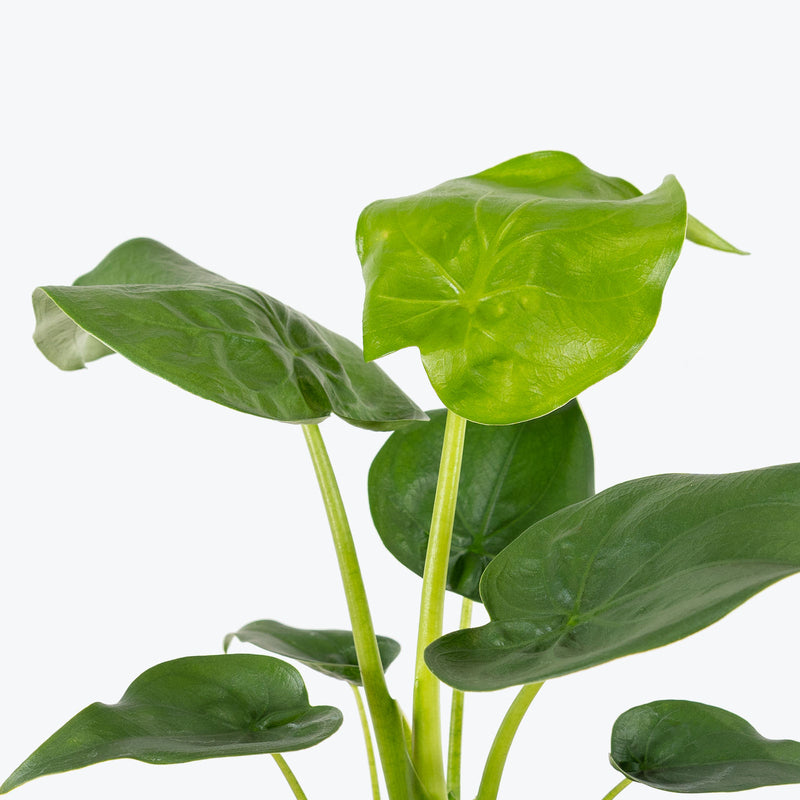
How to care for Alocasia Cucullata
They should not be in a position to see the sun directly, although early morning or late evening sun is fine. Filtered sunlight through a sheer curtain is best and most homes are comprised primarily of indirect sunlight. The best spot for them is where they do not see the sun during the majority of the day but still get bright, indirect light.
They will do best in bright light. A nice bright place inside your home would be on the window sill or a stool that is right next to a window, either with or without blinds, depending on if the plant can handle sun. Remember that plants will grow based on how much light they receive.
They need to be watered when the top half of the soil is dry to the touch. That usually takes about 1 week in an average home environment. It will vary depending on the time of year, your environment and lighting conditions, but it's always safer to underwater or give the soil a check before you water again. Expect to water more often in brighter light and less often in lower light.
They like a high humidity environment, give them a mist daily or as often as possible. Alternatively, you can put them around a humidifier. Although they won't die if they don't receive enough humidity, their leaves may have some dry, crunchy, or yellow edges.
During the plant’s dormancy in the winter months, where its growth slows significantly and it is prone to leaf loss, move it to somewhere warm and bright, while reducing your watering until it starts growing again in spring. If it has become root bound, repot the plant in the spring by planting it into a pot one size up.
This plant is moderately toxic and can cause some adverse reactions when ingested so it is best to not let your pets eat it, which we advise for all plants in general. The severity of the reaction will depend on how much of the plant is ingested but, if you know your pet typically does not eat your plants, this plant will be suitable for your home..
Learn MoreView PlantAlocasia Cuprea
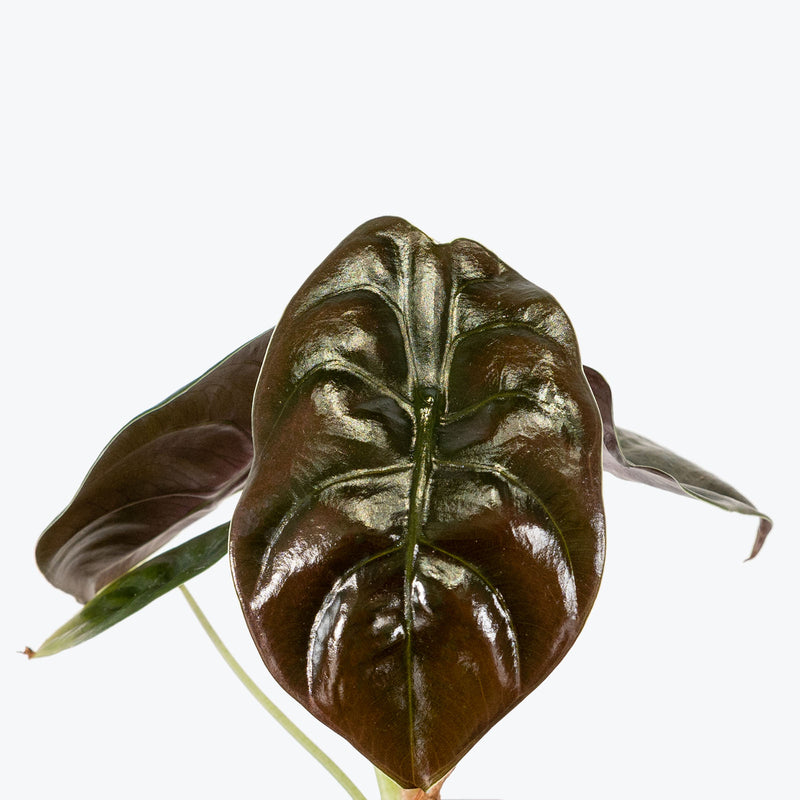
How to care for Alocasia Cuprea
They should not be in a position to see the sun directly, although early morning or late evening sun is fine. Filtered sunlight through a sheer curtain is best and most homes are comprised primarily of indirect sunlight. The best spot for them is where they do not see the sun during the majority of the day but still get bright, indirect light.
They will thrive in bright light, but also can tolerate medium light. A good medium-light place in your home would be in the middle of a room that has a regular size window. They can be placed anywhere between the middle of the room and the window. Remember that plants will grow based on how much light they receive.
They need to be watered when the top half of the soil is dry to the touch. That usually takes about 1 week in an average home environment. It will vary depending on the time of year, your environment and lighting conditions, but it's always safer to underwater or give the soil a check before you water again. Expect to water more often in brighter light and less often in lower light.
They like a high humidity environment, give them a mist daily or as often as possible. Alternatively, you can put them around a humidifier. Although they won't die if they don't receive enough humidity, their leaves may have some dry, crunchy, or yellow edges.
During the plant’s dormancy in the winter months, where its growth slows significantly and it is prone to leaf loss, move it to somewhere warm and bright, while reducing your watering until it starts growing again in spring. If it has become root bound, repot the plant in the spring by planting it into a pot one size up.
This plant is moderately toxic and can cause some adverse reactions when ingested so it is best to not let your pets eat it, which we advise for all plants in general. The severity of the reaction will depend on how much of the plant is ingested but, if you know your pet typically does not eat your plants, this plant will be suitable for your home..
Learn MoreView PlantAlocasia Dark Star
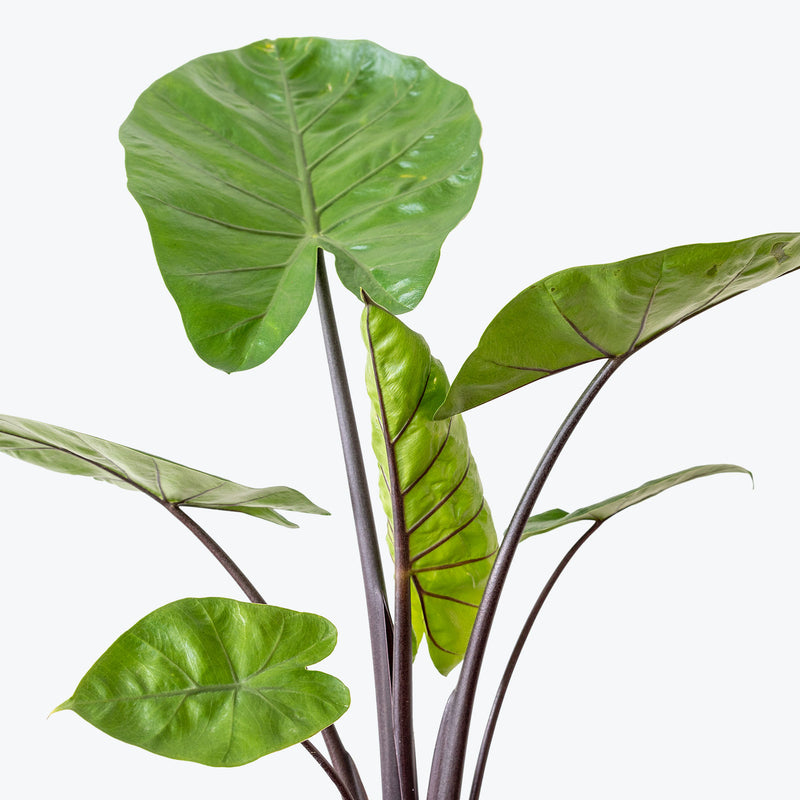
How to care for Alocasia Dark Star
They should not be in a position to see the sun directly, although early morning or late evening sun is fine. Filtered sunlight through a sheer curtain is best and most homes are comprised primarily of indirect sunlight. The best spot for them is where they do not see the sun during the majority of the day but still get bright, indirect light.
They will thrive in bright light, but also can tolerate medium light. A good medium-light place in your home would be in the middle of a room that has a regular size window. They can be placed anywhere between the middle of the room and the window. Remember that plants will grow based on how much light they receive.
They need to be watered when the top half of the soil is dry to the touch. That usually takes about 1 week in an average home environment. It will vary depending on the time of year, your environment and lighting conditions, but it's always safer to underwater or give the soil a check before you water again.
They like a high humidity environment, give them a mist daily or as often as possible. Alternatively, you can put them around a humidifier. Although they won't die if they don't receive enough humidity, their leaves may have some dry, crunchy, or yellow edges.
During the plant’s dormancy in the winter months, where its growth slows significantly and it is prone to leaf loss, move it to somewhere warm and bright, while reducing your watering until it starts growing again in spring. If it has become root bound, repot the plant in the spring by planting it into a pot one size up.
This plant is moderately toxic and can cause some adverse reactions when ingested so it is best to not let your pets eat it, which we advise for all plants in general. The severity of the reaction will depend on how much of the plant is ingested but, if you know your pet typically does not eat your plants, this plant will be suitable for your home..
Learn MoreView PlantAlocasia Dewey's Reversa
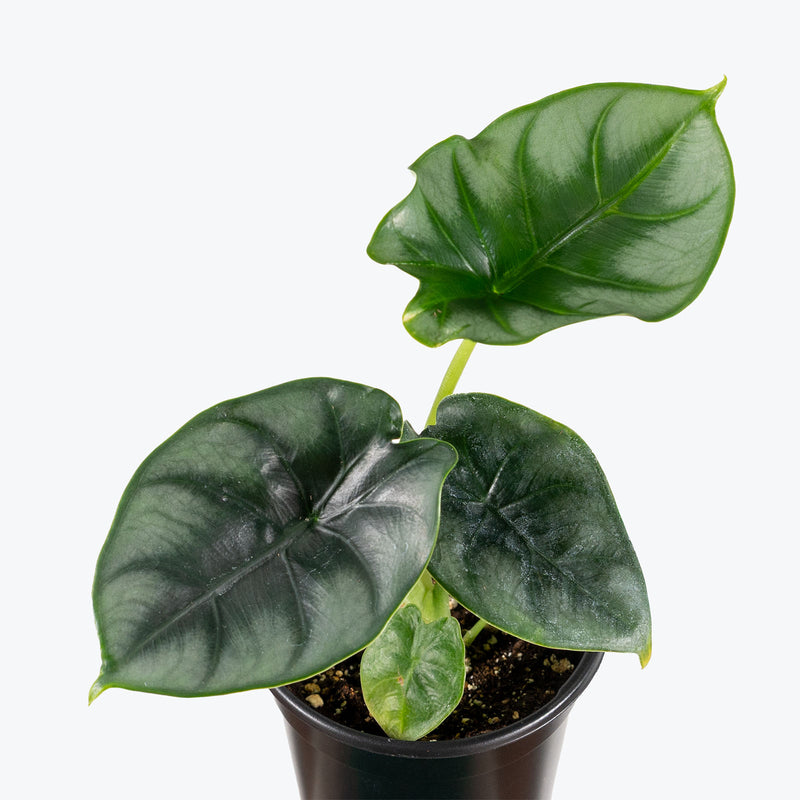
How to care for Alocasia Dewey's Reversa
Alocasia Dewey's Reversa should not be in a position to see the sun directly, although early morning or late evening sun is fine. Filtered sunlight through a sheer curtain is best and most homes are comprised primarily of indirect sunlight. The best spot for them is where they do not see the sun during the majority of the day but still get bright, indirect light.
Alocasia Dewey's Reversa will thrive in bright light, but also can tolerate medium light. A good medium-light place in your home would be in the middle of a room that has a regular size window. They can be placed anywhere between the middle of the room and the window. Remember that plants will grow based on how much light they receive.
Alocasia Dewey's Reversa needs to be watered when the top half of the soil is dry to the touch. That usually takes about 1 week in an average home environment. It will vary depending on the time of year, your environment and lighting conditions, but it's always safer to underwater or give the soil a check before you water again. Expect to water more often in brighter light and less often in lower light.
Alocasia Dewey's Reversa will do well in average humidity environments but will appreciate a little bit of humidity if provided, give them a mist daily or get a humidifier.
Plant Alocasia Dewey's Reversa in a well-draining, chunky aroid mix to protect roots from excess moisture. Fertilize monthly during spring and summer with a balanced, diluted fertilizer. Like many jewel Alocasias, Reversa prefers warmth and stable conditions—keep away from drafts or sudden temperature changes.
Alocasia Dewey's Reversa is moderately toxic and can cause some adverse reactions when ingested so it is best to not let your pets eat it, which we advise for all plants in general. The severity of the reaction will depend on how much of the plant is ingested but, if you know your pet typically does not eat your plants, this plant will be suitable for your home..
Learn MoreView PlantAlocasia Dragon Scale
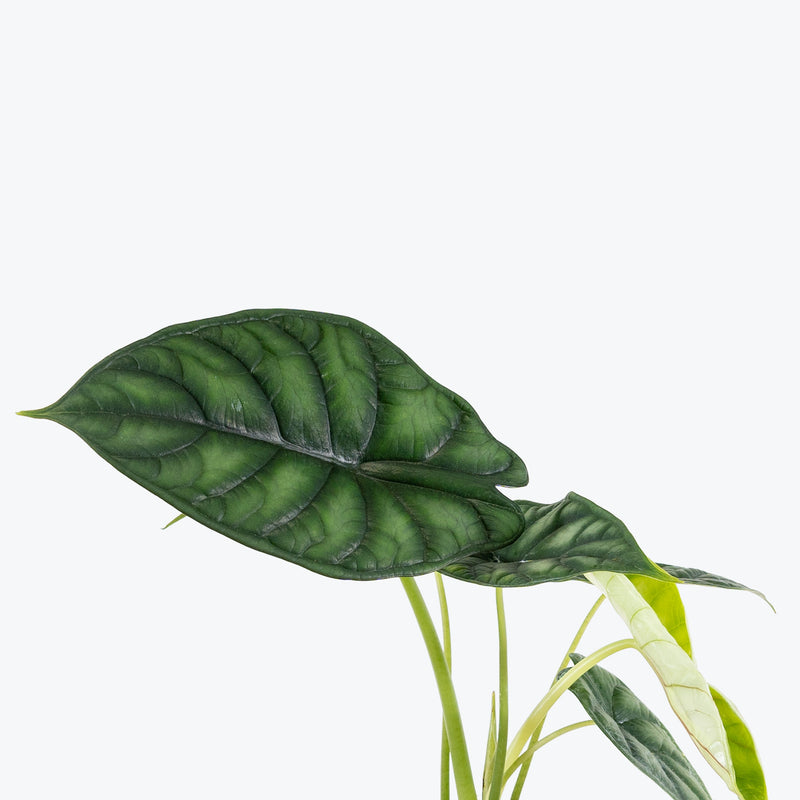
How to care for Alocasia Dragon Scale
Alocasia Dragon Scale should not be in a position to see the sun directly, although early morning or late evening sun is fine. Filtered sunlight through a sheer curtain is best and most homes are comprised primarily of indirect sunlight. The best spot for them is where they do not see the sun during the majority of the day but still get bright, indirect light.
Alocasia Dragon Scale will thrive in bright light, but also can tolerate medium light. A good medium-light place in your home would be in the middle of a room that has a regular size window. They can be placed anywhere between the middle of the room and the window. Remember that plants will grow based on how much light they receive.
Alocasia Dragon Scale needs to be watered when the top half of the soil is dry to the touch. That usually takes about 1 week in an average home environment. It will vary depending on the time of year, your environment and lighting conditions, but it's always safer to underwater or give the soil a check before you water again. Expect to water more often in brighter light and less often in lower light.
Alocasia Dragon Scale likes a high humidity environment, give them a mist daily or as often as possible. Alternatively, you can put them around a humidifier. Although they won't die if they don't receive enough humidity, their leaves may have some dry, crunchy, or yellow edges.
During Alocasia Dragon Scale’s dormancy in the winter months, where its growth slows significantly and it is prone to leaf loss, move it to somewhere warm and bright, while reducing your watering until it starts growing again in spring. If it has become root bound, repot the plant in the spring by planting it into a pot one size up. Clean the leaves regularly with a soft, damp cloth to remove dust and enhance photosynthesis. Watch out for common pests like spider mites and aphids, especially under low humidity conditions.
Alocasia Dragon Scale is moderately toxic and can cause some adverse reactions when ingested so it is best to not let your pets eat it, which we advise for all plants in general. The severity of the reaction will depend on how much of the plant is ingested but, if you know your pet typically does not eat your plants, this plant will be suitable for your home..
Learn MoreView PlantAlocasia Dragon Scale Mint
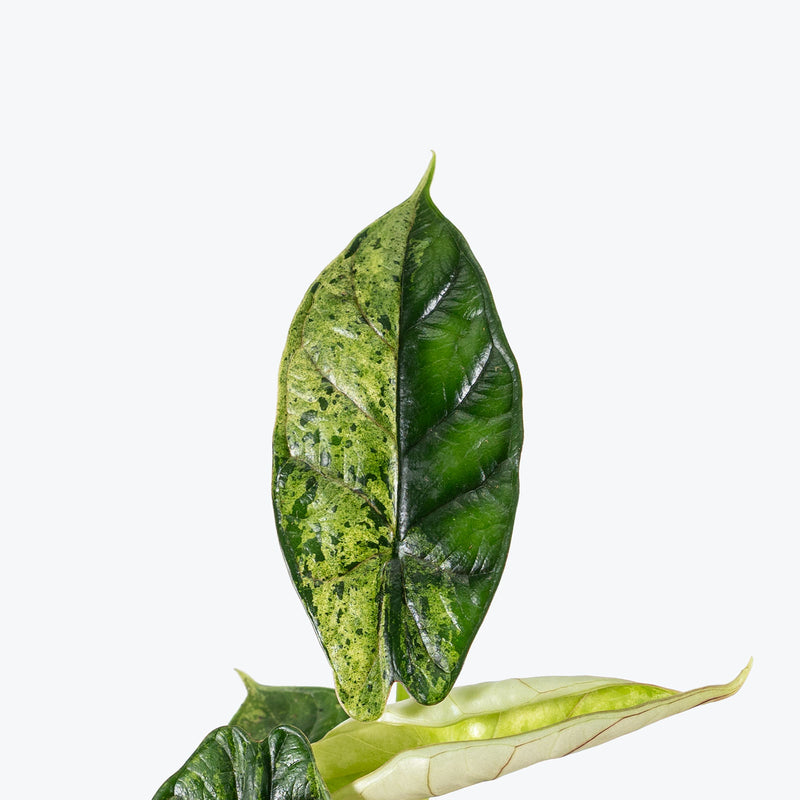
How to care for Alocasia Dragon Scale Mint
Alocasia Dragon Scale Mint should not be in a position to see the sun directly, although early morning or late evening sun is fine. Filtered sunlight through a sheer curtain is best and most homes are comprised primarily of indirect sunlight. The best spot for them is where they do not see the sun during the majority of the day but still get bright, indirect light.
Alocasia Dragon Scale Mint will thrive in bright light, but also can tolerate medium light. A good medium-light place in your home would be in the middle of a room that has a regular size window. They can be placed anywhere between the middle of the room and the window. Remember that plants will grow based on how much light they receive.
Alocasia Dragon Scale Mint needs to be watered when the top half of the soil is dry to the touch. That usually takes about 1 week in an average home environment. It will vary depending on the time of year, your environment and lighting conditions, but it's always safer to underwater or give the soil a check before you water again. Expect to water more often in brighter light and less often in lower light.
Alocasia Dragon Scale Mint likes a high humidity environment, give them a mist daily or as often as possible. Alternatively, you can put them around a humidifier. Although they won't die if they don't receive enough humidity, their leaves may have some dry, crunchy, or yellow edges.
Use a chunky, well-aerated mix (Aroid mix) to avoid root rot and mimic its native conditions. Keep in a warm, humid environment and away from cold drafts. Fertilize Alocasia Dragon Scale Mint lightly every 4–6 weeks during the growing season to maintain colour and leaf texture. This plant can be sensitive to change, so acclimate it slowly to new environments or repotting.
Alocasia Dragon Scale Mint is moderately toxic and can cause some adverse reactions when ingested so it is best to not let your pets eat it, which we advise for all plants in general. The severity of the reaction will depend on how much of the plant is ingested but, if you know your pet typically does not eat your plants, this plant will be suitable for your home..
Learn MoreView PlantAlocasia Dragon's Breath
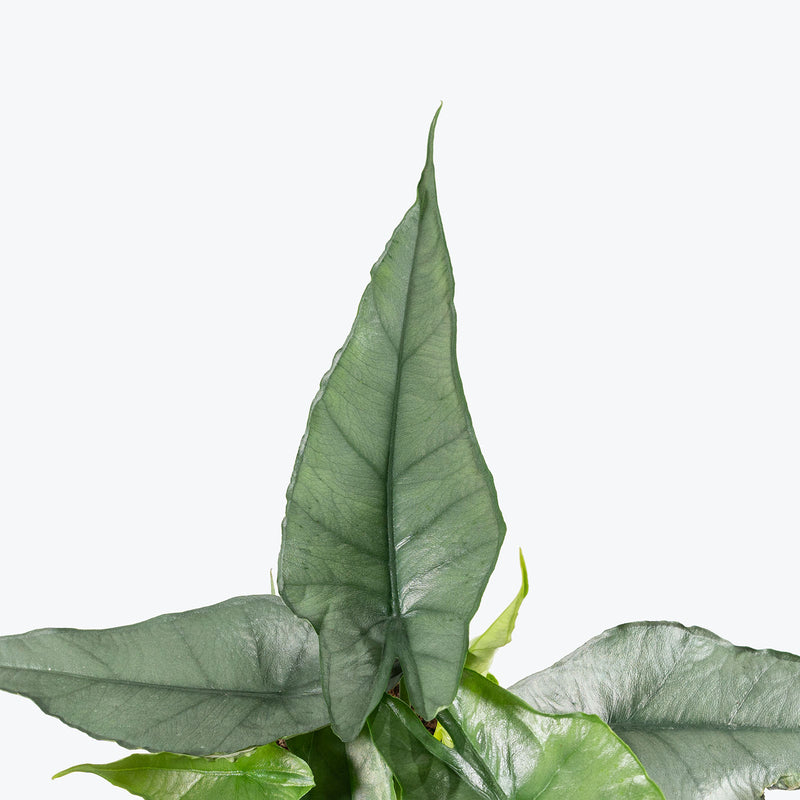
How to care for Alocasia Dragon's Breath
Alocasia Dragon's Breath should not be in a position to see the sun directly, although early morning or late evening sun is fine. Filtered sunlight through a sheer curtain is best and most homes are comprised primarily of indirect sunlight. The best spot for them is where they do not see the sun during the majority of the day but still get bright, indirect light.
Alocasia Dragon's Breath will do best in bright light. A nice bright place inside your home would be on the window sill or a stool that is right next to a window, either with or without blinds, depending on if the plant can handle sun. Remember that plants will grow based on how much light they receive.
Alocasia Dragon's Breath needs to be watered when the top half of the soil is dry to the touch. That usually takes about 1 week in an average home environment. It will vary depending on the time of year, your environment and lighting conditions, but it's always safer to underwater or give the soil a check before you water again. Expect to water more often in brighter light and less often in lower light.
Alocasia Dragon's Breath likes a high humidity environment, give them a mist daily or as often as possible. Alternatively, you can put them around a humidifier. Although they won't die if they don't receive enough humidity, their leaves may have some dry, crunchy, or yellow edges.
Many Alocasias, including Alocasia Dragon's Breath, may enter dormancy in cooler months, leading to reduced growth or some leaf drop. During the plant’s dormancy in the winter months, move it to somewhere warm and bright, while reducing your watering until it starts growing again in spring. Regularly clean the leaves with a damp cloth to remove dust and prevent pest infestations. Provide a stake or support for larger plants to help maintain their upright posture.
Alocasia Dragon's Breath is moderately toxic and can cause some adverse reactions when ingested so it is best to not let your pets eat it, which we advise for all plants in general. The severity of the reaction will depend on how much of the plant is ingested but, if you know your pet typically does not eat your plants, this plant will be suitable for your home..
Learn MoreView PlantAlocasia Flying Squid
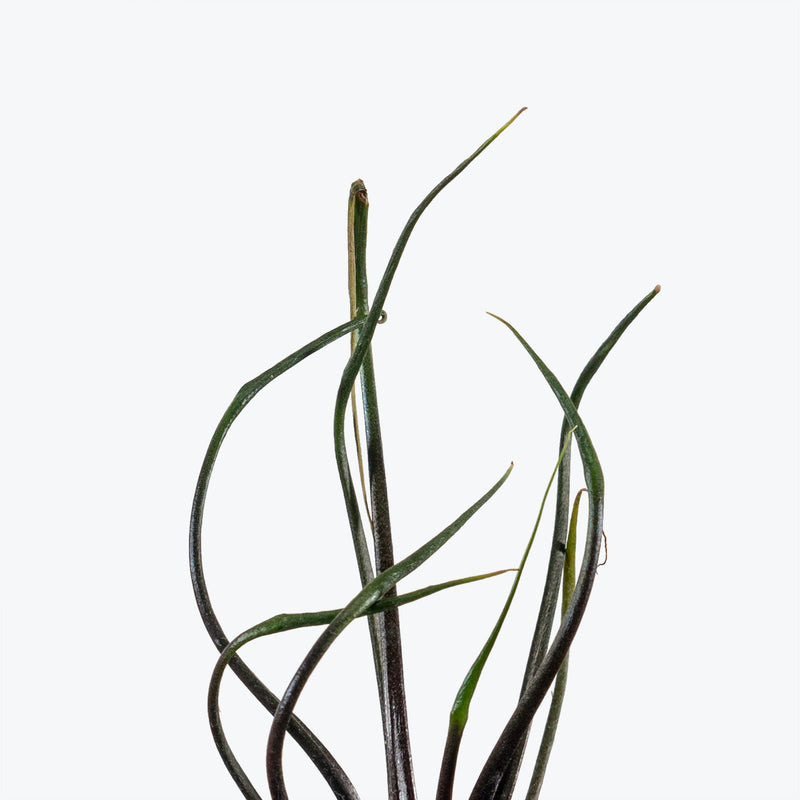
How to care for Alocasia Flying Squid
They should not be in a position to see the sun directly, although early morning or late evening sun is fine. Filtered sunlight through a sheer curtain is best and most homes are comprised primarily of indirect sunlight. The best spot for them is where they do not see the sun during the majority of the day but still get bright, indirect light.
They will do best in bright light. A nice bright place inside your home would be on the window sill or a stool that is right next to a window, either with or without blinds, depending on if the plant can handle sun. Remember that plants will grow based on how much light they receive.
They need to be watered when the top half of the soil is dry to the touch. That usually takes about 1 week in an average home environment. It will vary depending on the time of year, your environment and lighting conditions, but it's always safer to underwater or give the soil a check before you water again. Expect to water more often in brighter light and less often in lower light.
They like a high humidity environment, give them a mist daily or as often as possible. Alternatively, you can put them around a humidifier. Although they won't die if they don't receive enough humidity, their leaves may have some dry, crunchy, or yellow edges.
Alocasia plant can be susceptible to pests such as spider mites, so regular cleaning of the leaves and monitoring for signs of pests is advised. Also, ensure that it is not exposed to cold drafts as Alocasias are sensitive to temperature changes.
This plant is moderately toxic and can cause some adverse reactions when ingested so it is best to not let your pets eat it, which we advise for all plants in general. The severity of the reaction will depend on how much of the plant is ingested but, if you know your pet typically does not eat your plants, this plant will be suitable for your home..
Learn MoreView PlantAlocasia Frydek
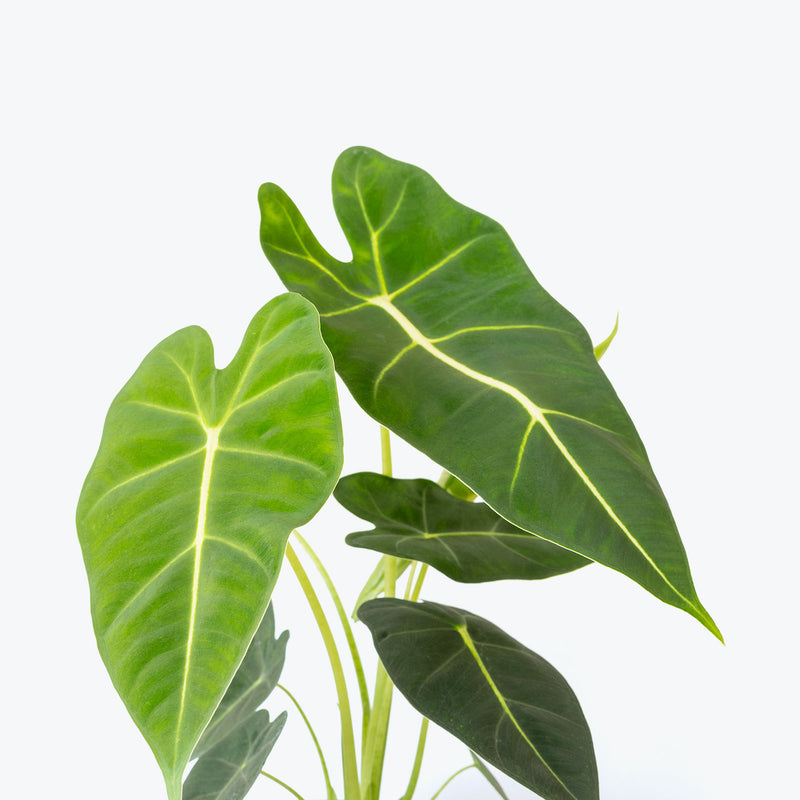
How to care for Alocasia Frydek
Alocasia Frydek should not be in a position to see the sun directly, although early morning or late evening sun is fine. Filtered sunlight through a sheer curtain is best and most homes are comprised primarily of indirect sunlight. The best spot for them is where they do not see the sun during the majority of the day but still get bright, indirect light.
Alocasia Frydek will thrive in bright light, but also can tolerate medium light. A good medium-light place in your home would be in the middle of a room that has a regular size window. They can be placed anywhere between the middle of the room and the window. Remember that plants will grow based on how much light they receive.
Alocasia Frydek needs to be watered when the top half of the soil is dry to the touch. That usually takes about 1 week in an average home environment. It will vary depending on the time of year, your environment and lighting conditions, but it's always safer to underwater or give the soil a check before you water again.
Alocasia Frydek likes a high humidity environment, give them a mist daily or as often as possible. Alternatively, you can put them around a humidifier. Although they won't die if they don't receive enough humidity, their leaves may have some dry, crunchy, or yellow edges.
During the Alocasia Frydek’s dormancy in the winter months, where its growth slows significantly and it is prone to leaf loss, move it to somewhere warm and bright, while reducing your watering until it starts growing again in spring. If it has become root bound, repot the plant in the spring by planting it into a pot one size up.
Alocasia Frydek is moderately toxic and can cause some adverse reactions when ingested so it is best to not let your pets eat it, which we advise for all plants in general. The severity of the reaction will depend on how much of the plant is ingested but, if you know your pet typically does not eat your plants, this plant will be suitable for your home..
Learn MoreView PlantAlocasia Frydek Variegata
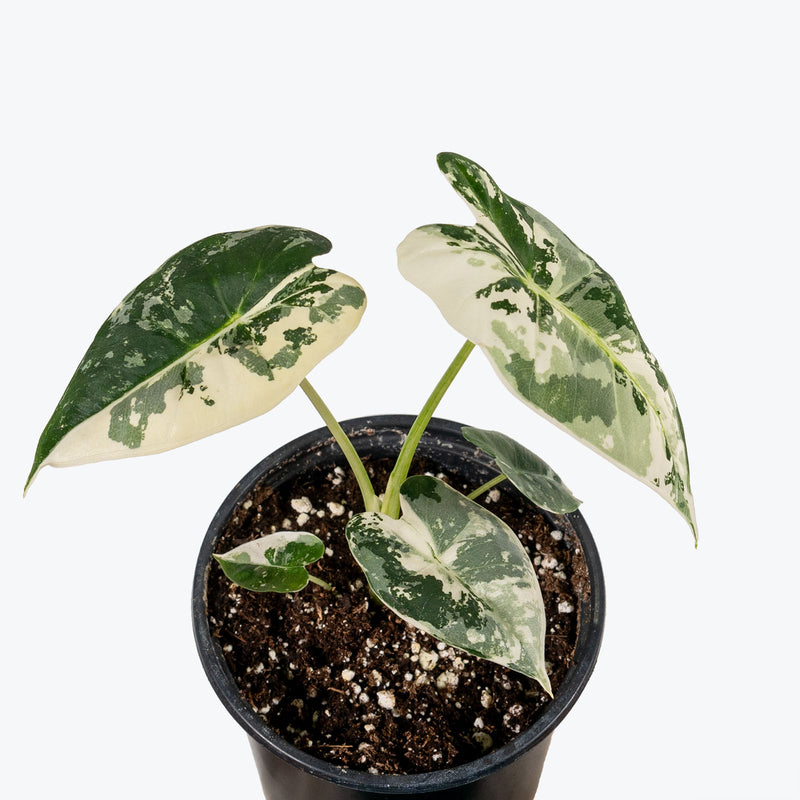
How to care for Alocasia Frydek Variegata
Alocasia Frydek Variegata should not be in a position to see the sun directly, although early morning or late evening sun is fine. Filtered sunlight through a sheer curtain is best and most homes are comprised primarily of indirect sunlight. The best spot for them is where they do not see the sun during the majority of the day but still get bright, indirect light.
Alocasia Frydek Variegata will do best in bright light. A nice bright place inside your home would be on the window sill or a stool that is right next to a window, either with or without blinds, depending on if the plant can handle sun. Remember that plants will grow based on how much light they receive.
Allow the top quarter of the soil to dry before watering Alocasia Frydek Variegata again. This usually takes about 3 - 4 days in an average home environment. It will vary depending on the time of year, your environment and lighting conditions. Expect to water more often in brighter light and less often in lower light.
Alocasia Frydek Variegata likes a high humidity environment, give them a mist daily or as often as possible. Alternatively, you can put them around a humidifier. Although they won't die if they don't receive enough humidity, their leaves may have some dry, crunchy, or yellow edges.
Alocasia Frydek Variegata prefer a warm, humid environment and don't do well with sudden temperature changes. It's also sensitive to salts in tap water, so using filtered or rainwater can help prevent leaf browning. Fertilize lightly during the growing season, and reduce feeding during the winter months.
Alocasia Frydek Variegata is moderately toxic and can cause some adverse reactions when ingested so it is best to not let your pets eat it, which we advise for all plants in general. The severity of the reaction will depend on how much of the plant is ingested but, if you know your pet typically does not eat your plants, this plant will be suitable for your home..
Learn MoreView PlantAlocasia Gigantea Aurea Variegated
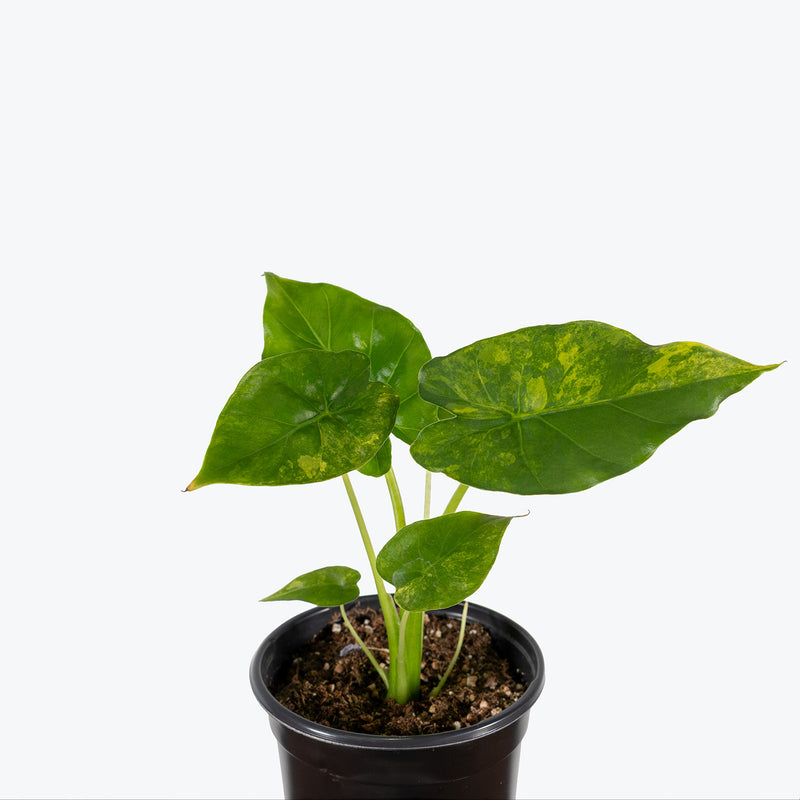
How to care for Alocasia Gigantea Aurea Variegated
Alocasia Gigantea Aurea Variegated should not be in a position to see the sun directly, although early morning or late evening sun is fine. Filtered sunlight through a sheer curtain is best and most homes are comprised primarily of indirect sunlight. The best spot for them is where they do not see the sun during the majority of the day but still get bright, indirect light.
Alocasia Gigantea Aurea Variegated will thrive in bright light, but also can tolerate medium light. A good medium-light place in your home would be in the middle of a room that has a regular size window. They can be placed anywhere between the middle of the room and the window. Remember that plants will grow based on how much light they receive.
Alocasia Gigantea Aurea Variegated needs to be watered when the top half of the soil is dry to the touch. That usually takes about 1 week in an average home environment. It will vary depending on the time of year, your environment and lighting conditions, but it's always safer to underwater or give the soil a check before you water again. Expect to water more often in brighter light and less often in lower light.
Alocasia Gigantea Aurea Variegated likes a high humidity environment, give them a mist daily or as often as possible. Alternatively, you can put them around a humidifier. Although they won't die if they don't receive enough humidity, their leaves may have some dry, crunchy, or yellow edges.
During Alocasia Gigantea Aurea Variegated’s dormancy in the winter months, where its growth slows significantly and it is prone to leaf loss, move it to somewhere warm and bright, while reducing your watering until it starts growing again in spring. If it has become root bound, repot the plant in the spring by planting it into a pot one size up. Clean the large leaves regularly with a soft, damp cloth to remove dust and prevent pest infestations, which are more common in lower humidity conditions.
Alocasia Gigantea Aurea Variegated is moderately toxic and can cause some adverse reactions when ingested so it is best to not let your pets eat it, which we advise for all plants in general. The severity of the reaction will depend on how much of the plant is ingested but, if you know your pet typically does not eat your plants, this plant will be suitable for your home..
Learn MoreView PlantAlocasia Golden Bone
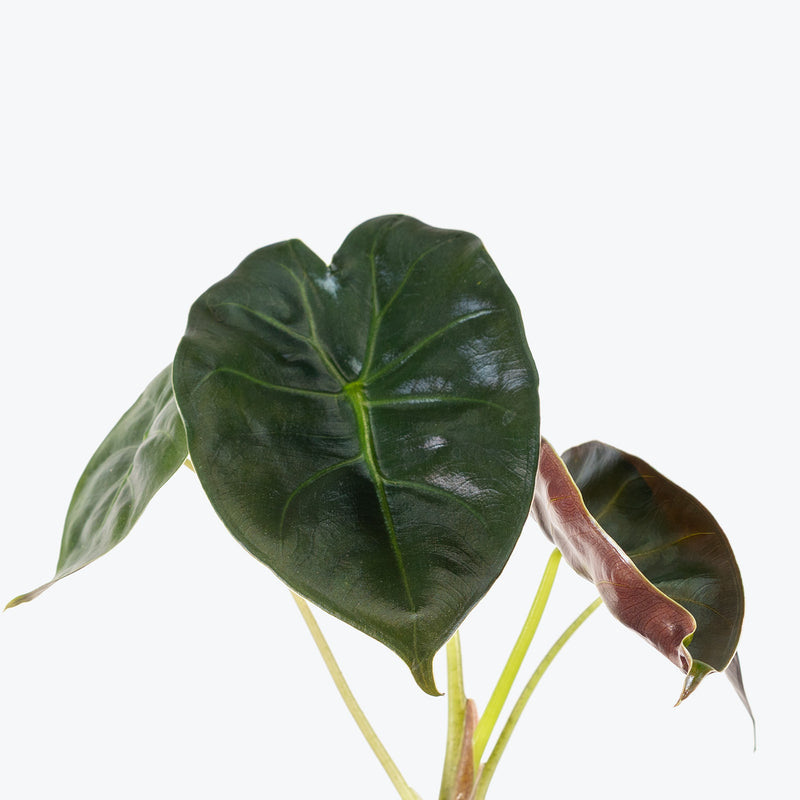
How to care for Alocasia Golden Bone
Alocasia Golden Bone should not be in a position to see the sun directly, although early morning or late evening sun is fine. Filtered sunlight through a sheer curtain is best and most homes are comprised primarily of indirect sunlight. The best spot for them is where they do not see the sun during the majority of the day but still get bright, indirect light.
Alocasia Golden Bone will thrive in bright light, but also can tolerate medium light. A good medium-light place in your home would be in the middle of a room that has a regular size window. They can be placed anywhere between the middle of the room and the window. Remember that plants will grow based on how much light they receive.
Alocasia Golden Bone needs to be watered when the top half of the soil is dry to the touch. That usually takes about 1 week in an average home environment. It will vary depending on the time of year, your environment and lighting conditions, but it's always safer to underwater or give the soil a check before you water again. Expect to water more often in brighter light and less often in lower light.
Alocasia Golden Bone likes a high humidity environment, give them a mist daily or as often as possible. Alternatively, you can put them around a humidifier. Although they won't die if they don't receive enough humidity, their leaves may have some dry, crunchy, or yellow edges.
Fertilize Alocasia Golden Bone with a balanced liquid fertilizer every month during the growing season (spring and summer), diluting it to half the recommended strength. Reduce feeding during the winter months when the plant's growth naturally slows. Regularly clean the leaves with a soft, damp cloth to remove dust and enhance their appearance. Provide a support structure if necessary, as this Alocasia can grow quite large and may require additional support as it matures.
Alocasia Golden Bone is moderately toxic and can cause some adverse reactions when ingested so it is best to not let your pets eat it, which we advise for all plants in general. The severity of the reaction will depend on how much of the plant is ingested but, if you know your pet typically does not eat your plants, this plant will be suitable for your home..
Learn MoreView PlantAlocasia Green Shield
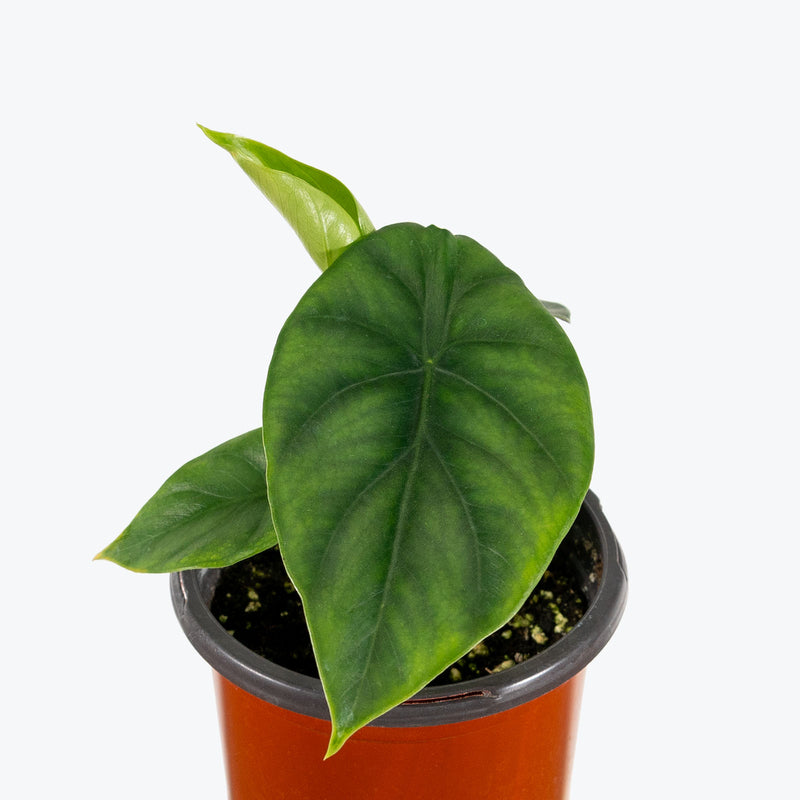
How to care for Alocasia Green Shield
They should not be in a position to see the sun directly, although early morning or late evening sun is fine. Filtered sunlight through a sheer curtain is best and most homes are comprised primarily of indirect sunlight. The best spot for them is where they do not see the sun during the majority of the day but still get bright, indirect light.
They will thrive in bright light, but also can tolerate medium light. A good medium-light place in your home would be in the middle of a room that has a regular size window. They can be placed anywhere between the middle of the room and the window. Remember that plants will grow based on how much light they receive.
They need to be watered when the top half of the soil is dry to the touch. That usually takes about 1 week in an average home environment. It will vary depending on the time of year, your environment and lighting conditions, but it's always safer to underwater or give the soil a check before you water again. Expect to water more often in brighter light and less often in lower light.
They like a high humidity environment, give them a mist daily or as often as possible. Alternatively, you can put them around a humidifier. Although they won't die if they don't receive enough humidity, their leaves may have some dry, crunchy, or yellow edges.
Avoid drastic temperature changes and cold drafts. To keep its leaves looking their best, wipe them down with a damp cloth to remove dust. During the plant’s dormancy in the winter months, where its growth slows significantly and it is prone to leaf loss, move it to somewhere warm and bright, while reducing your watering until it starts growing again in spring.
This plant is moderately toxic and can cause some adverse reactions when ingested so it is best to not let your pets eat it, which we advise for all plants in general. The severity of the reaction will depend on how much of the plant is ingested but, if you know your pet typically does not eat your plants, this plant will be suitable for your home..
Learn MoreView PlantAlocasia Green Unicorn
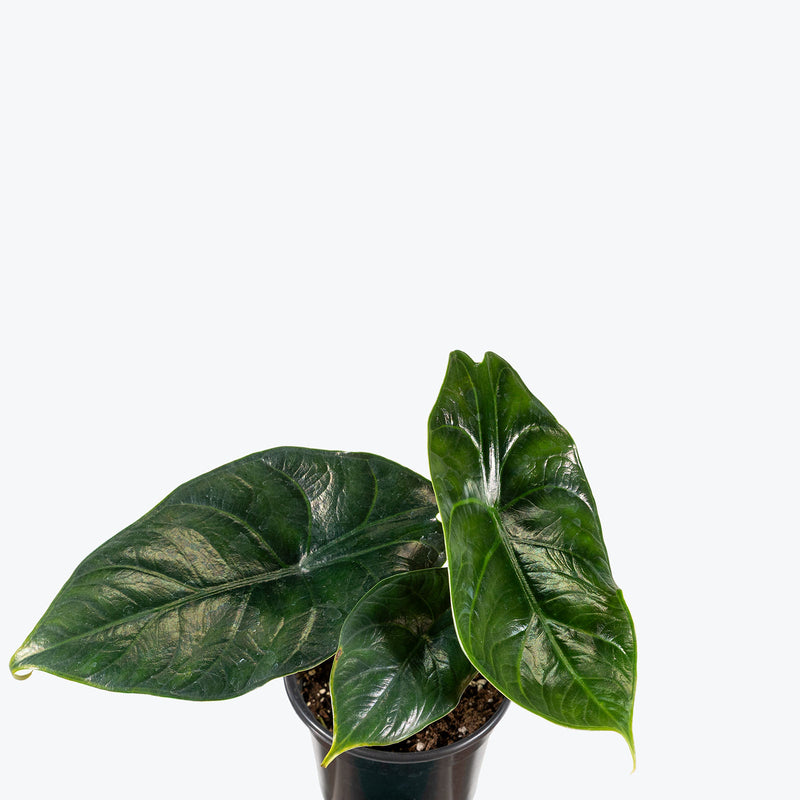
How to care for Alocasia Green Unicorn
Alocasia Green Unicorn should not be in a position to see the sun directly, although early morning or late evening sun is fine. Filtered sunlight through a sheer curtain is best and most homes are comprised primarily of indirect sunlight. The best spot for them is where they do not see the sun during the majority of the day but still get bright, indirect light.
Alocasia Green Unicorn will thrive in bright light, but also can tolerate medium light. A good medium-light place in your home would be in the middle of a room that has a regular size window. They can be placed anywhere between the middle of the room and the window. Remember that plants will grow based on how much light they receive.
Alocasia Green Unicorn needs to be watered when the top half of the soil is dry to the touch. That usually takes about 1 week in an average home environment. It will vary depending on the time of year, your environment and lighting conditions, but it's always safer to underwater or give the soil a check before you water again. Expect to water more often in brighter light and less often in lower light.
Alocasia Green Unicorn likes a high humidity environment, give them a mist daily or as often as possible. Alternatively, you can put them around a humidifier. Although they won't die if they don't receive enough humidity, their leaves may have some dry, crunchy, or yellow edges.
Clean the Alocasia Green Unicorn leaves regularly to remove dust and prevent pest infestations. Due to its compact growth habit, periodic pruning may be needed to maintain shape and encourage bushier growth. Be vigilant about pests such as spider mites and aphids, which are attracted to Alocasias.
Alocasia Green Unicorn is moderately toxic and can cause some adverse reactions when ingested so it is best to not let your pets eat it, which we advise for all plants in general. The severity of the reaction will depend on how much of the plant is ingested but, if you know your pet typically does not eat your plants, this plant will be suitable for your home..
Learn MoreView PlantAlocasia Hilo Beauty
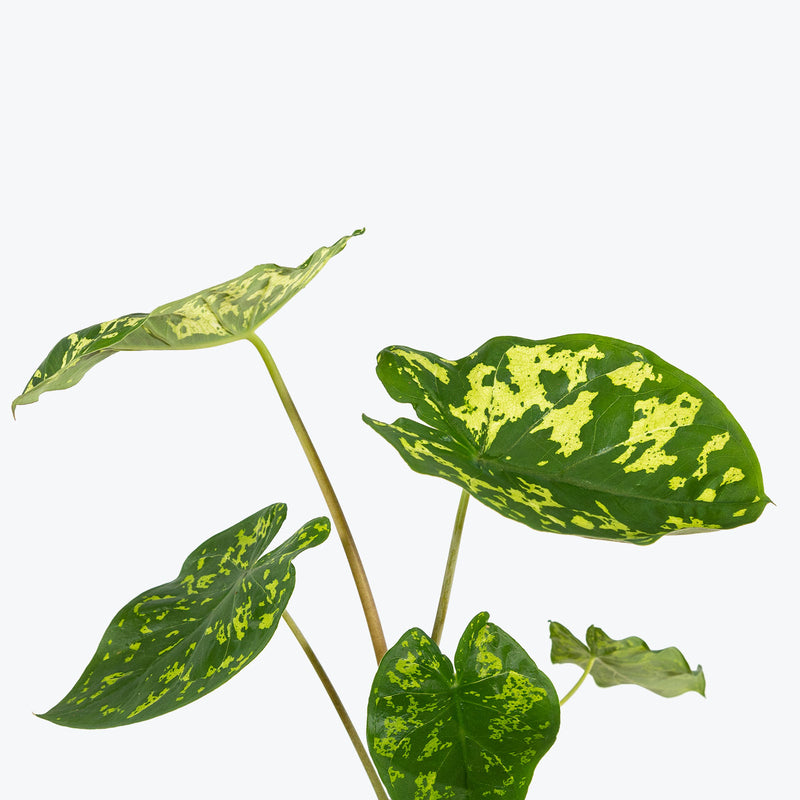
How to care for Alocasia Hilo Beauty
Alocasia Hilo Beauty should not be in a position to see the sun directly, although early morning or late evening sun is fine. Filtered sunlight through a sheer curtain is best and most homes are comprised primarily of indirect sunlight. The best spot for them is where they do not see the sun during the majority of the day but still get bright, indirect light.
Alocasia Hilo Beauty will thrive in bright light, but also can tolerate medium light. A good medium-light place in your home would be in the middle of a room that has a regular size window. They can be placed anywhere between the middle of the room and the window. Remember that plants will grow based on how much light they receive.
Alocasia Hilo Beauty needs to be watered when the top half of the soil is dry to the touch. That usually takes about 1 week in an average home environment. It will vary depending on the time of year, your environment and lighting conditions, but it's always safer to underwater or give the soil a check before you water again. Expect to water more often in brighter light and less often in lower light.
Alocasia Hilo Beauty likes a high humidity environment, give them a mist daily or as often as possible. Alternatively, you can put them around a humidifier. Although they won't die if they don't receive enough humidity, their leaves may have some dry, crunchy, or yellow edges.
Feed your Alocasia 'Hilo Beauty' every 4-6 weeks during the growing season with a diluted, balanced liquid fertilizer. Wipe the leaves regularly with a damp cloth to remove dust and help prevent pest infestations. Be cautious of common pests such as spider mites, mealybugs, and aphids. During the plant’s dormancy in the winter months, where its growth slows significantly and it is prone to leaf loss, move it to somewhere warm and bright, while reducing your watering until it starts growing again in spring. If it has become root bound, repot the plant in the spring by planting it into a pot one size up.
Alocasia Hilo Beauty is moderately toxic and can cause some adverse reactions when ingested so it is best to not let your pets eat it, which we advise for all plants in general. The severity of the reaction will depend on how much of the plant is ingested but, if you know your pet typically does not eat your plants, this plant will be suitable for your home..
Learn MoreView PlantAlocasia Jacklyn

How to care for Alocasia Jacklyn
Alocasia Jacklyn should not be in a position to see the sun directly, although early morning or late evening sun is fine. Filtered sunlight through a sheer curtain is best and most homes are comprised primarily of indirect sunlight. The best spot for them is where they do not see the sun during the majority of the day but still get bright, indirect light.
Alocasia Jacklyn will thrive in bright light, but also can tolerate medium light. A good medium-light place in your home would be in the middle of a room that has a regular size window. They can be placed anywhere between the middle of the room and the window. Remember that plants will grow based on how much light they receive.
Alocasia Jacklyn needs to be watered when the top half of the soil is dry to the touch. That usually takes about 1 week in an average home environment. It will vary depending on the time of year, your environment and lighting conditions, but it's always safer to underwater or give the soil a check before you water again. Expect to water more often in brighter light and less often in lower light.
Alocasia Jacklyn likes a high humidity environment, give them a mist daily or as often as possible. Alternatively, you can put them around a humidifier. Although they won't die if they don't receive enough humidity, their leaves may have some dry, crunchy, or yellow edges.
Fertilize your Alocasia 'Jacklyn' every 4-6 weeks during the growing season with a diluted, balanced liquid fertilizer to encourage growth. During the winter months, reduce fertilization as the plant's growth naturally slows. Clean the leaves regularly to allow the plant to photosynthesize efficiently and check for pests such as spider mites or aphids. During the Alocasia Jacklyn’s dormancy in the winter months, where its growth slows significantly and it is prone to leaf loss, move it to somewhere warm and bright, while reducing your watering until it starts growing again in spring. If it has become root bound, repot the plant in the spring by planting it into a pot one size up.
Alocasia Jacklyn is moderately toxic and can cause some adverse reactions when ingested so it is best to not let your pets eat it, which we advise for all plants in general. The severity of the reaction will depend on how much of the plant is ingested but, if you know your pet typically does not eat your plants, this plant will be suitable for your home..
Learn MoreView PlantAlocasia Lauterbachiana
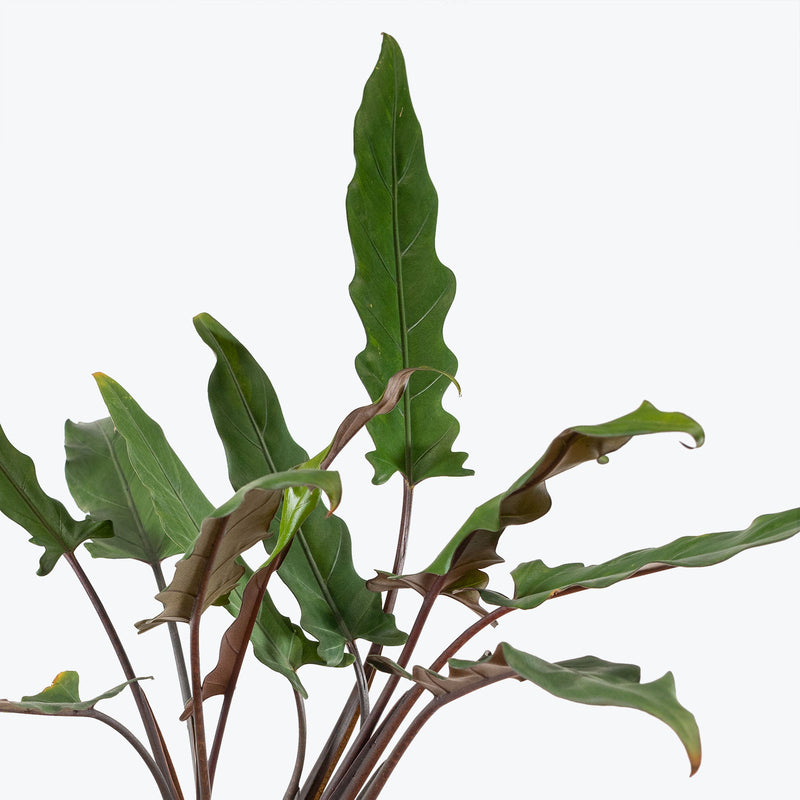
How to care for Alocasia Lauterbachiana
They should not be in a position to see the sun directly, although early morning or late evening sun is fine. Filtered sunlight through a sheer curtain is best and most homes are comprised primarily of indirect sunlight. The best spot for them is where they do not see the sun during the majority of the day but still get bright, indirect light, although some morning sun is ok.
They will thrive in bright light, but also can tolerate medium light. A good medium-light place in your home would be in the middle of a room that has a regular size window. They can be placed anywhere between the middle of the room and the window. Remember that plants will grow based on how much light they receive.
They need to be watered when the top half of the soil is dry to the touch. That usually takes about 1 week in an average home environment. It will vary depending on the time of year, your environment and lighting conditions, but it's always safer to underwater or give the soil a check before you water again. Expect to water more often in brighter light and less often in lower light.
They like a high humidity environment, give them a mist daily or as often as possible. Alternatively, you can put them around a humidifier. Although they won't die if they don't receive enough humidity, their leaves may have some dry, crunchy, or yellow edges.
During the plant’s dormancy in the winter months, where its growth slows significantly and it is prone to leaf loss, move it to somewhere warm and bright, while reducing your watering until it starts growing again in spring. If it has become root bound, repot the plant in the spring by planting it into a pot one size up.
This plant is moderately toxic and can cause some adverse reactions when ingested so it is best to not let your pets eat it, which we advise for all plants in general. The severity of the reaction will depend on how much of the plant is ingested but, if you know your pet typically does not eat your plants, this plant will be suitable for your home..
Learn MoreView PlantAlocasia Lauterbachiana Variegata
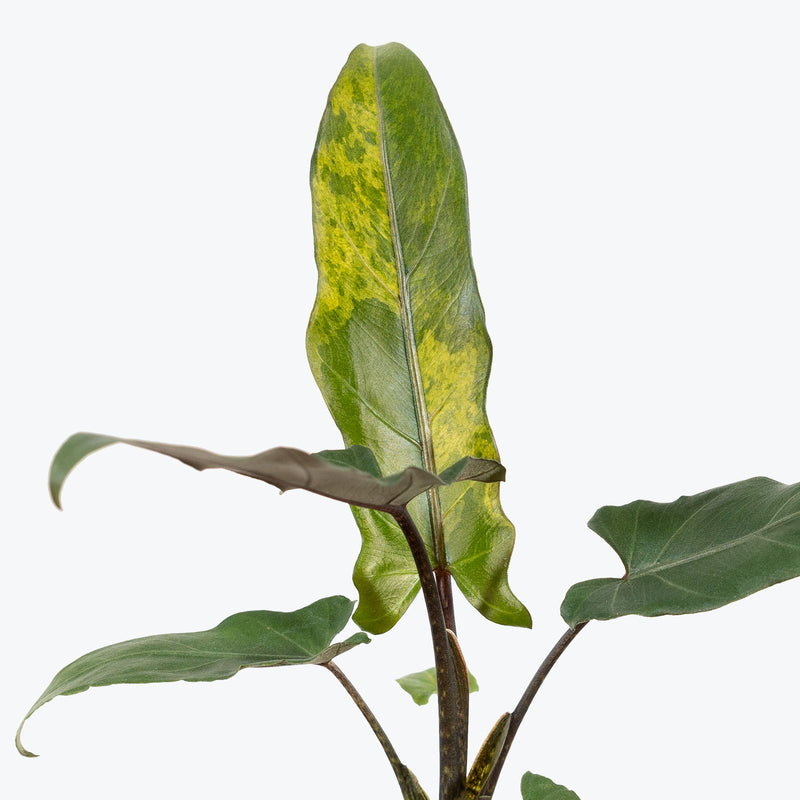
How to care for Alocasia Lauterbachiana Variegata
They should not be in a position to see the sun directly, although early morning or late evening sun is fine. Filtered sunlight through a sheer curtain is best and most homes are comprised primarily of indirect sunlight. The best spot for them is where they do not see the sun during the majority of the day but still get bright, indirect light, although some morning sun is ok.
They will thrive in bright light, but also can tolerate medium light. A good medium-light place in your home would be in the middle of a room that has a regular size window. They can be placed anywhere between the middle of the room and the window. Remember that plants will grow based on how much light they receive.
They need to be watered when the top half of the soil is dry to the touch. That usually takes about 1 week in an average home environment. It will vary depending on the time of year, your environment and lighting conditions, but it's always safer to underwater or give the soil a check before you water again. Expect to water more often in brighter light and less often in lower light.
They like a high humidity environment, give them a mist daily or as often as possible. Alternatively, you can put them around a humidifier. Although they won't die if they don't receive enough humidity, their leaves may have some dry, crunchy, or yellow edges.
During the plant’s dormancy in the winter months, where its growth slows significantly and it is prone to leaf loss, move it to somewhere warm and bright, while reducing your watering until it starts growing again in spring. If it has become root bound, repot the plant in the spring by planting it into a pot one size up.
This plant is moderately toxic and can cause some adverse reactions when ingested so it is best to not let your pets eat it, which we advise for all plants in general. The severity of the reaction will depend on how much of the plant is ingested but, if you know your pet typically does not eat your plants, this plant will be suitable for your home..
Learn MoreView PlantAlocasia Lemon Lime Gecko
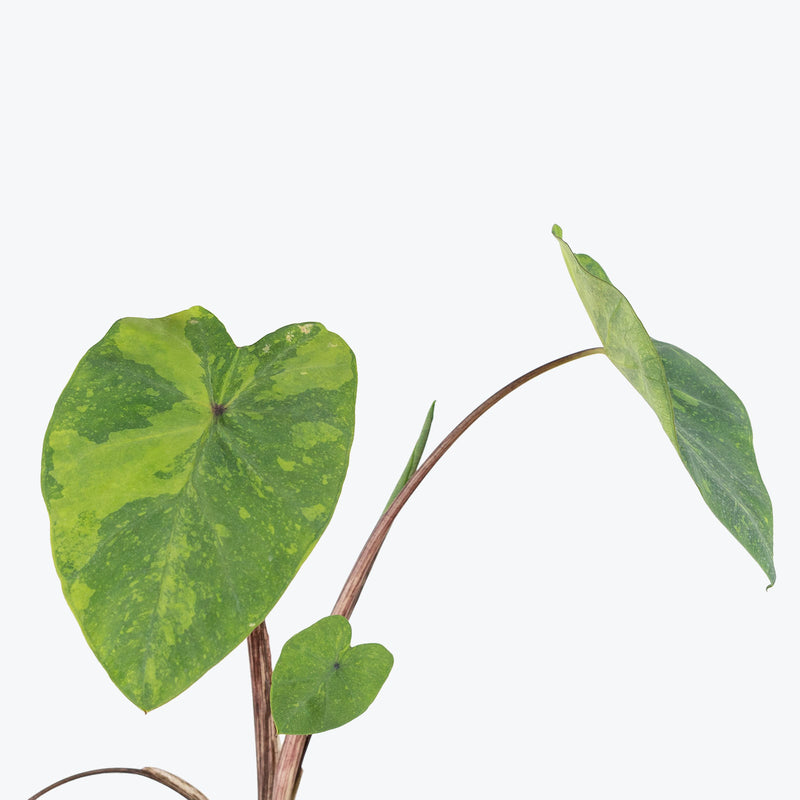
How to care for Alocasia Lemon Lime Gecko
They should not be in a position to see the sun directly, although early morning or late evening sun is fine. Filtered sunlight through a sheer curtain is best and most homes are comprised primarily of indirect sunlight. The best spot for them is where they do not see the sun during the majority of the day but still get bright, indirect light.
They will thrive in bright light, but also can tolerate medium light. A good medium-light place in your home would be in the middle of a room that has a regular size window. They can be placed anywhere between the middle of the room and the window. Remember that plants will grow based on how much light they receive.
They need to be watered when the top half of the soil is dry to the touch. That usually takes about 1 week in an average home environment. It will vary depending on the time of year, your environment and lighting conditions, but it's always safer to underwater or give the soil a check before you water again. Expect to water more often in brighter light and less often in lower light.
They like a high humidity environment, give them a mist daily or as often as possible. Alternatively, you can put them around a humidifier. Although they won't die if they don't receive enough humidity, their leaves may have some dry, crunchy, or yellow edges.
Make sure this plant is grown in well-draining soil to prevent water logging. Also, provide it with plenty of indirect sunlight for optimum growth. During the winter months, reduce watering but do not let the soil dry out completely.
This plant is moderately toxic and can cause some adverse reactions when ingested so it is best to not let your pets eat it, which we advise for all plants in general. The severity of the reaction will depend on how much of the plant is ingested but, if you know your pet typically does not eat your plants, this plant will be suitable for your home..
Learn MoreView PlantAlocasia Longiloba
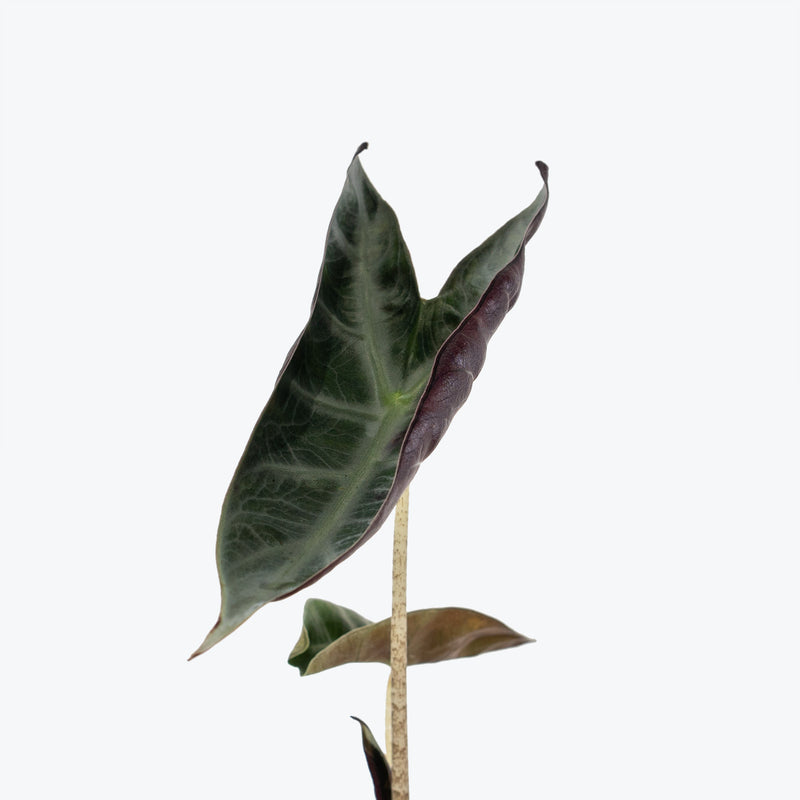
How to care for Alocasia Longiloba
Alocasia Longiloba should not be in a position to see the sun directly, although early morning or late evening sun is fine. Filtered sunlight through a sheer curtain is best and most homes are comprised primarily of indirect sunlight. The best spot for them is where they do not see the sun during the majority of the day but still get bright, indirect light.
Alocasia Longiloba will do best in bright light. A nice bright place inside your home would be on the window sill or a stool that is right next to a window, either with or without blinds, depending on if the plant can handle sun. Remember that plants will grow based on how much light they receive.
Alocasia Longiloba needs to be watered when the top half of the soil is dry to the touch. That usually takes about 1 week in an average home environment. It will vary depending on the time of year, your environment and lighting conditions, but it's always safer to underwater or give the soil a check before you water again. Expect to water more often in brighter light and less often in lower light.
Alocasia Longiloba likes a high humidity environment, give them a mist daily or as often as possible. Alternatively, you can put them around a humidifier. Although they won't die if they don't receive enough humidity, their leaves may have some dry, crunchy, or yellow edges.
Many Alocasias, including Alocasia Longiloba, may enter dormancy in cooler months, leading to reduced growth or some leaf drop. During the plant’s dormancy in the winter months, move it to somewhere warm and bright, while reducing your watering until it starts growing again in spring. If it has become root bound, repot the plant in the spring by planting it into a pot one size up.
Alocasia Longiloba is moderately toxic and can cause some adverse reactions when ingested so it is best to not let your pets eat it, which we advise for all plants in general. The severity of the reaction will depend on how much of the plant is ingested but, if you know your pet typically does not eat your plants, this plant will be suitable for your home..
Learn MoreView PlantAlocasia Longiloba Suhirmaniana Purple Vein
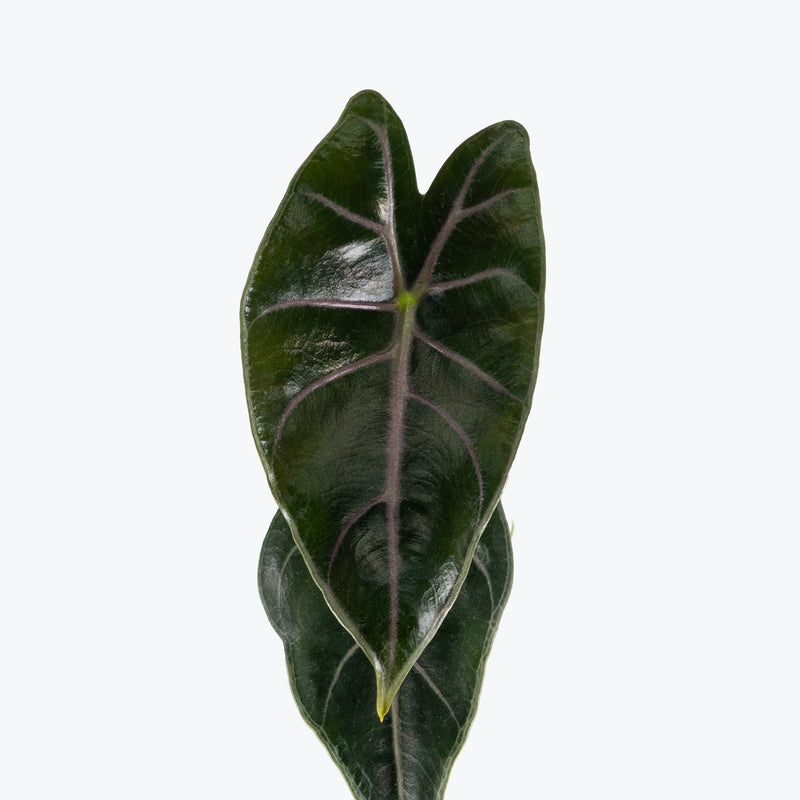
How to care for Alocasia Longiloba Suhirmaniana Purple Vein
Alocasia Longiloba Suhirmaniana Purple Vein should not be in a position to see the sun directly, although early morning or late evening sun is fine. Filtered sunlight through a sheer curtain is best and most homes are comprised primarily of indirect sunlight. The best spot for them is where they do not see the sun during the majority of the day but still get bright, indirect light.
Alocasia Longiloba Suhirmaniana Purple Vein will thrive in bright light, but also can tolerate medium light. A good medium-light place in your home would be in the middle of a room that has a regular size window. They can be placed anywhere between the middle of the room and the window. Remember that plants will grow based on how much light they receive.
Alocasia Longiloba Suhirmaniana Purple Vein needs to be watered when the top half of the soil is dry to the touch. That usually takes about 1 week in an average home environment. It will vary depending on the time of year, your environment and lighting conditions, but it's always safer to underwater or give the soil a check before you water again. Expect to water more often in brighter light and less often in lower light.
Alocasia Longiloba Suhirmaniana Purple Vein will do well in average humidity environments but will appreciate a little bit of humidity if provided, give them a mist daily or get a humidifier.
Alocasia Longiloba Suhirmaniana Purple Vein appreciates a rich, chunky, well-draining soil mix and regular watering while actively growing. Avoid overwatering, and reduce frequency in cooler months. Purple veining is more vivid in higher humidity and brighter light. Clean leaves regularly and rotate the pot to encourage even growth. Repot in spring if roots outgrow the container.
Alocasia Longiloba Suhirmaniana Purple Vein is moderately toxic and can cause some adverse reactions when ingested so it is best to not let your pets eat it, which we advise for all plants in general. The severity of the reaction will depend on how much of the plant is ingested but, if you know your pet typically does not eat your plants, this plant will be suitable for your home..
Learn MoreView PlantAlocasia Macrorrhiza Camouflage Variegata

How to care for Alocasia Macrorrhiza Camouflage Variegata
Alocasia Macrorrhiza Camouflage Variegata should not be in a position to see the sun directly, although early morning or late evening sun is fine. Filtered sunlight through a sheer curtain is best and most homes are comprised primarily of indirect sunlight. The best spot for them is where they do not see the sun during the majority of the day but still get bright, indirect light.
Alocasia Macrorrhiza Camouflage Variegata will do best in bright light. A nice bright place inside your home would be on the window sill or a stool that is right next to a window, either with or without blinds, depending on if the plant can handle sun. Remember that plants will grow based on how much light they receive.
Allow the top quarter of the soil to dry before watering again. This usually takes about 3 - 4 days in an average home environment. It will vary depending on the time of year, your environment and lighting conditions. Expect to water Alocasia Macrorrhiza Camouflage Variegata more often in brighter light and less often in lower light.
Alocasia Macrorrhiza Camouflage Variegata likes a high humidity environment, give them a mist daily or as often as possible. Alternatively, you can put them around a humidifier. Although they won't die if they don't receive enough humidity, their leaves may have some dry, crunchy, or yellow edges.
Alocasia Macrorrhiza Camouflage Variegata prefers a warm, humid environment and don't do well with sudden temperature changes. In winter, reduce fertilization as the plant's growth naturally slows. Provide a sturdy pot to support its substantial root system and large foliage. Regularly clean the leaves to remove dust and support efficient photosynthesis.
Alocasia Macrorrhiza Camouflage Variegata is moderately toxic and can cause some adverse reactions when ingested so it is best to not let your pets eat it, which we advise for all plants in general. The severity of the reaction will depend on how much of the plant is ingested but, if you know your pet typically does not eat your plants, this plant will be suitable for your home..
Learn MoreView PlantAlocasia Mandalay

How to care for Alocasia Mandalay
Alocasia Mandalay should not be in a position to see the sun directly, although early morning or late evening sun is fine. Filtered sunlight through a sheer curtain is best and most homes are comprised primarily of indirect sunlight. The best spot for them is where they do not see the sun during the majority of the day but still get bright, indirect light.
Alocasia Mandalay will thrive in bright light, but also can tolerate medium light. A good medium-light place in your home would be in the middle of a room that has a regular size window. They can be placed anywhere between the middle of the room and the window. Remember that plants will grow based on how much light they receive.
Alocasia Mandalay needs to be watered when the top half of the soil is dry to the touch. That usually takes about 1 week in an average home environment. It will vary depending on the time of year, your environment and lighting conditions, but it's always safer to underwater or give the soil a check before you water again. Expect to water more often in brighter light and less often in lower light.
Alocasia Mandalay likes a high humidity environment, give them a mist daily or as often as possible. Alternatively, you can put them around a humidifier. Although they won't die if they don't receive enough humidity, their leaves may have some dry, crunchy, or yellow edges.
Alocasia Mandalay appreciates warm, stable environments with high humidity and filtered light. Use a chunky, well-draining potting mix to prevent root rot and keep the soil slightly moist but never soggy. Wipe the leaves gently to keep their shine and remove dust. Fertilize lightly every 4–6 weeks during spring and summer to encourage steady growth. Like many Alocasias, Mandalay may occasionally enter dormancy in cooler months — reduce watering and resume care as new growth emerges.
Alocasia Mandalay is moderately toxic and can cause some adverse reactions when ingested so it is best to not let your pets eat it, which we advise for all plants in general. The severity of the reaction will depend on how much of the plant is ingested but, if you know your pet typically does not eat your plants, this plant will be suitable for your home..
Learn MoreView PlantAlocasia Mayan Mask

How to care for Alocasia Mayan Mask
Alocasia Mayan Mask should not be in a position to see the sun directly, although early morning or late evening sun is fine. Filtered sunlight through a sheer curtain is best and most homes are comprised primarily of indirect sunlight. The best spot for them is where they do not see the sun during the majority of the day but still get bright, indirect light.
Alocasia Mayan Mask will thrive in bright light, but also can tolerate medium light. A good medium-light place in your home would be in the middle of a room that has a regular size window. They can be placed anywhere between the middle of the room and the window. Remember that plants will grow based on how much light they receive.
Alocasia Mayan Mask needs to be watered when the top half of the soil is dry to the touch. That usually takes about 1 week in an average home environment. It will vary depending on the time of year, your environment and lighting conditions, but it's always safer to underwater or give the soil a check before you water again. Expect to water more often in brighter light and less often in lower light.
Alocasia Mayan Mask will do well in average humidity environments but will appreciate a little bit of humidity if provided, give them a mist daily or get a humidifier.
Fertilize Alocasia Mayan Mask every 4-6 weeks during the growing season with a diluted liquid fertilizer. Reduce feeding in the winter months when growth slows. The plant can be sensitive to temperature changes and drafts, so keep it in a stable environment away from cold windows and air conditioning vents.
Alocasia Mayan Mask is moderately toxic and can cause some adverse reactions when ingested so it is best to not let your pets eat it, which we advise for all plants in general. The severity of the reaction will depend on how much of the plant is ingested but, if you know your pet typically does not eat your plants, this plant will be suitable for your home..
Learn MoreView PlantAlocasia Melo
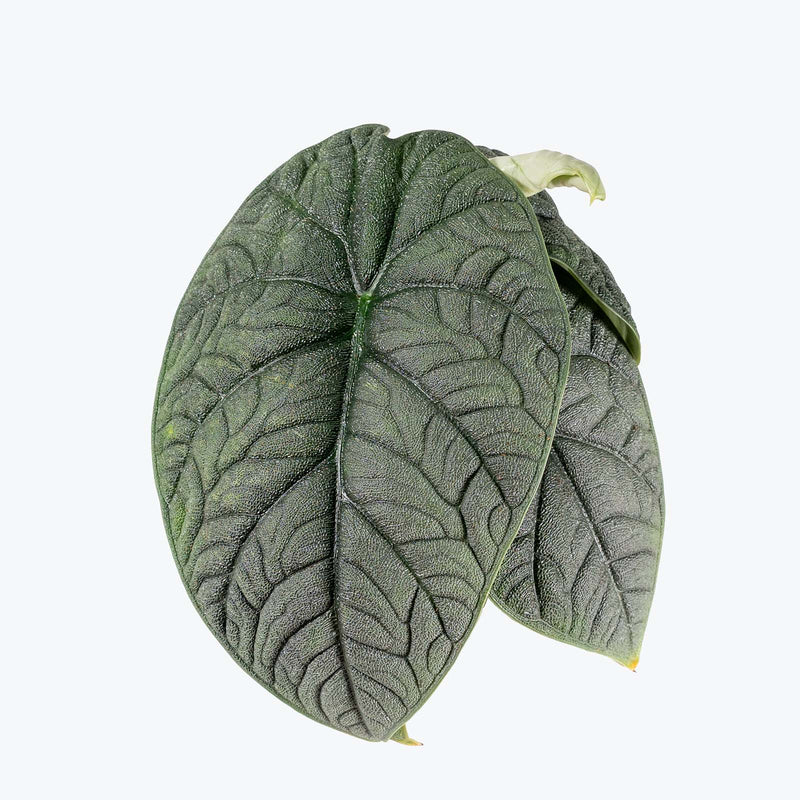
How to care for Alocasia Melo
They should not be in a position to see the sun directly, although early morning or late evening sun is fine. Filtered sunlight through a sheer curtain is best and most homes are comprised primarily of indirect sunlight. The best spot for them is where they do not see the sun during the majority of the day but still get bright, indirect light.
They will thrive in bright light, but also can tolerate medium light. A good medium-light place in your home would be in the middle of a room that has a regular size window. They can be placed anywhere between the middle of the room and the window. Remember that plants will grow based on how much light they receive.
They need to be watered when the top half of the soil is dry to the touch. That usually takes about 1 week in an average home environment. It will vary depending on the time of year, your environment and lighting conditions, but it's always safer to underwater or give the soil a check before you water again. Expect to water more often in brighter light and less often in lower light.
They like a high humidity environment, give them a mist daily or as often as possible. Alternatively, you can put them around a humidifier. Although they won't die if they don't receive enough humidity, their leaves may have some dry, crunchy, or yellow edges.
Alocasia Melo prefers consistently warm, humid conditions and does best in a chunky, well-draining soil mix rich in organic matter. Avoid letting it sit in wet soil, as its thick roots are prone to rot. Mist regularly or use a pebble tray or humidifier, especially during dry seasons. Fertilize lightly every 4–6 weeks during the growing season. This species may slow or go dormant in cooler months — simply reduce watering and resume when new growth appears. Rotate occasionally to maintain even growth.
This plant is moderately toxic and can cause some adverse reactions when ingested so it is best to not let your pets eat it, which we advise for all plants in general. The severity of the reaction will depend on how much of the plant is ingested but, if you know your pet typically does not eat your plants, this plant will be suitable for your home..
Learn MoreView PlantAlocasia Metalhead

How to care for Alocasia Metalhead
They should not be in a position to see the sun directly, although early morning or late evening sun is fine. Filtered sunlight through a sheer curtain is best and most homes are comprised primarily of indirect sunlight. The best spot for them is where they do not see the sun during the majority of the day but still get bright, indirect light.
They will thrive in bright light, but also can tolerate medium light. A good medium-light place in your home would be in the middle of a room that has a regular size window. They can be placed anywhere between the middle of the room and the window. Remember that plants will grow based on how much light they receive.
They need to be watered when the top half of the soil is dry to the touch. That usually takes about 1 week in an average home environment. It will vary depending on the time of year, your environment and lighting conditions, but it's always safer to underwater or give the soil a check before you water again. Expect to water more often in brighter light and less often in lower light.
They will do well in average humidity environments but will appreciate a little bit of humidity if provided, give them a mist daily or get a humidifier.
Like most Alocasias, 'Metalhead' prefers a rich, well-draining soil. Ensure the plant is fed regularly during the growing season with a balanced houseplant fertilizer. Keep an eye on the leaves – if they start to droop, this could indicate the plant is being overwatered.
This plant is moderately toxic and can cause some adverse reactions when ingested so it is best to not let your pets eat it, which we advise for all plants in general. The severity of the reaction will depend on how much of the plant is ingested but, if you know your pet typically does not eat your plants, this plant will be suitable for your home..
Learn MoreView PlantAlocasia Mickey Mouse
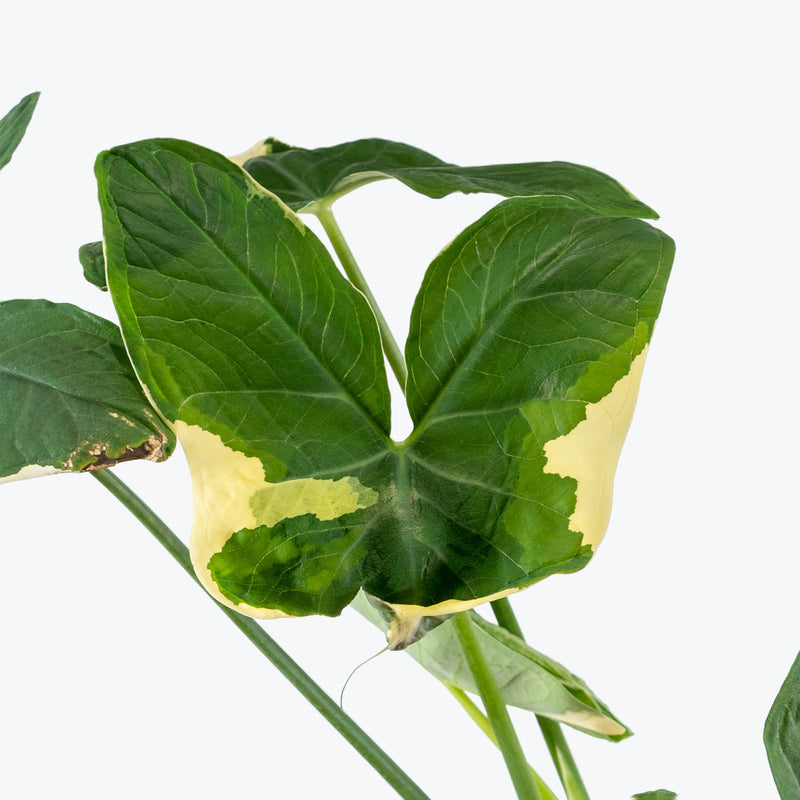
How to care for Alocasia Mickey Mouse
They should not be in a position to see the sun directly, although early morning or late evening sun is fine. Filtered sunlight through a sheer curtain is best and most homes are comprised primarily of indirect sunlight. The best spot for them is where they do not see the sun during the majority of the day but still get bright, indirect light.
They will do best in bright light. A nice bright place inside your home would be on the window sill or a stool that is right next to a window, either with or without blinds, depending on if the plant can handle sun. Remember that plants will grow based on how much light they receive.
They need to be watered when the top half of the soil is dry to the touch. That usually takes about 1 week in an average home environment. It will vary depending on the time of year, your environment and lighting conditions, but it's always safer to underwater or give the soil a check before you water again. Expect to water more often in brighter light and less often in lower light.
They like a high humidity environment, give them a mist daily or as often as possible. Alternatively, you can put them around a humidifier. Although they won't die if they don't receive enough humidity, their leaves may have some dry, crunchy, or yellow edges.
During the plant’s dormancy in the winter months, where its growth slows significantly and it is prone to leaf loss. If it has become root bound, repot the plant in the spring by planting it into a pot one size up.
This plant is moderately toxic and can cause some adverse reactions when ingested so it is best to not let your pets eat it, which we advise for all plants in general. The severity of the reaction will depend on how much of the plant is ingested but, if you know your pet typically does not eat your plants, this plant will be suitable for your home..
Learn MoreView PlantAlocasia Nairobi Nights
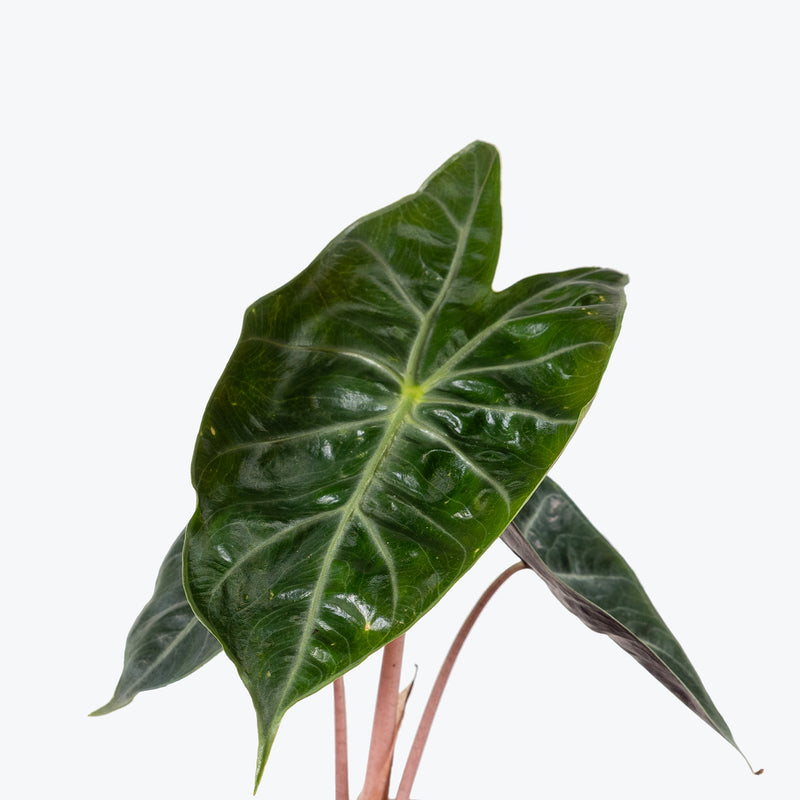
How to care for Alocasia Nairobi Nights
Alocasia Nairobi Nights should not be in a position to see the sun directly, although early morning or late evening sun is fine. Filtered sunlight through a sheer curtain is best and most homes are comprised primarily of indirect sunlight. The best spot for them is where they do not see the sun during the majority of the day but still get bright, indirect light.
Alocasia Nairobi Nights will thrive in bright light, but also can tolerate medium light. A good medium-light place in your home would be in the middle of a room that has a regular size window. They can be placed anywhere between the middle of the room and the window. Remember that plants will grow based on how much light they receive.
Alocasia Nairobi Nights needs to be watered when the top half of the soil is dry to the touch. That usually takes about 1 week in an average home environment. It will vary depending on the time of year, your environment and lighting conditions, but it's always safer to underwater or give the soil a check before you water again. Expect to water more often in brighter light and less often in lower light.
Alocasia Nairobi Nights will do well in average humidity environments but will appreciate a little bit of humidity if provided, give them a mist daily or get a humidifier.
Alocasia Nairobi Nights prefers a well-aerated, chunky soil mix and good drainage. Avoid cold drafts and sudden temperature changes. Wipe leaves gently to remove dust and keep them glossy. Dormancy in winter is normal — reduce watering and expect slower growth.
Alocasia Nairobi Nights is moderately toxic and can cause some adverse reactions when ingested so it is best to not let your pets eat it, which we advise for all plants in general. The severity of the reaction will depend on how much of the plant is ingested but, if you know your pet typically does not eat your plants, this plant will be suitable for your home..
Learn MoreView PlantAlocasia Nebula

How to care for Alocasia Nebula
Alocasia Nebula should not be in a position to see the sun directly, although early morning or late evening sun is fine. Filtered sunlight through a sheer curtain is best and most homes are comprised primarily of indirect sunlight. The best spot for them is where they do not see the sun during the majority of the day but still get bright, indirect light.
Alocasia Nebula will thrive in bright light, but also can tolerate medium light. A good medium-light place in your home would be in the middle of a room that has a regular size window. They can be placed anywhere between the middle of the room and the window. Remember that plants will grow based on how much light they receive.
Alocasia Nebula needs to be watered when the top half of the soil is dry to the touch. That usually takes about 1 week in an average home environment. It will vary depending on the time of year, your environment and lighting conditions, but it's always safer to underwater or give the soil a check before you water again. Expect to water more often in brighter light and less often in lower light.
Alocasia Nebula likes a high humidity environment, give them a mist daily or as often as possible. Alternatively, you can put them around a humidifier. Although they won't die if they don't receive enough humidity, their leaves may have some dry, crunchy, or yellow edges.
During Alocasia Nebula’s dormancy in the winter months, where its growth slows significantly and it is prone to leaf loss, move it to somewhere warm and bright, while reducing your watering until it starts growing again in spring. If it has become root bound, repot the plant in the spring by planting it into a pot one size up.
Alocasia Nebula is moderately toxic and can cause some adverse reactions when ingested so it is best to not let your pets eat it, which we advise for all plants in general. The severity of the reaction will depend on how much of the plant is ingested but, if you know your pet typically does not eat your plants, this plant will be suitable for your home..
Learn MoreView PlantAlocasia Nobilis
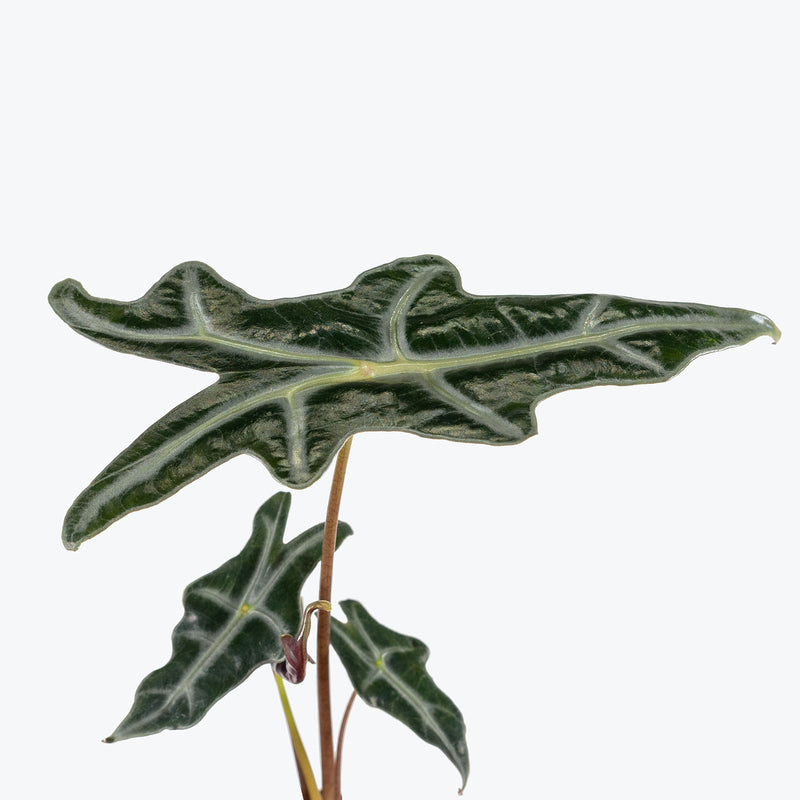
How to care for Alocasia Nobilis
Alocasia Nobilis should not be in a position to see the sun directly, although early morning or late evening sun is fine. Filtered sunlight through a sheer curtain is best and most homes are comprised primarily of indirect sunlight. The best spot for them is where they do not see the sun during the majority of the day but still get bright, indirect light.
Alocasia Nobilis will do best in bright light. A nice bright place inside your home would be on the window sill or a stool that is right next to a window, either with or without blinds, depending on if the plant can handle sun. Remember that plants will grow based on how much light they receive.
Alocasia Nobilis needs to be watered when the top half of the soil is dry to the touch. That usually takes about 1 week in an average home environment. It will vary depending on the time of year, your environment and lighting conditions, but it's always safer to underwater or give the soil a check before you water again. Expect to water more often in brighter light and less often in lower light.
Alocasia Nobilis likes a high humidity environment, give them a mist daily or as often as possible. Alternatively, you can put them around a humidifier. Although they won't die if they don't receive enough humidity, their leaves may have some dry, crunchy, or yellow edges.
Many Alocasias, including Alocasia Nobilis, may enter dormancy in cooler months, leading to reduced growth or some leaf drop. During the plant’s dormancy in the winter months, move it to somewhere warm and bright, while reducing your watering until it starts growing again in spring. If it has become root bound, repot the plant in the spring by planting it into a pot one size up.
Alocasia Nobilis is moderately toxic and can cause some adverse reactions when ingested so it is best to not let your pets eat it, which we advise for all plants in general. The severity of the reaction will depend on how much of the plant is ingested but, if you know your pet typically does not eat your plants, this plant will be suitable for your home..
Learn MoreView PlantAlocasia Odora
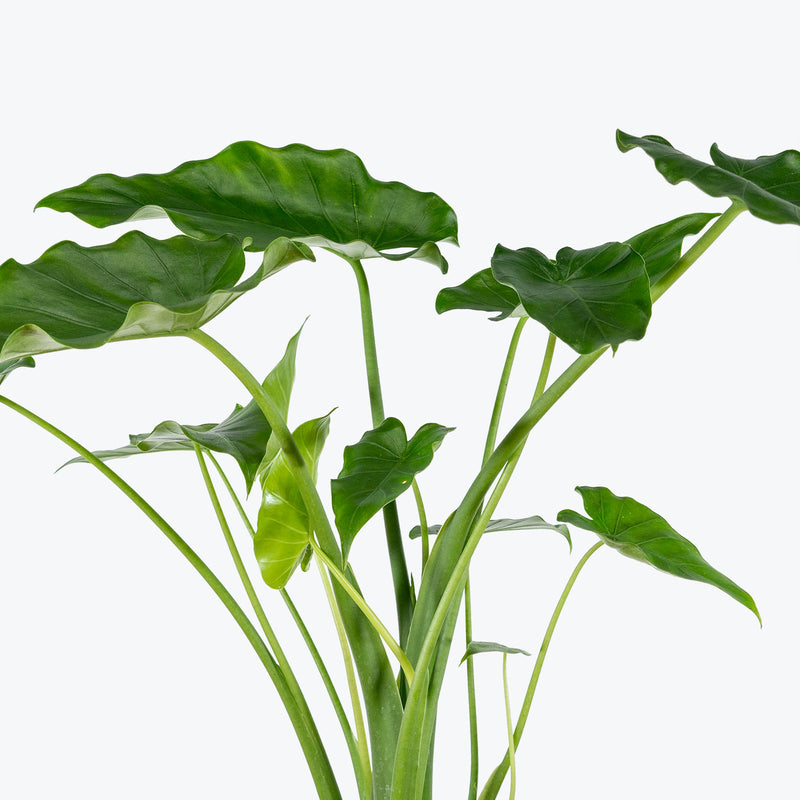
How to care for Alocasia Odora
They enjoy some direct sun, but they'll also do well in bright, indirect light. It is best to place this plant somewhere where it will receive some nice morning sun, or a couple hours of afternoon sun, and then indirect light the rest of the day.
They will thrive in bright light, but also can tolerate medium light. A good medium-light place in your home would be in the middle of a room that has a regular size window. They can be placed anywhere between the middle of the room and the window. Remember that plants will grow based on how much light they receive.
They need to be watered when the top half of the soil is dry to the touch. That usually takes about 1 week in an average home environment. It will vary depending on the time of year, your environment and lighting conditions, but it's always safer to underwater or give the soil a check before you water again. Expect to water more often in brighter light and less often in lower light.
They like a high humidity environment, give them a mist daily or as often as possible. Alternatively, you can put them around a humidifier. Although they won't die if they don't receive enough humidity, their leaves may have some dry, crunchy, or yellow edges.
Ensure that your Alocasia Odora is planted in well-draining soil to avoid water-logged conditions. It's also a good idea to feed it with a balanced fertilizer every two to three weeks during the growing season for optimum growth.
This plant is moderately toxic and can cause some adverse reactions when ingested so it is best to not let your pets eat it, which we advise for all plants in general. The severity of the reaction will depend on how much of the plant is ingested but, if you know your pet typically does not eat your plants, this plant will be suitable for your home..
Learn MoreView PlantAlocasia Odora Variegata Yellow
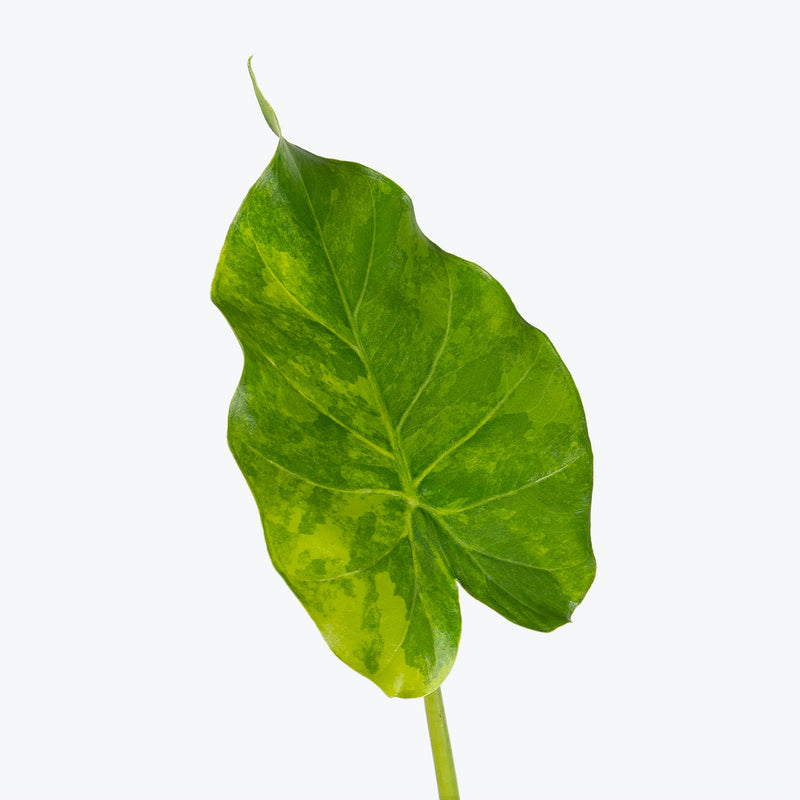
How to care for Alocasia Odora Variegata Yellow
Alocasia Odora Variegata Yellow should not be in a position to see the sun directly, although early morning or late evening sun is fine. Filtered sunlight through a sheer curtain is best and most homes are comprised primarily of indirect sunlight. The best spot for them is where they do not see the sun during the majority of the day but still get bright, indirect light.
Alocasia Odora Variegata Yellow will thrive in bright light, but also can tolerate medium light. A good medium-light place in your home would be in the middle of a room that has a regular size window. They can be placed anywhere between the middle of the room and the window. Remember that plants will grow based on how much light they receive.
Alocasia Odora Variegata Yellow needs to be watered when the top half of the soil is dry to the touch. That usually takes about 1 week in an average home environment. It will vary depending on the time of year, your environment and lighting conditions, but it's always safer to underwater or give the soil a check before you water again. Expect to water more often in brighter light and less often in lower light.
Alocasia Odora Variegata Yellow likes a high humidity environment, give them a mist daily or as often as possible. Alternatively, you can put them around a humidifier. Although they won't die if they don't receive enough humidity, their leaves may have some dry, crunchy, or yellow edges.
To maintain vibrant variegation, place your Alocasia Odora Variegata Yellow in bright, indirect light and rotate regularly for even growth. Use a well-draining soil mix, and ensure the pot has good drainage to prevent soggy roots. Fertilize every 4–6 weeks during the growing season with a balanced fertilizer. This plant prefers warmth and high humidity, so avoid drafty areas. Occasionally wipe down leaves to keep them dust-free and gleaming.
Alocasia Odora Variegata Yellow is moderately toxic and can cause some adverse reactions when ingested so it is best to not let your pets eat it, which we advise for all plants in general. The severity of the reaction will depend on how much of the plant is ingested but, if you know your pet typically does not eat your plants, this plant will be suitable for your home..
Learn MoreView PlantAlocasia Pink Dragon

How to care for Alocasia Pink Dragon
They should not be in a position to see the sun directly, although early morning or late evening sun is fine. Filtered sunlight through a sheer curtain is best and most homes are comprised primarily of indirect sunlight. The best spot for them is where they do not see the sun during the majority of the day but still get bright, indirect light.
They will thrive in bright light, but also can tolerate medium light. A good medium-light place in your home would be in the middle of a room that has a regular size window. They can be placed anywhere between the middle of the room and the window. Remember that plants will grow based on how much light they receive.
They need to be watered when the top half of the soil is dry to the touch. That usually takes about 1 week in an average home environment. It will vary depending on the time of year, your environment and lighting conditions, but it's always safer to underwater or give the soil a check before you water again. Expect to water more often in brighter light and less often in lower light.
They like a high humidity environment, give them a mist daily or as often as possible. Alternatively, you can put them around a humidifier. Although they won't die if they don't receive enough humidity, their leaves may have some dry, crunchy, or yellow edges.
This plant prefers a warm, humid, bright location, avoiding all drafts and any sudden temperature changes. They will go through a dormant period, usually in the winter months, and during this period, keep your plant in a warm location and reduce the watering (but do not allow the soil to completely dry out). Your plant should perk back up in the spring.
This plant is moderately toxic and can cause some adverse reactions when ingested so it is best to not let your pets eat it, which we advise for all plants in general. The severity of the reaction will depend on how much of the plant is ingested but, if you know your pet typically does not eat your plants, this plant will be suitable for your home..
Learn MoreView PlantAlocasia Pink Passion
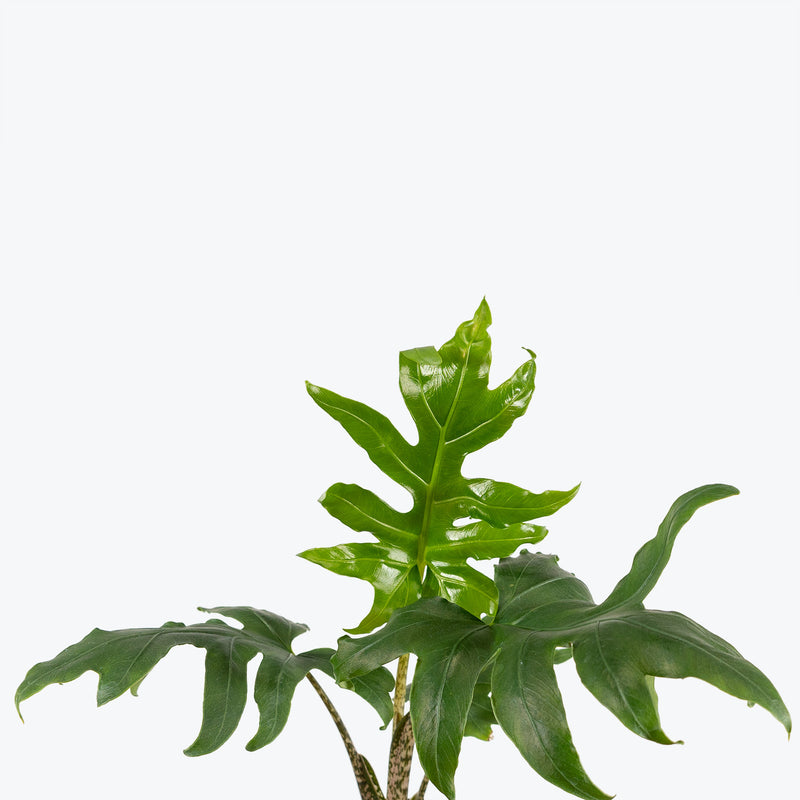
How to care for Alocasia Pink Passion
Alocasia Pink Passion should not be in a position to see the sun directly, although early morning or late evening sun is fine. Filtered sunlight through a sheer curtain is best and most homes are comprised primarily of indirect sunlight. The best spot for them is where they do not see the sun during the majority of the day but still get bright, indirect light.
Alocasia Pink Passion will thrive in bright light, but also can tolerate medium light. A good medium-light place in your home would be in the middle of a room that has a regular size window. They can be placed anywhere between the middle of the room and the window. Remember that plants will grow based on how much light they receive.
Alocasia Pink Passion needs to be watered when the top half of the soil is dry to the touch. That usually takes about 1 week in an average home environment. It will vary depending on the time of year, your environment and lighting conditions, but it's always safer to underwater or give the soil a check before you water again. Expect to water more often in brighter light and less often in lower light.
Alocasia Pink Passion likes a high humidity environment, give them a mist daily or as often as possible. Alternatively, you can put them around a humidifier. Although they won't die if they don't receive enough humidity, their leaves may have some dry, crunchy, or yellow edges.
Alocasia Pink Passion prefers a warm, humid, bright location, avoiding all drafts and any sudden temperature changes. They will go through a dormant period, usually in the winter months, and during this period, keep your plant in a warm location and reduce the watering (but do not allow the soil to completely dry out). Your plant should perk back up in the spring.
Alocasia Pink Passion is moderately toxic and can cause some adverse reactions when ingested so it is best to not let your pets eat it, which we advise for all plants in general. The severity of the reaction will depend on how much of the plant is ingested but, if you know your pet typically does not eat your plants, this plant will be suitable for your home..
Learn MoreView PlantAlocasia Polly
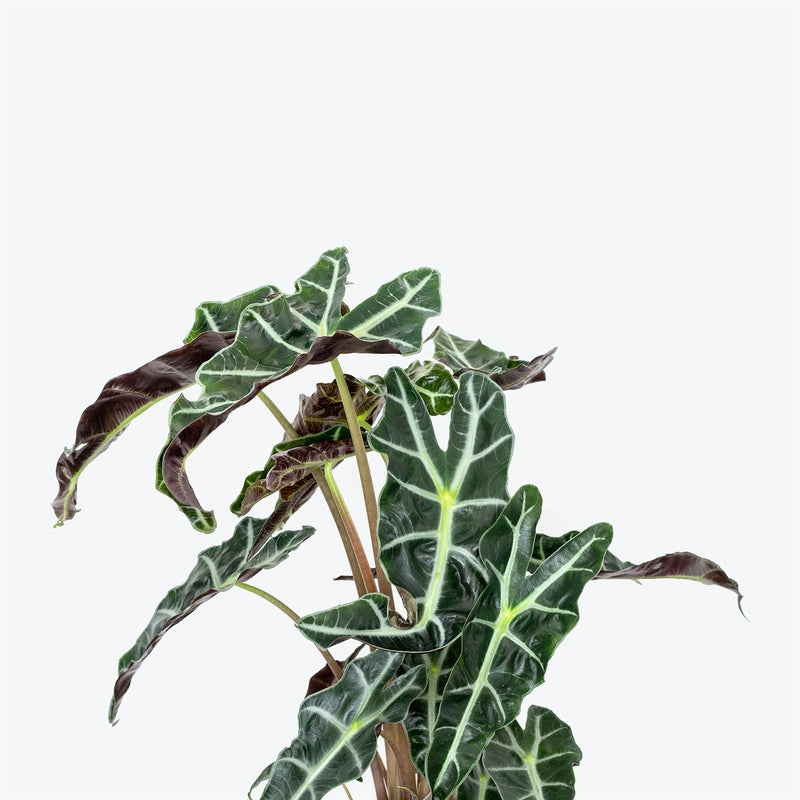
How to care for Alocasia Polly
Alocasia Polly should not be in a position to see the sun directly, although early morning or late evening sun is fine. Filtered sunlight through a sheer curtain is best and most homes are comprised primarily of indirect sunlight. The best spot for them is where they do not see the sun during the majority of the day but still get bright, indirect light.
Alocasia Polly will thrive in bright light, but also can tolerate medium light. A good medium-light place in your home would be in the middle of a room that has a regular size window. They can be placed anywhere between the middle of the room and the window. Remember that plants will grow based on how much light they receive.
Alocasia Polly needs to be watered when the top half of the soil is dry to the touch. That usually takes about 1 week in an average home environment. It will vary depending on the time of year, your environment and lighting conditions, but it's always safer to underwater or give the soil a check before you water again.
Alocasia Polly likes a high humidity environment, give them a mist daily or as often as possible. Alternatively, you can put them around a humidifier. Although they won't die if they don't receive enough humidity, their leaves may have some dry, crunchy, or yellow edges.
During Alocasia Polly’s dormancy in the winter months, where its growth slows significantly and it is prone to leaf loss, move it to somewhere warm and bright, while reducing your watering until it starts growing again in spring. If it has become root bound, repot the plant in the spring by planting it into a pot one size up. Clean the leaves regularly to remove dust and enhance the plant's ability to photosynthesize efficiently.
Alocasia Polly is moderately toxic and can cause some adverse reactions when ingested so it is best to not let your pets eat it, which we advise for all plants in general. The severity of the reaction will depend on how much of the plant is ingested but, if you know your pet typically does not eat your plants, this plant will be suitable for your home..
Learn MoreView PlantAlocasia Portei
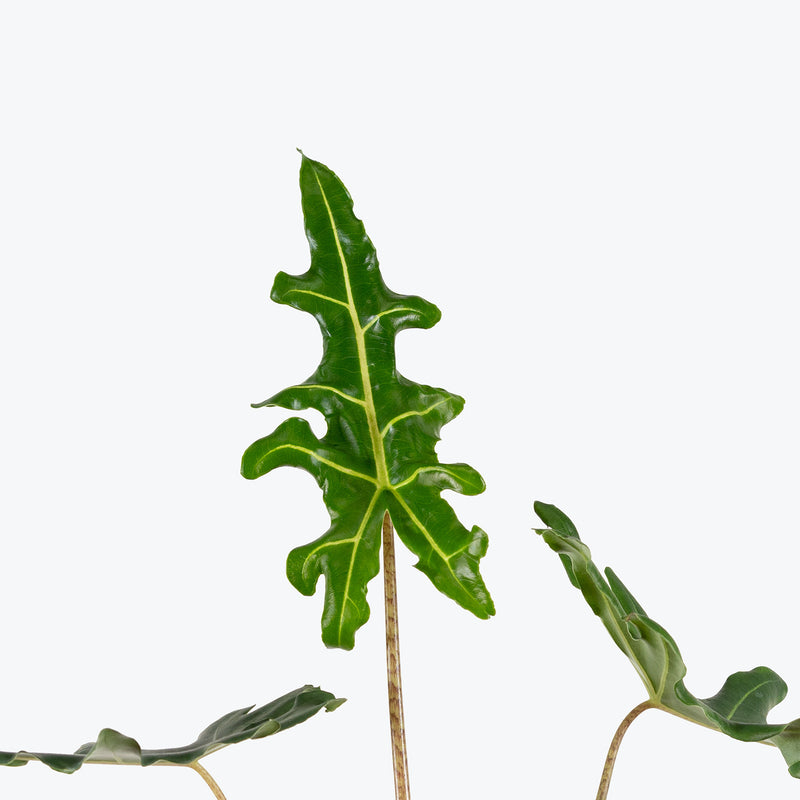
How to care for Alocasia Portei
Alocasia Portei should not be in a position to see the sun directly, although early morning or late evening sun is fine. Filtered sunlight through a sheer curtain is best and most homes are comprised primarily of indirect sunlight. The best spot for them is where they do not see the sun during the majority of the day but still get bright, indirect light.
Alocasia Portei will do best in bright light. A nice bright place inside your home would be on the window sill or a stool that is right next to a window, either with or without blinds, depending on if the plant can handle sun. Remember that plants will grow based on how much light they receive.
Alocasia Portei needs to be watered when the top half of the soil is dry to the touch. That usually takes about 1 week in an average home environment. It will vary depending on the time of year, your environment and lighting conditions, but it's always safer to underwater or give the soil a check before you water again. Expect to water more often in brighter light and less often in lower light.
Alocasia Portei likes a high humidity environment, give them a mist daily or as often as possible. Alternatively, you can put them around a humidifier. Although they won't die if they don't receive enough humidity, their leaves may have some dry, crunchy, or yellow edges.
Many Alocasias, including Alocasia Nobilis, may enter dormancy in cooler months, leading to reduced growth or some leaf drop. During the plant’s dormancy in the winter months, move it to somewhere warm and bright, while reducing your watering until it starts growing again in spring. Periodically wipe the leaves with a damp cloth to remove dust and support efficient photosynthesis. Due to its potential size, ensure that it has ample space to grow, both in height and spread.
Alocasia Portei is moderately toxic and can cause some adverse reactions when ingested so it is best to not let your pets eat it, which we advise for all plants in general. The severity of the reaction will depend on how much of the plant is ingested but, if you know your pet typically does not eat your plants, this plant will be suitable for your home..
Learn MoreView PlantAlocasia Portora
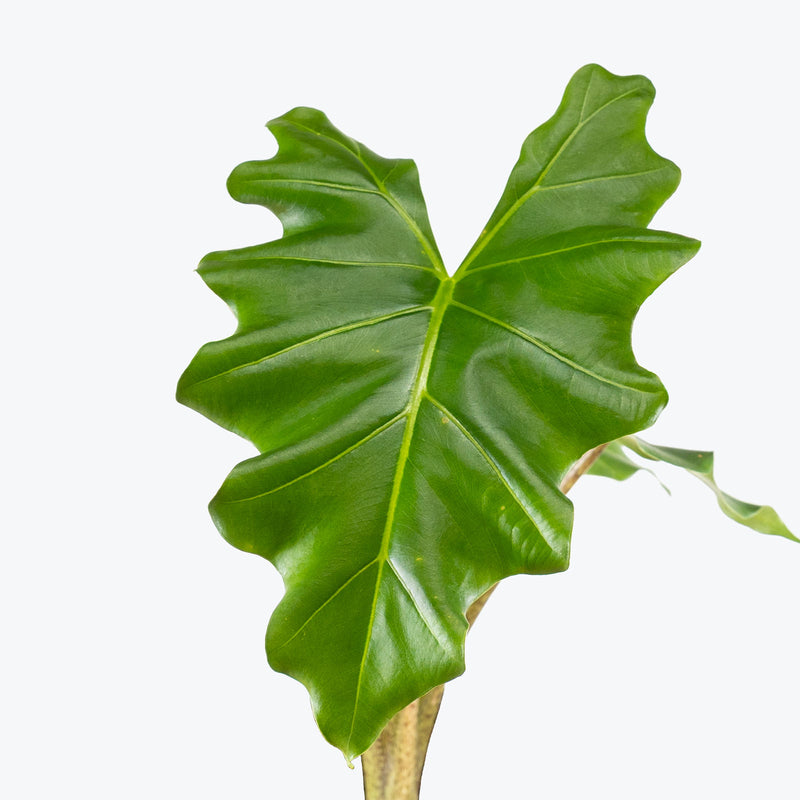
How to care for Alocasia Portora
Alocasia Portora enjoys some direct sun, but they'll also do well in bright, indirect light. It is best to place this plant somewhere where it will receive some nice morning sun, or a couple hours of afternoon sun, and then indirect light for the rest of the day.
Alocasia Portora will thrive in bright light, but also can tolerate medium light. A good medium-light place in your home would be in the middle of a room that has a regular size window. They can be placed anywhere between the middle of the room and the window. Remember that plants will grow based on how much light they receive.
Alocasia Portora needs to be watered when the top half of the soil is dry to the touch. That usually takes about 1 week in an average home environment. It will vary depending on the time of year, your environment and lighting conditions, but it's always safer to underwater or give the soil a check before you water again. Expect to water more often in brighter light and less often in lower light.
Alocasia Portora will do well in average humidity environments but will appreciate a little bit of humidity if provided, give them a mist daily or get a humidifier.
Alocasia Portora loves warmth, consistent moisture, and space to grow. Use a rich, well-draining soil mix and water regularly during the growing season, allowing the top half of the soil to dry between waterings. Rotate the pot occasionally to encourage upright, symmetrical growth. Fertilize every 4–6 weeks in spring and summer with a balanced fertilizer. If grown outdoors, protect from strong wind that could damage its large leaves. In cooler climates, bring it indoors when temperatures drop, as it is not frost-tolerant.
Alocasia Portora is moderately toxic and can cause some adverse reactions when ingested so it is best to not let your pets eat it, which we advise for all plants in general. The severity of the reaction will depend on how much of the plant is ingested but, if you know your pet typically does not eat your plants, this plant will be suitable for your home..
Learn MoreView PlantAlocasia Pseudo Sanderiana
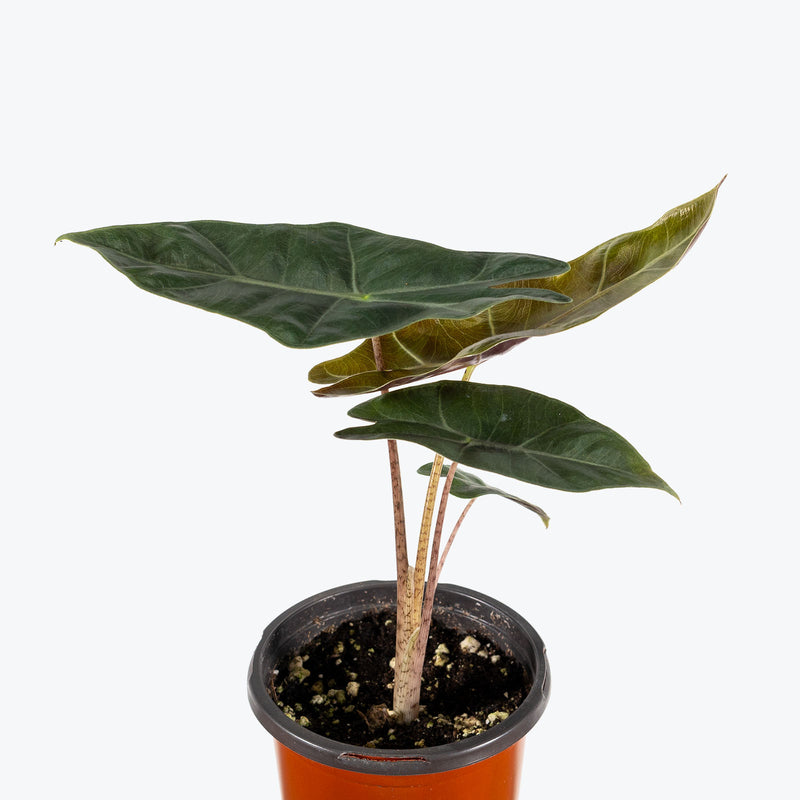
How to care for Alocasia Pseudo Sanderiana
They should not be in a position to see the sun directly, although early morning or late evening sun is fine. Filtered sunlight through a sheer curtain is best and most homes are comprised primarily of indirect sunlight. The best spot for them is where they do not see the sun during the majority of the day but still get bright, indirect light.
They will do best in bright light. A nice bright place inside your home would be on the window sill or a stool that is right next to a window, either with or without blinds, depending on if the plant can handle sun. Remember that plants will grow based on how much light they receive.
They need to be watered when the top half of the soil is dry to the touch. That usually takes about 1 week in an average home environment. It will vary depending on the time of year, your environment and lighting conditions, but it's always safer to underwater or give the soil a check before you water again. Expect to water more often in brighter light and less often in lower light.
They like a high humidity environment, give them a mist daily or as often as possible. Alternatively, you can put them around a humidifier. Although they won't die if they don't receive enough humidity, their leaves may have some dry, crunchy, or yellow edges.
Rotate your plant occasionally for even growth, and make sure to check for pests or signs of disease regularly. Dust the leaves as needed. During the plant’s dormancy in the winter months, where its growth slows significantly and it is prone to leaf loss, move it to somewhere warm and bright, while reducing your watering until it starts growing again in spring.
This plant is moderately toxic and can cause some adverse reactions when ingested so it is best to not let your pets eat it, which we advise for all plants in general. The severity of the reaction will depend on how much of the plant is ingested but, if you know your pet typically does not eat your plants, this plant will be suitable for your home..
Learn MoreView PlantAlocasia Regal Shields
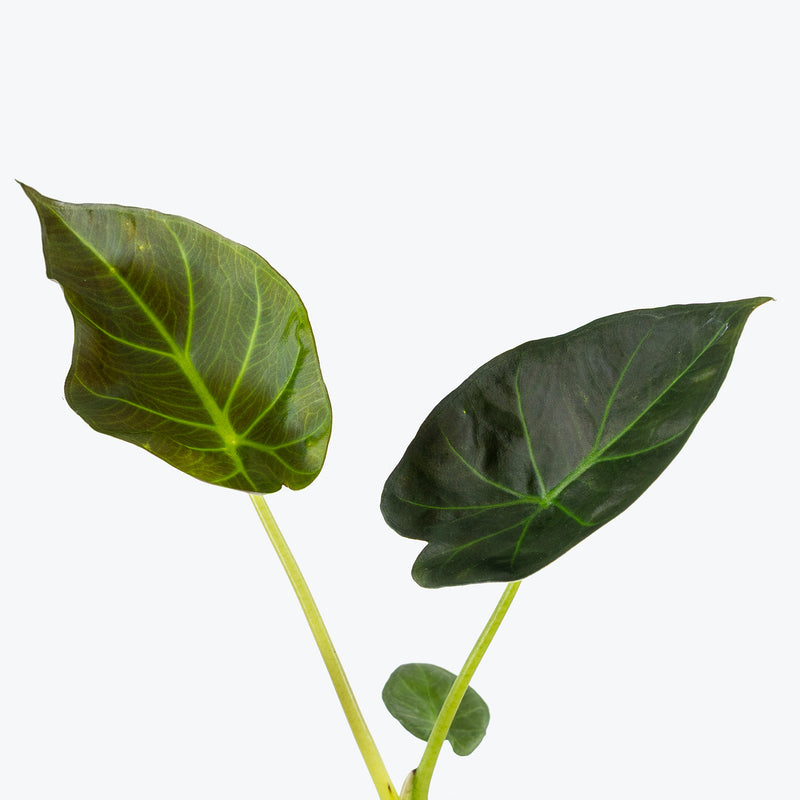
How to care for Alocasia Regal Shields
Alocasia Regal Shields should not be in a position to see the sun directly, although early morning or late evening sun is fine. Filtered sunlight through a sheer curtain is best and most homes are comprised primarily of indirect sunlight. The best spot for them is where they do not see the sun during the majority of the day but still get bright, indirect light.
Alocasia Regal Shields will thrive in bright light, but also can tolerate medium light. A good medium-light place in your home would be in the middle of a room that has a regular size window. They can be placed anywhere between the middle of the room and the window. Remember that plants will grow based on how much light they receive.
Alocasia Regal Shields needs to be watered when the top half of the soil is dry to the touch. That usually takes about 1 week in an average home environment. It will vary depending on the time of year, your environment and lighting conditions, but it's always safer to underwater or give the soil a check before you water again.
Alocasia Regal Shields will do well in average humidity environments but will appreciate a little bit of humidity if provided, give them a mist daily or get a humidifier.
Use a well-draining, chunky mix to prevent root rot—think peat, perlite, and bark. Rotate regularly to maintain even growth. Wipe leaves gently with a damp cloth to highlight Alocasia Regal Shields' dramatic texture and help with photosynthesis. Though more resilient than many Alocasias, still watch for pests like spider mites in dry conditions. Fertilize monthly during the growing season with a balanced liquid feed to keep those shield-like leaves strong and vibrant.
Alocasia Regal Shields is moderately toxic and can cause some adverse reactions when ingested so it is best to not let your pets eat it, which we advise for all plants in general. The severity of the reaction will depend on how much of the plant is ingested but, if you know your pet typically does not eat your plants, this plant will be suitable for your home..
Learn MoreView PlantAlocasia Reginae
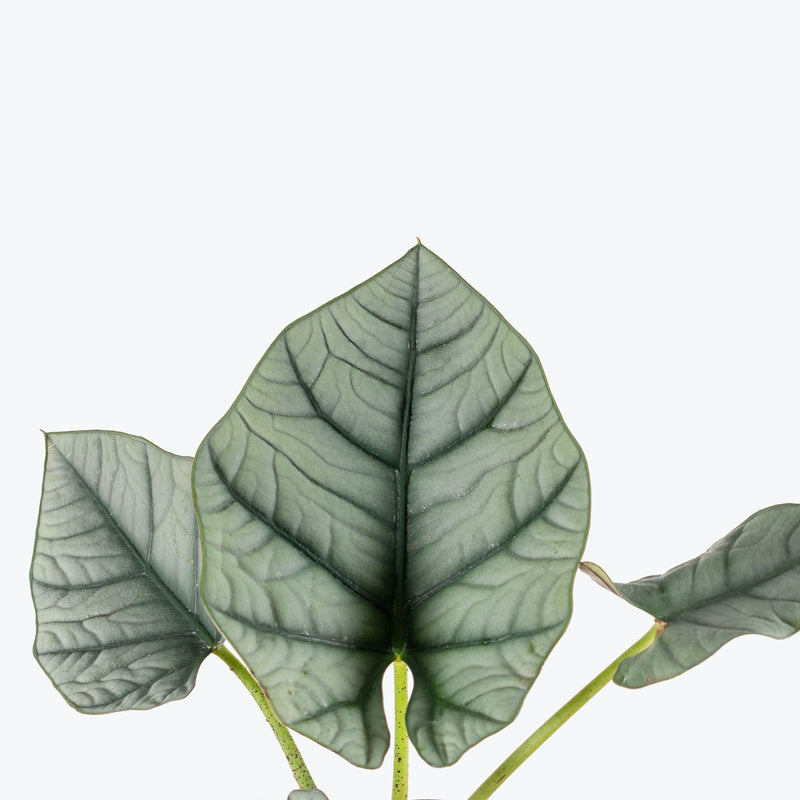
How to care for Alocasia Reginae
Alocasia Reginae should not be in a position to see the sun directly, although early morning or late evening sun is fine. Filtered sunlight through a sheer curtain is best and most homes are comprised primarily of indirect sunlight. The best spot for them is where they do not see the sun during the majority of the day but still get bright, indirect light.
Alocasia Reginae will thrive in bright light, but also can tolerate medium light. A good medium-light place in your home would be in the middle of a room that has a regular size window. They can be placed anywhere between the middle of the room and the window. Remember that plants will grow based on how much light they receive.
Alocasia Reginae needs to be watered when the top half of the soil is dry to the touch. That usually takes about 1 week in an average home environment. It will vary depending on the time of year, your environment and lighting conditions, but it's always safer to underwater or give the soil a check before you water again. Expect to water more often in brighter light and less often in lower light.
Alocasia Reginae likes a high humidity environment, give them a mist daily or as often as possible. Alternatively, you can put them around a humidifier. Although they won't die if they don't receive enough humidity, their leaves may have some dry, crunchy, or yellow edges.
Take care to ensure Alocasia Reginae is not overwatered and that the soil remains well-draining. During the plant’s dormancy in the winter months, where its growth slows significantly and it is prone to leaf loss, move it to somewhere warm and bright, while reducing your watering until it starts growing again in spring. Keep the plant clean of dust to allow it to breathe and photosynthesize efficiently. Regularly check for pests, such as spider mites and aphids, which can be attracted to its lush foliage.
Alocasia Reginae is moderately toxic and can cause some adverse reactions when ingested so it is best to not let your pets eat it, which we advise for all plants in general. The severity of the reaction will depend on how much of the plant is ingested but, if you know your pet typically does not eat your plants, this plant will be suitable for your home..
Learn MoreView PlantAlocasia Sabrina

How to care for Alocasia Sabrina
Alocasia Sabrina should not be in a position to see the sun directly, although early morning or late evening sun is fine. Filtered sunlight through a sheer curtain is best and most homes are comprised primarily of indirect sunlight. The best spot for them is where they do not see the sun during the majority of the day but still get bright, indirect light.
Alocasia Sabrina will thrive in bright light, but also can tolerate medium light. A good medium-light place in your home would be in the middle of a room that has a regular size window. They can be placed anywhere between the middle of the room and the window. Remember that plants will grow based on how much light they receive.
Alocasia Sabrina needs to be watered when the top half of the soil is dry to the touch. That usually takes about 1 week in an average home environment. It will vary depending on the time of year, your environment and lighting conditions, but it's always safer to underwater or give the soil a check before you water again. Expect to water more often in brighter light and less often in lower light.
Alocasia Sabrina will do well in average humidity environments but will appreciate a little bit of humidity if provided, give them a mist daily or get a humidifier.
Use a well-draining, airy mix such as peat, perlite, and orchid bark. Fertilize monthly during spring and summer with a diluted, balanced fertilizer. Clean leaves gently to enhance photosynthesis and maintain their natural sheen. Alocasia Sabrina enjoys warmth and stable conditions—avoid cold drafts and sudden temperature changes. As with many Alocasias, a short dormancy period may occur in cooler months; simply reduce watering and resume normal care once new growth appears.
Alocasia Sabrina is moderately toxic and can cause some adverse reactions when ingested so it is best to not let your pets eat it, which we advise for all plants in general. The severity of the reaction will depend on how much of the plant is ingested but, if you know your pet typically does not eat your plants, this plant will be suitable for your home..
Learn MoreView PlantAlocasia Sarian
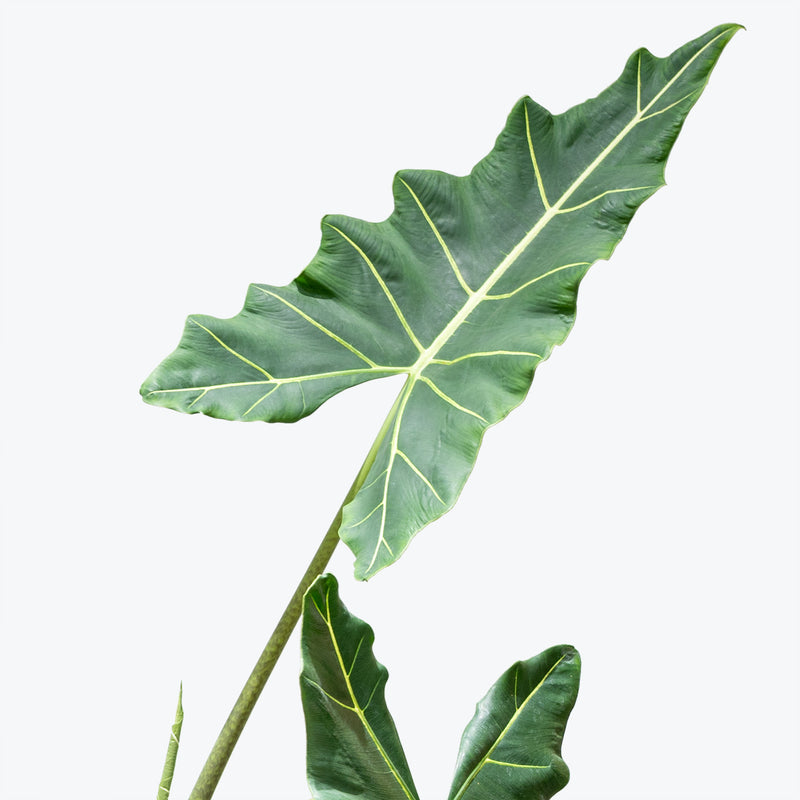
How to care for Alocasia Sarian
They should not be in a position to see the sun directly, although early morning or late evening sun is fine. Filtered sunlight through a sheer curtain is best and most homes are comprised primarily of indirect sunlight. The best spot for them is where they do not see the sun during the majority of the day but still get bright, indirect light.
They will thrive in bright light, but also can tolerate medium light. A good medium-light place in your home would be in the middle of a room that has a regular size window. They can be placed anywhere between the middle of the room and the window. Remember that plants will grow based on how much light they receive.
They need to be watered when the top half of the soil is dry to the touch. That usually takes about 1 week in an average home environment. It will vary depending on the time of year, your environment and lighting conditions, but it's always safer to underwater or give the soil a check before you water again. Expect to water more often in brighter light and less often in lower light.
They will do well in average humidity environments but will appreciate a little bit of humidity if provided, give them a mist daily or get a humidifier.
Alocasia 'Sarian' is not a drought-tolerant plant, so it's important to avoid letting the soil dry out completely. However, be careful not to overwater as this can cause the roots to rot. This plant appreciates a nutrient-rich soil and regular feedings during the growing season.
This plant is moderately toxic and can cause some adverse reactions when ingested so it is best to not let your pets eat it, which we advise for all plants in general. The severity of the reaction will depend on how much of the plant is ingested but, if you know your pet typically does not eat your plants, this plant will be suitable for your home..
Learn MoreView PlantAlocasia Scalprum
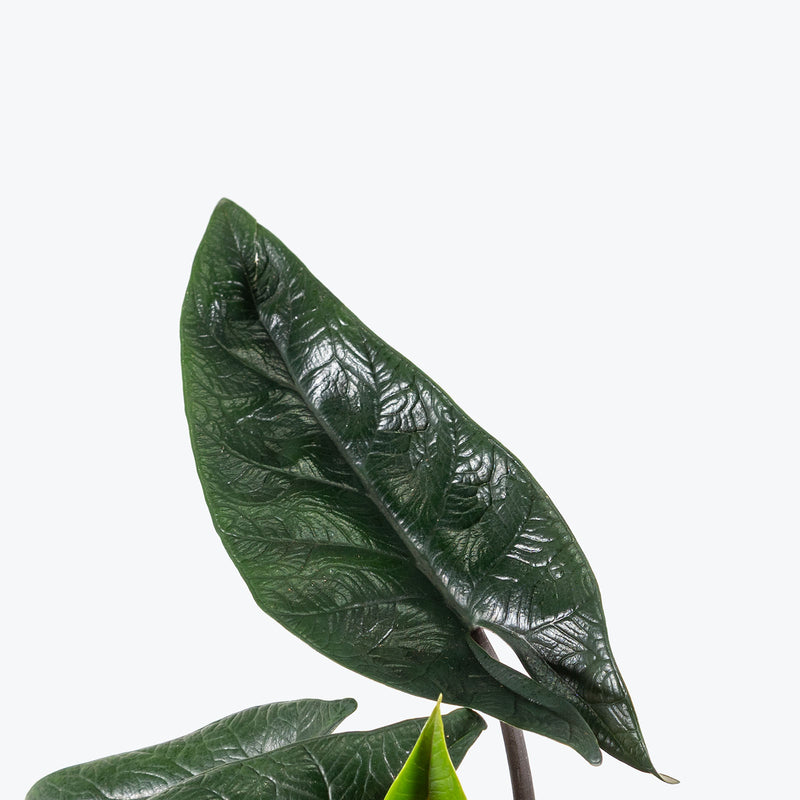
How to care for Alocasia Scalprum
Alocasia Scalprum should not be in a position to see the sun directly, although early morning or late evening sun is fine. Filtered sunlight through a sheer curtain is best and most homes are comprised primarily of indirect sunlight. The best spot for them is where they do not see the sun during the majority of the day but still get bright, indirect light.
Alocasia Scalprum will thrive in bright light, but also can tolerate medium light. A good medium-light place in your home would be in the middle of a room that has a regular size window. They can be placed anywhere between the middle of the room and the window. Remember that plants will grow based on how much light they receive.
Alocasia Scalprum needs to be watered when the top half of the soil is dry to the touch. That usually takes about 1 week in an average home environment. It will vary depending on the time of year, your environment and lighting conditions, but it's always safer to underwater or give the soil a check before you water again. Expect to water more often in brighter light and less often in lower light.
Alocasia Scalprum likes a high humidity environment, give them a mist daily or as often as possible. Alternatively, you can put them around a humidifier. Although they won't die if they don't receive enough humidity, their leaves may have some dry, crunchy, or yellow edges.
During Alocasia Scalprum’s dormancy in the winter months, where its growth slows significantly and it is prone to leaf loss, move it to somewhere warm and bright, while reducing your watering until it starts growing again in spring. If it has become root bound, repot the plant in the spring by planting it into a pot one size up. Regularly clean the leaves with a damp cloth to remove dust and help the plant efficiently photosynthesize. Be vigilant for signs of pests such as spider mites or aphids, particularly if humidity levels are not ideal.
Alocasia Scalprum is moderately toxic and can cause some adverse reactions when ingested so it is best to not let your pets eat it, which we advise for all plants in general. The severity of the reaction will depend on how much of the plant is ingested but, if you know your pet typically does not eat your plants, this plant will be suitable for your home..
Learn MoreView PlantAlocasia Silver Dragon
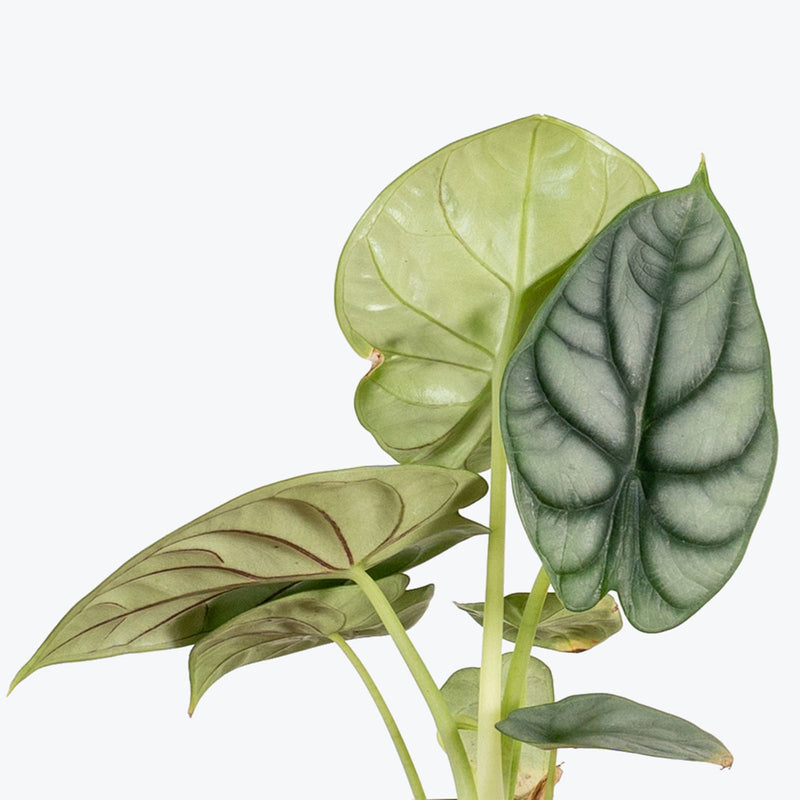
How to care for Alocasia Silver Dragon
Alocasia Silver Dragon should not be in a position to see the sun directly, although early morning or late evening sun is fine. Filtered sunlight through a sheer curtain is best and most homes are comprised primarily of indirect sunlight. The best spot for them is where they do not see the sun during the majority of the day but still get bright, indirect light.
Alocasia Silver Dragon will thrive in bright light, but also can tolerate medium light. A good medium-light place in your home would be in the middle of a room that has a regular size window. They can be placed anywhere between the middle of the room and the window. Remember that plants will grow based on how much light they receive.
Alocasia Silver Dragon needs to be watered when the top half of the soil is dry to the touch. That usually takes about 1 week in an average home environment. It will vary depending on the time of year, your environment and lighting conditions, but it's always safer to underwater or give the soil a check before you water again. Expect to water more often in brighter light and less often in lower light.
Alocasia Silver Dragon likes a high humidity environment, give them a mist daily or as often as possible. Alternatively, you can put them around a humidifier. Although they won't die if they don't receive enough humidity, their leaves may have some dry, crunchy, or yellow edges.
During Alocasia Silver Dragon’s dormancy in the winter months, where its growth slows significantly and it is prone to leaf loss, move it to somewhere warm and bright, while reducing your watering until it starts growing again in spring. If it has become root bound, repot the plant in the spring by planting it into a pot one size up. Clean the leaves regularly with a soft, damp cloth to remove dust and prevent pest infestations. Be cautious of common pests like spider mites and mealybugs.
Alocasia Silver Dragon is moderately toxic and can cause some adverse reactions when ingested so it is best to not let your pets eat it, which we advise for all plants in general. The severity of the reaction will depend on how much of the plant is ingested but, if you know your pet typically does not eat your plants, this plant will be suitable for your home..
Learn MoreView PlantAlocasia Sinuata

How to care for Alocasia Sinuata
Alocasia Sinuata should not be in a position to see the sun directly, although early morning or late evening sun is fine. Filtered sunlight through a sheer curtain is best and most homes are comprised primarily of indirect sunlight. The best spot for them is where they do not see the sun during the majority of the day but still get bright, indirect light.
Alocasia Sinuata will do best in bright light. A nice bright place inside your home would be on the window sill or a stool that is right next to a window, either with or without blinds, depending on if the plant can handle sun. Remember that plants will grow based on how much light they receive.
Alocasia Sinuata needs to be watered when the top half of the soil is dry to the touch. That usually takes about 1 week in an average home environment. It will vary depending on the time of year, your environment and lighting conditions, but it's always safer to underwater or give the soil a check before you water again. Expect to water more often in brighter light and less often in lower light.
Alocasia Sinuata likes a high humidity environment, give them a mist daily or as often as possible. Alternatively, you can put them around a humidifier. Although they won't die if they don't receive enough humidity, their leaves may have some dry, crunchy, or yellow edges.
Feed Alocasia Sinuata with a balanced, liquid fertilizer every 4-6 weeks during the growing season but reduce feeding in the winter when growth slows. The leaves benefit from being wiped down occasionally to remove dust and to prevent pest infestations. Be vigilant about pests such as spider mites and aphids, which are attracted to Alocasias.
Alocasia Sinuata is moderately toxic and can cause some adverse reactions when ingested so it is best to not let your pets eat it, which we advise for all plants in general. The severity of the reaction will depend on how much of the plant is ingested but, if you know your pet typically does not eat your plants, this plant will be suitable for your home..
Learn MoreView PlantAlocasia Stingray
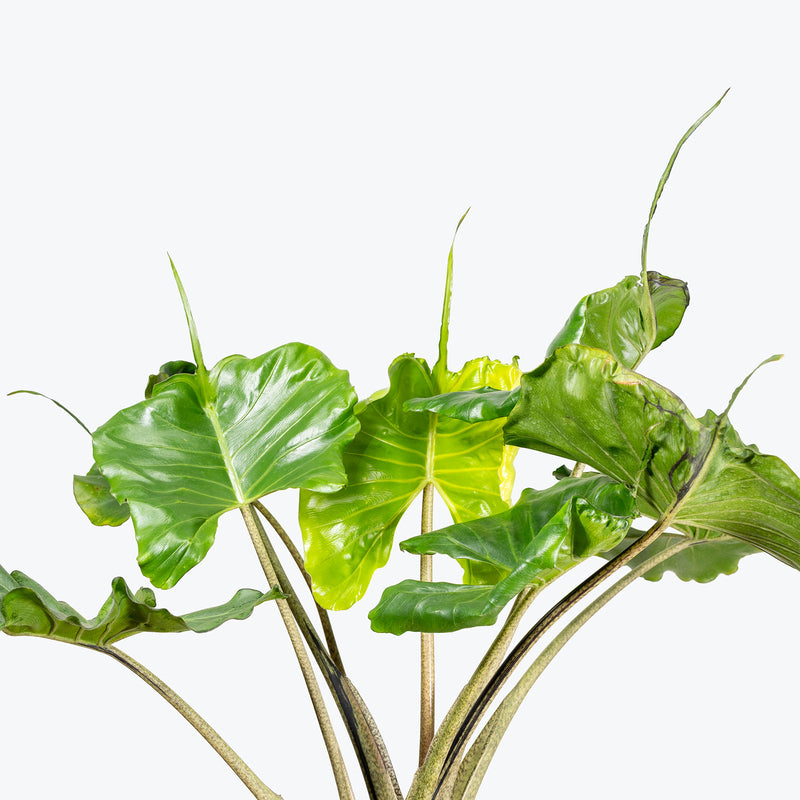
How to care for Alocasia Stingray
Alocasia Stingray should not be in a position to see the sun directly, although early morning or late evening sun is fine. Filtered sunlight through a sheer curtain is best and most homes are comprised primarily of indirect sunlight. The best spot for them is where they do not see the sun during the majority of the day but still get bright, indirect light.
Alocasia Stingray will thrive in bright light, but also can tolerate medium light. A good medium-light place in your home would be in the middle of a room that has a regular size window. They can be placed anywhere between the middle of the room and the window. Remember that plants will grow based on how much light they receive.
Alocasia Stingray needs to be watered when the top half of the soil is dry to the touch. That usually takes about 1 week in an average home environment. It will vary depending on the time of year, your environment and lighting conditions, but it's always safer to underwater or give the soil a check before you water again. Expect to water more often in brighter light and less often in lower light.
Alocasia Stingray likes a high humidity environment, give them a mist daily or as often as possible. Alternatively, you can put them around a humidifier. Although they won't die if they don't receive enough humidity, their leaves may have some dry, crunchy, or yellow edges.
During the plant’s dormancy in the winter months, where its growth slows significantly and it is prone to leaf loss, move it to somewhere warm and bright, while reducing your watering until Alocasia Stingray starts growing again in spring. Clean the leaves regularly with a damp cloth to remove dust and support photosynthesis. If it has become root bound, repot the plant in the spring by planting it into a pot one size up.
Alocasia Stingray is moderately toxic and can cause some adverse reactions when ingested so it is best to not let your pets eat it, which we advise for all plants in general. The severity of the reaction will depend on how much of the plant is ingested but, if you know your pet typically does not eat your plants, this plant will be suitable for your home..
Learn MoreView PlantAlocasia Tea Party
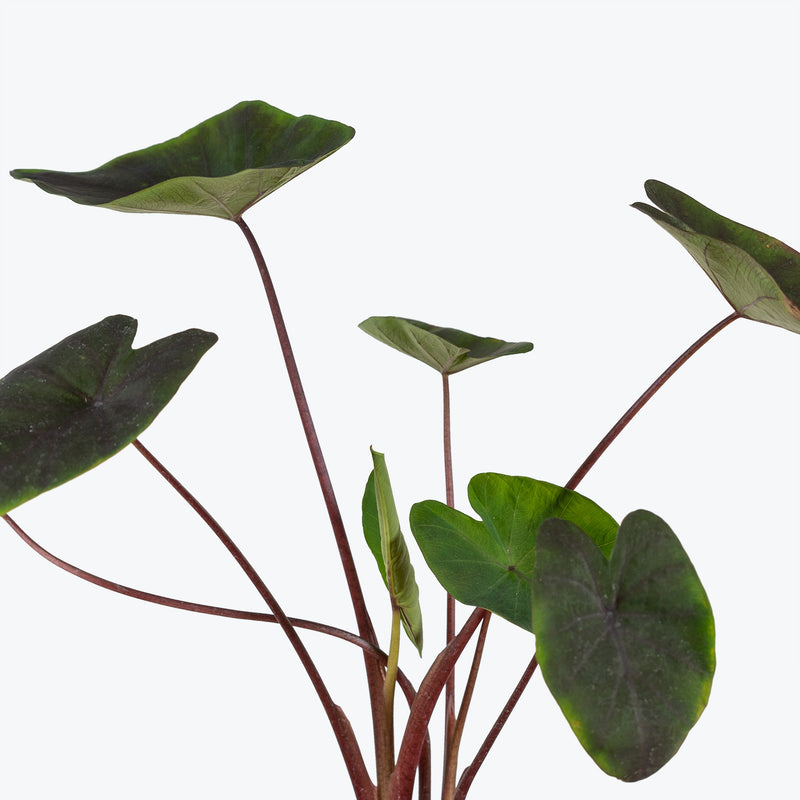
How to care for Alocasia Tea Party
They should not be in a position to see the sun directly, although early morning or late evening sun is fine. Filtered sunlight through a sheer curtain is best and most homes are comprised primarily of indirect sunlight. The best spot for them is where they do not see the sun during the majority of the day but still get bright, indirect light.
They will do best in bright light. A nice bright place inside your home would be on the window sill or a stool that is right next to a window, either with or without blinds, depending on if the plant can handle sun. Remember that plants will grow based on how much light they receive.
They need to be watered when the top half of the soil is dry to the touch. That usually takes about 1 week in an average home environment. It will vary depending on the time of year, your environment and lighting conditions, but it's always safer to underwater or give the soil a check before you water again. Expect to water more often in brighter light and less often in lower light.
They like a high humidity environment, give them a mist daily or as often as possible. Alternatively, you can put them around a humidifier. Although they won't die if they don't receive enough humidity, their leaves may have some dry, crunchy, or yellow edges.
During the plant’s dormancy in the winter months, where its growth slows significantly and it is prone to leaf loss, move it to somewhere warm and bright, while reducing your watering until it starts growing again in spring. If it has become root bound, repot the plant in the spring by planting it into a pot one size up.
This plant is moderately toxic and can cause some adverse reactions when ingested so it is best to not let your pets eat it, which we advise for all plants in general. The severity of the reaction will depend on how much of the plant is ingested but, if you know your pet typically does not eat your plants, this plant will be suitable for your home..
Learn MoreView PlantAlocasia Teletubbies
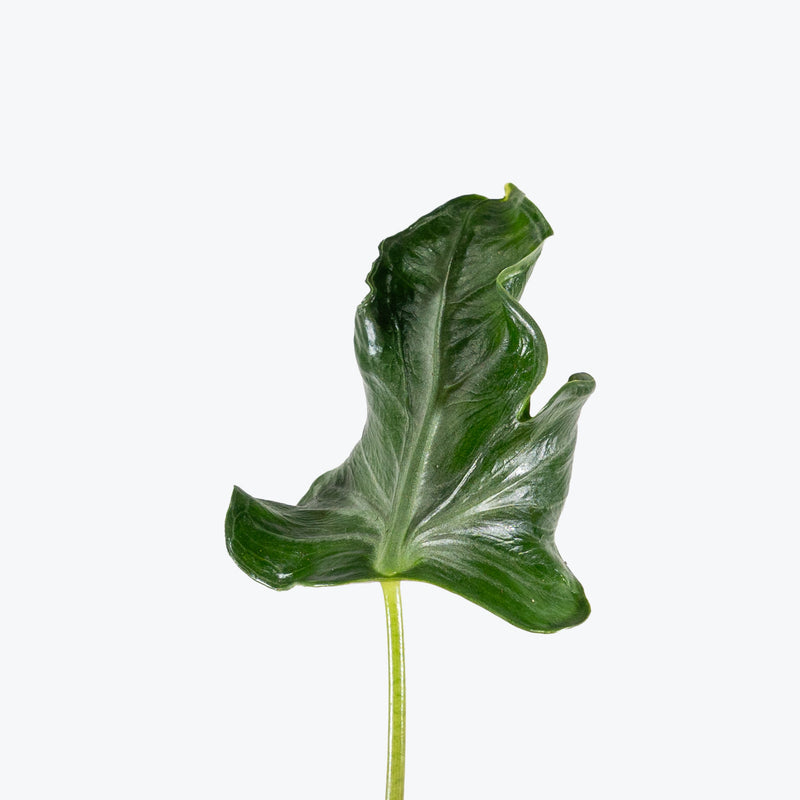
How to care for Alocasia Teletubbies
Alocasia Teletubbies should not be in a position to see the sun directly, although early morning or late evening sun is fine. Filtered sunlight through a sheer curtain is best and most homes are comprised primarily of indirect sunlight. The best spot for them is where they do not see the sun during the majority of the day but still get bright, indirect light.
Alocasia Teletubbies will thrive in bright light, but also can tolerate medium light. A good medium-light place in your home would be in the middle of a room that has a regular size window. They can be placed anywhere between the middle of the room and the window. Remember that plants will grow based on how much light they receive.
Alocasia Teletubbies needs to be watered when the top half of the soil is dry to the touch. That usually takes about 1 week in an average home environment. It will vary depending on the time of year, your environment and lighting conditions, but it's always safer to underwater or give the soil a check before you water again. Expect to water more often in brighter light and less often in lower light.
Alocasia Teletubbies will do well in average humidity environments but will appreciate a little bit of humidity if provided, give them a mist daily or get a humidifier.
Use a chunky, well-draining soil mix such as peat, perlite, and orchid bark. Fertilize monthly during spring and summer with a diluted balanced fertilizer. Clean leaves occasionally to maintain their glossy finish and promote healthy respiration. Alocasia Teletubbies prefers warm, stable environments—avoid cold drafts and sudden temperature drops.
Alocasia Teletubbies is moderately toxic and can cause some adverse reactions when ingested so it is best to not let your pets eat it, which we advise for all plants in general. The severity of the reaction will depend on how much of the plant is ingested but, if you know your pet typically does not eat your plants, this plant will be suitable for your home..
Learn MoreView PlantAlocasia Tiny Dancer
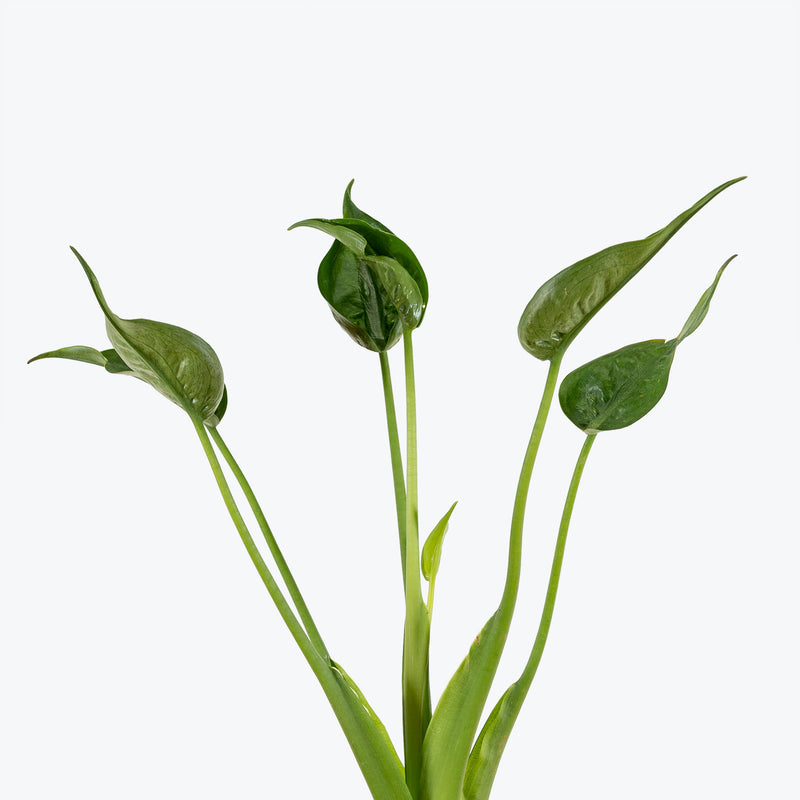
How to care for Alocasia Tiny Dancer
Alocasia Tiny Dancer should not be in a position to see the sun directly, although early morning or late evening sun is fine. Filtered sunlight through a sheer curtain is best and most homes are comprised primarily of indirect sunlight. The best spot for them is where they do not see the sun during the majority of the day but still get bright, indirect light.
Alocasia Tiny Dancer will thrive in bright light, but also can tolerate medium light. A good medium-light place in your home would be in the middle of a room that has a regular size window. They can be placed anywhere between the middle of the room and the window. Remember that plants will grow based on how much light they receive.
Alocasia Tiny Dancer needs to be watered when the top half of the soil is dry to the touch. That usually takes about 1 week in an average home environment. It will vary depending on the time of year, your environment and lighting conditions, but it's always safer to underwater or give the soil a check before you water again. Expect to water more often in brighter light and less often in lower light.
Alocasia Tiny Dancer likes a high humidity environment, give them a mist daily or as often as possible. Alternatively, you can put them around a humidifier. Although they won't die if they don't receive enough humidity, their leaves may have some dry, crunchy, or yellow edges.
During Alocasia Tiny Dancer’s dormancy in the winter months, where its growth slows significantly and it is prone to leaf loss, move it to somewhere warm and bright, while reducing your watering until it starts growing again in spring. Be vigilant about pests such as spider mites and aphids, which can be attracted to Alocasias. Quarantine new plants and inspect regularly to catch any issues early.
Alocasia Tiny Dancer is moderately toxic and can cause some adverse reactions when ingested so it is best to not let your pets eat it, which we advise for all plants in general. The severity of the reaction will depend on how much of the plant is ingested but, if you know your pet typically does not eat your plants, this plant will be suitable for your home..
Learn MoreView PlantAlocasia Triangularis

How to care for Alocasia Triangularis
Alocasia Triangularis should not be in a position to see the sun directly, although early morning or late evening sun is fine. Filtered sunlight through a sheer curtain is best and most homes are comprised primarily of indirect sunlight. The best spot for them is where they do not see the sun during the majority of the day but still get bright, indirect light.
Alocasia Triangularis will thrive in bright light, but also can tolerate medium light. A good medium-light place in your home would be in the middle of a room that has a regular size window. They can be placed anywhere between the middle of the room and the window. Remember that plants will grow based on how much light they receive.
Alocasia Triangularis needs to be watered when the top half of the soil is dry to the touch. That usually takes about 1 week in an average home environment. It will vary depending on the time of year, your environment and lighting conditions, but it's always safer to underwater or give the soil a check before you water again. Expect to water more often in brighter light and less often in lower light.
Alocasia Triangularis will do well in average humidity environments but will appreciate a little bit of humidity if provided, give them a mist daily or get a humidifier.
Use a well-draining, airy soil mix (Aroid Mix). Avoid cold drafts and soggy soil — both can stress Alocasia Triangularis. Rotate occasionally for even growth, and trim older leaves at the base as they age. Fertilize every 4–6 weeks during the growing season to support steady, lush growth.
Alocasia Triangularis is moderately toxic and can cause some adverse reactions when ingested so it is best to not let your pets eat it, which we advise for all plants in general. The severity of the reaction will depend on how much of the plant is ingested but, if you know your pet typically does not eat your plants, this plant will be suitable for your home..
Learn MoreView PlantAlocasia Tyrion
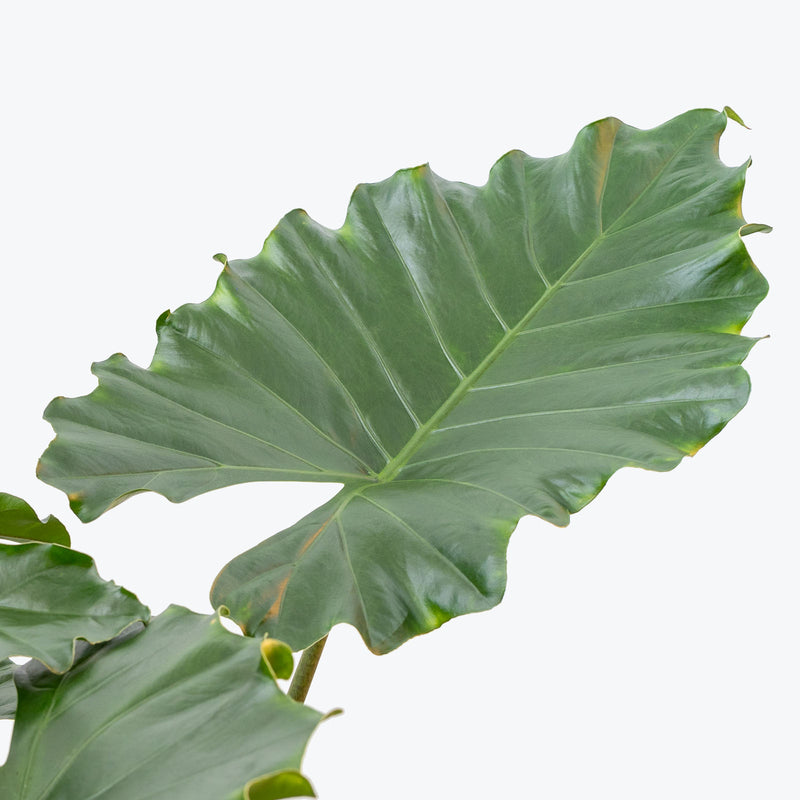
How to care for Alocasia Tyrion
They should not be in a position to see the sun directly, although early morning or late evening sun is fine. Filtered sunlight through a sheer curtain is best and most homes are comprised primarily of indirect sunlight. The best spot for them is where they do not see the sun during the majority of the day but still get bright, indirect light.
They will do best in bright light. A nice bright place inside your home would be on the window sill or a stool that is right next to a window, either with or without blinds, depending on if the plant can handle sun. Remember that plants will grow based on how much light they receive.
They need to be watered when the top half of the soil is dry to the touch. That usually takes about 1 week in an average home environment. It will vary depending on the time of year, your environment and lighting conditions, but it's always safer to underwater or give the soil a check before you water again. Expect to water more often in brighter light and less often in lower light.
They like a high humidity environment, give them a mist daily or as often as possible. Alternatively, you can put them around a humidifier. Although they won't die if they don't receive enough humidity, their leaves may have some dry, crunchy, or yellow edges.
During the plant’s dormancy in the winter months, where its growth slows significantly and it is prone to leaf loss, move it to somewhere warm and bright, while reducing your watering until it starts growing again in spring. If it has become root bound, repot the plant in the spring by planting it into a pot one size up.
This plant is moderately toxic and can cause some adverse reactions when ingested so it is best to not let your pets eat it, which we advise for all plants in general. The severity of the reaction will depend on how much of the plant is ingested but, if you know your pet typically does not eat your plants, this plant will be suitable for your home..
Learn MoreView PlantAlocasia Venusta
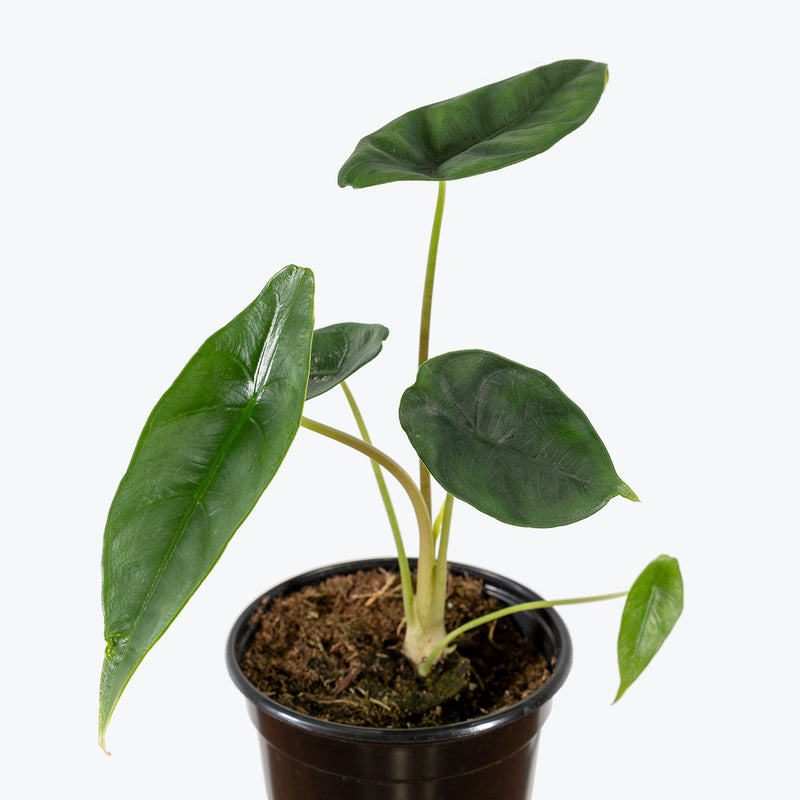
How to care for Alocasia Venusta
They should not be in a position to see the sun directly, although early morning or late evening sun is fine. Filtered sunlight through a sheer curtain is best and most homes are comprised primarily of indirect sunlight. The best spot for them is where they do not see the sun during the majority of the day but still get bright, indirect light.
They will thrive in bright light, but also can tolerate medium light. A good medium-light place in your home would be in the middle of a room that has a regular size window. They can be placed anywhere between the middle of the room and the window. Remember that plants will grow based on how much light they receive.
They need to be watered when the top half of the soil is dry to the touch. That usually takes about 1 week in an average home environment. It will vary depending on the time of year, your environment and lighting conditions, but it's always safer to underwater or give the soil a check before you water again. Expect to water more often in brighter light and less often in lower light.
They like a high humidity environment, give them a mist daily or as often as possible. Alternatively, you can put them around a humidifier. Although they won't die if they don't receive enough humidity, their leaves may have some dry, crunchy, or yellow edges.
During the plant’s dormancy in the winter months, where its growth slows significantly and it is prone to leaf loss, move it to somewhere warm and bright, while reducing your watering until it starts growing again in spring. If it has become root bound, repot the plant in the spring by planting it into a pot one size up.
This plant is moderately toxic and can cause some adverse reactions when ingested so it is best to not let your pets eat it, which we advise for all plants in general. The severity of the reaction will depend on how much of the plant is ingested but, if you know your pet typically does not eat your plants, this plant will be suitable for your home..
Learn MoreView PlantAlocasia Watsoniana

How to care for Alocasia Watsoniana
Alocasia Watsoniana should not be in a position to see the sun directly, although early morning or late evening sun is fine. Filtered sunlight through a sheer curtain is best and most homes are comprised primarily of indirect sunlight. The best spot for them is where they do not see the sun during the majority of the day but still get bright, indirect light.
Alocasia Watsoniana will thrive in bright light, but also can tolerate medium light. A good medium-light place in your home would be in the middle of a room that has a regular size window. They can be placed anywhere between the middle of the room and the window. Remember that plants will grow based on how much light they receive.
Alocasia Watsoniana needs to be watered when the top half of the soil is dry to the touch. That usually takes about 1 week in an average home environment. It will vary depending on the time of year, your environment and lighting conditions, but it's always safer to underwater or give the soil a check before you water again. Expect to water more often in brighter light and less often in lower light.
Alocasia Watsoniana will do well in average humidity environments but will appreciate a little bit of humidity if provided, give them a mist daily or get a humidifier.
Use a chunky, well-draining mix (such as peat, perlite, and orchid bark). Fertilize monthly during spring and summer with a diluted, balanced fertilizer. Clean leaves gently to enhance their sheen and promote better photosynthesis. Alocasia Watsoniana appreciates warmth, humidity, and stable conditions—avoid cold drafts or sudden environmental changes.
Alocasia Watsoniana is moderately toxic and can cause some adverse reactions when ingested so it is best to not let your pets eat it, which we advise for all plants in general. The severity of the reaction will depend on how much of the plant is ingested but, if you know your pet typically does not eat your plants, this plant will be suitable for your home..
Learn MoreView PlantAlocasia Watsoniana Lightning

How to care for Alocasia Watsoniana Lightning
Alocasia Watsoniana Lightning should not be in a position to see the sun directly, although early morning or late evening sun is fine. Filtered sunlight through a sheer curtain is best and most homes are comprised primarily of indirect sunlight. The best spot for them is where they do not see the sun during the majority of the day but still get bright, indirect light.
Alocasia Watsoniana Lightning will thrive in bright light, but also can tolerate medium light. A good medium-light place in your home would be in the middle of a room that has a regular size window. They can be placed anywhere between the middle of the room and the window. Remember that plants will grow based on how much light they receive.
Alocasia Watsoniana Lightning needs to be watered when the top half of the soil is dry to the touch. That usually takes about 1 week in an average home environment. It will vary depending on the time of year, your environment and lighting conditions, but it's always safer to underwater or give the soil a check before you water again. Expect to water more often in brighter light and less often in lower light.
Alocasia Watsoniana Lightning will do well in average humidity environments but will appreciate a little bit of humidity if provided, give them a mist daily or get a humidifier.
Feed monthly in spring and summer with a balanced, diluted fertilizer to encourage strong growth and vibrant coloration. Wipe leaves regularly to keep them dust-free and maximize photosynthesis. Like many Alocasias, Alocasia Watsoniana Lightning may go dormant in cooler months—reduce watering and resume regular care when new growth emerges.
Alocasia Watsoniana Lightning is moderately toxic and can cause some adverse reactions when ingested so it is best to not let your pets eat it, which we advise for all plants in general. The severity of the reaction will depend on how much of the plant is ingested but, if you know your pet typically does not eat your plants, this plant will be suitable for your home..
Learn MoreView PlantAlocasia Wentii

How to care for Alocasia Wentii
They should not be in a position to see the sun directly, although early morning or late evening sun is fine. Filtered sunlight through a sheer curtain is best and most homes are comprised primarily of indirect sunlight. The best spot for them is where they do not see the sun during the majority of the day but still get bright, indirect light.
They will thrive in bright light, but also can tolerate medium light. A good medium-light place in your home would be in the middle of a room that has a regular size window. They can be placed anywhere between the middle of the room and the window. Remember that plants will grow based on how much light they receive.
They need to be watered when the top half of the soil is dry to the touch. That usually takes about 1 week in an average home environment. It will vary depending on the time of year, your environment and lighting conditions, but it's always safer to underwater or give the soil a check before you water again. Expect to water more often in brighter light and less often in lower light.
They like a high humidity environment, give them a mist daily or as often as possible. Alternatively, you can put them around a humidifier. Although they won't die if they don't receive enough humidity, their leaves may have some dry, crunchy, or yellow edges.
During the plant’s dormancy in the winter months, where its growth slows significantly and it is prone to leaf loss, move it to somewhere warm and bright, while reducing your watering until it starts growing again in spring. If it has become root bound, repot the plant in the spring by planting it into a pot one size up.
This plant is moderately toxic and can cause some adverse reactions when ingested so it is best to not let your pets eat it, which we advise for all plants in general. The severity of the reaction will depend on how much of the plant is ingested but, if you know your pet typically does not eat your plants, this plant will be suitable for your home..
Learn MoreView PlantAlocasia Yucatan Mint
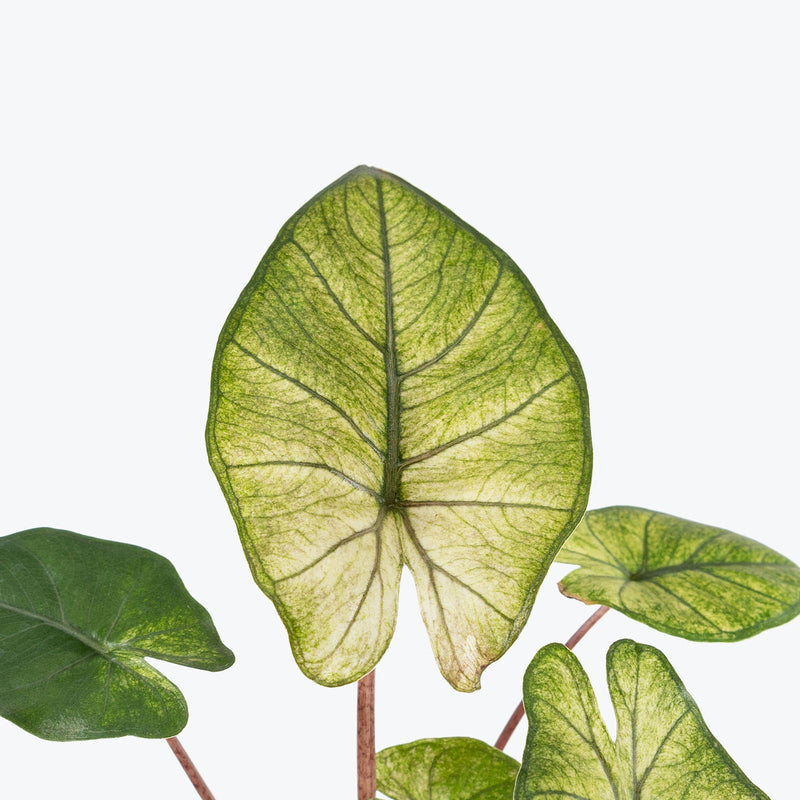
How to care for Alocasia Yucatan Mint
Alocasia Yucatan Mint should not be in a position to see the sun directly, although early morning or late evening sun is fine. Filtered sunlight through a sheer curtain is best and most homes are comprised primarily of indirect sunlight. The best spot for them is where they do not see the sun during the majority of the day but still get bright, indirect light.
Alocasia Yucatan Mint will do best in bright light. A nice bright place inside your home would be on the window sill or a stool that is right next to a window, either with or without blinds, depending on if the plant can handle sun. Remember that plants will grow based on how much light they receive.
Alocasia Yucatan Mint needs to be watered when the top half of the soil is dry to the touch. That usually takes about 1 week in an average home environment. It will vary depending on the time of year, your environment and lighting conditions, but it's always safer to underwater or give the soil a check before you water again. Expect to water more often in brighter light and less often in lower light.
Alocasia Yucatan Mint likes a high humidity environment, give them a mist daily or as often as possible. Alternatively, you can put them around a humidifier. Although they won't die if they don't receive enough humidity, their leaves may have some dry, crunchy, or yellow edges.
Many Alocasias, including Alocasia Yucatan Mint, may enter dormancy in cooler months, leading to reduced growth or some leaf drop. During the plant’s dormancy in the winter months, move it to somewhere warm and bright, while reducing your watering until it starts growing again in spring. Periodically wipe the leaves with a damp cloth to remove dust and support efficient photosynthesis. Shower them often to keep the spider mites away.
Alocasia Yucatan Mint is moderately toxic and can cause some adverse reactions when ingested so it is best to not let your pets eat it, which we advise for all plants in general. The severity of the reaction will depend on how much of the plant is ingested but, if you know your pet typically does not eat your plants, this plant will be suitable for your home..
Learn MoreView PlantAlocasia Zebrina
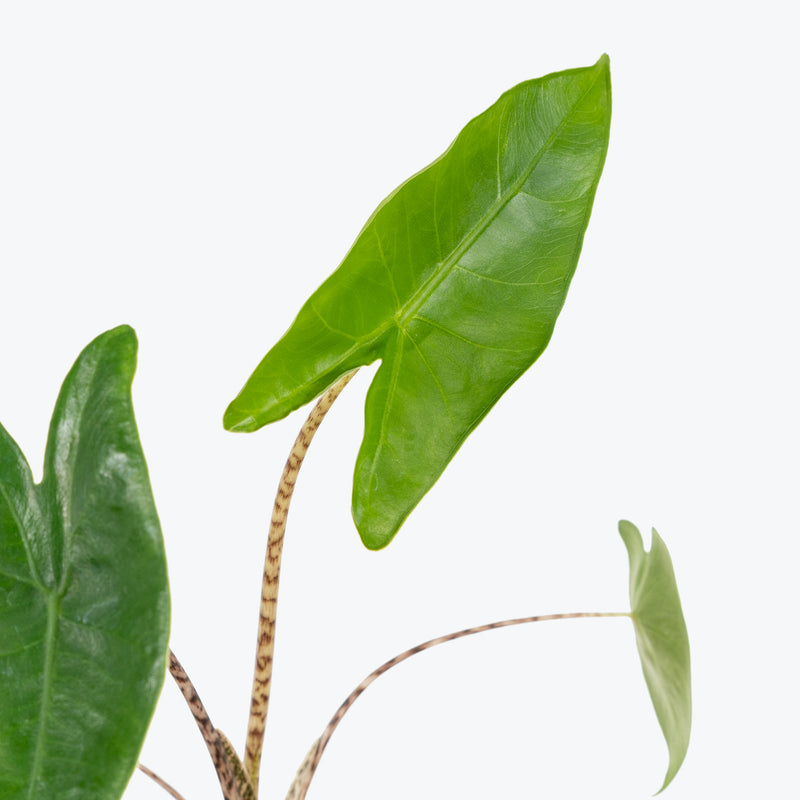
How to care for Alocasia Zebrina
They should not be in a position to see the sun directly, although early morning or late evening sun is fine. Filtered sunlight through a sheer curtain is best and most homes are comprised primarily of indirect sunlight. The best spot for them is where they do not see the sun during the majority of the day but still get bright, indirect light.
They will thrive in bright light, but also can tolerate medium light. A good medium-light place in your home would be in the middle of a room that has a regular size window. They can be placed anywhere between the middle of the room and the window. Remember that plants will grow based on how much light they receive.
They need to be watered when the top half of the soil is dry to the touch. That usually takes about 1 week in an average home environment. It will vary depending on the time of year, your environment and lighting conditions, but it's always safer to underwater or give the soil a check before you water again. Expect to water more often in brighter light and less often in lower light.
They like a high humidity environment, give them a mist daily or as often as possible. Alternatively, you can put them around a humidifier. Although they won't die if they don't receive enough humidity, their leaves may have some dry, crunchy, or yellow edges.
During the plant’s dormancy in the winter months, where its growth slows significantly and it is prone to leaf loss, move it to somewhere warm and bright, while reducing your watering until it starts growing again in spring. If it has become root bound, repot the plant in the spring by planting it into a pot one size up.
This plant is moderately toxic and can cause some adverse reactions when ingested so it is best to not let your pets eat it, which we advise for all plants in general. The severity of the reaction will depend on how much of the plant is ingested but, if you know your pet typically does not eat your plants, this plant will be suitable for your home..
Learn MoreView PlantAloe Vera
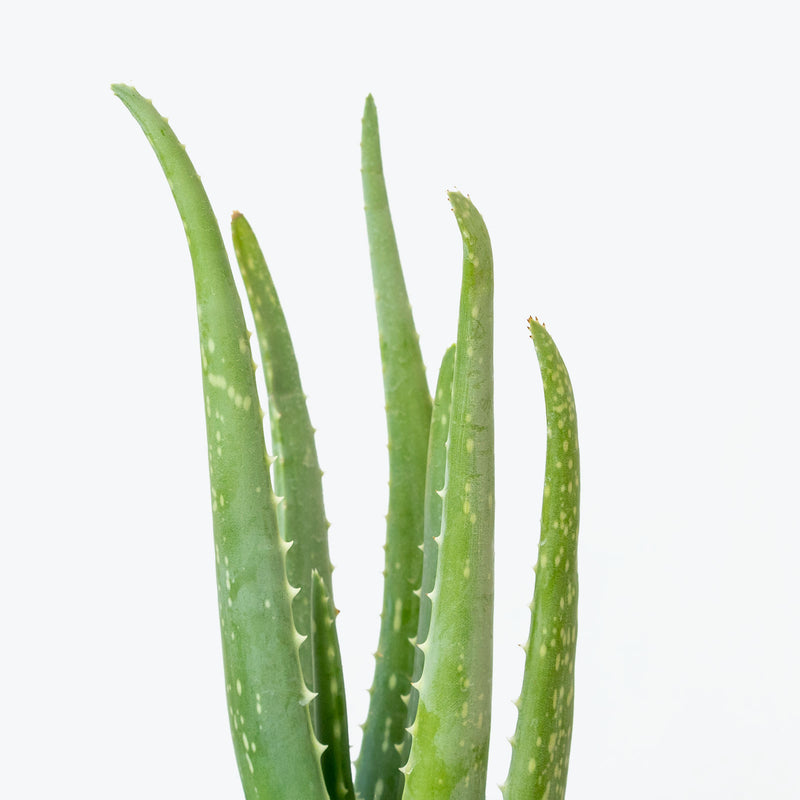
How to care for Aloe Vera
Aloe Vera enjoys some direct sun, but they'll also do well in bright, indirect light. It is best to place this plant somewhere where it will receive some nice morning sun, or a couple hours of afternoon sun, and then indirect light the rest of the day.
Aloe Vera will do best in bright light. A nice bright place inside your home would be on the window sill or a stool that is right next to a window, either with or without blinds, depending on if the plant can handle sun. Remember that plants will grow based on how much light they receive.
Aloe Vera likes the soil to be completely dry before the next watering. That usually takes about 4 weeks in an average home environment. It will vary depending on the time of year, your environment and lighting conditions, but for them, it's always safer to underwater or water when you see signs of lack of water (i.e. wrinkly or soft leaves). Water a little more often in the warmer months!
Aloe Vera humidity requirement is low, so do not mist them or put them in a terrarium.
Aloe Vera is drought-tolerant and prefers to be under-watered. Not sure when to water? Wrinkles on the aloe’s fleshy leaves are a telltale sign.
Aloe Vera is moderately toxic and can cause some adverse reactions when ingested so it is best to not let your pets eat it, which we advise for all plants in general. The severity of the reaction will depend on how much of the plant is ingested but, if you know your pet typically does not eat your plants, this plant will be suitable for your home..
Learn MoreView PlantAlpine Umbrella Tree
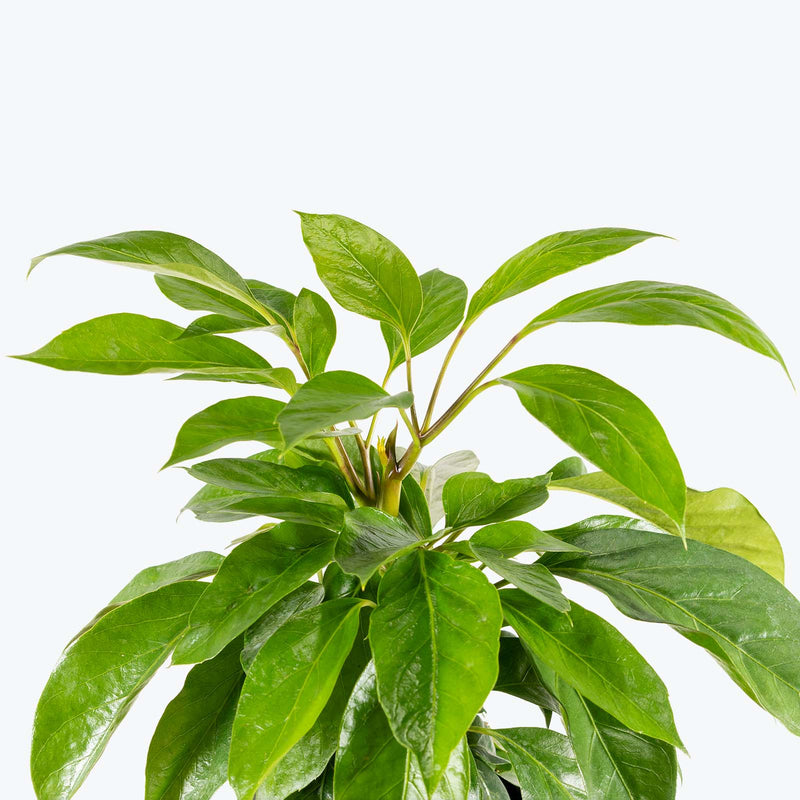
How to care for Alpine Umbrella Tree
They should not be in a position to see the sun directly, although early morning or late evening sun is fine. Filtered sunlight through a sheer curtain is best and most homes are comprised primarily of indirect sunlight. The best spot for them is where they do not see the sun during the majority of the day but still get bright, indirect light.
They will thrive in medium to bright light, but also can tolerate low light. A good medium-light place in your home would be in the middle of a room that has a regular size window. They can be placed almost anywhere in the room but remember, plants will grow based on how much light they receive.
They like the soil to be relatively dry before the next watering. That usually takes about 2 weeks in an average home environment. It will vary depending on the time of year, your environment and lighting conditions, but for them, it's always safer to underwater or water when you see signs of lack of water (i.e. droopy, floppy, or soft leaves). Water more often in the warmer months!
They can live in any average home humidity condition and are fairly hardy.
The Schefflera Alpine is a relatively low-maintenance plant. However, to keep it looking its best, ensure it receives the right amount of light and water. If you notice the leaves turning yellow, it might be receiving too much direct sunlight. Rotate the plant occasionally to ensure even growth, and prune any yellow or damaged leaves to keep it looking fresh and healthy.
This plant is moderately toxic and can cause some adverse reactions when ingested so it is best to not let your pets eat it, which we advise for all plants in general. The severity of the reaction will depend on how much of the plant is ingested but, if you know your pet typically does not eat your plants, this plant will be suitable for your home..
View PlantAlternanthera Party Time
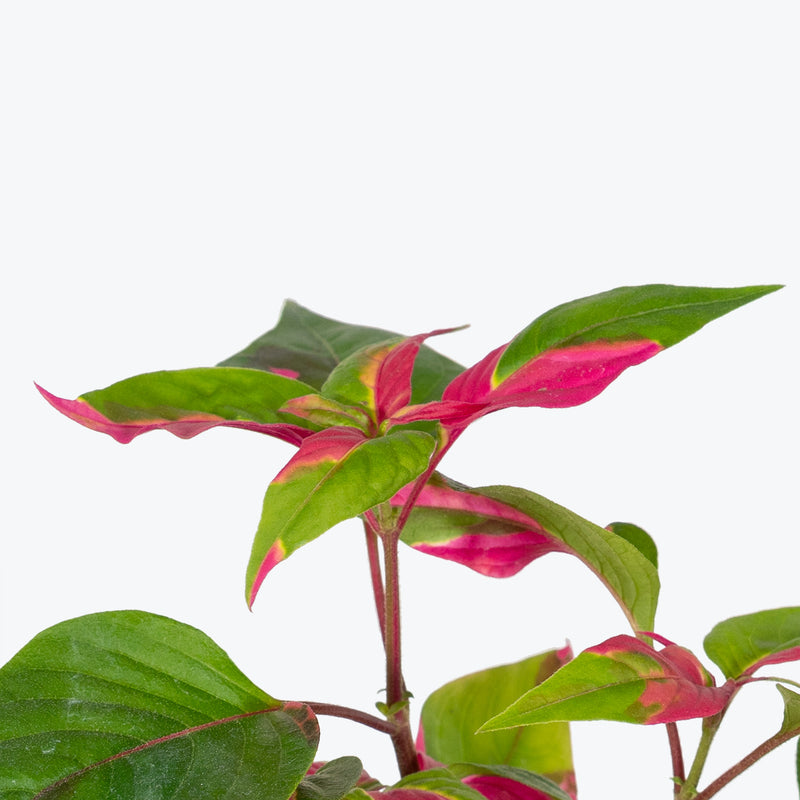
How to care for Alternanthera Party Time
They enjoy some direct sun, but they'll also do well in bright, indirect light. It is best to place this plant somewhere where it will receive some nice morning sun, or a couple hours of afternoon sun, and then indirect light the rest of the day.
They will do best in bright light. A nice bright place inside your home would be on the window sill or a stool that is right next to a window, either with or without blinds, depending on if the plant can handle sun. Remember that plants will grow based on how much light they receive.
They need to be watered when the top half of the soil is dry to the touch. That usually takes about 1 week in an average home environment. It will vary depending on the time of year, your environment and lighting conditions, but it's always safer to underwater or give the soil a check before you water again. Expect to water more often in brighter light and less often in lower light.
They will do well in average humidity environments but will appreciate a little bit of humidity if provided, give them a mist daily or get a humidifier.
Although they can handle medium humidity levels, they do require warmth, but keep them away from drafts! To encourage healthy leaf growth, pinch your plant back, this will help keep the plant bushy as well.
You can feel comfortable having this plant around your home in the potential case where your pet feels like nibbling on it. However, we typically recommend keeping your pets from eating any of your houseplants..
View PlantAmydrium Medium Green
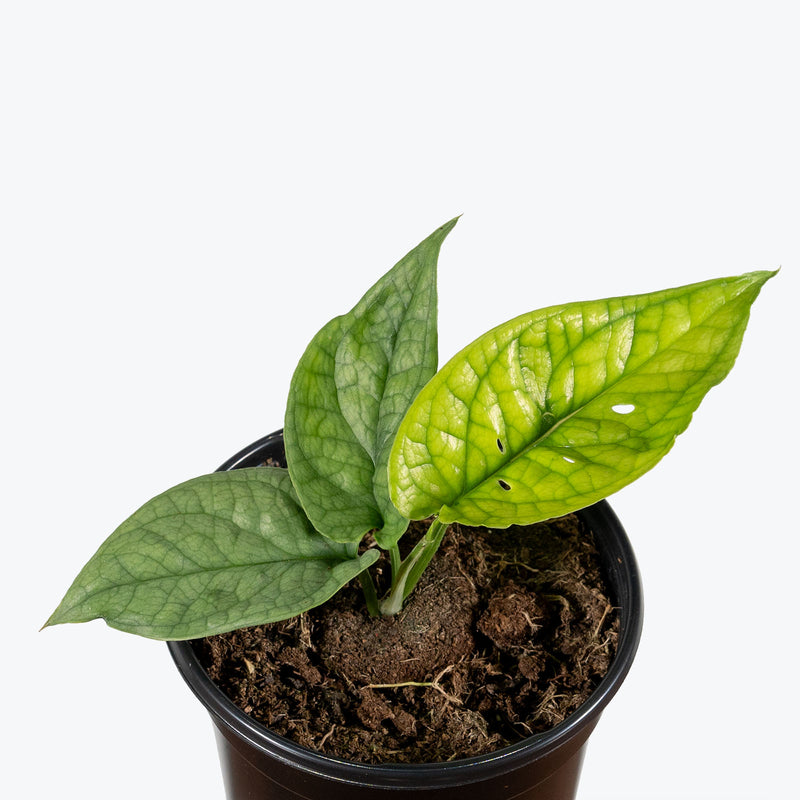
How to care for Amydrium Medium Green
Amydrium Medium Green should not be in a position to see the sun directly, although early morning or late evening sun is fine. Filtered sunlight through a sheer curtain is best and most homes are comprised primarily of indirect sunlight. The best spot for them is where they do not see the sun during the majority of the day but still get bright, indirect light.
Amydrium Medium Green will thrive in medium to bright light, but also can tolerate low light. A good medium-light place in your home would be in the middle of a room that has a regular size window. They can be placed almost anywhere in the room but remember, plants will grow based on how much light they receive.
Amydrium Medium Green likes the soil to be relatively dry before the next watering. That usually takes about 2 weeks in an average home environment. It will vary depending on the time of year, your environment and lighting conditions, but for them, it's always safer to underwater or water when you see signs of lack of water (i.e. droopy, floppy, or soft leaves). Expect to water more often in brighter light and less often in lower light.
Amydrium Medium Green will do well in average humidity environments but will appreciate a little bit of humidity if provided, give them a mist daily or get a humidifier.
In nature, Amydrium Medium Green uses their roots to climb trunks of surrounding trees, so they are always looking for something to climb on! In order to avoid it growing long leafless stems or so-called 'runners', you must attach it to something to let it climb, such as a moss pole.
Amydrium Medium Green is moderately toxic and can cause some adverse reactions when ingested so it is best to not let your pets eat it, which we advise for all plants in general. The severity of the reaction will depend on how much of the plant is ingested but, if you know your pet typically does not eat your plants, this plant will be suitable for your home..
View PlantAmydrium Medium Silver

How to care for Amydrium Medium Silver
Amydrium Medium Silver should not be in a position to see the sun directly, although early morning or late evening sun is fine. Filtered sunlight through a sheer curtain is best and most homes are comprised primarily of indirect sunlight. The best spot for them is where they do not see the sun during the majority of the day but still get bright, indirect light.
Amydrium Medium Silver will thrive in medium to bright light, but also can tolerate low light. A good medium-light place in your home would be in the middle of a room that has a regular size window. They can be placed almost anywhere in the room but remember, plants will grow based on how much light they receive.
Amydrium Medium Silver likes the soil to be relatively dry before the next watering. That usually takes about 2 weeks in an average home environment. It will vary depending on the time of year, your environment and lighting conditions, but for them, it's always safer to underwater or water when you see signs of lack of water (i.e. droopy, floppy, or soft leaves). Expect to water more often in brighter light and less often in lower light.
Amydrium Medium Silver will do well in average humidity environments but will appreciate a little bit of humidity if provided, give them a mist daily or get a humidifier.
In nature, Amydrium Medium Silver use their roots to climb trunks of surrounding trees, so they are always looking for something to climb on! In order to avoid it growing long leafless stems or so-called 'runners', you must attach it to something to let it climb, such as a moss pole.
Amydrium Medium Silver is moderately toxic and can cause some adverse reactions when ingested so it is best to not let your pets eat it, which we advise for all plants in general. The severity of the reaction will depend on how much of the plant is ingested but, if you know your pet typically does not eat your plants, this plant will be suitable for your home..
View PlantAmydrium Zippelianum

How to care for Amydrium Zippelianum
Amydrium Zippelianum should not be in a position to see the sun directly, although early morning or late evening sun is fine. Filtered sunlight through a sheer curtain is best and most homes are comprised primarily of indirect sunlight. The best spot for them is where they do not see the sun during the majority of the day but still get bright, indirect light.
Amydrium Zippelianum will thrive in bright light, but also can tolerate medium light. A good medium-light place in your home would be in the middle of a room that has a regular size window. They can be placed anywhere between the middle of the room and the window. Remember that plants will grow based on how much light they receive.
Amydrium Zippelianum needs to be watered when the top half of the soil is dry to the touch. That usually takes about 1 week in an average home environment. It will vary depending on the time of year, your environment and lighting conditions, but it's always safer to underwater or give the soil a check before you water again. Expect to water more often in brighter light and less often in lower light.
Amydrium Zippelianum will do well in average humidity environments but will appreciate a little bit of humidity if provided, give them a mist daily or get a humidifier.
Provide Amydrium Zippelianum a support structure like a moss pole or trellis to encourage larger, more divided leaves. Use a chunky, well-draining aroid mix for healthy roots. Fertilize monthly during the growing season with a balanced, diluted fertilizer. Trim back vines as needed to manage growth and encourage branching.
Amydrium Zippelianum is moderately toxic and can cause some adverse reactions when ingested so it is best to not let your pets eat it, which we advise for all plants in general. The severity of the reaction will depend on how much of the plant is ingested but, if you know your pet typically does not eat your plants, this plant will be suitable for your home..
View PlantAngel Wing Begonia

How to care for Angel Wing Begonia
They should not be in a position to see the sun directly, although early morning or late evening sun is fine. Filtered sunlight through a sheer curtain is best and most homes are comprised primarily of indirect sunlight. The best spot for them is where they do not see the sun during the majority of the day but still get bright, indirect light.
They will do well in medium light but will grow faster with brighter light. A good medium-light place in your home would be in the middle of a room that has a regular size window. Remember that plants will grow based on how much light they receive.
They need to be watered when the top half of the soil is dry to the touch. That usually takes about 1 week in an average home environment. It will vary depending on the time of year, your environment and lighting conditions, but it's always safer to underwater or give the soil a check before you water again. Expect to water more often in brighter light and less often in lower light.
They can live in any average home humidity condition and are fairly hardy.
This variety of Begonia grows relatively quickly and we recommend trimming your plant back if it ever gets too tall or too leggy. Pruning encourages new growth which will result in a bushier plant overall. Water your plant less often in the winter, allowing the soil to mostly dry out between waterings.
This plant is moderately toxic and can cause some adverse reactions when ingested so it is best to not let your pets eat it, which we advise for all plants in general. The severity of the reaction will depend on how much of the plant is ingested but, if you know your pet typically does not eat your plants, this plant will be suitable for your home..
View PlantAnthurium Amalia Elegans
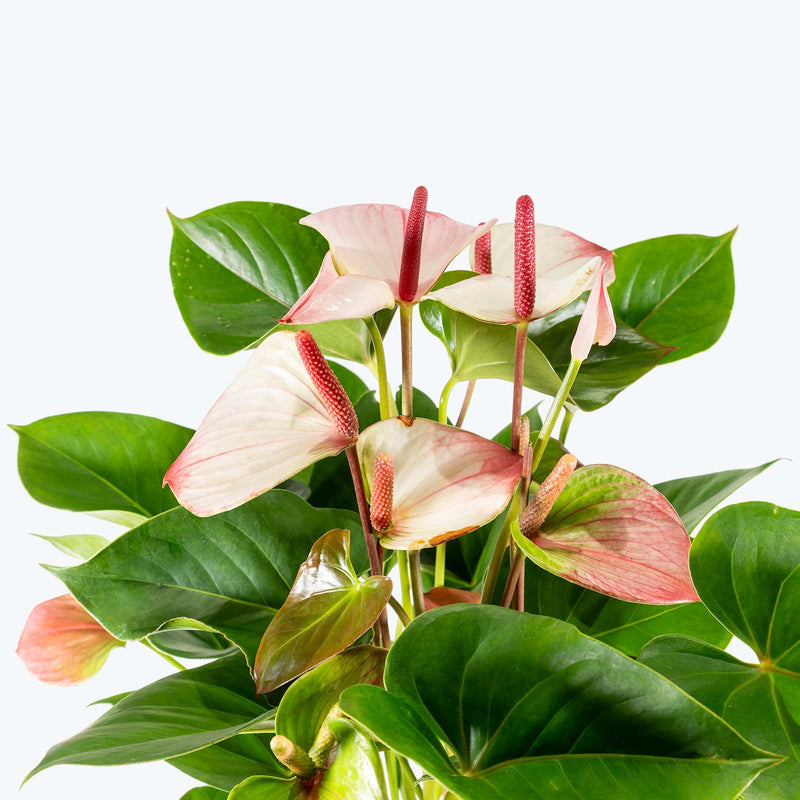
How to care for Anthurium Amalia Elegans
Anthurium Amalia Elegans should not be in a position to see the sun directly, although early morning or late evening sun is fine. Filtered sunlight through a sheer curtain is best and most homes are comprised primarily of indirect sunlight. The best spot for them is where they do not see the sun during the majority of the day but still get bright, indirect light.
Anthurium Amalia Elegans will do well in medium light, but will grow faster and flower more prolifically with brighter light. A good medium-light place in your home would be in the middle of a room that has a regular size window. Remember that plants will grow based on how much light they receive.
Anthurium Amalia Elegans needs to be watered when the top half of the soil is dry to the touch. That usually takes about 1 week in an average home environment. It will vary depending on the time of year, your environment and lighting conditions, but it's always safer to underwater or give the soil a check before you water again.
Anthurium Amalia Elegans will do well in average humidity environments but will appreciate a little bit of humidity if provided, give them a mist daily or get a humidifier.
To encourage flowering, place Anthurium Amalia Elegans in bright, indirect light and dilute a liquid fertilizer to half-strength to feed the plant once a month in spring and summer! Reduce feeding during the dormant winter months. Clean the leaves and spathes regularly with a damp cloth to remove dust and enhance the plant’s appearance.
Anthurium Amalia Elegans is moderately toxic and can cause some adverse reactions when ingested so it is best to not let your pets eat it, which we advise for all plants in general. The severity of the reaction will depend on how much of the plant is ingested but, if you know your pet typically does not eat your plants, this plant will be suitable for your home..
Learn MoreView PlantAnthurium Black
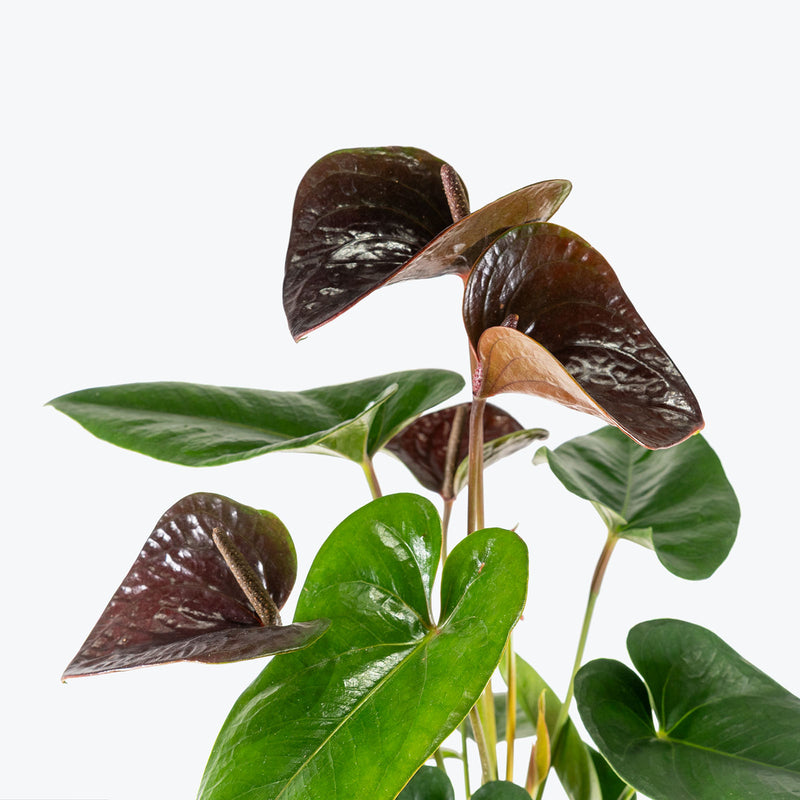
How to care for Anthurium Black
Anthurium Black should not be in a position to see the sun directly, although early morning or late evening sun is fine. Filtered sunlight through a sheer curtain is best and most homes are comprised primarily of indirect sunlight. The best spot for them is where they do not see the sun during the majority of the day but still get bright, indirect light.
Anthurium Black will do well in medium light, but will grow faster and flower more prolifically with brighter light. A good medium-light place in your home would be in the middle of a room that has a regular size window. Remember that plants will grow based on how much light they receive.
Anthurium Black needs to be watered when the top half of the soil is dry to the touch. That usually takes about 1 week in an average home environment. It will vary depending on the time of year, your environment and lighting conditions, but it's always safer to underwater or give the soil a check before you water again.
Anthurium Black will do well in average humidity environments but will appreciate a little bit of humidity if provided, give them a mist daily or get a humidifier.
To encourage Anthurium Black flowering, place the plant in bright, indirect light and dilute a liquid fertilizer to half-strength to feed the plant once a month in spring and summer. Prune any yellow or dead leaves and faded spathes to encourage new growth and maintain a tidy appearance. Repot every two to three years in the spring to refresh the soil and accommodate growth.
Anthurium Black is moderately toxic and can cause some adverse reactions when ingested so it is best to not let your pets eat it, which we advise for all plants in general. The severity of the reaction will depend on how much of the plant is ingested but, if you know your pet typically does not eat your plants, this plant will be suitable for your home..
Learn MoreView PlantAnthurium Brown
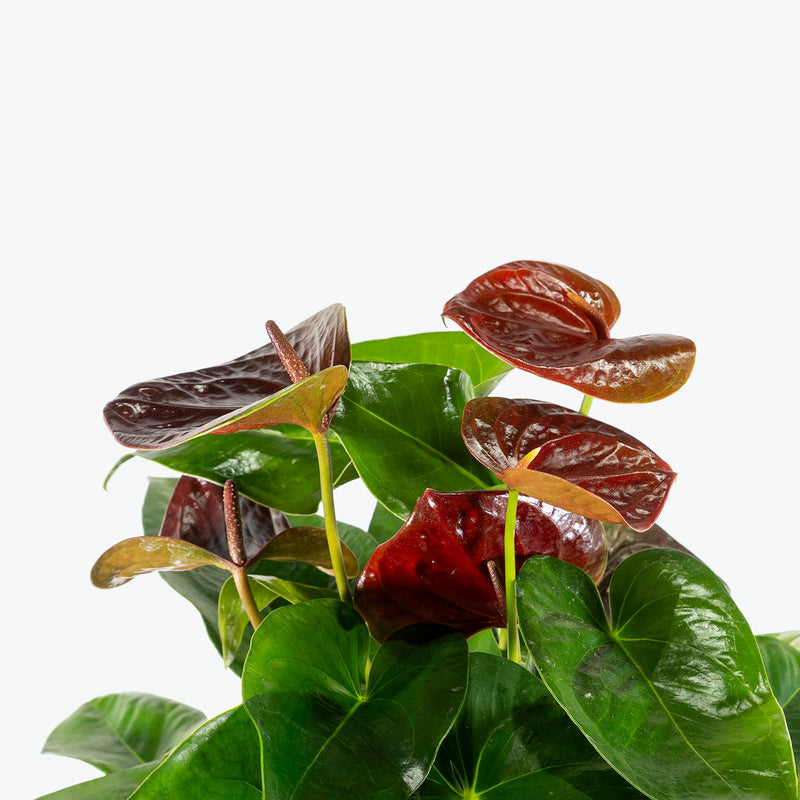
How to care for Anthurium Brown
Anthurium Brown should not be in a position to see the sun directly, although early morning or late evening sun is fine. Filtered sunlight through a sheer curtain is best and most homes are comprised primarily of indirect sunlight. The best spot for them is where they do not see the sun during the majority of the day but still get bright, indirect light.
Anthurium Brown will do well in medium light, but will grow faster and flower more prolifically with brighter light. A good medium-light place in your home would be in the middle of a room that has a regular size window. Remember that plants will grow based on how much light they receive.
Anthurium Brown needs to be watered when the top half of the soil is dry to the touch. That usually takes about 1 week in an average home environment. It will vary depending on the time of year, your environment and lighting conditions, but it's always safer to underwater or give the soil a check before you water again.
Anthurium Brown will do well in average humidity environments but will appreciate a little bit of humidity if provided, give them a mist daily or get a humidifier.
Use a well-draining, peat-based soil mix, and ensure the pot has good drainage. Feed Anthurium Brown every 6–8 weeks during spring and summer with a bloom-boosting fertilizer. Remove spent blooms to encourage more flowering. Anthuriums love consistent warmth and humidity, so avoid drafts or sudden temperature changes.
Anthurium Brown is moderately toxic and can cause some adverse reactions when ingested so it is best to not let your pets eat it, which we advise for all plants in general. The severity of the reaction will depend on how much of the plant is ingested but, if you know your pet typically does not eat your plants, this plant will be suitable for your home..
Learn MoreView PlantAnthurium Clarinervium
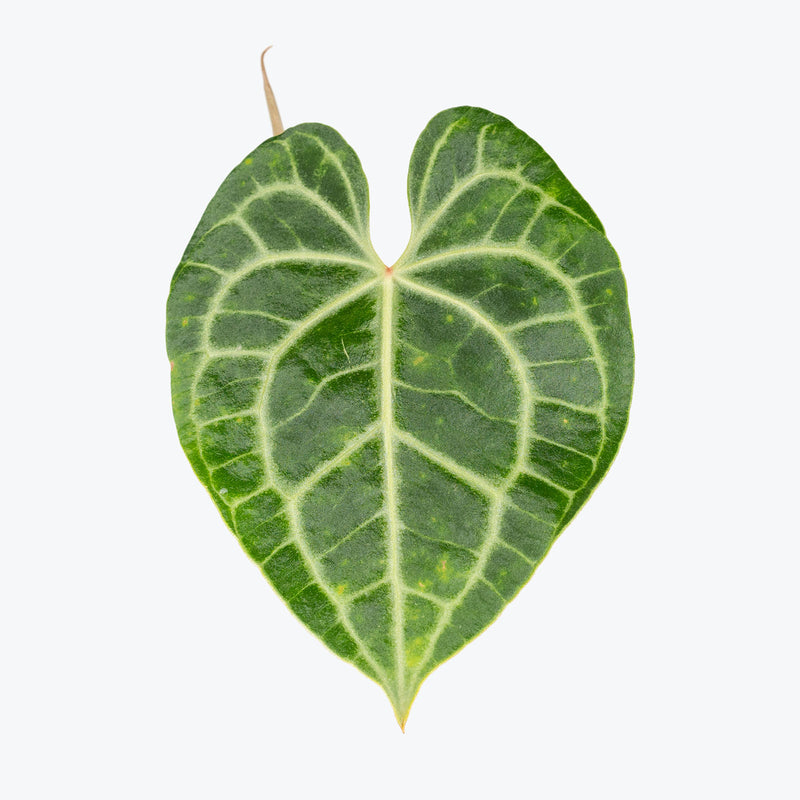
How to care for Anthurium Clarinervium
Anthurium Clarinervium should not be in a position to see the sun directly, although early morning or late evening sun is fine. Filtered sunlight through a sheer curtain is best and most homes are comprised primarily of indirect sunlight. The best spot for them is where they do not see the sun during the majority of the day but still get bright, indirect light.
Anthurium Clarinervium will do best in bright light. A nice bright place inside your home would be on the window sill or a stool that is right next to a window, either with or without blinds, depending on if the plant can handle sun. Remember that plants will grow based on how much light they receive.
Anthurium Clarinervium needs to be watered when the top half of the soil is dry to the touch. That usually takes about 1 week in an average home environment. It will vary depending on the time of year, your environment and lighting conditions, but it's always safer to underwater or give the soil a check before you water again. Expect to water more often in brighter light and less often in lower light.
Anthurium Clarinervium likes a high humidity environment, give them a mist daily or as often as possible. Alternatively, you can put them around a humidifier. Although they won't die if they don't receive enough humidity, their leaves may have some dry, crunchy, or yellow edges.
Try to keep your Anthurium Clarinervium in a chunkier soil mix, if possible, as they are true aroids and love lots of air circulation throughout their soil, not having it stay moist for long periods of time. New growth will be more of a green-rust colour, fading into the deep green of the older leaves as they develop and mature.
Anthurium Clarinervium is moderately toxic and can cause some adverse reactions when ingested so it is best to not let your pets eat it, which we advise for all plants in general. The severity of the reaction will depend on how much of the plant is ingested but, if you know your pet typically does not eat your plants, this plant will be suitable for your home..
Learn MoreView PlantAnthurium Corong x Villenaorum
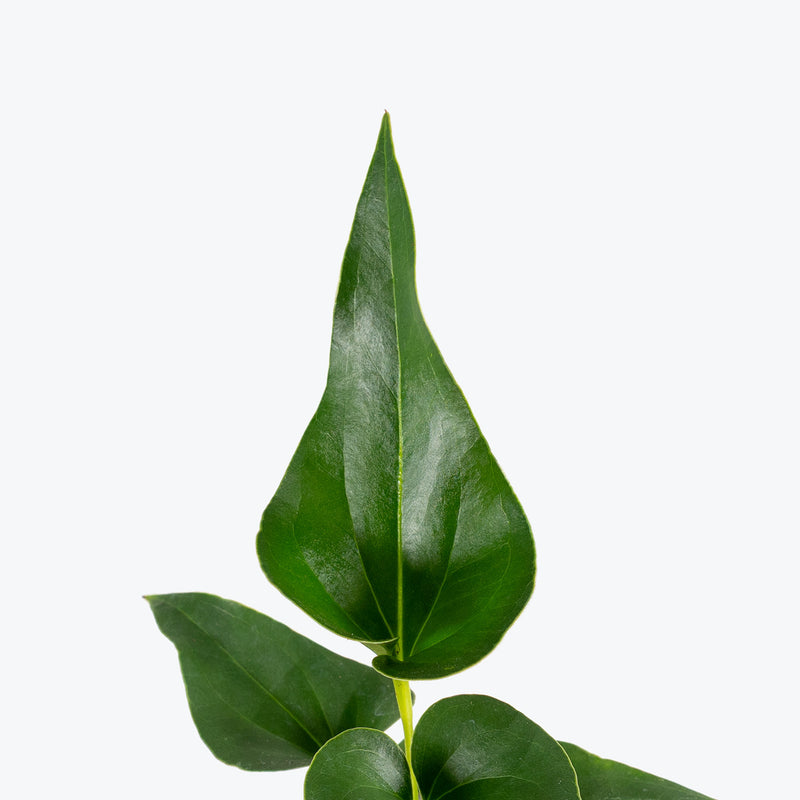
How to care for Anthurium Corong x Villenaorum
Anthurium Corong x Villenaorum should not be in a position to see the sun directly, although early morning or late evening sun is fine. Filtered sunlight through a sheer curtain is best and most homes are comprised primarily of indirect sunlight. The best spot for them is where they do not see the sun during the majority of the day but still get bright, indirect light.
Anthurium Corong x Villenaorum will thrive in bright light, but also can tolerate medium light. A good medium-light place in your home would be in the middle of a room that has a regular size window. They can be placed anywhere between the middle of the room and the window. Remember that plants will grow based on how much light they receive.
Anthurium Corong x Villenaorum needs to be watered when the top half of the soil is dry to the touch. That usually takes about 1 week in an average home environment. It will vary depending on the time of year, your environment and lighting conditions, but it's always safer to underwater or give the soil a check before you water again. Expect to water more often in brighter light and less often in lower light.
Anthurium Corong x Villenaorum likes a high humidity environment, give them a mist daily or as often as possible. Alternatively, you can put them around a humidifier. Although they won't die if they don't receive enough humidity, their leaves may have some dry, crunchy, or yellow edges.
Use a chunky, well-draining mix (orchid bark, perlite, sphagnum moss) to mimic their natural epiphytic habitat. High humidity and warm, stable temperatures will help preserve the velvet texture and crisp veining. Fertilize lightly every 4–6 weeks during the growing season. Avoid harsh light or drafty areas, and gently clean leaves to showcase their shimmer.
Anthurium Corong x Villenaorum is moderately toxic and can cause some adverse reactions when ingested so it is best to not let your pets eat it, which we advise for all plants in general. The severity of the reaction will depend on how much of the plant is ingested but, if you know your pet typically does not eat your plants, this plant will be suitable for your home..
Learn MoreView PlantAnthurium Crystal Hope x Magnificum
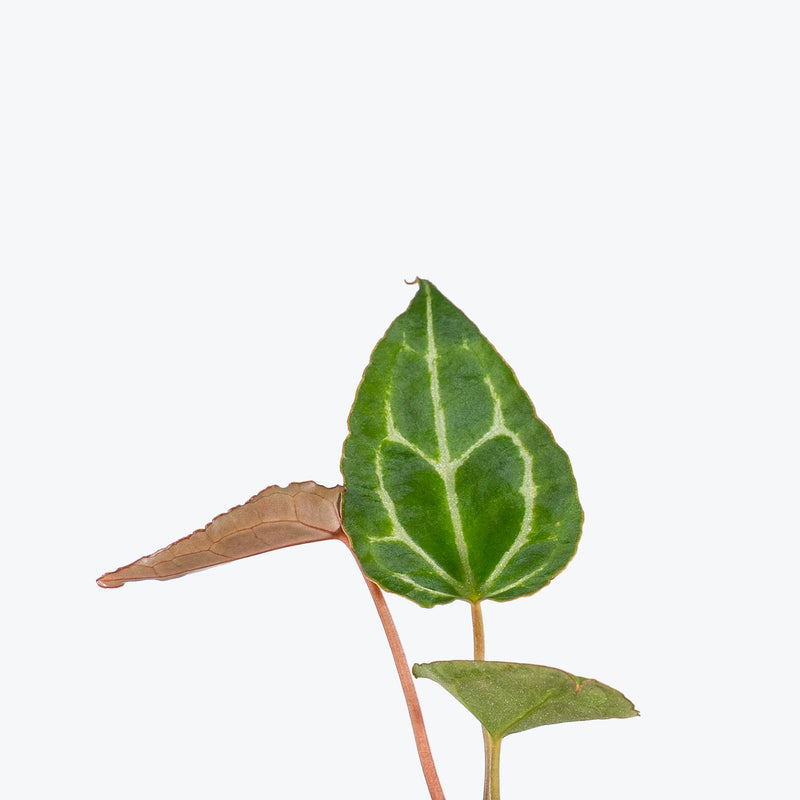
How to care for Anthurium Crystal Hope x Magnificum
Anthurium Crystal Hope x Magnificum should not be in a position to see the sun directly, although early morning or late evening sun is fine. Filtered sunlight through a sheer curtain is best and most homes are comprised primarily of indirect sunlight. The best spot for them is where they do not see the sun during the majority of the day but still get bright, indirect light.
Anthurium Crystal Hope x Magnificum will thrive in bright light, but also can tolerate medium light. A good medium-light place in your home would be in the middle of a room that has a regular size window. They can be placed anywhere between the middle of the room and the window. Remember that plants will grow based on how much light they receive.
Anthurium Crystal Hope x Magnificum needs to be watered when the top half of the soil is dry to the touch. That usually takes about 1 week in an average home environment. It will vary depending on the time of year, your environment and lighting conditions, but it's always safer to underwater or give the soil a check before you water again. Expect to water more often in brighter light and less often in lower light.
Anthurium Crystal Hope x Magnificum likes a high humidity environment, give them a mist daily or as often as possible. Alternatively, you can put them around a humidifier. Although they won't die if they don't receive enough humidity, their leaves may have some dry, crunchy, or yellow edges.
Ensure to keep the Anthurium Crystal Hope x Magnificum away from direct sunlight to prevent leaf burn. Maintaining high humidity is key to preventing crispy leaf edges and promoting healthy growth. When watering, ensure to allow excess water to drain away to prevent root rot. Regularly clean the leaves with a soft, damp cloth to remove dust and enhance photosynthesis. Pruning is rarely needed but remove any yellow or damaged leaves to encourage new growth.
Anthurium Crystal Hope x Magnificum is moderately toxic and can cause some adverse reactions when ingested so it is best to not let your pets eat it, which we advise for all plants in general. The severity of the reaction will depend on how much of the plant is ingested but, if you know your pet typically does not eat your plants, this plant will be suitable for your home..
Learn MoreView PlantAnthurium Crystallinum
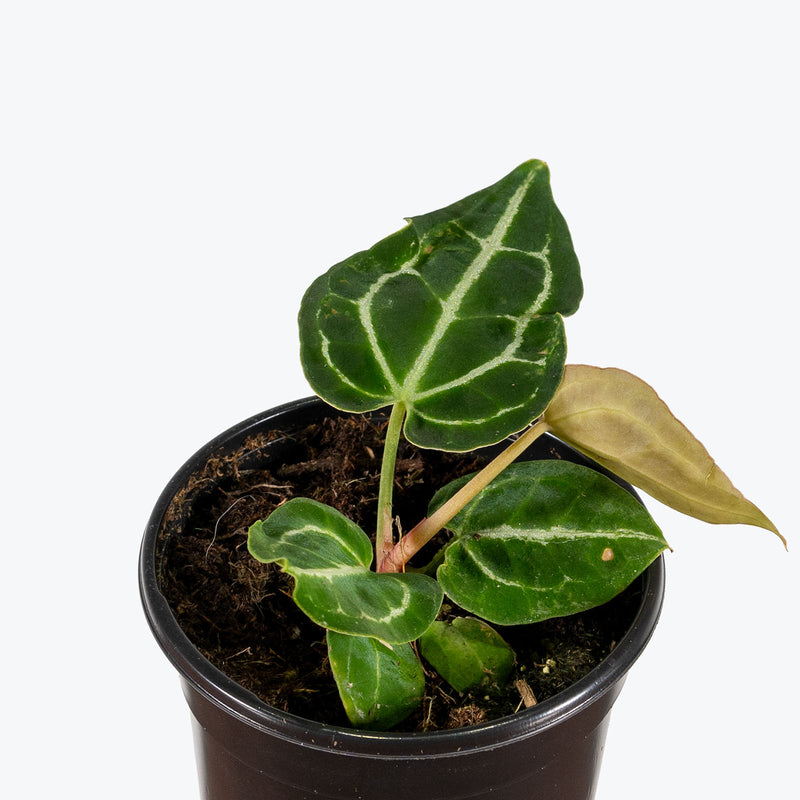
How to care for Anthurium Crystallinum
Anthurium Crystallinum should not be in a position to see the sun directly, although early morning or late evening sun is fine. Filtered sunlight through a sheer curtain is best and most homes are comprised primarily of indirect sunlight. The best spot for them is where they do not see the sun during the majority of the day but still get bright, indirect light.
Anthurium Crystallinum will thrive in bright light, but also can tolerate medium light. A good medium-light place in your home would be in the middle of a room that has a regular size window. They can be placed anywhere between the middle of the room and the window. Remember that plants will grow based on how much light they receive.
Anthurium Crystallinum needs to be watered when the top half of the soil is dry to the touch. That usually takes about 1 week in an average home environment. It will vary depending on the time of year, your environment and lighting conditions, but it's always safer to underwater or give the soil a check before you water again. Expect to water more often in brighter light and less often in lower light.
Anthurium Crystallinum likes a high humidity environment, give them a mist daily or as often as possible. Alternatively, you can put them around a humidifier. Although they won't die if they don't receive enough humidity, their leaves may have some dry, crunchy, or yellow edges.
Ensure to keep the Anthurium Crystallinum away from direct sunlight to prevent leaf burn. Maintaining high humidity is key to preventing crispy leaf edges and promoting healthy growth. When watering, ensure to allow excess water to drain away to prevent root rot. Clean the leaves regularly with a soft, damp cloth to remove dust and support photosynthesis. Provide a support structure such as a moss pole to mimic its natural climbing habit, which can also encourage larger leaf growth.
Anthurium Crystallinum is moderately toxic and can cause some adverse reactions when ingested so it is best to not let your pets eat it, which we advise for all plants in general. The severity of the reaction will depend on how much of the plant is ingested but, if you know your pet typically does not eat your plants, this plant will be suitable for your home..
Learn MoreView PlantAnthurium Crystallinum Turtle
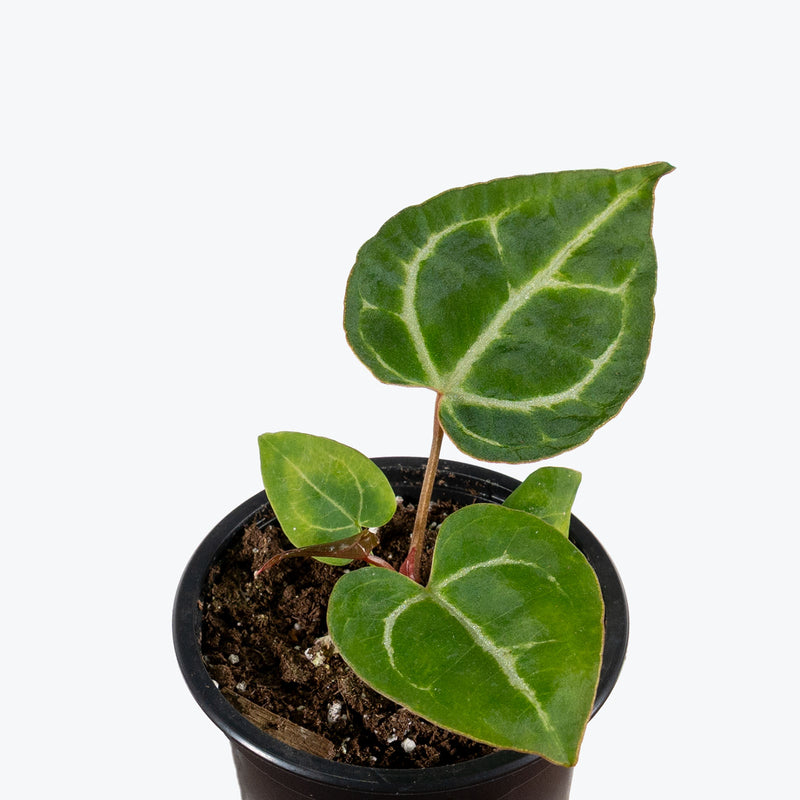
How to care for Anthurium Crystallinum Turtle
Anthurium Crystallinum Turtle should not be in a position to see the sun directly, although early morning or late evening sun is fine. Filtered sunlight through a sheer curtain is best and most homes are comprised primarily of indirect sunlight. The best spot for them is where they do not see the sun during the majority of the day but still get bright, indirect light.
Anthurium Crystallinum Turtle will thrive in bright light, but also can tolerate medium light. A good medium-light place in your home would be in the middle of a room that has a regular size window. They can be placed anywhere between the middle of the room and the window. Remember that plants will grow based on how much light they receive.
Anthurium Crystallinum Turtle needs to be watered when the top half of the soil is dry to the touch. That usually takes about 1 week in an average home environment. It will vary depending on the time of year, your environment and lighting conditions, but it's always safer to underwater or give the soil a check before you water again. Expect to water more often in brighter light and less often in lower light.
Anthurium Crystallinum Turtle likes a high humidity environment, give them a mist daily or as often as possible. Alternatively, you can put them around a humidifier. Although they won't die if they don't receive enough humidity, their leaves may have some dry, crunchy, or yellow edges.
Keep the Anthurium Crystallinum Turtle away from direct sunlight to prevent leaf burn. Maintaining high humidity is key to preventing crispy leaf edges and promoting healthy growth. When watering, ensure to allow excess water to drain away to prevent root rot. Clean the leaves regularly with a soft, damp cloth to remove dust and enhance the plant's aesthetic appeal. Prune any yellowing or dead leaves to encourage healthier growth and maintain its ornamental look.
Anthurium Crystallinum Turtle is moderately toxic and can cause some adverse reactions when ingested so it is best to not let your pets eat it, which we advise for all plants in general. The severity of the reaction will depend on how much of the plant is ingested but, if you know your pet typically does not eat your plants, this plant will be suitable for your home..
Learn MoreView PlantAnthurium Dorayaki

How to care for Anthurium Dorayaki
Anthurium Dorayaki should not be in a position to see the sun directly, although early morning or late evening sun is fine. Filtered sunlight through a sheer curtain is best and most homes are comprised primarily of indirect sunlight. The best spot for them is where they do not see the sun during the majority of the day but still get bright, indirect light.
Anthurium Dorayaki will thrive in bright light, but also can tolerate medium light. A good medium-light place in your home would be in the middle of a room that has a regular size window. They can be placed anywhere between the middle of the room and the window. Remember that plants will grow based on how much light they receive.
Allow the top quarter of the soil to dry before watering Anthurium Dorayaki again. This usually takes about 3 - 4 days in an average home environment. It will vary depending on the time of year, your environment and lighting conditions. Expect to water more often in brighter light and less often in lower light.
Anthurium Dorayaki likes a high humidity environment, give them a mist daily or as often as possible. Alternatively, you can put them around a humidifier. Although they won't die if they don't receive enough humidity, their leaves may have some dry, crunchy, or yellow edges.
Use a chunky, airy mix of orchid bark, perlite, and peat to ensure good drainage and aeration. Fertilize monthly during the growing season with a diluted, balanced fertilizer. Wipe leaves gently with a soft cloth to remove dust and preserve their velvet sheen. Anthurium Dorayaki prefers warm, stable conditions—avoid cold drafts or sudden temperature changes.
Anthurium Dorayaki is moderately toxic and can cause some adverse reactions when ingested so it is best to not let your pets eat it, which we advise for all plants in general. The severity of the reaction will depend on how much of the plant is ingested but, if you know your pet typically does not eat your plants, this plant will be suitable for your home..
Learn MoreView PlantAnthurium Fantasia
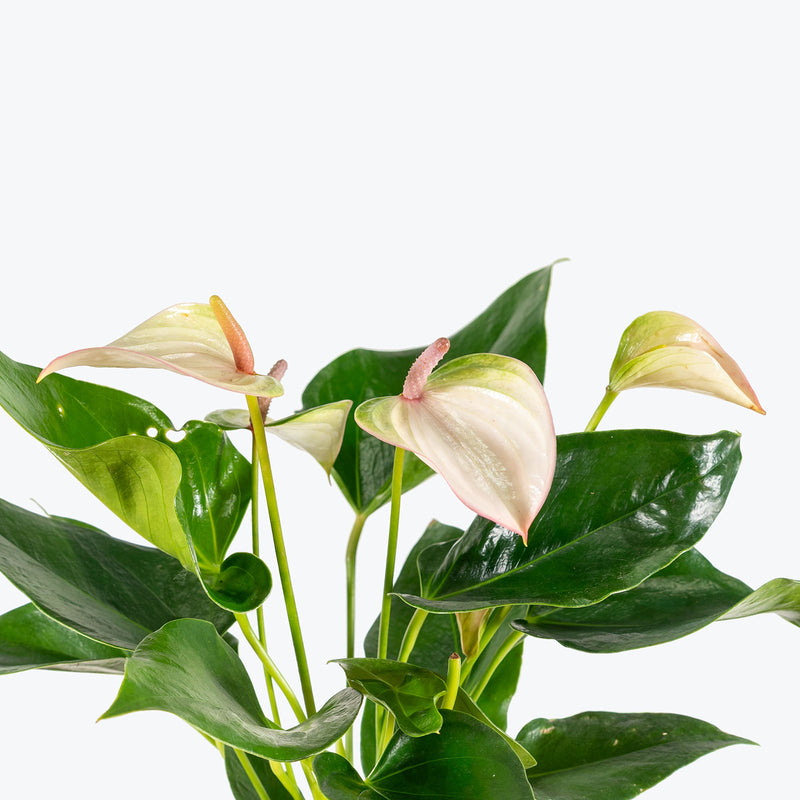
How to care for Anthurium Fantasia
Anthurium Fantasia should not be in a position to see the sun directly, although early morning or late evening sun is fine. Filtered sunlight through a sheer curtain is best and most homes are comprised primarily of indirect sunlight. The best spot for them is where they do not see the sun during the majority of the day but still get bright, indirect light.
Anthurium Fantasia will do well in medium light, but will grow faster and flower more prolifically with brighter light. A good medium-light place in your home would be in the middle of a room that has a regular size window. Remember that plants will grow based on how much light they receive.
Anthurium Fantasia needs to be watered when the top half of the soil is dry to the touch. That usually takes about 1 week in an average home environment. It will vary depending on the time of year, your environment and lighting conditions, but it's always safer to underwater or give the soil a check before you water again.
Anthurium Fantasia will do well in average humidity environments but will appreciate a little bit of humidity if provided, give them a mist daily or get a humidifier.
Encourage long-lasting blooms with a monthly feeding of diluted, bloom-boosting fertilizer during spring and summer. Keep the leaves and spathes clean with a soft cloth to maintain their shine. Use a well-draining potting mix that includes orchid bark or perlite to keep roots healthy and prevent rot.
Anthurium Fantasia is moderately toxic and can cause some adverse reactions when ingested so it is best to not let your pets eat it, which we advise for all plants in general. The severity of the reaction will depend on how much of the plant is ingested but, if you know your pet typically does not eat your plants, this plant will be suitable for your home..
Learn MoreView PlantAnthurium Forgetii
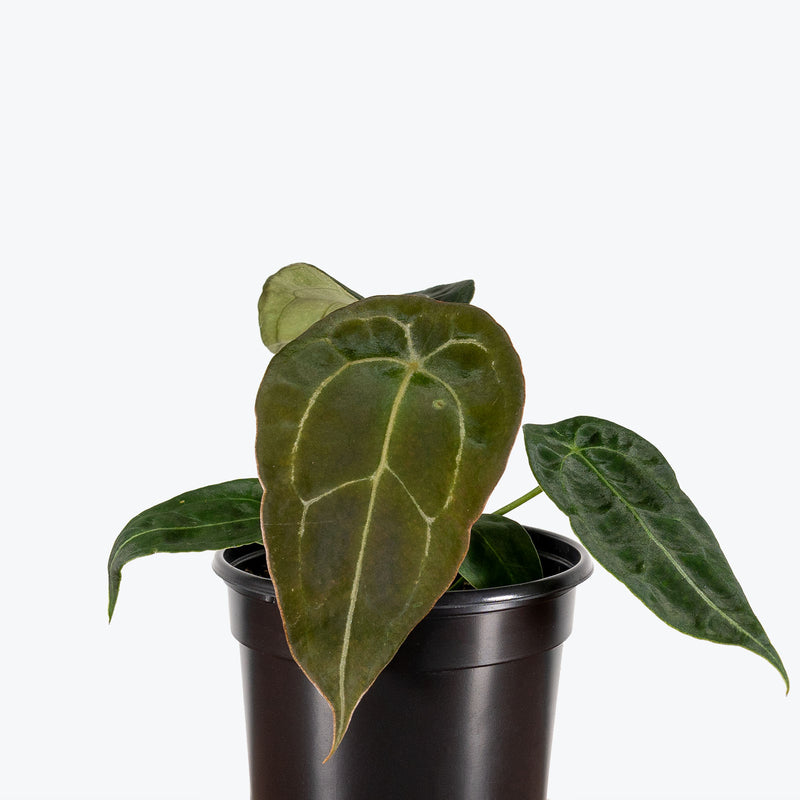
How to care for Anthurium Forgetii
They should not be in a position to see the sun directly, although early morning or late evening sun is fine. Filtered sunlight through a sheer curtain is best and most homes are comprised primarily of indirect sunlight. The best spot for them is where they do not see the sun during the majority of the day but still get bright, indirect light.
They will thrive in bright light, but also can tolerate medium light. A good medium-light place in your home would be in the middle of a room that has a regular size window. They can be placed anywhere between the middle of the room and the window. Remember that plants will grow based on how much light they receive.
They need to be watered when the top half of the soil is dry to the touch. That usually takes about 1 week in an average home environment. It will vary depending on the time of year, your environment and lighting conditions, but it's always safer to underwater or give the soil a check before you water again. Expect to water more often in brighter light and less often in lower light.
They like a high humidity environment, give them a mist daily or as often as possible. Alternatively, you can put them around a humidifier. Although they won't die if they don't receive enough humidity, their leaves may have some dry, crunchy, or yellow edges.
Ensure to keep the Anthurium Forgetii away from direct sunlight to prevent leaf burn. Maintaining high humidity is key to preventing crispy leaf edges and promoting healthy growth. When watering, ensure to allow excess water to drain away to prevent root rot. Wipe the leaves occasionally to remove dust and maintain its aesthetic appeal.
This plant is moderately toxic and can cause some adverse reactions when ingested so it is best to not let your pets eat it, which we advise for all plants in general. The severity of the reaction will depend on how much of the plant is ingested but, if you know your pet typically does not eat your plants, this plant will be suitable for your home..
Learn MoreView PlantAnthurium Hookeri Variegata
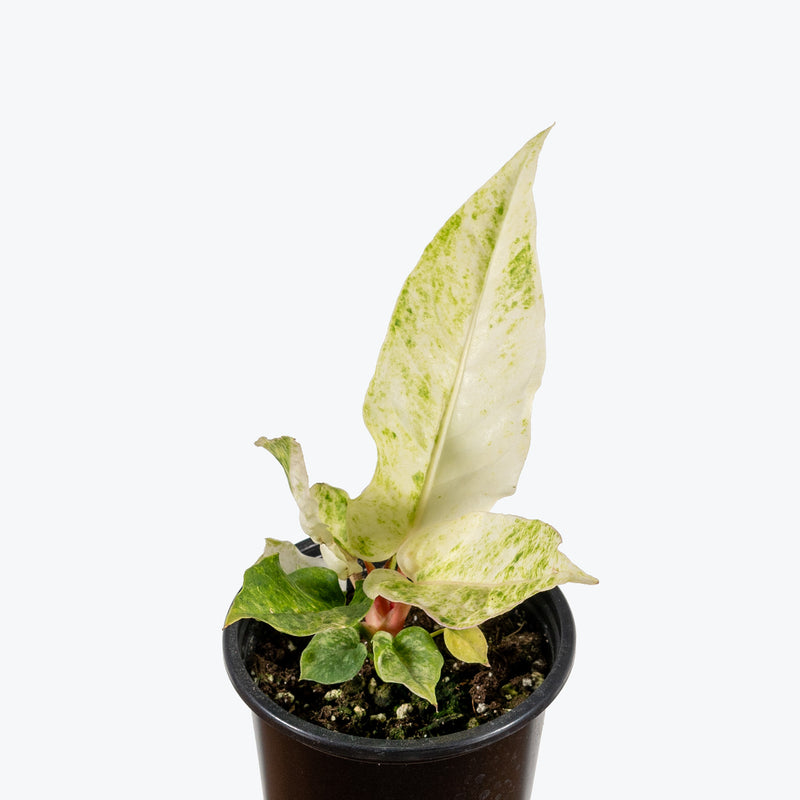
How to care for Anthurium Hookeri Variegata
Anthurium Hookeri Variegata should not be in a position to see the sun directly, although early morning or late evening sun is fine. Filtered sunlight through a sheer curtain is best and most homes are comprised primarily of indirect sunlight. The best spot for them is where they do not see the sun during the majority of the day but still get bright, indirect light.
Anthurium Hookeri Variegata will thrive in bright light, but also can tolerate medium light. A good medium-light place in your home would be in the middle of a room that has a regular size window. They can be placed anywhere between the middle of the room and the window. Remember that plants will grow based on how much light they receive.
Anthurium Hookeri Variegata needs to be watered when the top half of the soil is dry to the touch. That usually takes about 1 week in an average home environment. It will vary depending on the time of year, your environment and lighting conditions, but it's always safer to underwater or give the soil a check before you water again. Expect to water more often in brighter light and less often in lower light.
Anthurium Hookeri Variegata will do well in average humidity environments but will appreciate a little bit of humidity if provided, give them a mist daily or get a humidifier.
Anthurium Hookeri Variegata likes it very warm so be sure not to let the indoor temperature drop below 16°C and keep it away from breezes. In its natural environment, it lives on the rainforest floor where it gets only the most dappled and filtered sunlight so keep that in mind when looking for a place to put your plant!
Anthurium Hookeri Variegata is moderately toxic and can cause some adverse reactions when ingested so it is best to not let your pets eat it, which we advise for all plants in general. The severity of the reaction will depend on how much of the plant is ingested but, if you know your pet typically does not eat your plants, this plant will be suitable for your home..
Learn MoreView PlantAnthurium Jenmanii Golden
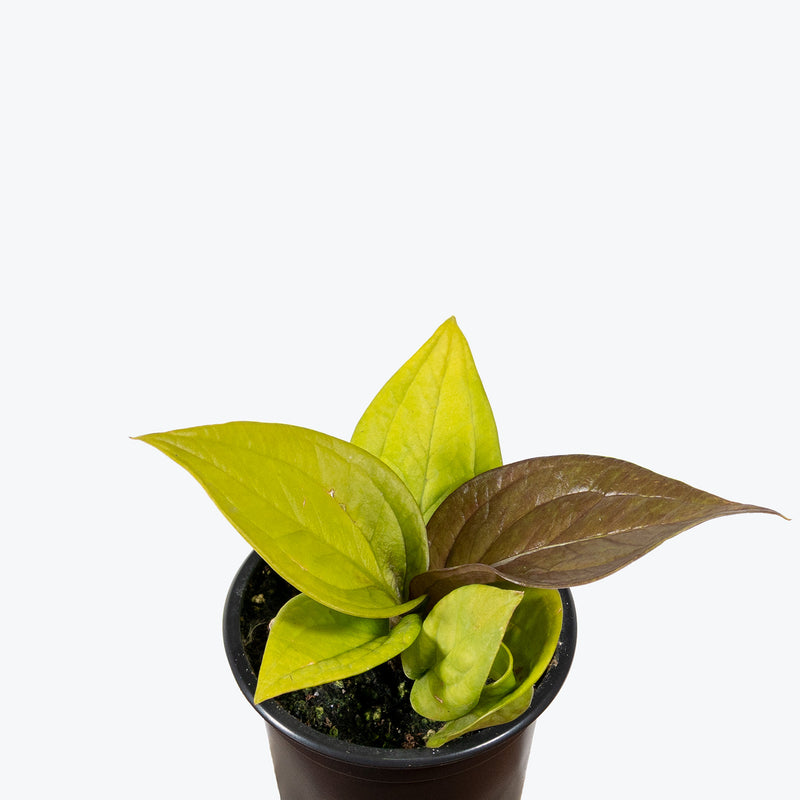
How to care for Anthurium Jenmanii Golden
Anthurium Jenmanii Golden should not be in a position to see the sun directly, although early morning or late evening sun is fine. Filtered sunlight through a sheer curtain is best and most homes are comprised primarily of indirect sunlight. The best spot for them is where they do not see the sun during the majority of the day but still get bright, indirect light.
Anthurium Jenmanii Golden will thrive in bright light, but also can tolerate medium light. A good medium-light place in your home would be in the middle of a room that has a regular size window. They can be placed anywhere between the middle of the room and the window. Remember that plants will grow based on how much light they receive.
Anthurium Jenmanii Golden needs to be watered when the top half of the soil is dry to the touch. That usually takes about 1 week in an average home environment. It will vary depending on the time of year, your environment and lighting conditions, but it's always safer to underwater or give the soil a check before you water again. Expect to water more often in brighter light and less often in lower light.
Anthurium Jenmanii Golden will do well in average humidity environments but will appreciate a little bit of humidity if provided, give them a mist daily or get a humidifier.
Use a chunky, well-draining mix (Aroid Mix) to avoid root rot. Allow the soil to dry out slightly between waterings Anthurium Jenmanii Golden, as this drought-tolerant Anthurium dislikes staying soggy. Fertilize every 4–6 weeks during the growing season with a diluted, balanced fertilizer. Clean the glossy leaves occasionally to keep them vibrant and dust-free.
Anthurium Jenmanii Golden is moderately toxic and can cause some adverse reactions when ingested so it is best to not let your pets eat it, which we advise for all plants in general. The severity of the reaction will depend on how much of the plant is ingested but, if you know your pet typically does not eat your plants, this plant will be suitable for your home..
Learn MoreView PlantAnthurium Jenmanii Green Lady
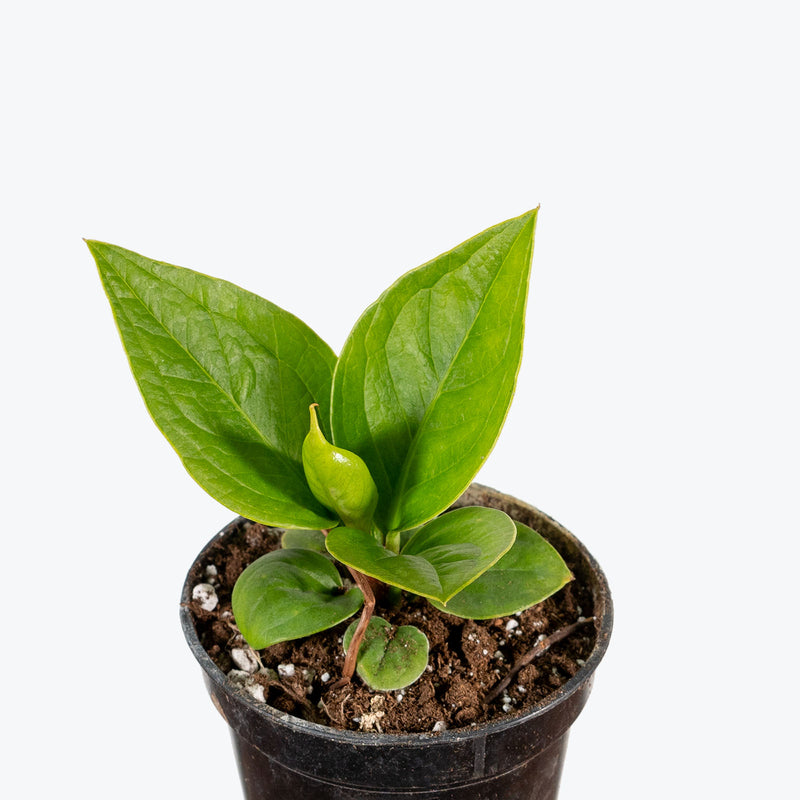
How to care for Anthurium Jenmanii Green Lady
Anthurium Jenmanii Green Lady should not be in a position to see the sun directly, although early morning or late evening sun is fine. Filtered sunlight through a sheer curtain is best and most homes are comprised primarily of indirect sunlight. The best spot for them is where they do not see the sun during the majority of the day but still get bright, indirect light.
Anthurium Jenmanii Green Lady will thrive in bright light, but also can tolerate medium light. A good medium-light place in your home would be in the middle of a room that has a regular size window. They can be placed anywhere between the middle of the room and the window. Remember that plants will grow based on how much light they receive.
Allow the top quarter of the soil to dry before watering again. This usually takes about 3 - 4 days in an average home environment. It will vary depending on the time of year, your environment and lighting conditions. Expect to water Anthurium Jenmanii Green Lady more often in brighter light and less often in lower light.
Anthurium Jenmanii Green Lady likes a high humidity environment, give them a mist daily or as often as possible. Alternatively, you can put them around a humidifier. Although they won't die if they don't receive enough humidity, their leaves may have some dry, crunchy, or yellow edges.
Fertilize Anthurium Jenmanii Green Lady with a balanced, liquid fertilizer every two months during the growing season. Keep the leaves clean of dust to allow the plant to photosynthesize efficiently. Prune any yellow or damaged leaves to keep the plant healthy and encourage new growth.
Anthurium Jenmanii Green Lady is moderately toxic and can cause some adverse reactions when ingested so it is best to not let your pets eat it, which we advise for all plants in general. The severity of the reaction will depend on how much of the plant is ingested but, if you know your pet typically does not eat your plants, this plant will be suitable for your home..
Learn MoreView PlantAnthurium Joli Pink
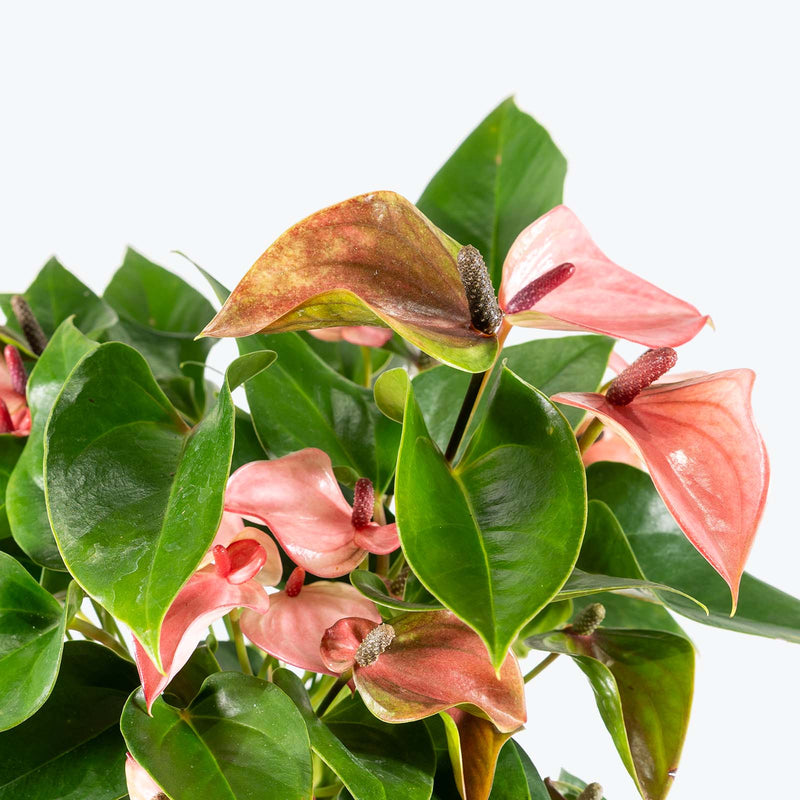
How to care for Anthurium Joli Pink
Anthurium Joli Pink should not be in a position to see the sun directly, although early morning or late evening sun is fine. Filtered sunlight through a sheer curtain is best and most homes are comprised primarily of indirect sunlight. The best spot for them is where they do not see the sun during the majority of the day but still get bright, indirect light.
Anthurium Joli Pink will do well in medium light, but will grow faster and flower more prolifically with brighter light. A good medium-light place in your home would be in the middle of a room that has a regular size window. Remember that plants will grow based on how much light they receive.
Anthurium Joli Pink needs to be watered when the top half of the soil is dry to the touch. That usually takes about 1 week in an average home environment. It will vary depending on the time of year, your environment and lighting conditions, but it's always safer to underwater or give the soil a check before you water again.
Anthurium Joli Pink will do well in average humidity environments but will appreciate a little bit of humidity if provided, give them a mist daily or get a humidifier.
Fertilize Anthurium Joli Pink every 6–8 weeks during the growing season with a balanced liquid fertilizer diluted to half strength. Wipe leaves gently with a damp cloth to remove dust and enhance the plant’s natural shine. Repot every 1–2 years using a loose, well-draining mix.
Anthurium Joli Pink is moderately toxic and can cause some adverse reactions when ingested so it is best to not let your pets eat it, which we advise for all plants in general. The severity of the reaction will depend on how much of the plant is ingested but, if you know your pet typically does not eat your plants, this plant will be suitable for your home..
Learn MoreView PlantAnthurium Jungle King
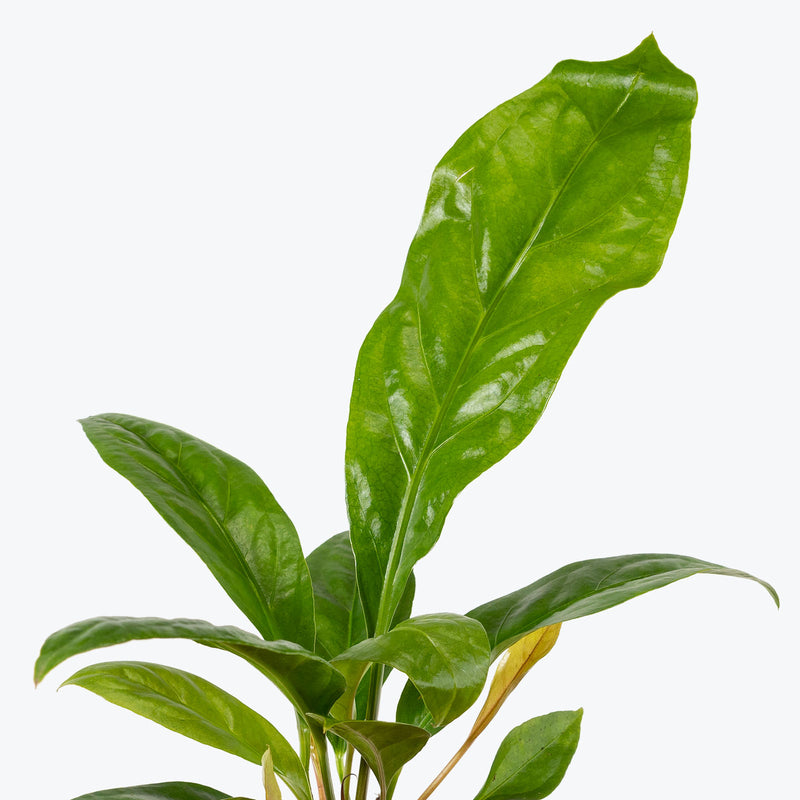
How to care for Anthurium Jungle King
They should not be in a position to see the sun directly, although early morning or late evening sun is fine. Filtered sunlight through a sheer curtain is best and most homes are comprised primarily of indirect sunlight. The best spot for them is where they do not see the sun during the majority of the day but still get bright, indirect light.
They will thrive in bright light, but also can tolerate medium light. A good medium-light place in your home would be in the middle of a room that has a regular size window. They can be placed anywhere between the middle of the room and the window. Remember that plants will grow based on how much light they receive.
They need to be watered when the top half of the soil is dry to the touch. That usually takes about 1 week in an average home environment. It will vary depending on the time of year, your environment and lighting conditions, but it's always safer to underwater or give the soil a check before you water again. Expect to water more often in brighter light and less often in lower light.
They will do well in average humidity environments but will appreciate a little bit of humidity if provided, give them a mist daily or get a humidifier.
This Anthurium likes it very warm so be sure not to let the indoor temperature drop below 16°C and keep it away from breezes. In its natural environment, it lives on the rainforest floor where it gets only the most dappled and filtered sunlight so keep that in mind when looking for a place to put your plant!
This plant is moderately toxic and can cause some adverse reactions when ingested so it is best to not let your pets eat it, which we advise for all plants in general. The severity of the reaction will depend on how much of the plant is ingested but, if you know your pet typically does not eat your plants, this plant will be suitable for your home..
Learn MoreView PlantAnthurium Luxurians Dark Form
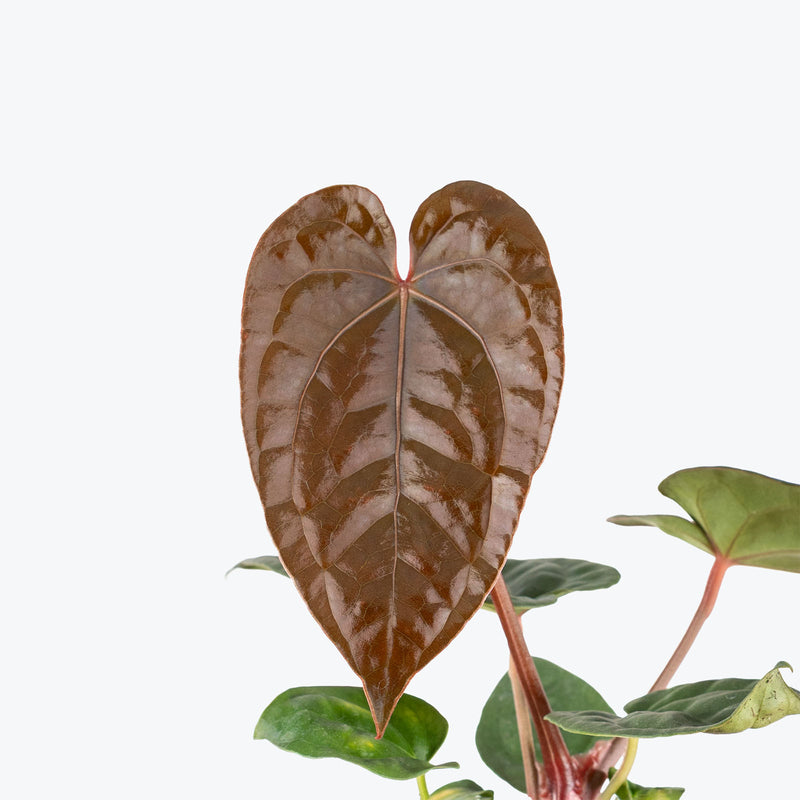
How to care for Anthurium Luxurians Dark Form
Anthurium Luxurians Dark Form should not be in a position to see the sun directly, although early morning or late evening sun is fine. Filtered sunlight through a sheer curtain is best and most homes are comprised primarily of indirect sunlight. The best spot for them is where they do not see the sun during the majority of the day but still get bright, indirect light.
Anthurium Luxurians Dark Form will thrive in bright light, but also can tolerate medium light. A good medium-light place in your home would be in the middle of a room that has a regular size window. They can be placed anywhere between the middle of the room and the window. Remember that plants will grow based on how much light they receive.
Allow the top quarter of the soil to dry before watering Anthurium Luxurians Dark Form again. This usually takes about 3 - 4 days in an average home environment. It will vary depending on the time of year, your environment and lighting conditions. Expect to water more often in brighter light and less often in lower light.
Anthurium Luxurians Dark Form likes a high humidity environment, give them a mist daily or as often as possible. Alternatively, you can put them around a humidifier. Although they won't die if they don't receive enough humidity, their leaves may have some dry, crunchy, or yellow edges.
Grow in a chunky, airy aroid mix with plenty of bark, perlite, and sphagnum to support healthy roots. Fertilize monthly during active growth with a diluted foliage fertilizer. Rotate Anthurium Luxurians Dark Form regularly to balance leaf orientation, and provide a moss pole or sturdy support for mature plants. Protect from drafts and sudden changes in temperature, as this species is sensitive to fluctuations.
Anthurium Luxurians Dark Form is moderately toxic and can cause some adverse reactions when ingested so it is best to not let your pets eat it, which we advise for all plants in general. The severity of the reaction will depend on how much of the plant is ingested but, if you know your pet typically does not eat your plants, this plant will be suitable for your home..
Learn MoreView PlantAnthurium Luxurians Platinum
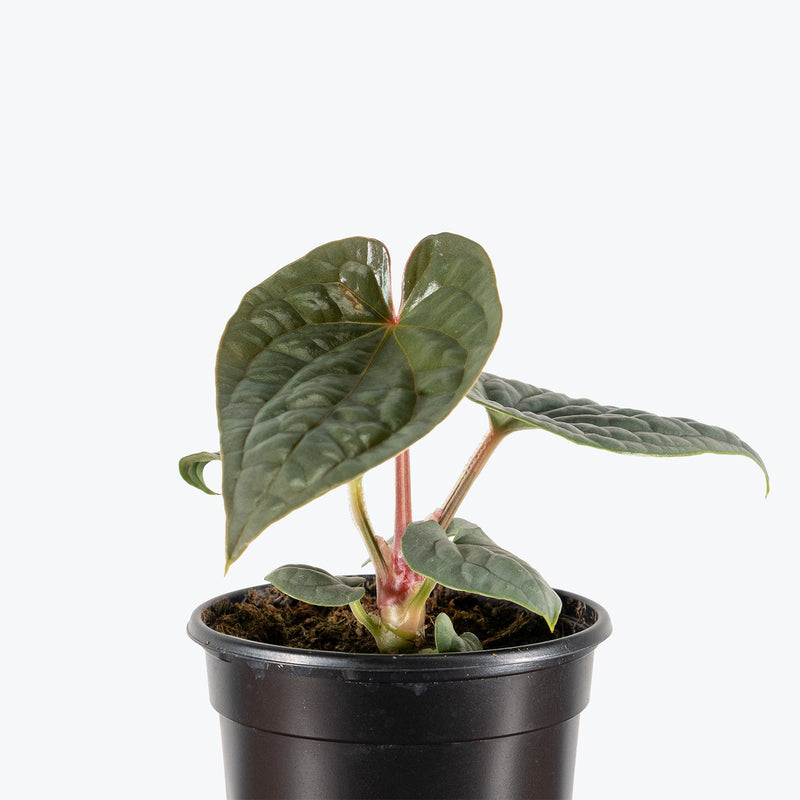
How to care for Anthurium Luxurians Platinum
Anthurium Luxurians Platinum should not be in a position to see the sun directly, although early morning or late evening sun is fine. Filtered sunlight through a sheer curtain is best and most homes are comprised primarily of indirect sunlight. The best spot for them is where they do not see the sun during the majority of the day but still get bright, indirect light.
Anthurium Luxurians Platinum will thrive in bright light, but also can tolerate medium light. A good medium-light place in your home would be in the middle of a room that has a regular size window. They can be placed anywhere between the middle of the room and the window. Remember that plants will grow based on how much light they receive.
Allow the top quarter of the soil to dry before watering Anthurium Luxurians Platinum again. This usually takes about 3 - 4 days in an average home environment. It will vary depending on the time of year, your environment and lighting conditions. Expect to water more often in brighter light and less often in lower light.
Anthurium Luxurians Platinum likes a high humidity environment, give them a mist daily or as often as possible. Alternatively, you can put them around a humidifier. Although they won't die if they don't receive enough humidity, their leaves may have some dry, crunchy, or yellow edges.
Grow in a chunky aroid mix rich in orchid bark, perlite, and sphagnum to support airflow and drainage. Fertilize Anthurium Luxurians Platinum monthly during the growing season with a diluted foliage fertilizer. Rotate for balanced light exposure and stake larger leaves for support. Avoid sudden changes in temperature or humidity, as luxurians are sensitive to fluctuations.
Anthurium Luxurians Platinum is moderately toxic and can cause some adverse reactions when ingested so it is best to not let your pets eat it, which we advise for all plants in general. The severity of the reaction will depend on how much of the plant is ingested but, if you know your pet typically does not eat your plants, this plant will be suitable for your home..
Learn MoreView PlantAnthurium Magnificum
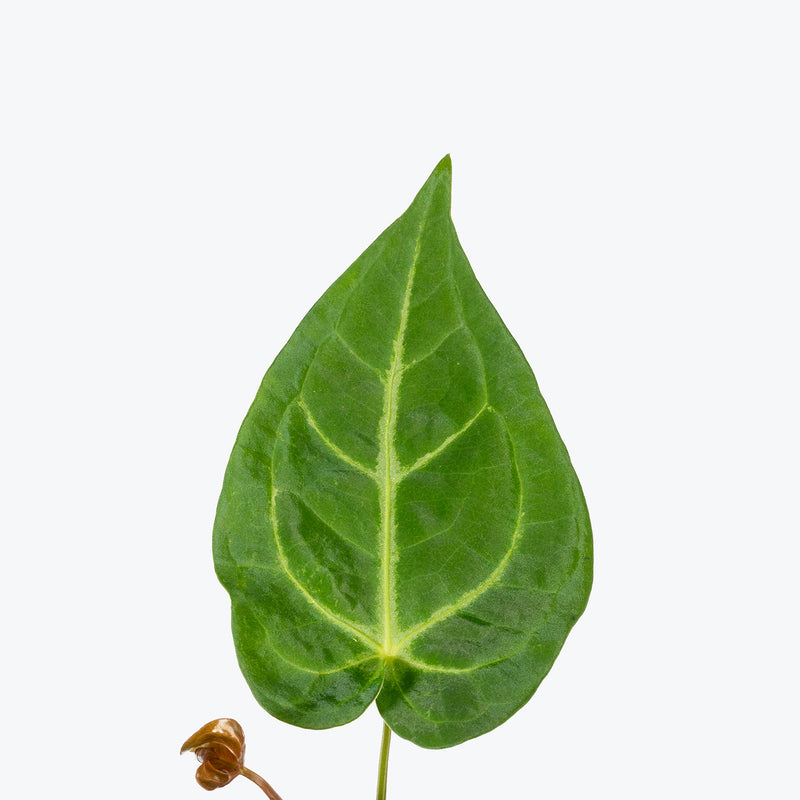
How to care for Anthurium Magnificum
Anthurium Magnificum should not be in a position to see the sun directly, although early morning or late evening sun is fine. Filtered sunlight through a sheer curtain is best and most homes are comprised primarily of indirect sunlight. The best spot for them is where they do not see the sun during the majority of the day but still get bright, indirect light.
Anthurium Magnificum will thrive in bright light, but also can tolerate medium light. A good medium-light place in your home would be in the middle of a room that has a regular size window. They can be placed anywhere between the middle of the room and the window. Remember that plants will grow based on how much light they receive.
Anthurium Magnificum needs to be watered when the top half of the soil is dry to the touch. That usually takes about 1 week in an average home environment. It will vary depending on the time of year, your environment and lighting conditions, but it's always safer to underwater or give the soil a check before you water again. Expect to water more often in brighter light and less often in lower light.
Anthurium Magnificum will do well in average humidity environments but will appreciate a little bit of humidity if provided, give them a mist daily or get a humidifier.
Fertilize Anthurium Magnificum lightly every month during the growing season (spring and summer) with a balanced liquid fertilizer diluted to half strength. Avoid feeding in the winter when growth naturally slows. Provide support for the plant as it grows, as the large leaves can become heavy. Regularly clean the leaves with a soft, damp cloth to remove any dust accumulation and inspect for pests.
Anthurium Magnificum is moderately toxic and can cause some adverse reactions when ingested so it is best to not let your pets eat it, which we advise for all plants in general. The severity of the reaction will depend on how much of the plant is ingested but, if you know your pet typically does not eat your plants, this plant will be suitable for your home..
Learn MoreView PlantAnthurium Magnificum x Forgetii
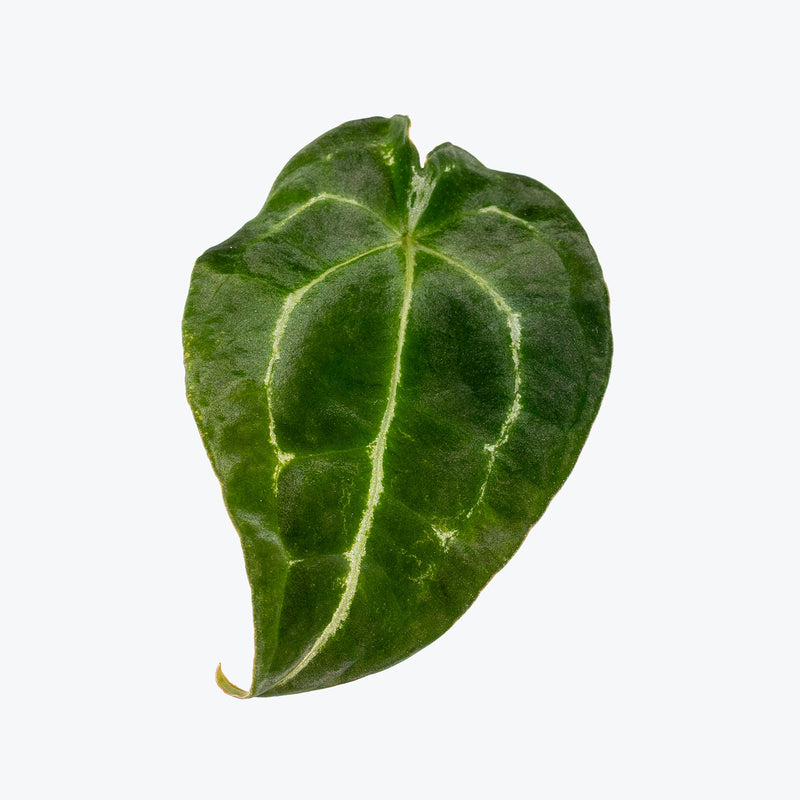
How to care for Anthurium Magnificum x Forgetii
Anthurium Magnificum x Forgetii should not be in a position to see the sun directly, although early morning or late evening sun is fine. Filtered sunlight through a sheer curtain is best and most homes are comprised primarily of indirect sunlight. The best spot for them is where they do not see the sun during the majority of the day but still get bright, indirect light.
Anthurium Magnificum x Forgetii will thrive in bright light, but also can tolerate medium light. A good medium-light place in your home would be in the middle of a room that has a regular size window. They can be placed anywhere between the middle of the room and the window. Remember that plants will grow based on how much light they receive.
Anthurium Magnificum x Forgetii needs to be watered when the top half of the soil is dry to the touch. That usually takes about 1 week in an average home environment. It will vary depending on the time of year, your environment and lighting conditions, but it's always safer to underwater or give the soil a check before you water again. Expect to water more often in brighter light and less often in lower light.
Anthurium Magnificum x Forgetii likes a high humidity environment, give them a mist daily or as often as possible. Alternatively, you can put them around a humidifier. Although they won't die if they don't receive enough humidity, their leaves may have some dry, crunchy, or yellow edges.
Keep the Anthurium Magnificum x Forgetii away from direct sunlight to prevent leaf burn. Maintaining high humidity is key to preventing crispy leaf edges and promoting healthy growth. When watering, ensure to allow excess water to drain away to prevent root rot. Regularly clean the leaves with a soft, damp cloth to remove dust and enhance their appearance. Pruning is rarely needed but remove any yellow or damaged leaves to encourage new growth.
Anthurium Magnificum x Forgetii is moderately toxic and can cause some adverse reactions when ingested so it is best to not let your pets eat it, which we advise for all plants in general. The severity of the reaction will depend on how much of the plant is ingested but, if you know your pet typically does not eat your plants, this plant will be suitable for your home..
Learn MoreView PlantAnthurium Magnificum x Villenaorum
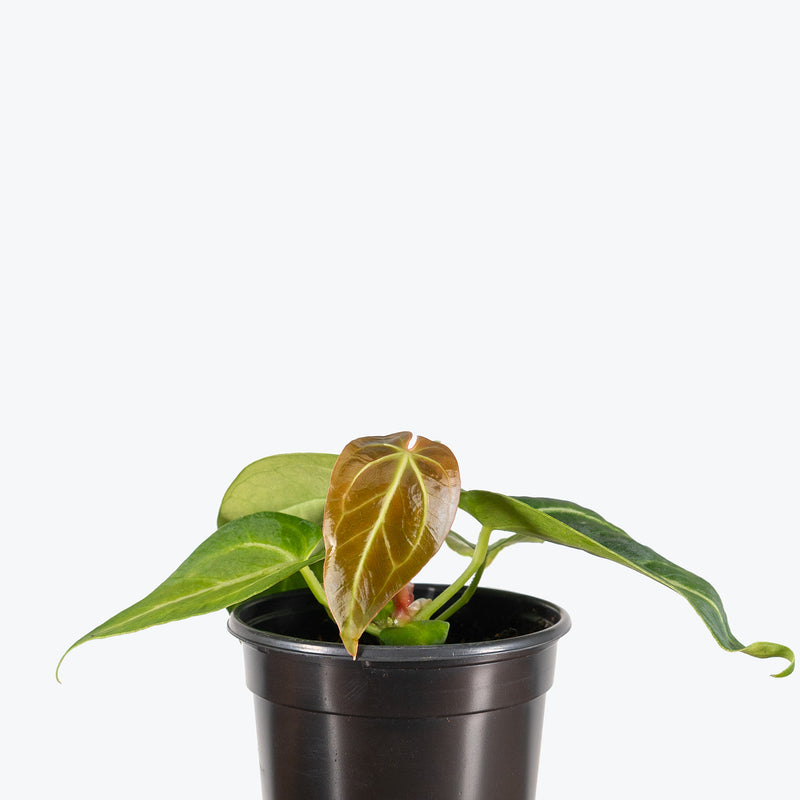
How to care for Anthurium Magnificum x Villenaorum
Anthurium Magnificum x Villenaorum should not be in a position to see the sun directly, although early morning or late evening sun is fine. Filtered sunlight through a sheer curtain is best and most homes are comprised primarily of indirect sunlight. The best spot for them is where they do not see the sun during the majority of the day but still get bright, indirect light.
Anthurium Magnificum x Villenaorum will thrive in bright light, but also can tolerate medium light. A good medium-light place in your home would be in the middle of a room that has a regular size window. They can be placed anywhere between the middle of the room and the window. Remember that plants will grow based on how much light they receive.
Anthurium Magnificum x Villenaorum needs to be watered when the top half of the soil is dry to the touch. That usually takes about 1 week in an average home environment. It will vary depending on the time of year, your environment and lighting conditions, but it's always safer to underwater or give the soil a check before you water again. Expect to water more often in brighter light and less often in lower light.
Anthurium Magnificum x Villenaorum likes a high humidity environment, give them a mist daily or as often as possible. Alternatively, you can put them around a humidifier. Although they won't die if they don't receive enough humidity, their leaves may have some dry, crunchy, or yellow edges.
For the boldest, velvetiest leaves and thick silver veining, stable high humidity and consistent bright indirect light are essential. Anthurium Magnificum x Villenaorum appreciates airy soil — use a chunky aroid mix with orchid bark, perlite, and peat to support healthy root growth. Fertilize monthly during the growing season with a diluted, balanced fertilizer to support strong leaf production. Wipe the leaves carefully with a soft, damp cloth — keeping dust off allows the velvet texture and veins to truly shine. They don't love being root-bound for too long; plan to repot every 1–2 years into a slightly larger container with fresh soil.
Anthurium Magnificum x Villenaorum is moderately toxic and can cause some adverse reactions when ingested so it is best to not let your pets eat it, which we advise for all plants in general. The severity of the reaction will depend on how much of the plant is ingested but, if you know your pet typically does not eat your plants, this plant will be suitable for your home..
Learn MoreView PlantAnthurium Orange

How to care for Anthurium Orange
Anthurium Orange should not be in a position to see the sun directly, although early morning or late evening sun is fine. Filtered sunlight through a sheer curtain is best and most homes are comprised primarily of indirect sunlight. The best spot for them is where they do not see the sun during the majority of the day but still get bright, indirect light.
Anthurium Orange will do well in medium light, but will grow faster and flower more prolifically with brighter light. A good medium-light place in your home would be in the middle of a room that has a regular size window. Remember that plants will grow based on how much light they receive.
Anthurium Orange needs to be watered when the top half of the soil is dry to the touch. That usually takes about 1 week in an average home environment. It will vary depending on the time of year, your environment and lighting conditions, but it's always safer to underwater or give the soil a check before you water again.
Anthurium Orange will do well in average humidity environments but will appreciate a little bit of humidity if provided, give them a mist daily or get a humidifier.
To keep Anthurium Orange blooming consistently, provide warm temperatures, bright indirect light, and high humidity. Use a well-draining, chunky mix (like orchid bark with peat and perlite), and avoid letting the roots sit in water. Wipe the leaves occasionally to keep them dust-free and glossy. Fertilize every 6–8 weeks during the growing season with a high-phosphorus fertilizer to promote blooming. Trim faded flowers to encourage fresh blooms.
Anthurium Orange is moderately toxic and can cause some adverse reactions when ingested so it is best to not let your pets eat it, which we advise for all plants in general. The severity of the reaction will depend on how much of the plant is ingested but, if you know your pet typically does not eat your plants, this plant will be suitable for your home..
Learn MoreView PlantAnthurium Pedatoradiatum Fingers
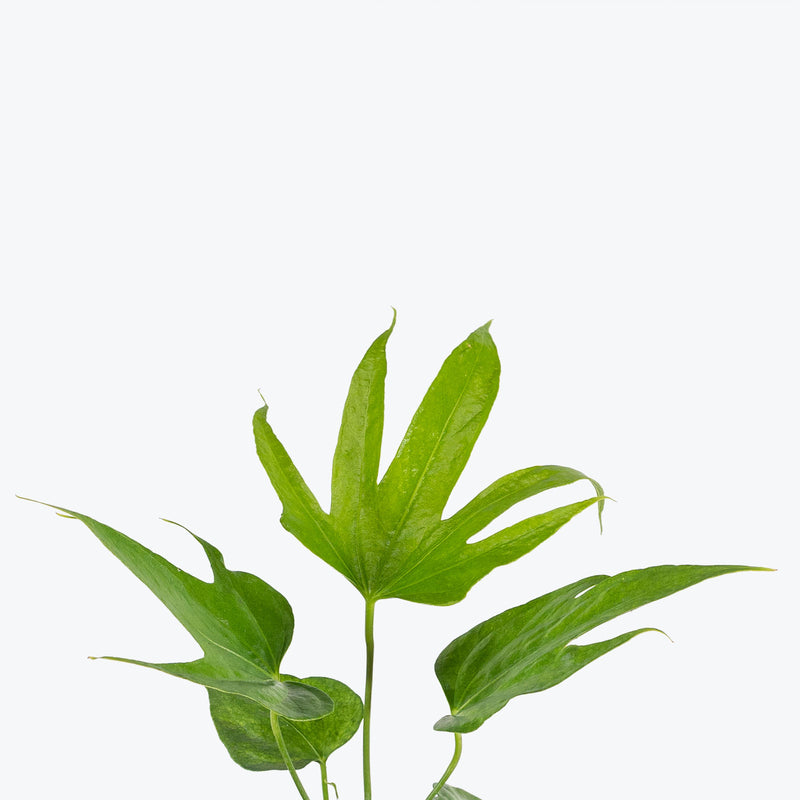
How to care for Anthurium Pedatoradiatum Fingers
They should not be in a position to see the sun directly, although early morning or late evening sun is fine. Filtered sunlight through a sheer curtain is best and most homes are comprised primarily of indirect sunlight. The best spot for them is where they do not see the sun during the majority of the day but still get bright, indirect light.
They will thrive in bright light, but also can tolerate medium light. A good medium-light place in your home would be in the middle of a room that has a regular size window. They can be placed anywhere between the middle of the room and the window. Remember that plants will grow based on how much light they receive.
They need to be watered when the top half of the soil is dry to the touch. That usually takes about 1 week in an average home environment. It will vary depending on the time of year, your environment and lighting conditions, but it's always safer to underwater or give the soil a check before you water again. Expect to water more often in brighter light and less often in lower light.
They like a high humidity environment, give them a mist daily or as often as possible. Alternatively, you can put them around a humidifier. Although they won't die if they don't receive enough humidity, their leaves may have some dry, crunchy, or yellow edges.
Ensure good air circulation around your Fingers Anthurium to prevent potential fungal issues. It's also a good idea to feed it with a balanced fertilizer every two to three weeks during the growing season to support its growth.
This plant is moderately toxic and can cause some adverse reactions when ingested so it is best to not let your pets eat it, which we advise for all plants in general. The severity of the reaction will depend on how much of the plant is ingested but, if you know your pet typically does not eat your plants, this plant will be suitable for your home..
Learn MoreView PlantAnthurium Pink
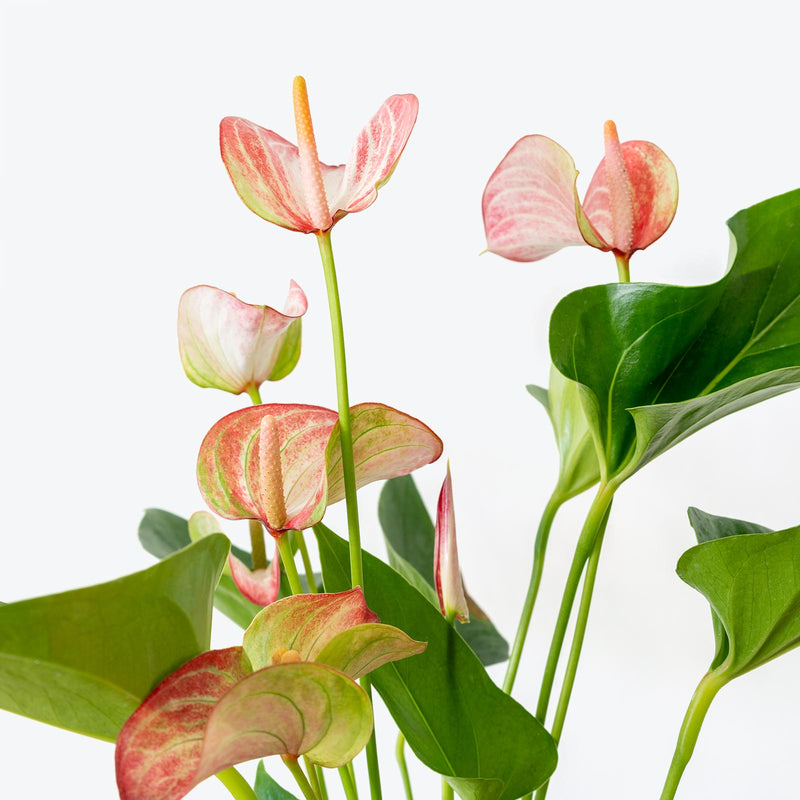
How to care for Anthurium Pink
Anthurium Pink should not be in a position to see the sun directly, although early morning or late evening sun is fine. Filtered sunlight through a sheer curtain is best and most homes are comprised primarily of indirect sunlight. The best spot for them is where they do not see the sun during the majority of the day but still get bright, indirect light.
Anthurium Pink will do well in medium light, but will grow faster and flower more prolifically with brighter light. A good medium-light place in your home would be in the middle of a room that has a regular size window. Remember that plants will grow based on how much light they receive.
Anthurium Pink needs to be watered when the top half of the soil is dry to the touch. That usually takes about 1 week in an average home environment. It will vary depending on the time of year, your environment and lighting conditions, but it's always safer to underwater or give the soil a check before you water again.
Anthurium Pink will do well in average humidity environments but will appreciate a little bit of humidity if provided, give them a mist daily or get a humidifier.
To encourage Anthurium Pink flowering, place the plant in bright, indirect light and dilute a liquid fertilizer to half-strength to feed the plant once a month in spring and summer!
Anthurium Pink is moderately toxic and can cause some adverse reactions when ingested so it is best to not let your pets eat it, which we advise for all plants in general. The severity of the reaction will depend on how much of the plant is ingested but, if you know your pet typically does not eat your plants, this plant will be suitable for your home..
Learn MoreView PlantAnthurium Pterodactyl
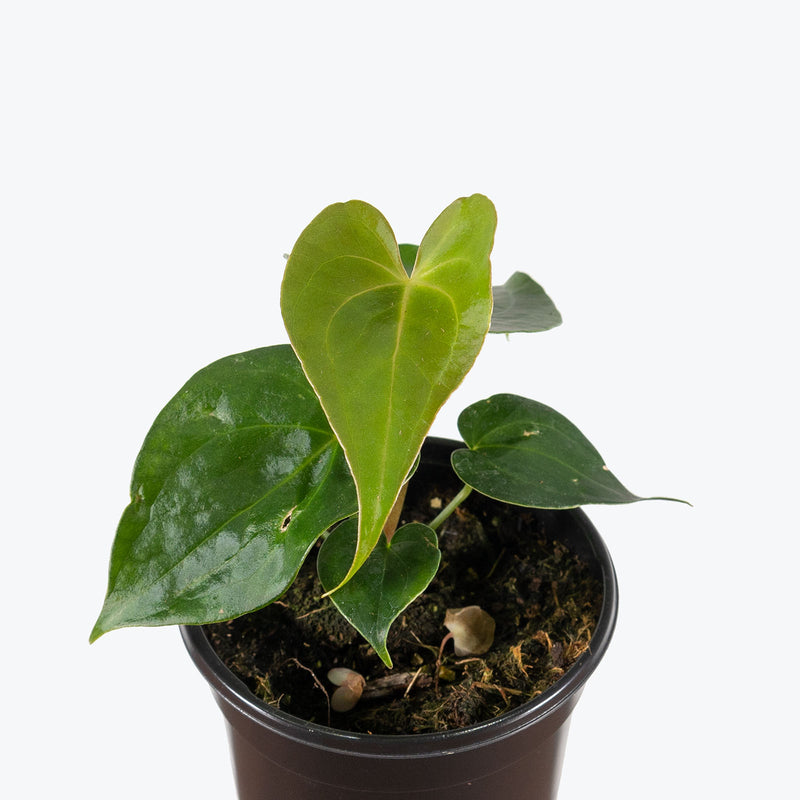
How to care for Anthurium Pterodactyl
Anthurium Pterodactyl should not be in a position to see the sun directly, although early morning or late evening sun is fine. Filtered sunlight through a sheer curtain is best and most homes are comprised primarily of indirect sunlight. The best spot for them is where they do not see the sun during the majority of the day but still get bright, indirect light.
Anthurium Pterodactyl will do best in bright light. A nice bright place inside your home would be on the window sill or a stool that is right next to a window, either with or without blinds, depending on if the plant can handle sun. Remember that plants will grow based on how much light they receive.
Anthurium Pterodactyl needs to be watered when the top half of the soil is dry to the touch. That usually takes about 1 week in an average home environment. It will vary depending on the time of year, your environment and lighting conditions, but it's always safer to underwater or give the soil a check before you water again. Expect to water more often in brighter light and less often in lower light.
Anthurium Pterodactyl likes a high humidity environment, give them a mist daily or as often as possible. Alternatively, you can put them around a humidifier. Although they won't die if they don't receive enough humidity, their leaves may have some dry, crunchy, or yellow edges.
Use a chunky aroid mix to ensure excellent drainage and aeration around the roots. Fertilize Anthurium Pterodactyl every 4-6 weeks during the growing season with a balanced, water-soluble fertilizer diluted to half strength. In winter, reduce watering and cease fertilization as growth slows.
Anthurium Pterodactyl is moderately toxic and can cause some adverse reactions when ingested so it is best to not let your pets eat it, which we advise for all plants in general. The severity of the reaction will depend on how much of the plant is ingested but, if you know your pet typically does not eat your plants, this plant will be suitable for your home..
Learn MoreView PlantAnthurium Purple

How to care for Anthurium Purple
Anthurium Purple should not be in a position to see the sun directly, although early morning or late evening sun is fine. Filtered sunlight through a sheer curtain is best and most homes are comprised primarily of indirect sunlight. The best spot for them is where they do not see the sun during the majority of the day but still get bright, indirect light.
Anthurium Purple will do well in medium light, but will grow faster and flower more prolifically with brighter light. A good medium-light place in your home would be in the middle of a room that has a regular size window. Remember that plants will grow based on how much light they receive.
Anthurium Purple needs to be watered when the top half of the soil is dry to the touch. That usually takes about 1 week in an average home environment. It will vary depending on the time of year, your environment and lighting conditions, but it's always safer to underwater or give the soil a check before you water again.
Anthurium Purple will do well in average humidity environments but will appreciate a little bit of humidity if provided, give them a mist daily or get a humidifier.
To encourage flowering, place Anthurium Purple in bright, indirect light and dilute a liquid fertilizer to half-strength to feed the plant once a month in spring and summer! To maintain a lush appearance, regularly clean the leaves with a damp cloth to remove dust and prevent pest infestations. Prune away any yellow or damaged leaves to keep the plant healthy and attractive.
Anthurium Purple is moderately toxic and can cause some adverse reactions when ingested so it is best to not let your pets eat it, which we advise for all plants in general. The severity of the reaction will depend on how much of the plant is ingested but, if you know your pet typically does not eat your plants, this plant will be suitable for your home..
Learn MoreView PlantAnthurium Queen of Hearts
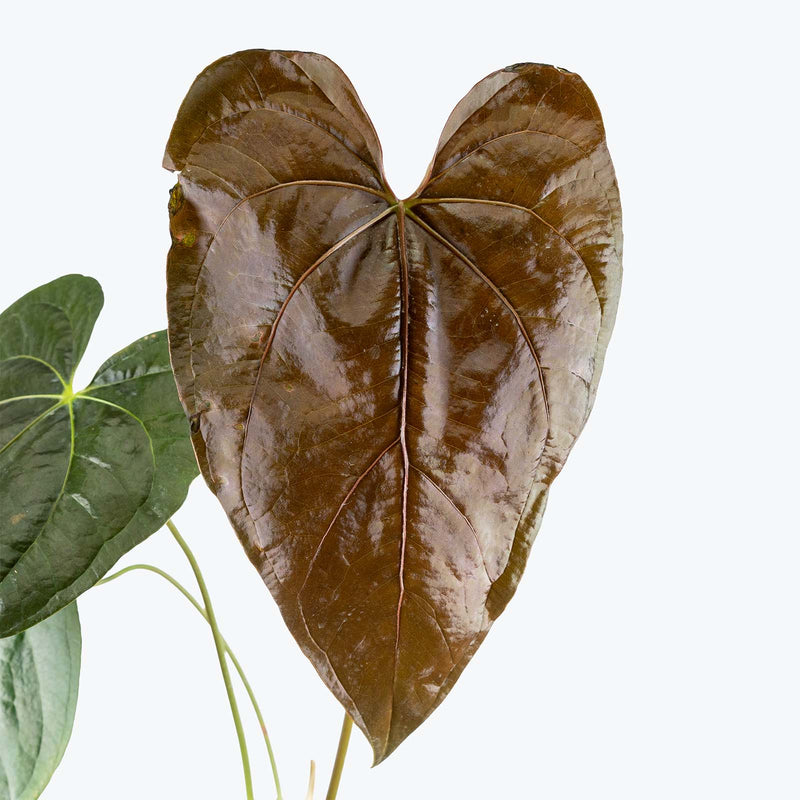
How to care for Anthurium Queen of Hearts
Anthurium Queen of Hearts should not be in a position to see the sun directly, although early morning or late evening sun is fine. Filtered sunlight through a sheer curtain is best and most homes are comprised primarily of indirect sunlight. The best spot for them is where they do not see the sun during the majority of the day but still get bright, indirect light.
Anthurium Queen of Hearts will thrive in bright light, but also can tolerate medium light. A good medium-light place in your home would be in the middle of a room that has a regular size window. They can be placed anywhere between the middle of the room and the window. Remember that plants will grow based on how much light they receive.
Anthurium Queen of Hearts needs to be watered when the top half of the soil is dry to the touch. That usually takes about 1 week in an average home environment. It will vary depending on the time of year, your environment and lighting conditions, but it's always safer to underwater or give the soil a check before you water again. Expect to water more often in brighter light and less often in lower light.
Anthurium Queen of Hearts likes a high humidity environment, give them a mist daily or as often as possible. Alternatively, you can put them around a humidifier. Although they won't die if they don't receive enough humidity, their leaves may have some dry, crunchy, or yellow edges.
Fertilize Anthurium Queen of Hearts with a balanced, liquid fertilizer diluted to half strength every 4-6 weeks during the growing season. Reduce feeding in the cooler months when growth slows. Regularly clean the leaves with a soft, damp cloth to remove dust and enhance their glossy appearance. Prune any faded or damaged leaves to promote new growth and maintain the plant's aesthetics. Be vigilant about pests such as aphids, mealybugs, and scale, which can be attracted to its lush foliage.
Anthurium Queen of Hearts is moderately toxic and can cause some adverse reactions when ingested so it is best to not let your pets eat it, which we advise for all plants in general. The severity of the reaction will depend on how much of the plant is ingested but, if you know your pet typically does not eat your plants, this plant will be suitable for your home..
Learn MoreView PlantAnthurium Radicans x Luxurians
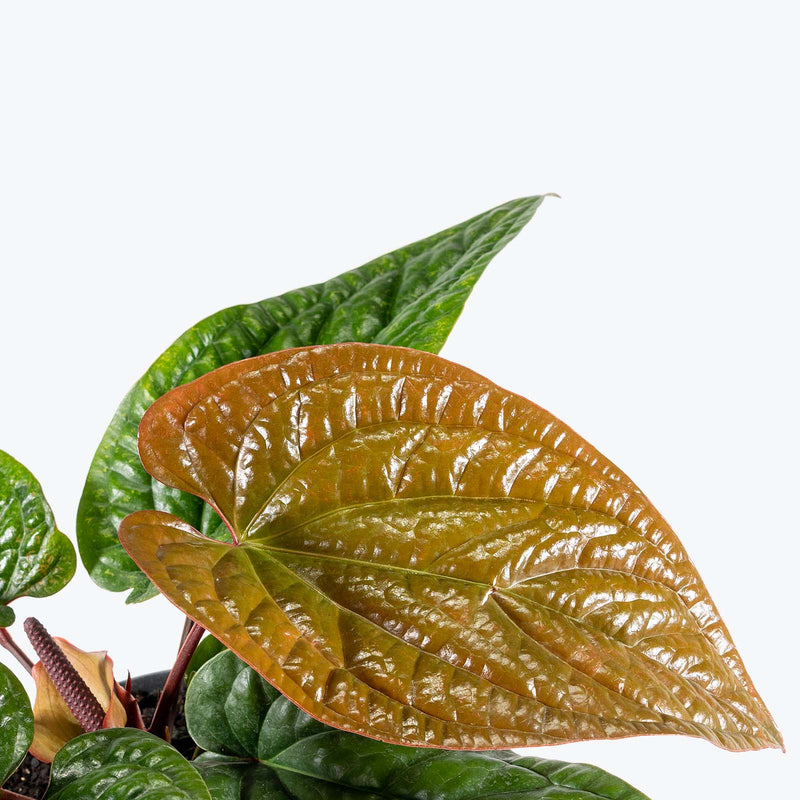
How to care for Anthurium Radicans x Luxurians
They should not be in a position to see the sun directly, although early morning or late evening sun is fine. Filtered sunlight through a sheer curtain is best and most homes are comprised primarily of indirect sunlight. The best spot for them is where they do not see the sun during the majority of the day but still get bright, indirect light.
They will do best in bright light. A nice bright place inside your home would be on the window sill or a stool that is right next to a window, either with or without blinds, depending on if the plant can handle sun. Remember that plants will grow based on how much light they receive.
Allow the top quarter of the soil to dry before watering again. This usually takes about 3 - 4 days in an average home environment. It will vary depending on the time of year, your environment and lighting conditions. Expect to water more often in brighter light and less often in lower light.
They will do well in average humidity environments but will appreciate a little bit of humidity if provided, give them a mist daily or get a humidifier.
For optimal growth, use a chunky soil mix for these plants. They are true aroids and require plenty of air circulation throughout their soil, so avoid keeping it moist for extended periods of time. As new growth develops and matures, its colour will transition from green rust to the deep green of older leaves.
This plant is moderately toxic and can cause some adverse reactions when ingested so it is best to not let your pets eat it, which we advise for all plants in general. The severity of the reaction will depend on how much of the plant is ingested but, if you know your pet typically does not eat your plants, this plant will be suitable for your home..
Learn MoreView PlantAnthurium Red
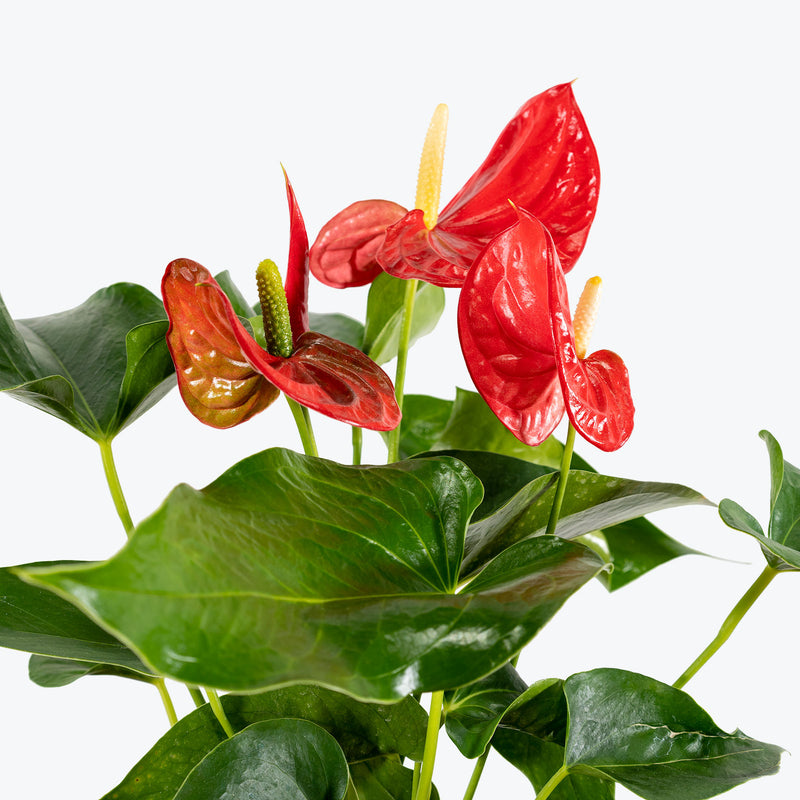
How to care for Anthurium Red
Anthurium Red should not be in a position to see the sun directly, although early morning or late evening sun is fine. Filtered sunlight through a sheer curtain is best and most homes are comprised primarily of indirect sunlight. The best spot for them is where they do not see the sun during the majority of the day but still get bright, indirect light.
Anthurium Red will do well in medium light, but will grow faster and flower more prolifically with brighter light. A good medium-light place in your home would be in the middle of a room that has a regular size window. Remember that plants will grow based on how much light they receive.
Anthurium Red needs to be watered when the top half of the soil is dry to the touch. That usually takes about 1 week in an average home environment. It will vary depending on the time of year, your environment and lighting conditions, but it's always safer to underwater or give the soil a check before you water again.
Anthurium Red will do well in average humidity environments but will appreciate a little bit of humidity if provided, give them a mist daily or get a humidifier.
To encourage Anthurium Red flowering, place the plant in bright, indirect light and dilute a liquid fertilizer to half-strength to feed the plant once a month in spring and summer!
Anthurium Red is moderately toxic and can cause some adverse reactions when ingested so it is best to not let your pets eat it, which we advise for all plants in general. The severity of the reaction will depend on how much of the plant is ingested but, if you know your pet typically does not eat your plants, this plant will be suitable for your home..
Learn MoreView PlantAnthurium Regale
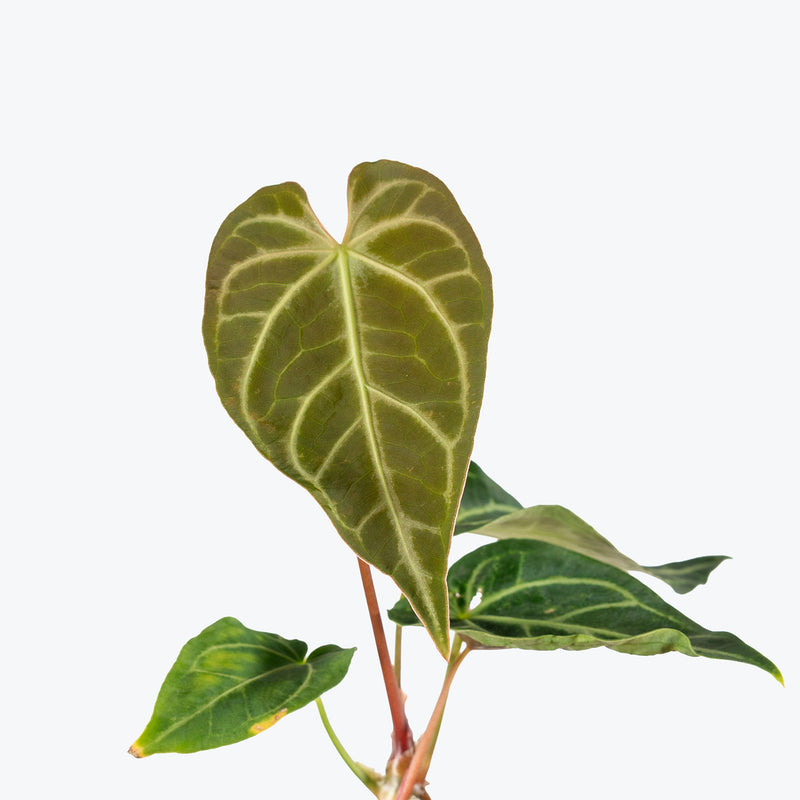
How to care for Anthurium Regale
Anthurium Regale should not be in a position to see the sun directly, although early morning or late evening sun is fine. Filtered sunlight through a sheer curtain is best and most homes are comprised primarily of indirect sunlight. The best spot for them is where they do not see the sun during the majority of the day but still get bright, indirect light.
Anthurium Regale will thrive in bright light, but also can tolerate medium light. A good medium-light place in your home would be in the middle of a room that has a regular size window. They can be placed anywhere between the middle of the room and the window. Remember that plants will grow based on how much light they receive.
Allow the top quarter of the soil to dry before watering Anthurium Regale again. This usually takes about 3 - 4 days in an average home environment. It will vary depending on the time of year, your environment and lighting conditions. Expect to water more often in brighter light and less often in lower light.
Anthurium Regale likes a high humidity environment, give them a mist daily or as often as possible. Alternatively, you can put them around a humidifier. Although they won't die if they don't receive enough humidity, their leaves may have some dry, crunchy, or yellow edges.
Provide a chunky, well-draining mix (orchid bark, perlite, sphagnum moss) to mimic its epiphytic roots in the wild. Fertilize monthly with a diluted aroid or foliage fertilizer during the growing season. Rotate Anthurium Regale regularly for balanced leaf growth and support with a sturdy stake as leaves expand. Regale prefers stable warmth and humidity—protect from drafts and sudden fluctuations.
Anthurium Regale is moderately toxic and can cause some adverse reactions when ingested so it is best to not let your pets eat it, which we advise for all plants in general. The severity of the reaction will depend on how much of the plant is ingested but, if you know your pet typically does not eat your plants, this plant will be suitable for your home..
Learn MoreView PlantAnthurium Solid Pink
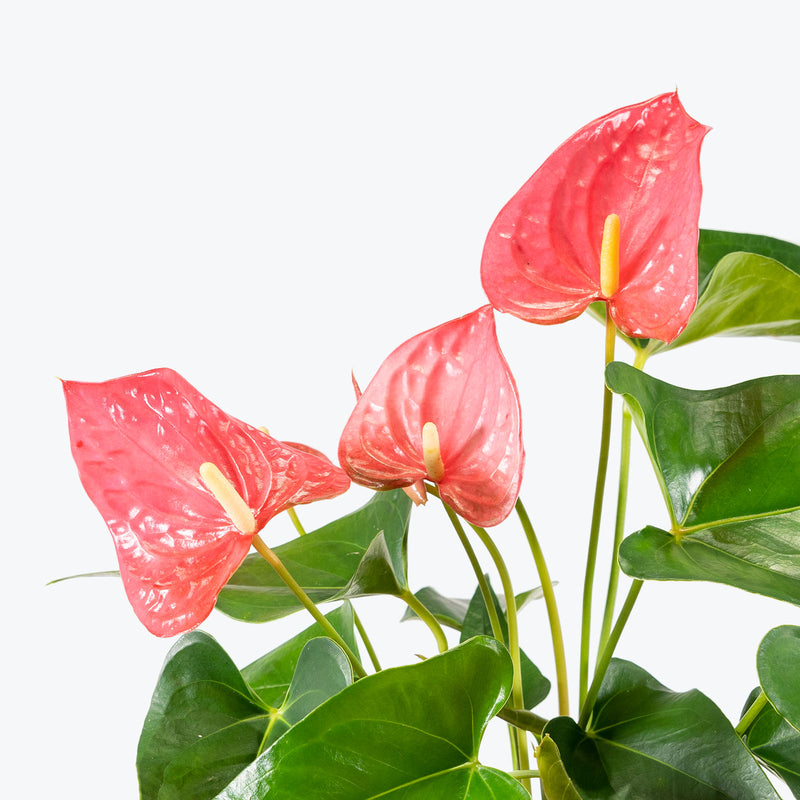
How to care for Anthurium Solid Pink
They should not be in a position to see the sun directly, although early morning or late evening sun is fine. Filtered sunlight through a sheer curtain is best and most homes are comprised primarily of indirect sunlight. The best spot for them is where they do not see the sun during the majority of the day but still get bright, indirect light.
They will do well in medium light, but will grow faster and flower more prolifically with brighter light. A good medium-light place in your home would be in the middle of a room that has a regular size window. Remember that plants will grow based on how much light they receive.
They need to be watered when the top half of the soil is dry to the touch. That usually takes about 1 week in an average home environment. It will vary depending on the time of year, your environment and lighting conditions, but it's always safer to underwater or give the soil a check before you water again.
They will do well in average humidity environments but will appreciate a little bit of humidity if provided, give them a mist daily or get a humidifier.
To encourage flowering, place the plant in bright, indirect light and dilute a liquid fertilizer to half-strength to feed the plant once a month in spring and summer!
This plant is moderately toxic and can cause some adverse reactions when ingested so it is best to not let your pets eat it, which we advise for all plants in general. The severity of the reaction will depend on how much of the plant is ingested but, if you know your pet typically does not eat your plants, this plant will be suitable for your home..
Learn MoreView PlantAnthurium Veitchii
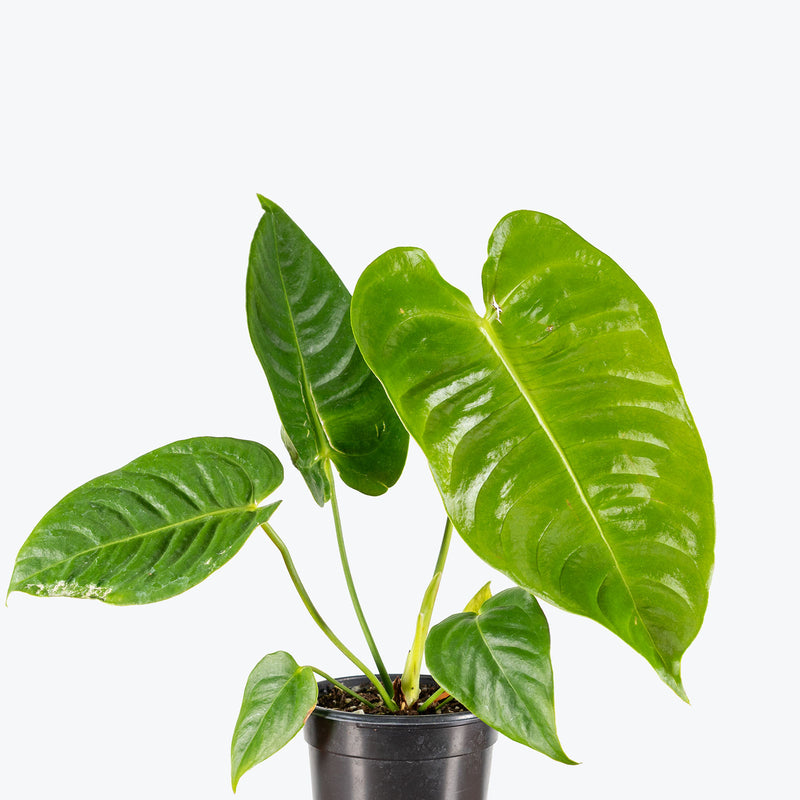
How to care for Anthurium Veitchii
Anthurium Veitchii should not be in a position to see the sun directly, although early morning or late evening sun is fine. Filtered sunlight through a sheer curtain is best and most homes are comprised primarily of indirect sunlight. The best spot for them is where they do not see the sun during the majority of the day but still get bright, indirect light.
Anthurium Veitchii will do best in bright light. A nice bright place inside your home would be on the window sill or a stool that is right next to a window, either with or without blinds, depending on if the plant can handle sun. Remember that plants will grow based on how much light they receive.
Allow the top quarter of the soil to dry before watering Anthurium Veitchii again. This usually takes about 3 - 4 days in an average home environment. It will vary depending on the time of year, your environment and lighting conditions. Expect to water more often in brighter light and less often in lower light.
Anthurium Veitchii likes a high humidity environment, give them a mist daily or as often as possible. Alternatively, you can put them around a humidifier. Although they won't die if they don't receive enough humidity, their leaves may have some dry, crunchy, or yellow edges.
Use a chunky, well-aerated mix (Aroid Mix) to mimic its natural epiphytic conditions. Provide a moss pole or mount for leaf support as it matures. High humidity is key to keeping those iconic ridges crisp and healthy. Wipe leaves gently to remove dust and showcase their texture. Fertilize Anthurium veitchii lightly every 4–6 weeks during the growing season for steady growth.
Anthurium Veitchii is moderately toxic and can cause some adverse reactions when ingested so it is best to not let your pets eat it, which we advise for all plants in general. The severity of the reaction will depend on how much of the plant is ingested but, if you know your pet typically does not eat your plants, this plant will be suitable for your home..
Learn MoreView PlantAnthurium Velvet Moira
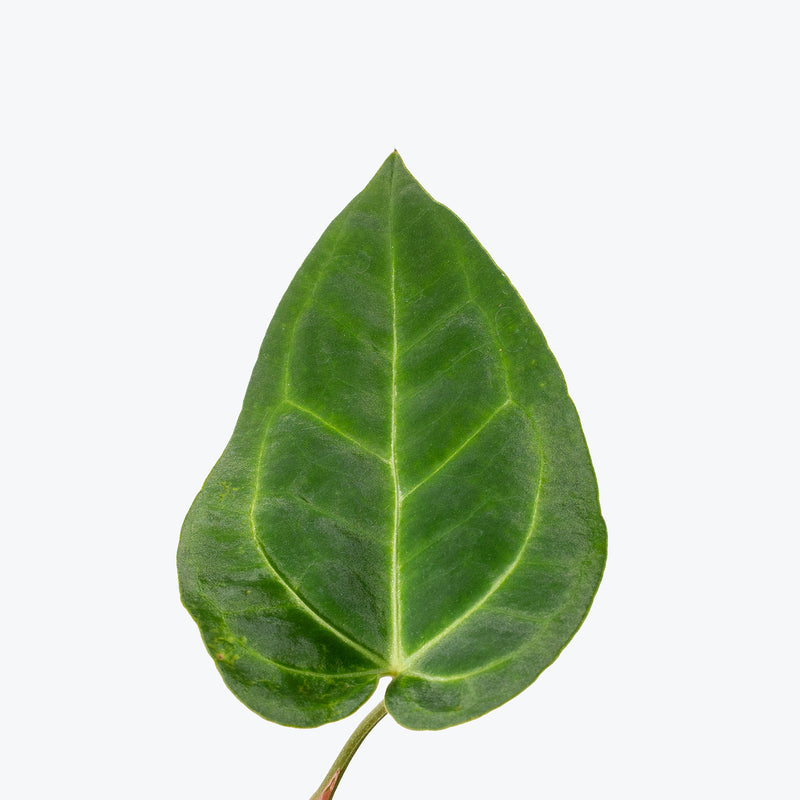
How to care for Anthurium Velvet Moira
Anthurium Velvet Moira should not be in a position to see the sun directly, although early morning or late evening sun is fine. Filtered sunlight through a sheer curtain is best and most homes are comprised primarily of indirect sunlight. The best spot for them is where they do not see the sun during the majority of the day but still get bright, indirect light.
Anthurium Velvet Moira will thrive in bright light, but also can tolerate medium light. A good medium-light place in your home would be in the middle of a room that has a regular size window. They can be placed anywhere between the middle of the room and the window. Remember that plants will grow based on how much light they receive.
Anthurium Velvet Moira needs to be watered when the top half of the soil is dry to the touch. That usually takes about 1 week in an average home environment. It will vary depending on the time of year, your environment and lighting conditions, but it's always safer to underwater or give the soil a check before you water again. Expect to water more often in brighter light and less often in lower light.
Anthurium Velvet Moira will do well in average humidity environments but will appreciate a little bit of humidity if provided, give them a mist daily or get a humidifier.
Fertilize Anthurium Velvet Moira with a balanced liquid fertilizer diluted to half strength every 4-6 weeks during the growing season. During the winter, reduce feeding to every 8-10 weeks. The plant benefits from being repotted every couple of years to refresh the soil and accommodate root growth. Clean the leaves regularly with a soft, damp cloth to remove dust and enhance their glossy appearance.
Anthurium Velvet Moira is moderately toxic and can cause some adverse reactions when ingested so it is best to not let your pets eat it, which we advise for all plants in general. The severity of the reaction will depend on how much of the plant is ingested but, if you know your pet typically does not eat your plants, this plant will be suitable for your home..
Learn MoreView PlantAnthurium Villenaorum
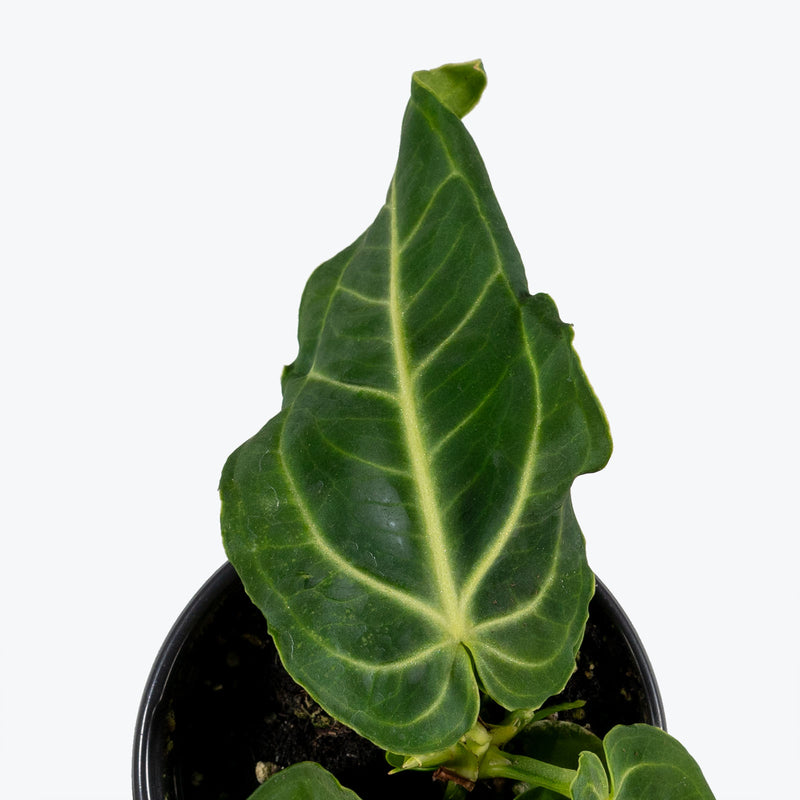
How to care for Anthurium Villenaorum
They should not be in a position to see the sun directly, although early morning or late evening sun is fine. Filtered sunlight through a sheer curtain is best and most homes are comprised primarily of indirect sunlight. The best spot for them is where they do not see the sun during the majority of the day but still get bright, indirect light.
They will thrive in bright light, but also can tolerate medium light. A good medium-light place in your home would be in the middle of a room that has a regular size window. They can be placed anywhere between the middle of the room and the window. Remember that plants will grow based on how much light they receive.
They need to be watered when the top half of the soil is dry to the touch. That usually takes about 1 week in an average home environment. It will vary depending on the time of year, your environment and lighting conditions, but it's always safer to underwater or give the soil a check before you water again. Expect to water more often in brighter light and less often in lower light.
They like a high humidity environment, give them a mist daily or as often as possible. Alternatively, you can put them around a humidifier. Although they won't die if they don't receive enough humidity, their leaves may have some dry, crunchy, or yellow edges.
Ensure that the plant is not exposed to cold drafts. Avoid letting the plant dry out completely. Prune to maintain a compact size and appearance, but avoid heavy pruning to protect your Anthurium Villenaorum from pruning shock.
This plant is moderately toxic and can cause some adverse reactions when ingested so it is best to not let your pets eat it, which we advise for all plants in general. The severity of the reaction will depend on how much of the plant is ingested but, if you know your pet typically does not eat your plants, this plant will be suitable for your home..
Learn MoreView PlantAnthurium Villenaorum x Forgetii
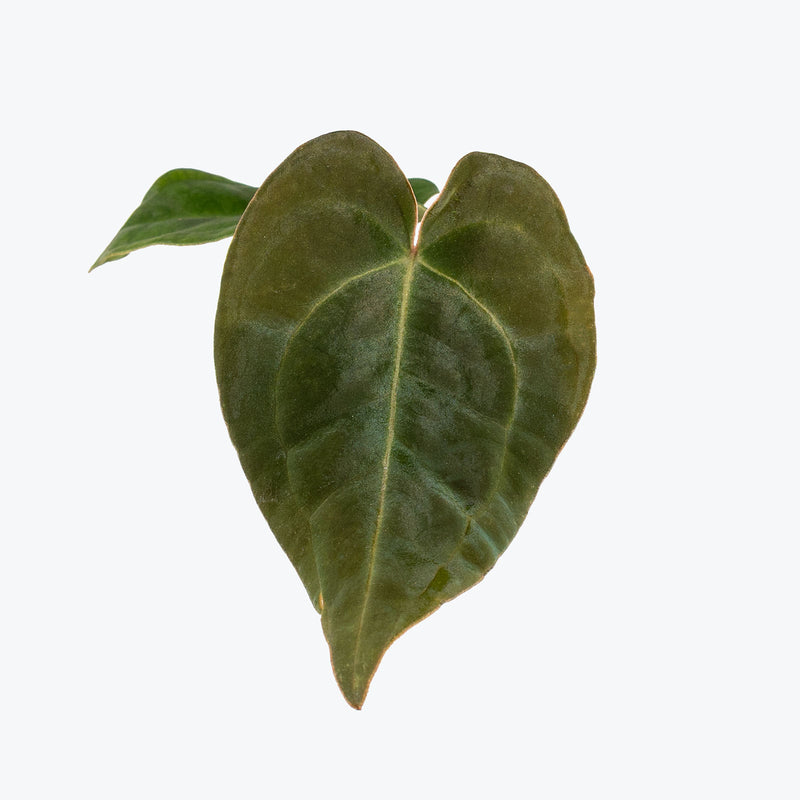
How to care for Anthurium Villenaorum x Forgetii
Anthurium Villenaorum x Forgetii should not be in a position to see the sun directly, although early morning or late evening sun is fine. Filtered sunlight through a sheer curtain is best and most homes are comprised primarily of indirect sunlight. The best spot for them is where they do not see the sun during the majority of the day but still get bright, indirect light.
Anthurium Villenaorum x Forgetii will thrive in bright light, but also can tolerate medium light. A good medium-light place in your home would be in the middle of a room that has a regular size window. They can be placed anywhere between the middle of the room and the window. Remember that plants will grow based on how much light they receive.
Anthurium Villenaorum x Forgetii needs to be watered when the top half of the soil is dry to the touch. That usually takes about 1 week in an average home environment. It will vary depending on the time of year, your environment and lighting conditions, but it's always safer to underwater or give the soil a check before you water again. Expect to water more often in brighter light and less often in lower light.
Anthurium Villenaorum x Forgetii likes a high humidity environment, give them a mist daily or as often as possible. Alternatively, you can put them around a humidifier. Although they won't die if they don't receive enough humidity, their leaves may have some dry, crunchy, or yellow edges.
Keep the Anthurium Villenaorum x Forgetii away from direct sunlight to prevent leaf burn. Maintaining high humidity is key to preventing crispy leaf edges and promoting healthy growth. When watering, ensure to allow excess water to drain away to prevent root rot. Clean the leaves regularly with a soft, damp cloth to remove dust and enhance their appearance. Pruning is rarely needed but remove any yellow or damaged leaves to encourage new growth.
Anthurium Villenaorum x Forgetii is moderately toxic and can cause some adverse reactions when ingested so it is best to not let your pets eat it, which we advise for all plants in general. The severity of the reaction will depend on how much of the plant is ingested but, if you know your pet typically does not eat your plants, this plant will be suitable for your home..
Learn MoreView PlantAnthurium Vittarifolium
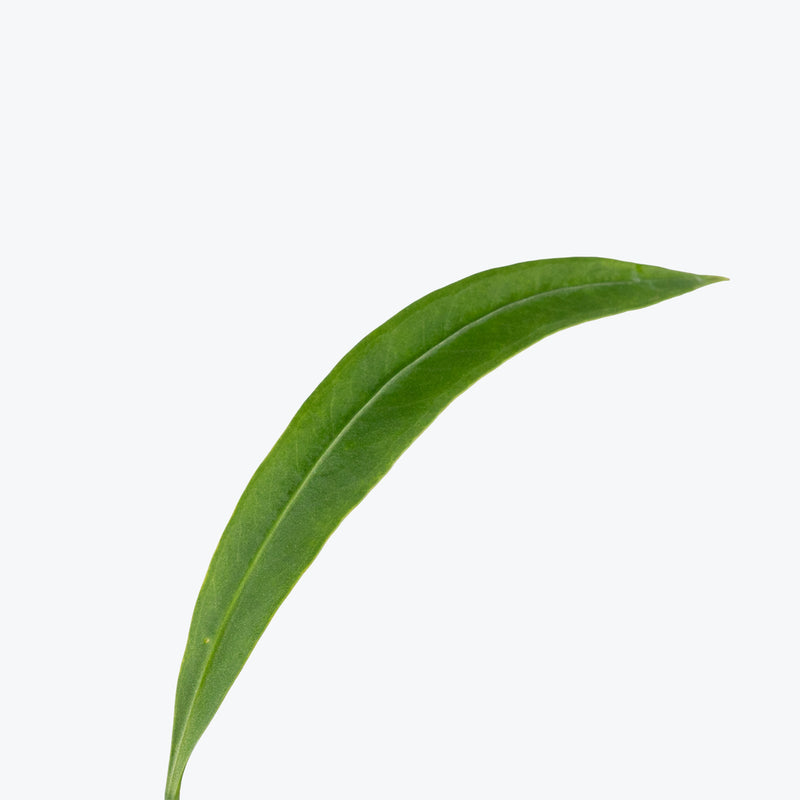
How to care for Anthurium Vittarifolium
Anthurium Vittarifolium should not be in a position to see the sun directly, although early morning or late evening sun is fine. Filtered sunlight through a sheer curtain is best and most homes are comprised primarily of indirect sunlight. The best spot for them is where they do not see the sun during the majority of the day but still get bright, indirect light.
Anthurium Vittarifolium will thrive in bright light, but also can tolerate medium light. A good medium-light place in your home would be in the middle of a room that has a regular size window. They can be placed anywhere between the middle of the room and the window. Remember that plants will grow based on how much light they receive.
Allow the top quarter of the soil to dry before watering Anthurium Vittarifolium again. This usually takes about 3 - 4 days in an average home environment. It will vary depending on the time of year, your environment and lighting conditions. Expect to water more often in brighter light and less often in lower light.
Anthurium Vittarifolium likes a high humidity environment, give them a mist daily or as often as possible. Alternatively, you can put them around a humidifier. Although they won't die if they don't receive enough humidity, their leaves may have some dry, crunchy, or yellow edges.
Use a chunky, well-aerated mix—orchid bark, perlite, and coco coir—mimicking its natural epiphytic habitat. Fertilize lightly every 4–6 weeks in spring and summer with a balanced, diluted fertilizer. Provide a hanging or elevated display to allow its long leaves to cascade naturally. Keep away from drafts and cold temperatures, as this species prefers stable warmth.
Anthurium Vittarifolium is moderately toxic and can cause some adverse reactions when ingested so it is best to not let your pets eat it, which we advise for all plants in general. The severity of the reaction will depend on how much of the plant is ingested but, if you know your pet typically does not eat your plants, this plant will be suitable for your home..
Learn MoreView PlantAnthurium Warocqueanum Dark Form

How to care for Anthurium Warocqueanum Dark Form
Anthurium Warocqueanum Dark Form should not be in a position to see the sun directly, although early morning or late evening sun is fine. Filtered sunlight through a sheer curtain is best and most homes are comprised primarily of indirect sunlight. The best spot for them is where they do not see the sun during the majority of the day but still get bright, indirect light.
Anthurium Warocqueanum Dark Form will thrive in bright light, but also can tolerate medium light. A good medium-light place in your home would be in the middle of a room that has a regular size window. They can be placed anywhere between the middle of the room and the window. Remember that plants will grow based on how much light they receive.
Allow the top quarter of the soil to dry before watering Anthurium Warocqueanum Dark Form again. This usually takes about 3 - 4 days in an average home environment. It will vary depending on the time of year, your environment and lighting conditions. Expect to water more often in brighter light and less often in lower light.
Anthurium Warocqueanum Dark Form likes a high humidity environment, give them a mist daily or as often as possible. Alternatively, you can put them around a humidifier. Although they won't die if they don't receive enough humidity, their leaves may have some dry, crunchy, or yellow edges.
Use a chunky, well-aerated aroid mix containing sphagnum moss, perlite, and orchid bark to ensure excellent drainage and airflow. Provide gentle air circulation to prevent fungal issues. Fertilize Anthurium Warocqueanum Dark Form lightly every 4–6 weeks during active growth. The Queen Anthurium prefers warmth and stability—avoid cold drafts and sudden environmental changes. Support long leaves with stakes or hanging mounts to preserve their stunning form.
Anthurium Warocqueanum Dark Form is moderately toxic and can cause some adverse reactions when ingested so it is best to not let your pets eat it, which we advise for all plants in general. The severity of the reaction will depend on how much of the plant is ingested but, if you know your pet typically does not eat your plants, this plant will be suitable for your home..
Learn MoreView PlantAnthurium Watermelon

How to care for Anthurium Watermelon
Anthurium Watermelon should not be in a position to see the sun directly, although early morning or late evening sun is fine. Filtered sunlight through a sheer curtain is best and most homes are comprised primarily of indirect sunlight. The best spot for them is where they do not see the sun during the majority of the day but still get bright, indirect light.
Anthurium Watermelon will do well in medium light, but will grow faster and flower more prolifically with brighter light. A good medium-light place in your home would be in the middle of a room that has a regular size window. Remember that plants will grow based on how much light they receive.
Anthurium Watermelon needs to be watered when the top half of the soil is dry to the touch. That usually takes about 1 week in an average home environment. It will vary depending on the time of year, your environment and lighting conditions, but it's always safer to underwater or give the soil a check before you water again.
Anthurium Watermelon will do well in average humidity environments but will appreciate a little bit of humidity if provided, give them a mist daily or get a humidifier.
To keep Anthurium Watermelon blooming brightly, provide consistent warmth, humidity, and bright, indirect light. Use a well-draining mix and avoid letting the roots sit in water. Wipe leaves and flowers gently to maintain their glossy finish. Fertilize every 6–8 weeks during spring and summer with a high-phosphorus formula to encourage continuous blooms. If flowering slows, try increasing light or humidity slightly. With the right care, its vibrant, melon-hued spathes can appear almost year-round.
Anthurium Watermelon is moderately toxic and can cause some adverse reactions when ingested so it is best to not let your pets eat it, which we advise for all plants in general. The severity of the reaction will depend on how much of the plant is ingested but, if you know your pet typically does not eat your plants, this plant will be suitable for your home..
Learn MoreView PlantAnthurium Wendlingeri
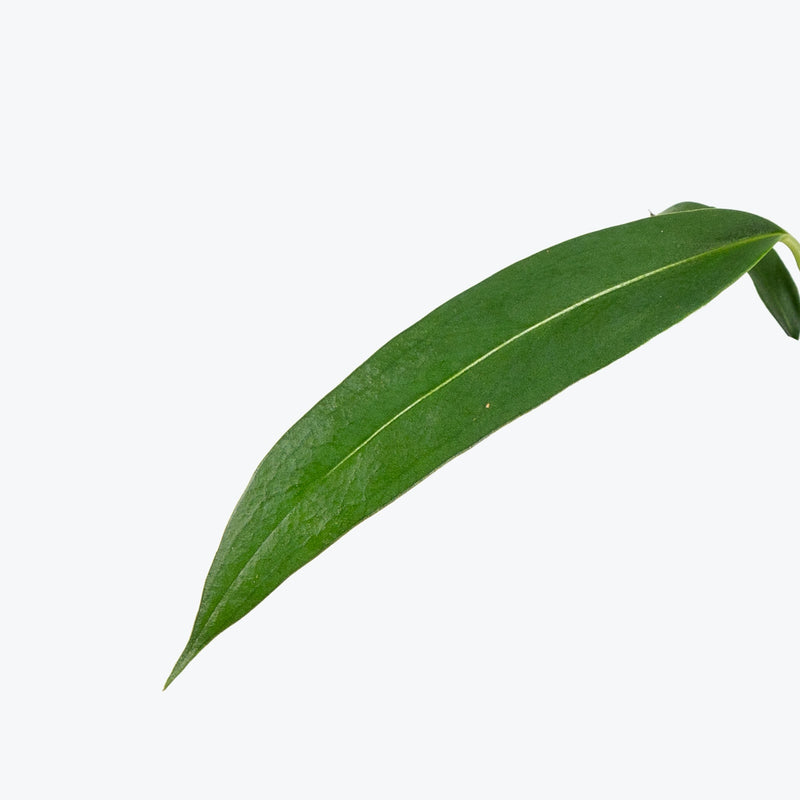
How to care for Anthurium Wendlingeri
Anthurium Wendlingeri should not be in a position to see the sun directly, although early morning or late evening sun is fine. Filtered sunlight through a sheer curtain is best and most homes are comprised primarily of indirect sunlight. The best spot for them is where they do not see the sun during the majority of the day but still get bright, indirect light.
Anthurium Wendlingeri will thrive in bright light, but also can tolerate medium light. A good medium-light place in your home would be in the middle of a room that has a regular size window. They can be placed anywhere between the middle of the room and the window. Remember that plants will grow based on how much light they receive.
Anthurium Wendlingeri needs to be watered when the top half of the soil is dry to the touch. That usually takes about 1 week in an average home environment. It will vary depending on the time of year, your environment and lighting conditions, but it's always safer to underwater or give the soil a check before you water again. Expect to water more often in brighter light and less often in lower light.
Anthurium Wendlingeri likes a high humidity environment, give them a mist daily or as often as possible. Alternatively, you can put them around a humidifier. Although they won't die if they don't receive enough humidity, their leaves may have some dry, crunchy, or yellow edges.
Ensure to keep the Anthurium Wendlingeri away from direct sunlight to prevent leaf burn. Maintaining high humidity is key to preventing crispy leaf edges and promoting healthy growth. When watering, ensure to allow excess water to drain away to prevent root rot. Wipe the leaves occasionally to remove dust and maintain its aesthetic appeal.
Anthurium Wendlingeri is moderately toxic and can cause some adverse reactions when ingested so it is best to not let your pets eat it, which we advise for all plants in general. The severity of the reaction will depend on how much of the plant is ingested but, if you know your pet typically does not eat your plants, this plant will be suitable for your home..
Learn MoreView PlantAnthurium White
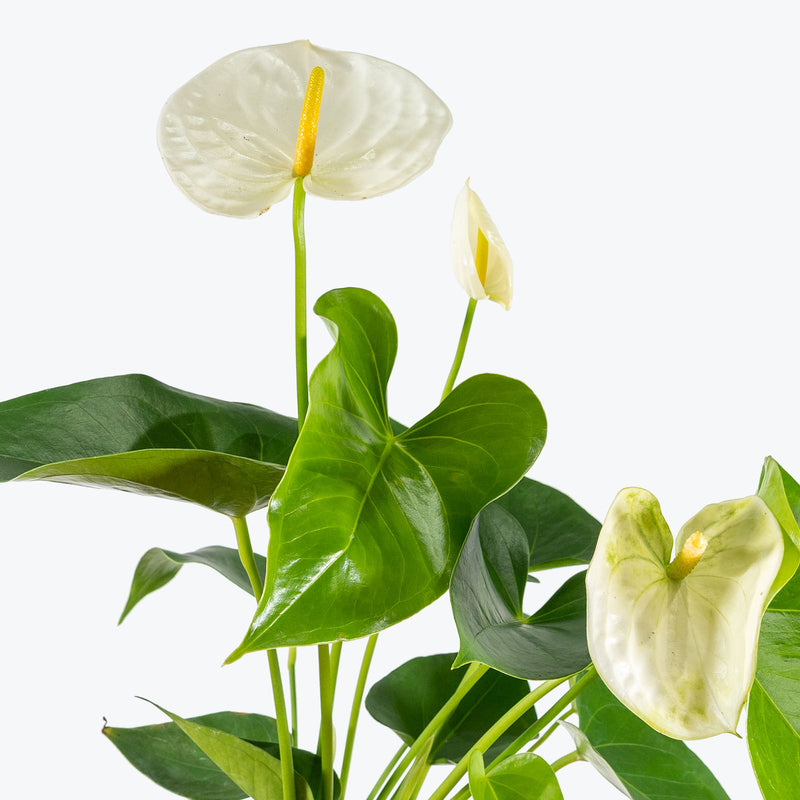
How to care for Anthurium White
Anthurium White should not be in a position to see the sun directly, although early morning or late evening sun is fine. Filtered sunlight through a sheer curtain is best and most homes are comprised primarily of indirect sunlight. The best spot for them is where they do not see the sun during the majority of the day but still get bright, indirect light.
Anthurium White will do well in medium light, but will grow faster and flower more prolifically with brighter light. A good medium-light place in your home would be in the middle of a room that has a regular size window. Remember that plants will grow based on how much light they receive.
Anthurium White needs to be watered when the top half of the soil is dry to the touch. That usually takes about 1 week in an average home environment. It will vary depending on the time of year, your environment and lighting conditions, but it's always safer to underwater or give the soil a check before you water again.
Anthurium White will do well in average humidity environments but will appreciate a little bit of humidity if provided, give them a mist daily or get a humidifier.
Anthurium White performs best in warm, humid conditions with bright, indirect light. Use a chunky, well-draining soil mix and avoid overwatering — they prefer slight dryness between waterings. Fertilize every 6–8 weeks during the growing season with a high-phosphorus fertilizer to promote blooming. Wipe the leaves and flowers gently with a damp cloth to maintain their glossy appearance. If flowers fade, cut them back to encourage new growth and blooms.
Anthurium White is moderately toxic and can cause some adverse reactions when ingested so it is best to not let your pets eat it, which we advise for all plants in general. The severity of the reaction will depend on how much of the plant is ingested but, if you know your pet typically does not eat your plants, this plant will be suitable for your home..
Learn MoreView PlantAnthurium Yellow Vanilla
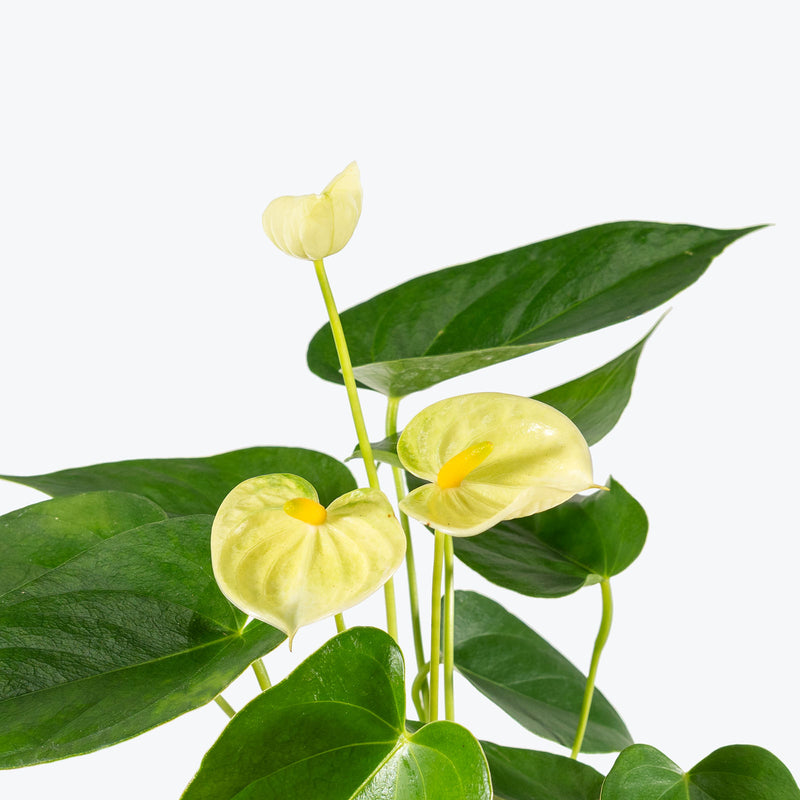
How to care for Anthurium Yellow Vanilla
Anthurium Yellow Vanilla should not be in a position to see the sun directly, although early morning or late evening sun is fine. Filtered sunlight through a sheer curtain is best and most homes are comprised primarily of indirect sunlight. The best spot for them is where they do not see the sun during the majority of the day but still get bright, indirect light.
Anthurium Yellow Vanilla will do well in medium light, but will grow faster and flower more prolifically with brighter light. A good medium-light place in your home would be in the middle of a room that has a regular size window. Remember that plants will grow based on how much light they receive.
Anthurium Yellow Vanilla needs to be watered when the top half of the soil is dry to the touch. That usually takes about 1 week in an average home environment. It will vary depending on the time of year, your environment and lighting conditions, but it's always safer to underwater or give the soil a check before you water again.
Anthurium Yellow Vanilla will do well in average humidity environments but will appreciate a little bit of humidity if provided, give them a mist daily or get a humidifier.
Wipe the leaves and flowers gently to keep them dust-free and glossy. Feed Anthurium Yellow Vanilla monthly during the growing season with a bloom-boosting fertilizer to encourage steady flowering. For best results, grow in a loose, well-draining potting mix with orchid bark or perlite added.
Anthurium Yellow Vanilla is moderately toxic and can cause some adverse reactions when ingested so it is best to not let your pets eat it, which we advise for all plants in general. The severity of the reaction will depend on how much of the plant is ingested but, if you know your pet typically does not eat your plants, this plant will be suitable for your home..
Learn MoreView PlantAphelandra Snowflake Zebra Plant

How to care for Aphelandra Snowflake Zebra Plant
Aphelandra Snowflake Zebra Plant should not be in a position to see the sun directly, although early morning or late evening sun is fine. Filtered sunlight through a sheer curtain is best and most homes are comprised primarily of indirect sunlight. The best spot for them is where they do not see the sun during the majority of the day but still get bright, indirect light.
Aphelandra Snowflake Zebra Plant will thrive in bright light, but also can tolerate medium light. A good medium-light place in your home would be in the middle of a room that has a regular size window. They can be placed anywhere between the middle of the room and the window. Remember that plants will grow based on how much light they receive.
Aphelandra Snowflake Zebra Plant needs to be watered when the top half of the soil is dry to the touch. That usually takes about 1 week in an average home environment. It will vary depending on the time of year, your environment and lighting conditions, but it's always safer to underwater or give the soil a check before you water again.
Aphelandra Snowflake Zebra Plant likes a high humidity environment, give them a mist daily or as often as possible. Alternatively, you can put them around a humidifier. Although they won't die if they don't receive enough humidity, their leaves may have some dry, crunchy, or yellow edges.
Fertilize Aphelandra Snowflake Zebra Plant every 4-6 weeks during the growing season with a balanced liquid fertilizer diluted to half strength. Reduce fertilization during the cooler months. Maintain clean leaves by gently wiping them with a damp cloth to remove dust. This not only keeps the plant looking fresh but also improves photosynthesis.
You can feel comfortable having Aphelandra Snowflake Zebra Plant around your home in the potential case where your pet feels like nibbling on it. However, we typically recommend keeping your pets from eating any of your houseplants..
View PlantAphelandra Zebra Plant
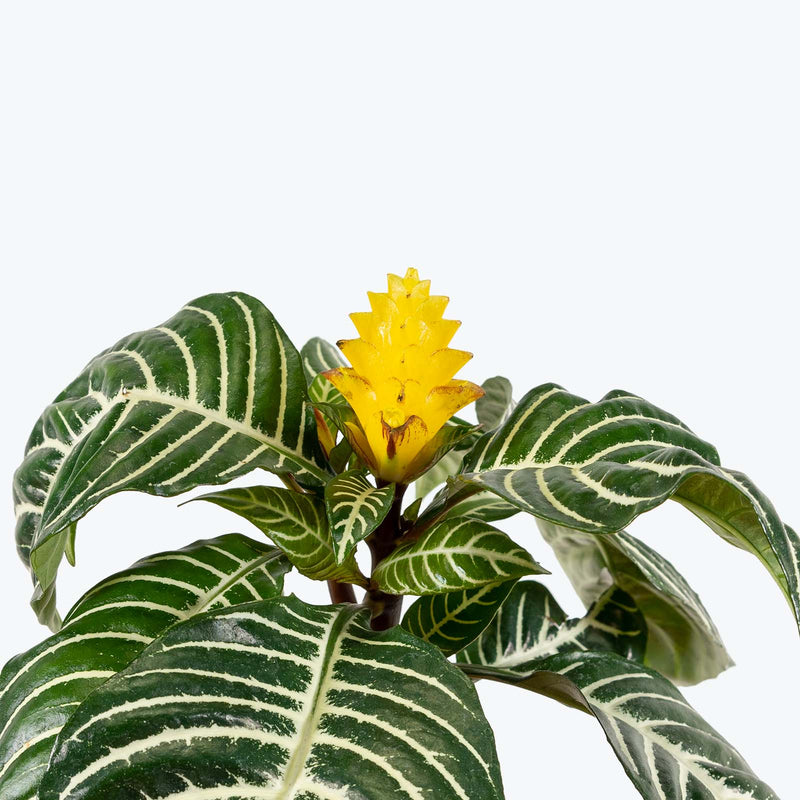
How to care for Aphelandra Zebra Plant
They should not be in a position to see the sun directly, although early morning or late evening sun is fine. Filtered sunlight through a sheer curtain is best and most homes are comprised primarily of indirect sunlight. The best spot for them is where they do not see the sun during the majority of the day but still get bright, indirect light.
They will thrive in bright light, but also can tolerate medium light. A good medium-light place in your home would be in the middle of a room that has a regular size window. They can be placed anywhere between the middle of the room and the window. Remember that plants will grow based on how much light they receive.
They need to be watered when the top half of the soil is dry to the touch. That usually takes about 1 week in an average home environment. It will vary depending on the time of year, your environment and lighting conditions, but it's always safer to underwater or give the soil a check before you water again.
They like a high humidity environment, give them a mist daily or as often as possible. Alternatively, you can put them around a humidifier. Although they won't die if they don't receive enough humidity, their leaves may have some dry, crunchy, or yellow edges.
Fertilizing during spring and early summer, along with keeping the plant in bright light, can encourage flowers!
You can feel comfortable having this plant around your home in the potential case where your pet feels like nibbling on it. However, we typically recommend keeping your pets from eating any of your houseplants..
View PlantApoballis Red Sword
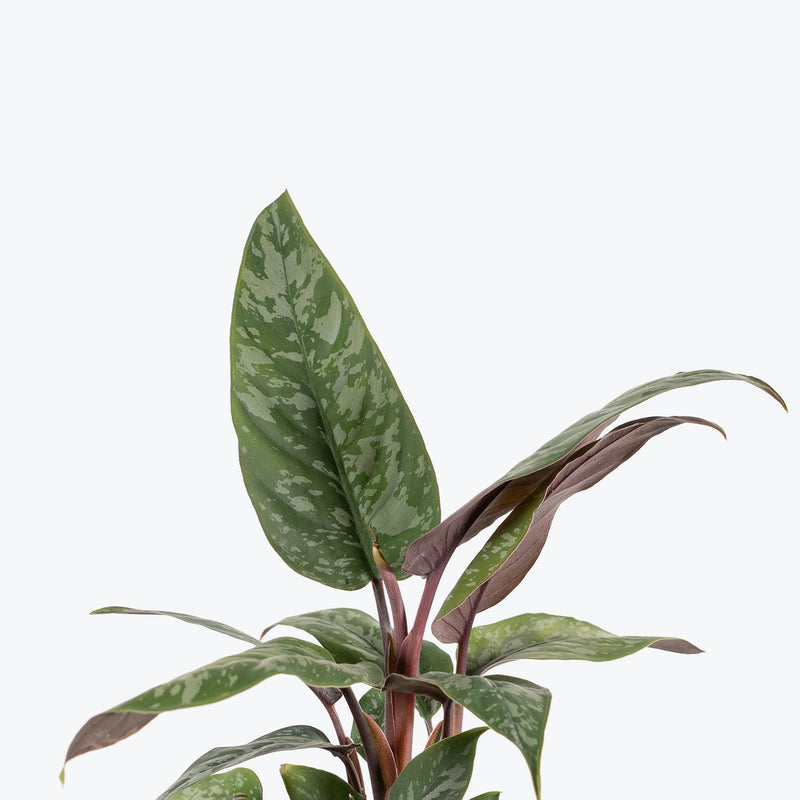
How to care for Apoballis Red Sword
They should not be in a position to see the sun directly, although early morning or late evening sun is fine. Filtered sunlight through a sheer curtain is best and most homes are comprised primarily of indirect sunlight. The best spot for them is where they do not see the sun during the majority of the day but still get bright, indirect light.
They will thrive in medium to bright light, but also can tolerate low light. A good medium-light place in your home would be in the middle of a room that has a regular size window. They can be placed almost anywhere in the room but remember, plants will grow based on how much light they receive.
They need to be watered when the top half of the soil is dry to the touch. That usually takes about 1 week in an average home environment. It will vary depending on the time of year, your environment and lighting conditions, but it's always safer to underwater or give the soil a check before you water again. Expect to water more often in brighter light and less often in lower light.
They will do well in average humidity environments but will appreciate a little bit of humidity if provided, give them a mist daily or get a humidifier.
It is important to keep them watered during the active growing period, but be sure to water according to the light levels the plant is in and to let the water drain after doing so. Also, cut back on watering during the winter months, allowing the soil to mostly dry out. A well-draining media is key here!
This plant is moderately toxic and can cause some adverse reactions when ingested so it is best to not let your pets eat it, which we advise for all plants in general. The severity of the reaction will depend on how much of the plant is ingested but, if you know your pet typically does not eat your plants, this plant will be suitable for your home..
View PlantAralia Balfouriana Stump
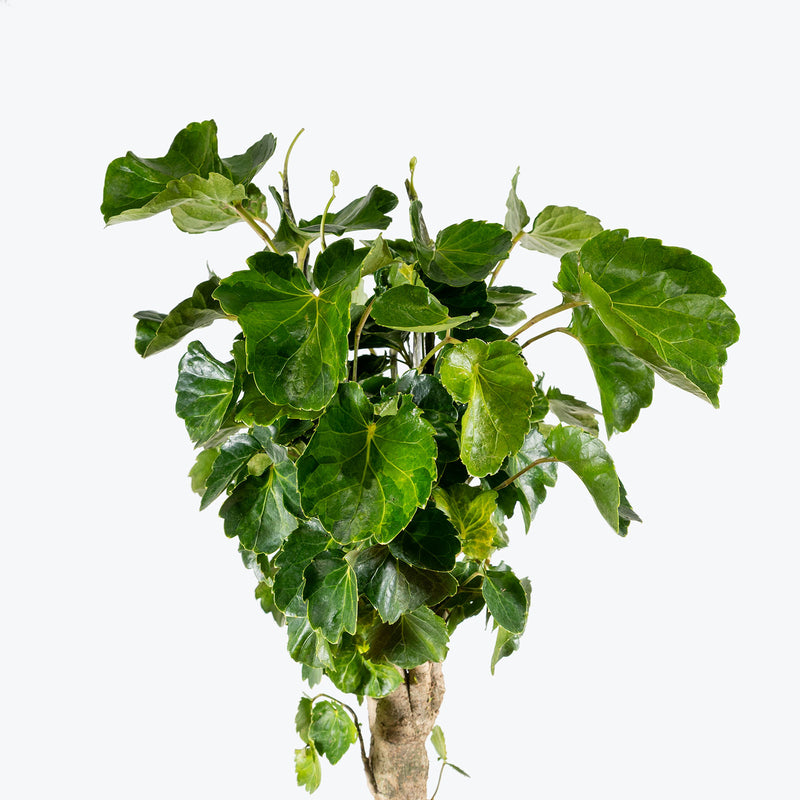
How to care for Aralia Balfouriana Stump
Aralia Balfouriana Stump should not be in a position to see the sun directly, although early morning or late evening sun is fine. Filtered sunlight through a sheer curtain is best and most homes are comprised primarily of indirect sunlight. The best spot for them is where they do not see the sun during the majority of the day but still get bright, indirect light.
Aralia Balfouriana Stump will thrive in bright light, but also can tolerate medium light. A good medium-light place in your home would be in the middle of a room that has a regular size window. They can be placed anywhere between the middle of the room and the window. Remember that plants will grow based on how much light they receive.
Aralia Balfouriana Stump needs to be watered when the top half of the soil is dry to the touch. That usually takes about 1 week in an average home environment. It will vary depending on the time of year, your environment and lighting conditions, but it's always safer to underwater or give the soil a check before you water again.
Aralia Balfouriana Stump will do well in average humidity environments but will appreciate a little bit of humidity if provided, give them a mist daily or get a humidifier.
Rotate Aralia Balfouriana Stump regularly for even shape and exposure. Prune back occasionally to encourage bushier growth and remove any leggy stems. Use a well-draining potting mix, and be careful not to let the roots sit in soggy soil. Feed monthly during spring and summer with a balanced fertilizer to support healthy foliage. This variety does best with consistency—avoid cold drafts and sudden changes in environment.
Aralia Balfouriana Stump is moderately toxic and can cause some adverse reactions when ingested so it is best to not let your pets eat it, which we advise for all plants in general. The severity of the reaction will depend on how much of the plant is ingested but, if you know your pet typically does not eat your plants, this plant will be suitable for your home..
View PlantAralia Fabian Stump
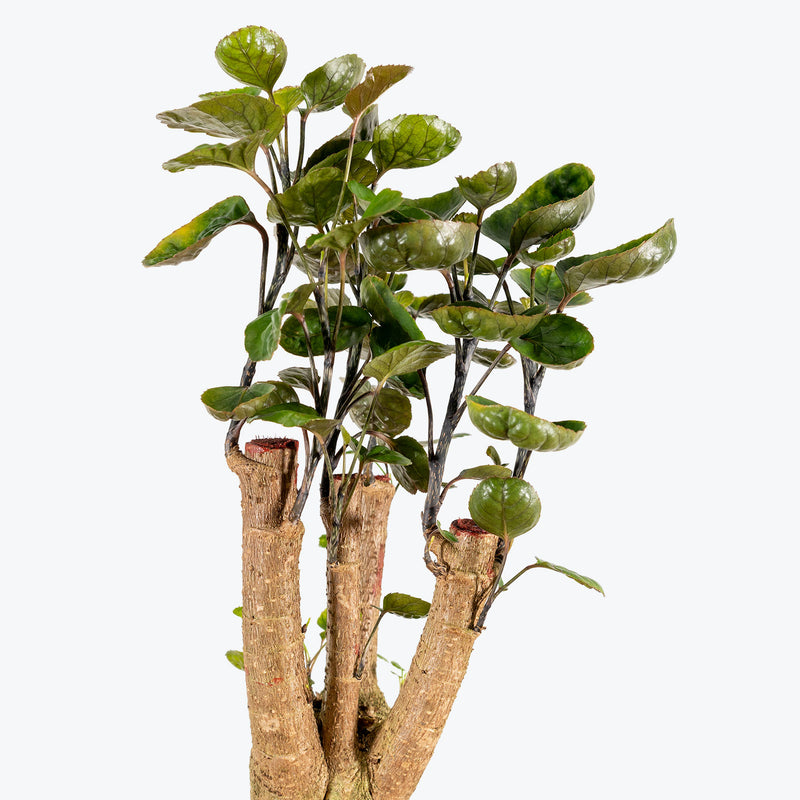
How to care for Aralia Fabian Stump
They should not be in a position to see the sun directly, although early morning or late evening sun is fine. Filtered sunlight through a sheer curtain is best and most homes are comprised primarily of indirect sunlight. The best spot for them is where they do not see the sun during the majority of the day but still get bright, indirect light.
They will thrive in bright light, but also can tolerate medium light. A good medium-light place in your home would be in the middle of a room that has a regular size window. They can be placed anywhere between the middle of the room and the window. Remember that plants will grow based on how much light they receive.
They need to be watered when the top half of the soil is dry to the touch. That usually takes about 1 week in an average home environment. It will vary depending on the time of year, your environment and lighting conditions, but it's always safer to underwater or give the soil a check before you water again.
They will do well in average humidity environments but will appreciate a little bit of humidity if provided, give them a mist daily or get a humidifier.
Aralia Fabian Stump is relatively low maintenance and can tolerate a bit of neglect. However, it is essential to avoid overwatering and ensure that the plant is placed in a well-draining soil mix. Prune the plant occasionally to maintain its shape and encourage bushier growth.
This plant is moderately toxic and can cause some adverse reactions when ingested so it is best to not let your pets eat it, which we advise for all plants in general. The severity of the reaction will depend on how much of the plant is ingested but, if you know your pet typically does not eat your plants, this plant will be suitable for your home..
View PlantAralia Ming Stump
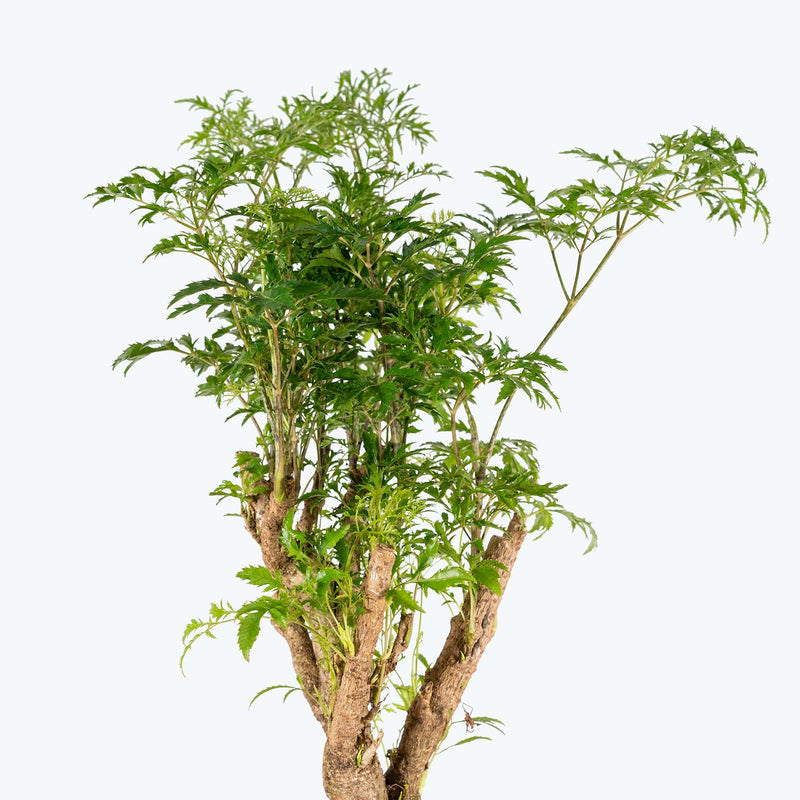
How to care for Aralia Ming Stump
They should not be in a position to see the sun directly, although early morning or late evening sun is fine. Filtered sunlight through a sheer curtain is best and most homes are comprised primarily of indirect sunlight. The best spot for them is where they do not see the sun during the majority of the day but still get bright, indirect light.
They will thrive in bright light, but also can tolerate medium light. A good medium-light place in your home would be in the middle of a room that has a regular size window. They can be placed anywhere between the middle of the room and the window. Remember that plants will grow based on how much light they receive.
They need to be watered when the top half of the soil is dry to the touch. That usually takes about 1 week in an average home environment. It will vary depending on the time of year, your environment and lighting conditions, but it's always safer to underwater or give the soil a check before you water again.
They will do well in average humidity environments but will appreciate a little bit of humidity if provided, give them a mist daily or get a humidifier.
Aralia Ming Stump is susceptible to pests such as spider mites and mealybugs. Keep an eye out for these and treat as necessary. The plant can be pruned to maintain its shape, and regular feeding during the growing season can support its dense growth.
This plant is moderately toxic and can cause some adverse reactions when ingested so it is best to not let your pets eat it, which we advise for all plants in general. The severity of the reaction will depend on how much of the plant is ingested but, if you know your pet typically does not eat your plants, this plant will be suitable for your home..
View PlantAralia Parsley
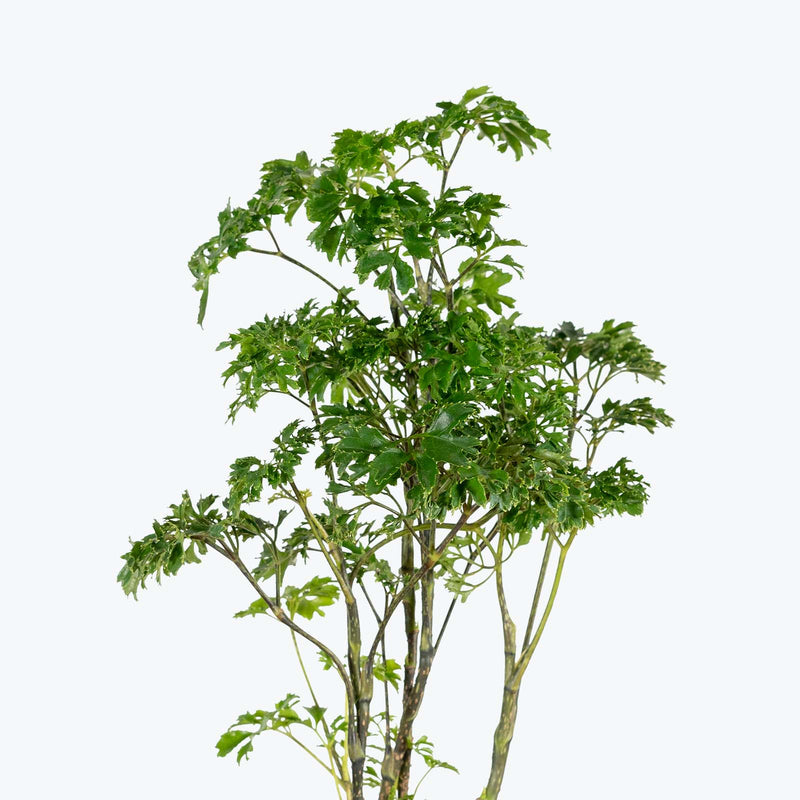
How to care for Aralia Parsley
They should not be in a position to see the sun directly, although early morning or late evening sun is fine. Filtered sunlight through a sheer curtain is best and most homes are comprised primarily of indirect sunlight. The best spot for them is where they do not see the sun during the majority of the day but still get bright, indirect light.
They will thrive in bright light, but also can tolerate medium light. A good medium-light place in your home would be in the middle of a room that has a regular size window. They can be placed anywhere between the middle of the room and the window. Remember that plants will grow based on how much light they receive.
They need to be watered when the top half of the soil is dry to the touch. That usually takes about 1 week in an average home environment. It will vary depending on the time of year, your environment and lighting conditions, but it's always safer to underwater or give the soil a check before you water again.
They will do well in average humidity environments but will appreciate a little bit of humidity if provided, give them a mist daily or get a humidifier.
Fertilize with a balanced liquid fertilizer once a month during the growing season. Pruning the tips can help encourage bushier growth.
This plant is moderately toxic and can cause some adverse reactions when ingested so it is best to not let your pets eat it, which we advise for all plants in general. The severity of the reaction will depend on how much of the plant is ingested but, if you know your pet typically does not eat your plants, this plant will be suitable for your home..
View PlantArdisia Crenata

How to care for Ardisia Crenata
Ardisia Crenata should not be in a position to see the sun directly, although early morning or late evening sun is fine. Filtered sunlight through a sheer curtain is best and most homes are comprised primarily of indirect sunlight. The best spot for them is where they do not see the sun during the majority of the day but still get bright, indirect light.
Ardisia Crenata will thrive in medium to bright light, but also can tolerate low light. A good medium-light place in your home would be in the middle of a room that has a regular size window. They can be placed almost anywhere in the room, but remember, plants will grow based on how much light they receive.
Ardisia Crenata needs to be watered when the top half of the soil is dry to the touch. That usually takes about 1 week in an average home environment. It will vary depending on the time of year, your environment and lighting conditions, but it's always safer to underwater or give the soil a check before you water again. Expect to water more often in brighter light and less often in lower light.
Ardisia Crenata will do well in average humidity environments but will appreciate a little bit of humidity if provided, give them a mist daily or get a humidifier.
Fertilize Ardisia Crenata with a balanced, liquid fertilizer every month during the growing season (spring to summer). Reduce feeding during the dormant winter period. Regular pruning is not necessary but can be done to shape the plant and remove any unhealthy or dead branches. Keep an eye out for pests such as spider mites and scale, which can be treated with insecticidal soap or neem oil.
Ardisia Crenata is moderately toxic and can cause some adverse reactions when ingested so it is best to not let your pets eat it, which we advise for all plants in general. The severity of the reaction will depend on how much of the plant is ingested but, if you know your pet typically does not eat your plants, this plant will be suitable for your home..
View PlantAreca Palm
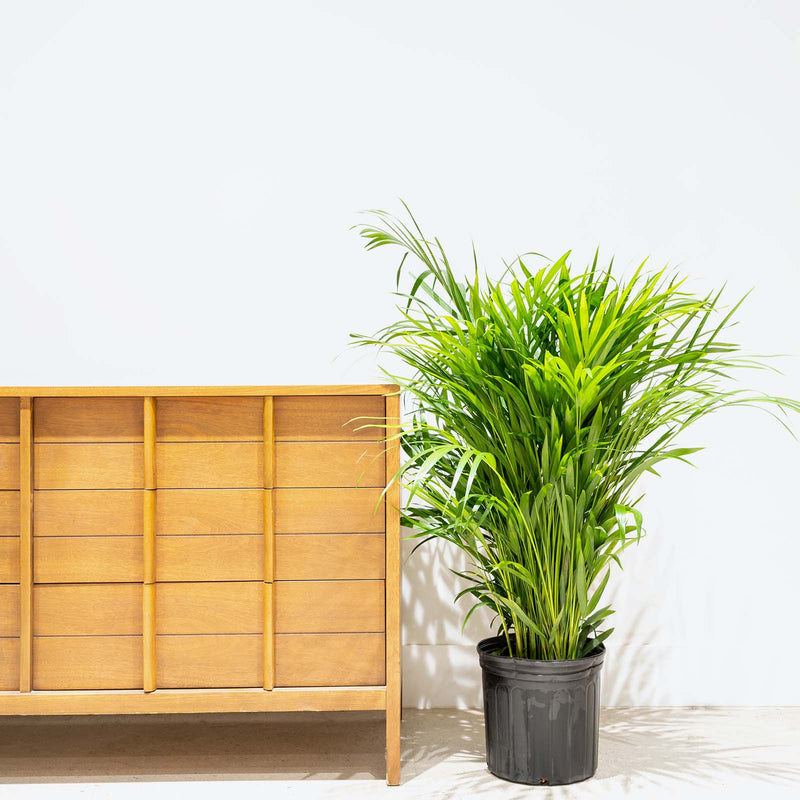
How to care for Areca Palm
They enjoy some direct sun, but they'll also do well in bright, indirect light. It is best to place this plant somewhere where it will receive some nice morning sun, or a couple hours of afternoon sun, and then indirect light the rest of the day.
They will do best in bright light. A nice bright place inside your home would be on the window sill or a stool that is right next to a window, either with or without blinds, depending on if the plant can handle sun. Remember that plants will grow based on how much light they receive.
Allow the top quarter of soil to dry before watering again. This usually takes about 3 - 4 days in an average home environment but it will vary depending on the time of year, your environment and lighting conditions.
They like a high humidity environment, give them a mist daily or as often as possible. Alternatively, you can put them around a humidifier. Although they won't die if they don't receive enough humidity, their leaves may have some dry, crunchy, or yellow edges.
Their fronds benefit from a micronutrient spray in summer. You can use a liquid houseplant fertilizer that contains micronutrients for this purpose. Make sure the product is labelled as safe for foliar feedings, and dilute it according to the label instructions. Do not feed Areca palm plants in fall and winter. Spider mite loves all palms, give your palm a shower every once a while or when you see them will keep them away.
You can feel comfortable having this plant around your home in the potential case where your pet feels like nibbling on it. However, we typically recommend keeping your pets from eating any of your houseplants..
Learn MoreView PlantAssorted Succulent
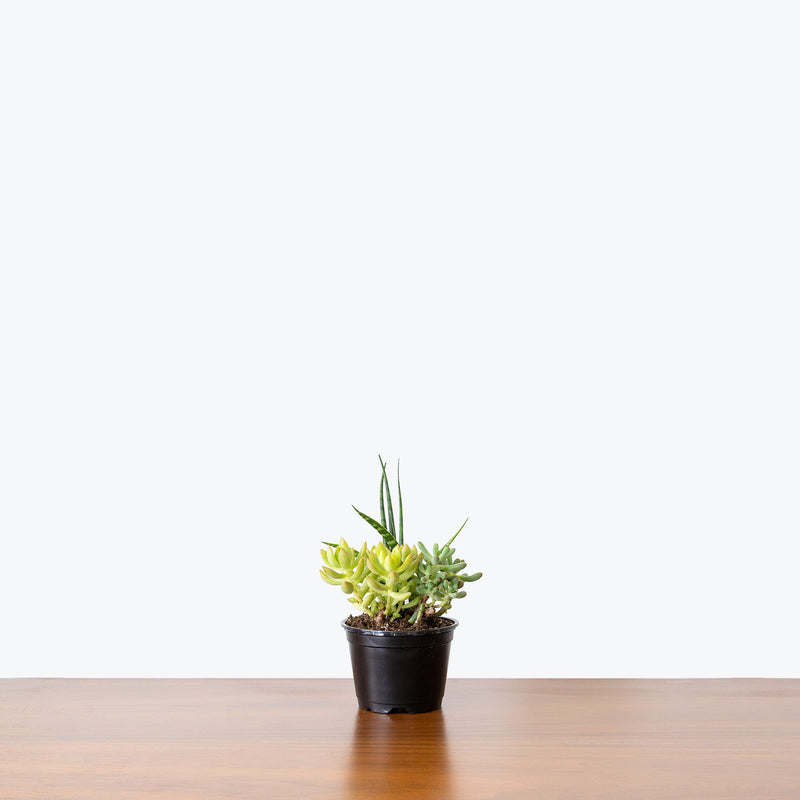
How to care for Assorted Succulent
They enjoy some direct sun, but they'll also do well in bright, indirect light. It is best to place this plant somewhere where it will receive some nice morning sun, or a couple hours of afternoon sun, and then indirect light the rest of the day.
They will do best in bright light. A nice bright place inside your home would be on the window sill or a stool that is right next to a window, either with or without blinds, depending on if the plant can handle sun. Remember that plants will grow based on how much light they receive.
They like the soil to be completely dry before the next watering. That usually takes about 4 weeks in an average home environment. It will vary depending on the time of year, your environment and lighting conditions, but for them, it's always safer to underwater or water when you see signs of lack of water (i.e. wrinkly or soft leaves). Water a little more often in the warmer months.
Their humidity requirement is low, so do not mist them or put them in an enclosed terrarium.
As with all succulents, overwatering is sure to be fatal, so err on the side of too dry rather than too wet, never letting it sit in water. If you water from beneath by letting the plant sit in a saucer of water, make sure to pour off any excess water after about 15 minutes. If you want compact and colourful growth, keep the plant in direct, high light!
This plant is moderately toxic and can cause some adverse reactions when ingested so it is best to not let your pets eat it, which we advise for all plants in general. The severity of the reaction will depend on how much of the plant is ingested but, if you know your pet typically does not eat your plants, this plant will be suitable for your home..
Learn MoreView PlantAstrophytum Asterias
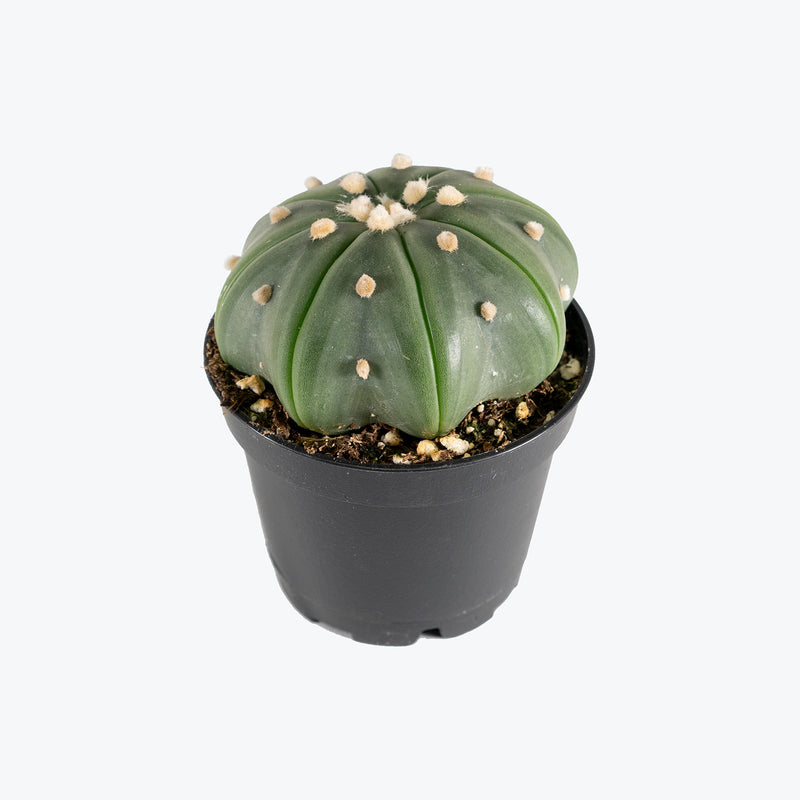
How to care for Astrophytum Asterias
Astrophytum Asterias enjoys some direct sun, but they'll also do well in bright, indirect light. It is best to place this plant somewhere where it will receive some nice morning sun, or a couple hours of afternoon sun, and then indirect light the rest of the day.
Astrophytum Asterias will thrive in bright light, but also can tolerate medium light. A good medium-light place in your home would be in the middle of a room that has a regular size window. They can be placed anywhere between the middle of the room and the window. Remember that plants will grow based on how much light they receive.
Astrophytum Asterias likes the soil to be completely dry before the next watering. This can take up to 4 weeks in an average home environment but it will vary depending on the time of year, your environment and lighting conditions. For them, it's always safer to underwater or water when you see signs of lack of water (i.e. wrinkly or soft leaves). Water a little more often in the warmer months.
Their humidity requirement is low, so do not mist Astrophytum Asterias or put them in a terrarium.
Be sure not to water Astrophytum Asterias directly on the plant itself, but rather on the soil around the plant, because if water gets into the folds, it may lead to rot. Be cautious with fertilization; excessive nutrients can lead to rapid, weak growth that detracts from the cactus's natural stout form.
Astrophytum Asterias is non-toxic to cats and dogs. However, while it does not have sharp spines, it's always a good idea to place cacti where they won’t be knocked over by pets or small children..
View PlantAustralia Neon Umbrella Tree

How to care for Australia Neon Umbrella Tree
They should not be in a position to see the sun directly, although early morning or late evening sun is fine. Filtered sunlight through a sheer curtain is best and most homes are comprised primarily of indirect sunlight. The best spot for them is where they do not see the sun during the majority of the day but still get bright, indirect light.
They will thrive in medium to bright light, but also can tolerate low light. A good medium-light place in your home would be in the middle of a room that has a regular size window. They can be placed almost anywhere in the room but remember, plants will grow based on how much light they receive.
They like the soil to be relatively dry before the next watering. That usually takes about 2 weeks in an average home environment. It will vary depending on the time of year, your environment and lighting conditions, but for them, it's always safer to underwater or water when you see signs of lack of water (i.e. droopy, floppy, or soft leaves). Water more often in the warmer months!
They can live in any average home humidity condition and are fairly hardy.
It can survive in lower light spaces, but the watering will need to be reduced to prevent overwatering as the risk is heightened when the plant has access to less light and is less productive.
This plant is moderately toxic and can cause some adverse reactions when ingested so it is best to not let your pets eat it, which we advise for all plants in general. The severity of the reaction will depend on how much of the plant is ingested but, if you know your pet typically does not eat your plants, this plant will be suitable for your home..
View PlantAustralia Umbrella Tree
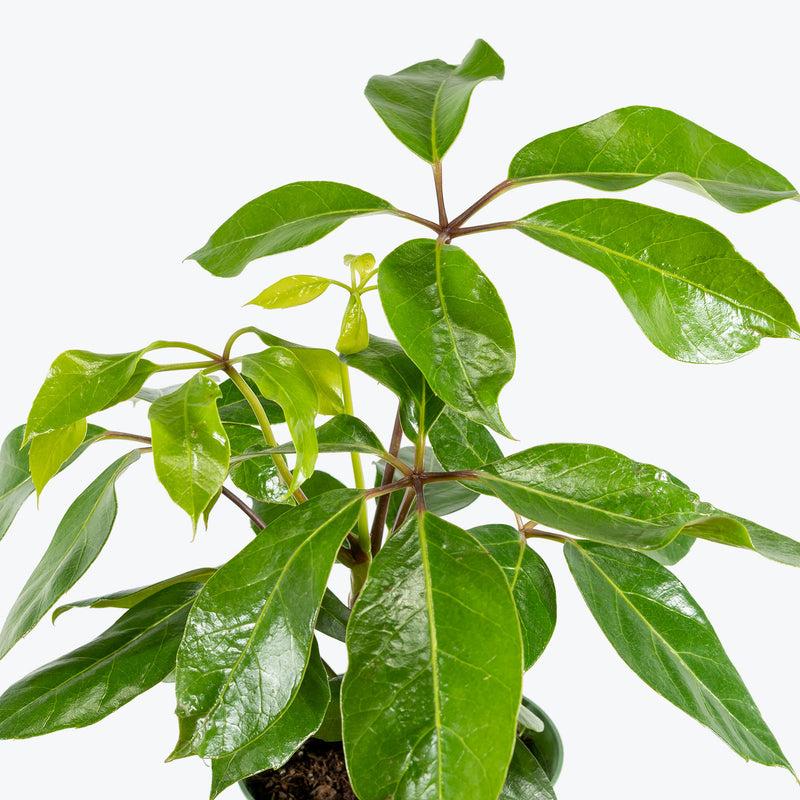
How to care for Australia Umbrella Tree
Australia Umbrella Tree should not be in a position to see the sun directly, although early morning or late evening sun is fine. Filtered sunlight through a sheer curtain is best and most homes are comprised primarily of indirect sunlight. The best spot for them is where they do not see the sun during the majority of the day but still get bright, indirect light.
Australia Umbrella Tree will thrive in medium to bright light, but also can tolerate low light. A good medium-light place in your home would be in the middle of a room that has a regular size window. They can be placed almost anywhere in the room but remember, plants will grow based on how much light they receive.
Australia Umbrella Tree likes the soil to be relatively dry before the next watering. That usually takes about 2 weeks in an average home environment. It will vary depending on the time of year, your environment and lighting conditions, but for them, it's always safer to underwater or water when you see signs of lack of water (i.e. droopy, floppy, or soft leaves). Water more often in the warmer months!
Australia Umbrella Tree can live in any average home humidity condition and are fairly hardy.
Australia Umbrella Tree can survive in lower light spaces, but the watering will need to be reduced to prevent overwatering as the risk is heightened when the plant has access to less light and is less productive.
Australia Umbrella Tree is moderately toxic and can cause some adverse reactions when ingested so it is best to not let your pets eat it, which we advise for all plants in general. The severity of the reaction will depend on how much of the plant is ingested but, if you know your pet typically does not eat your plants, this plant will be suitable for your home..
View PlantAustralian Finger Lime
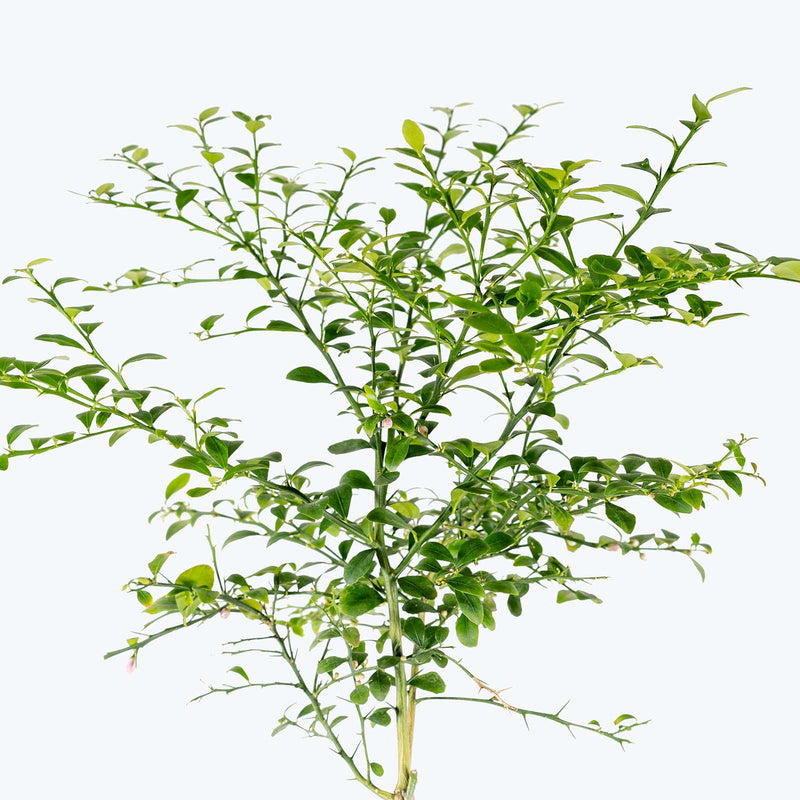
How to care for Australian Finger Lime
Australian Finger Lime loves as much sun as possible. The best spot for them is where they can see the sun during the majority of the day.
Australian Finger Lime will do best in bright light. A nice bright place inside your home would be on the window sill or a stool that is right next to a window, either with or without blinds, depending on if the plant can handle sun. Remember that plants will grow based on how much light they receive.
Australian Finger Lime needs to be watered when the top half of the soil is dry to the touch. That usually takes about 1 week in an average home environment. It will vary depending on the time of year, your environment and lighting conditions, but it's always safer to give the soil a check before you water again.
Australian Finger Lime likes a high humidity environment, give them a mist daily or as often as possible. Alternatively, you can put them around a humidifier. Although they won't die if they don't receive enough humidity, their leaves may have some dry, crunchy, or yellow edges.
Fertilize Australian Finger Lime with a balanced liquid fertilizer every few months during the growing season to support healthy growth and fruit production. Prune any dead or crossing branches to maintain airflow and plant health. In cooler climates, protect the tree from frost, as it is sensitive to cold temperatures.
You can feel comfortable having Australian Finger Lime around your home in the potential case where your pet feels like nibbling on it. However, we typically recommend keeping your pets from eating any of your houseplants..
View PlantAvocado Tree
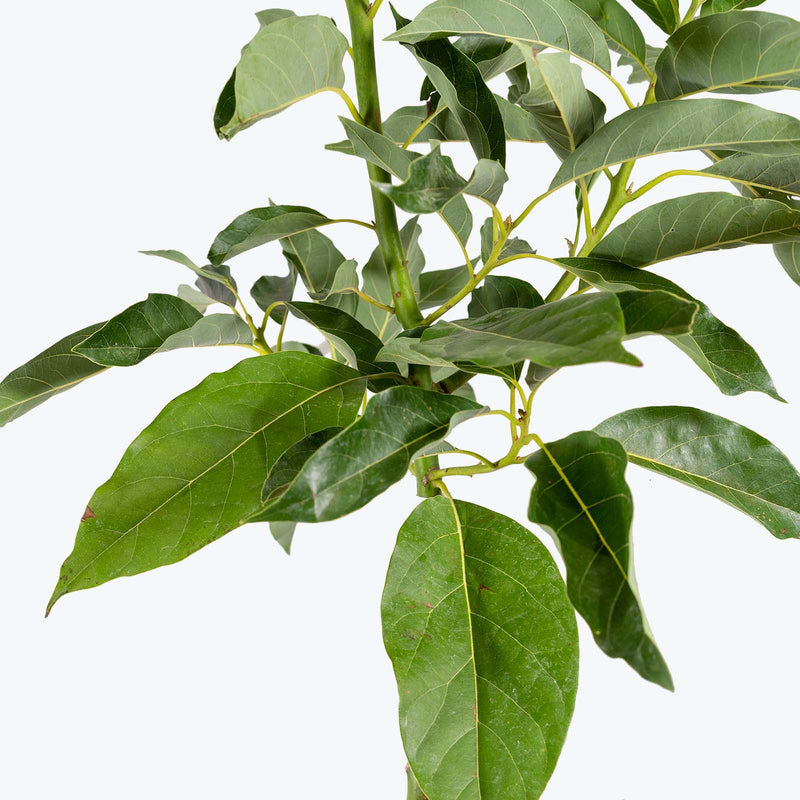
How to care for Avocado Tree
They love as much sun as possible. The best spot for them is where they can see the sun during the majority of the day.
They will do their best and flower profusely in bright light. A nice bright place outside would be on a sunny balcony, deck, or backyard; inside your home, it would do best in a sunny window sill. Remember that plants will grow and flower based on how much light they receive.
They like the soil to be relatively dry before the next watering. That usually takes about 2 weeks in an average home environment. It will vary depending on the time of year, your environment and lighting conditions, but for them, it's always safer to underwater or water when you see signs of lack of water (i.e. droopy, floppy, or soft leaves). Expect to water more often in brighter light and less often in lower light.
They will do well in average humidity environments but will appreciate a little bit of humidity if provided, give them a mist daily or get a humidifier.
Avocado Trees can be quite sensitive to salt buildup in the soil, so be sure to flush the soil regularly or use rainwater for irrigation if possible. They also prefer slightly acidic soil, and regular feeding with a balanced fertilizer can help them thrive.
This plant is moderately toxic and can cause some adverse reactions when ingested so it is best to not let your pets eat it, which we advise for all plants in general. The severity of the reaction will depend on how much of the plant is ingested but, if you know your pet typically does not eat your plants, this plant will be suitable for your home..
View Plant